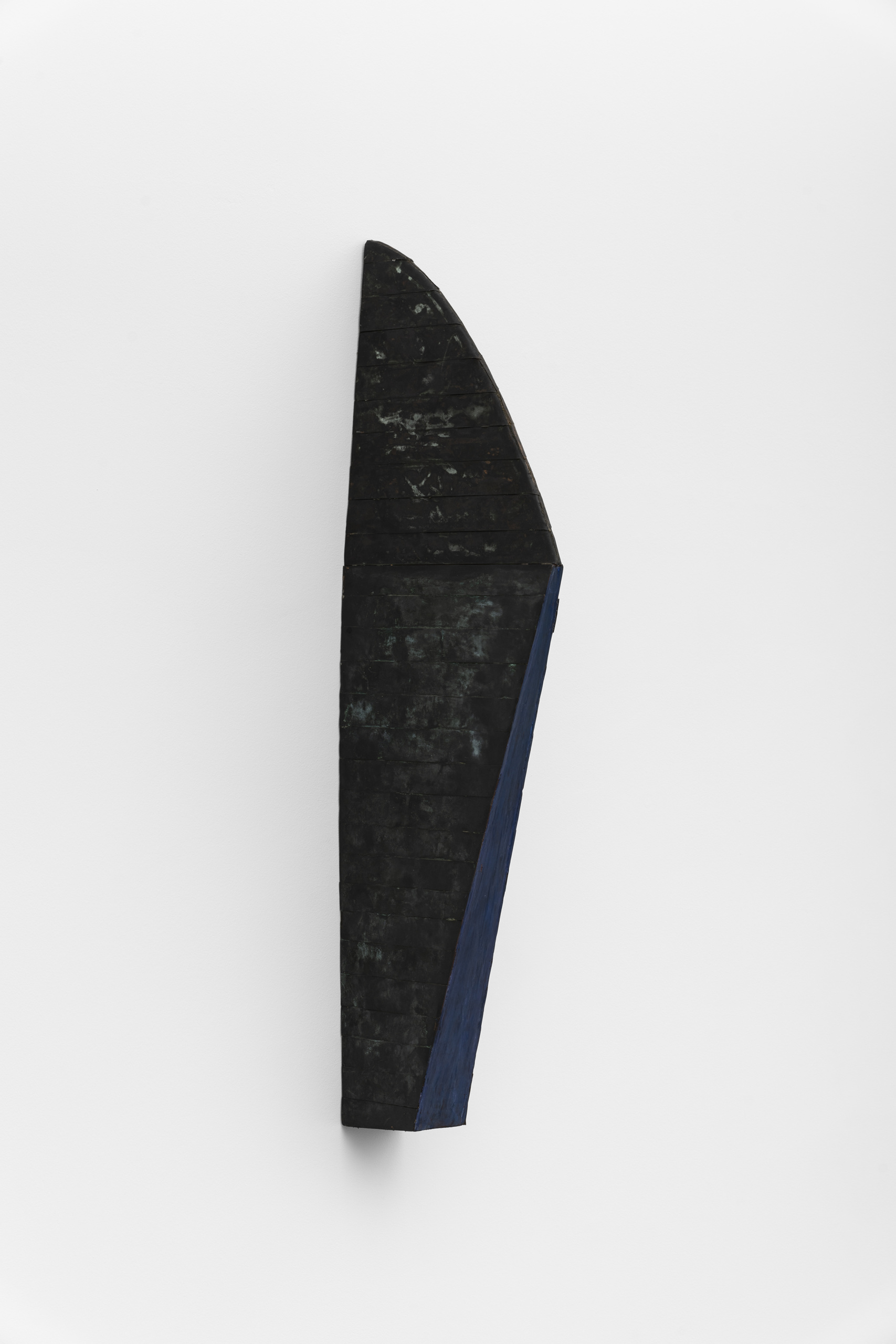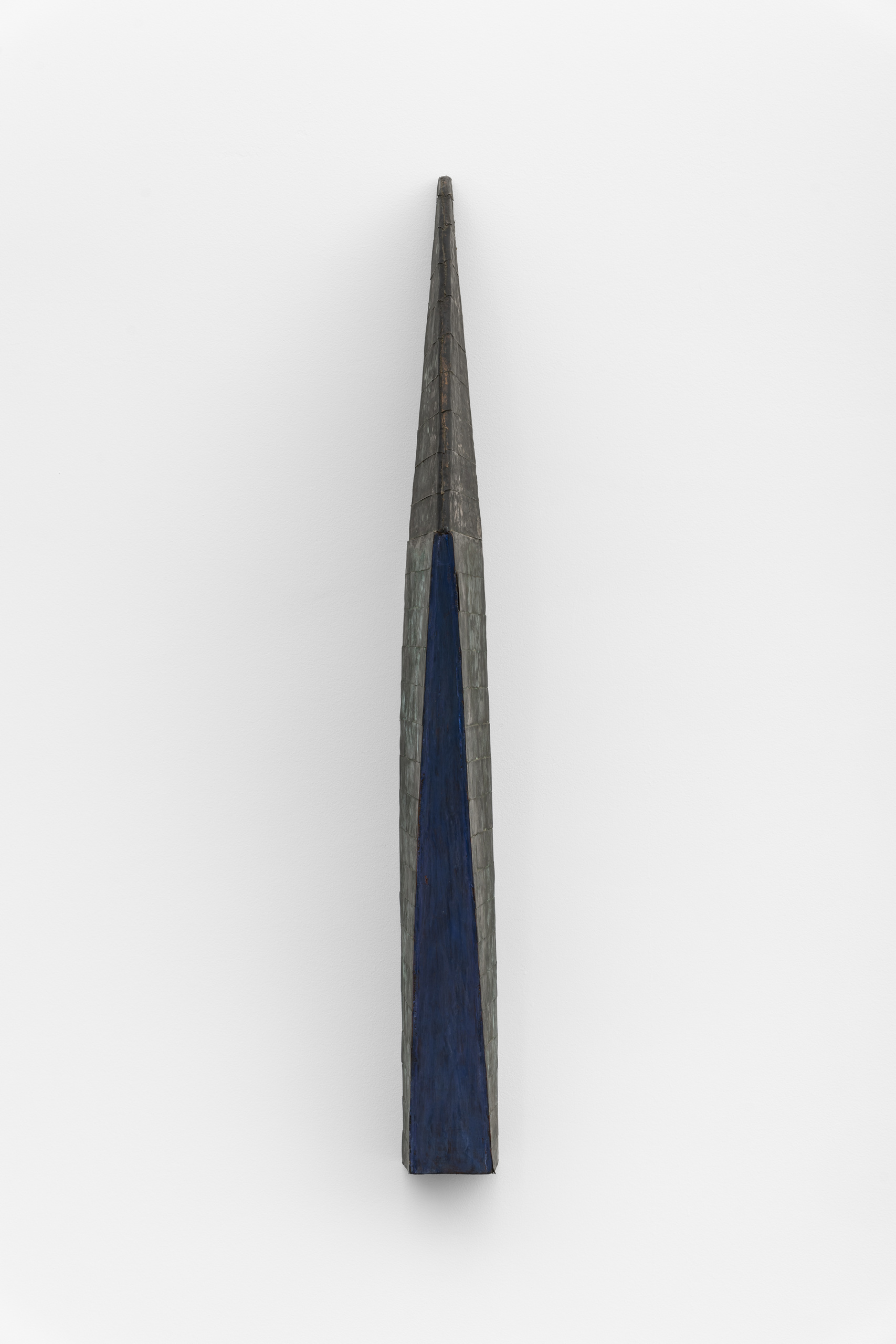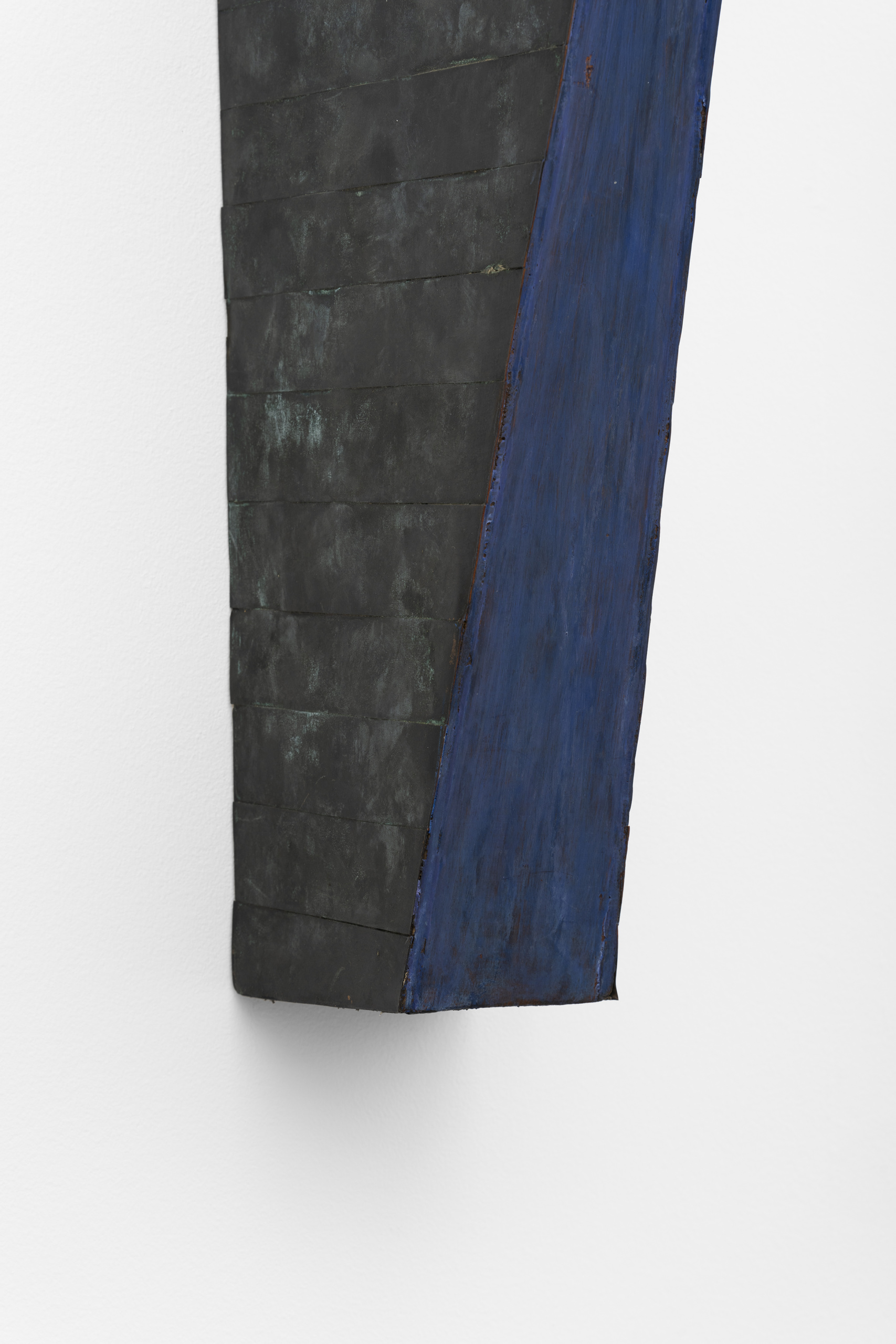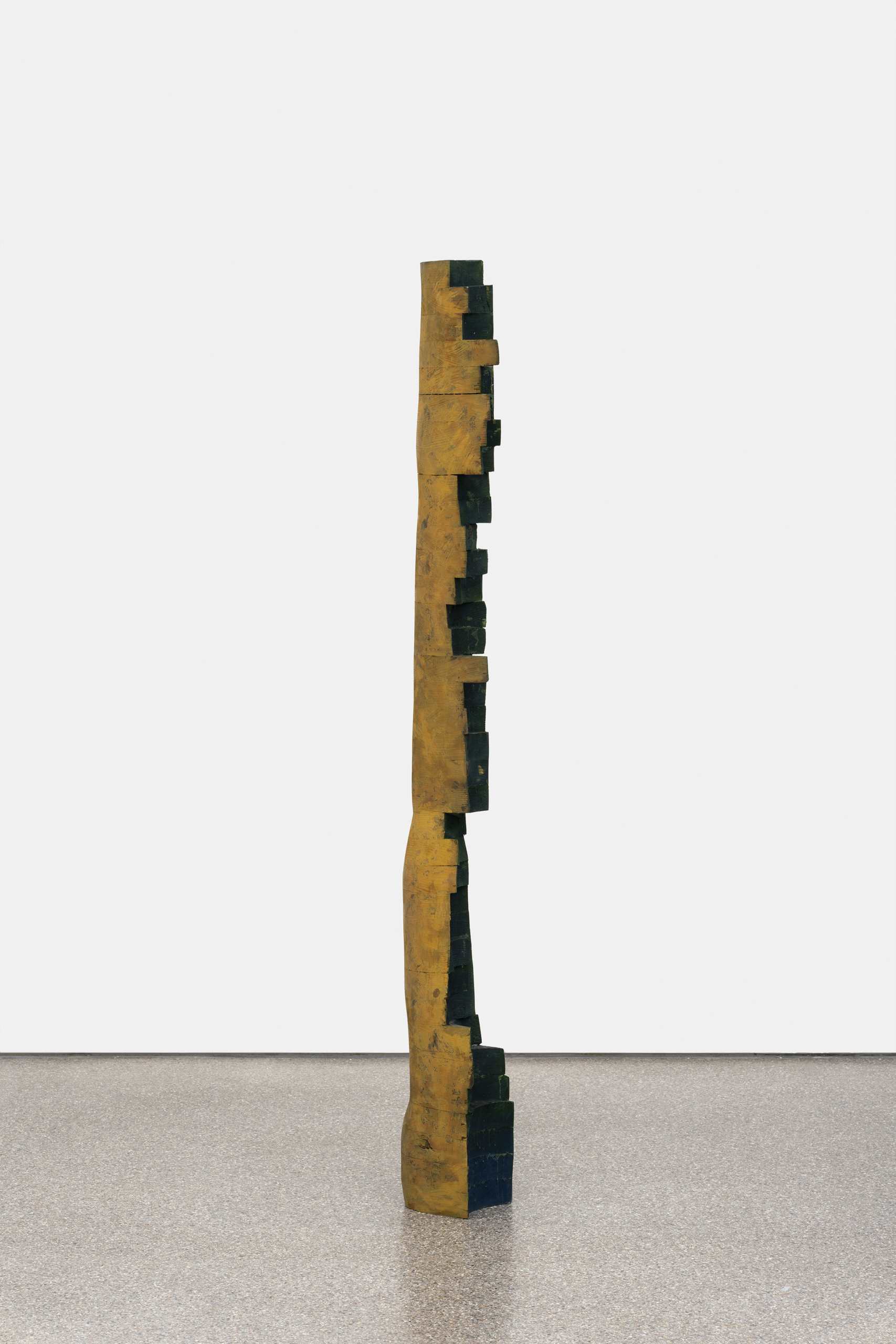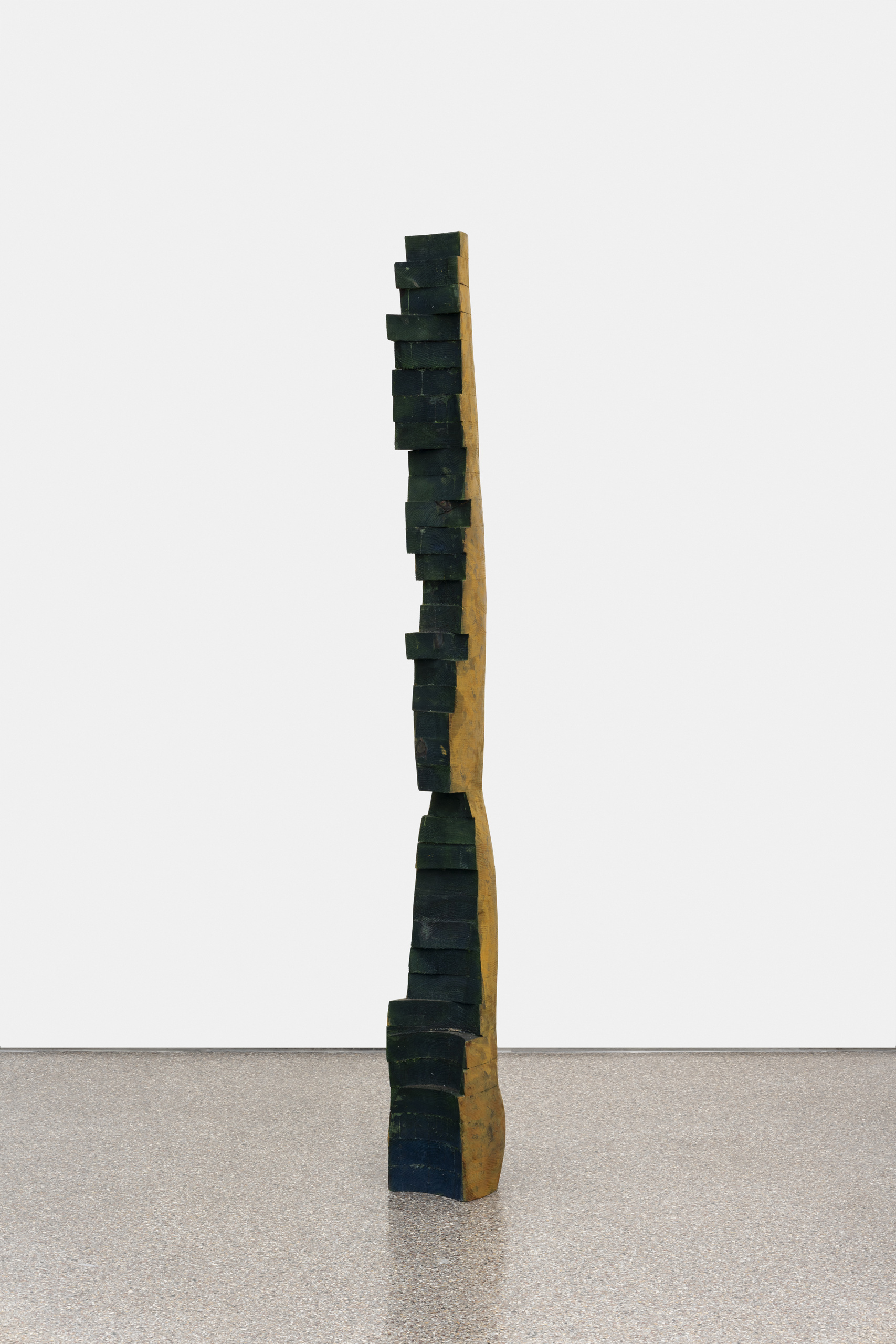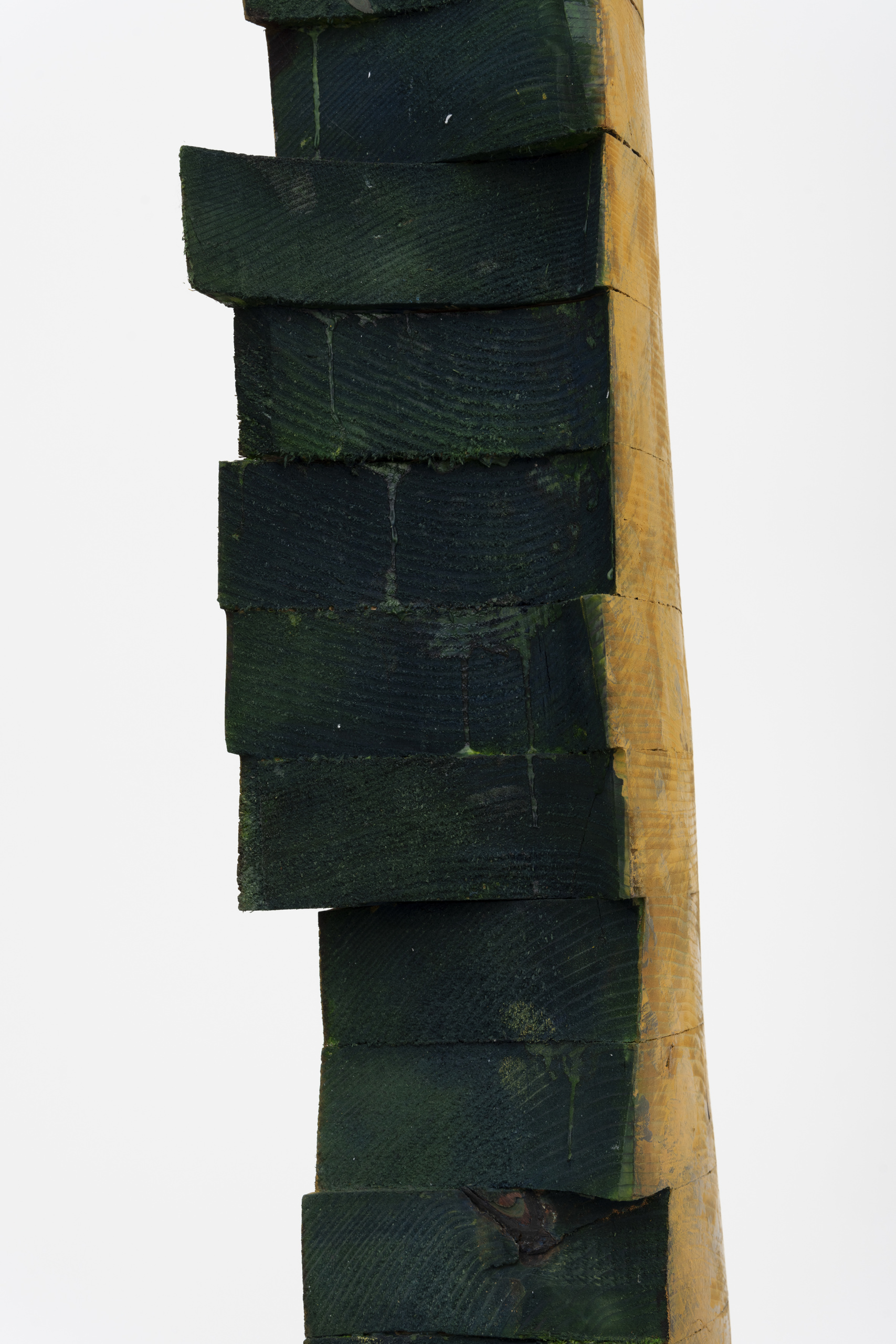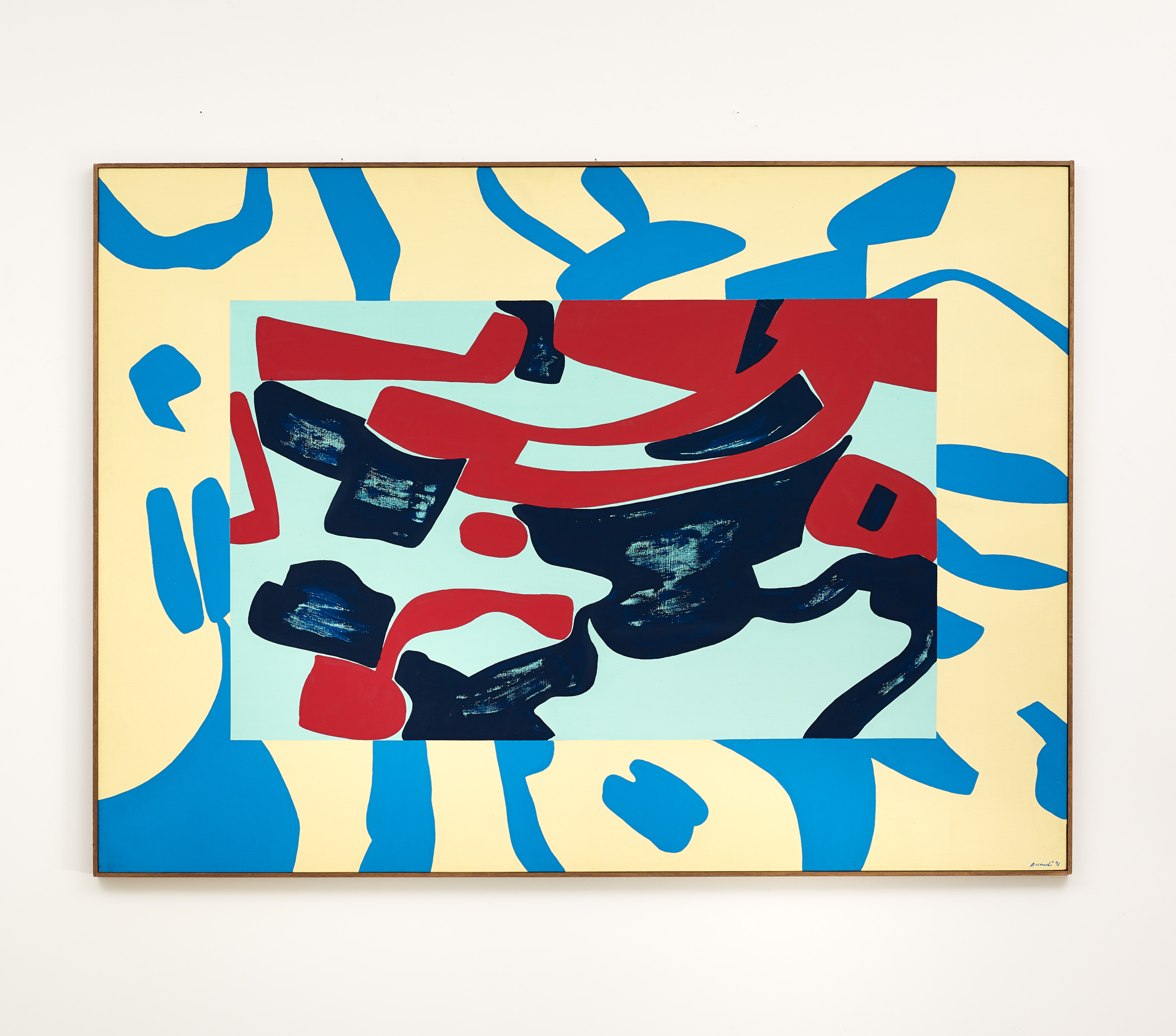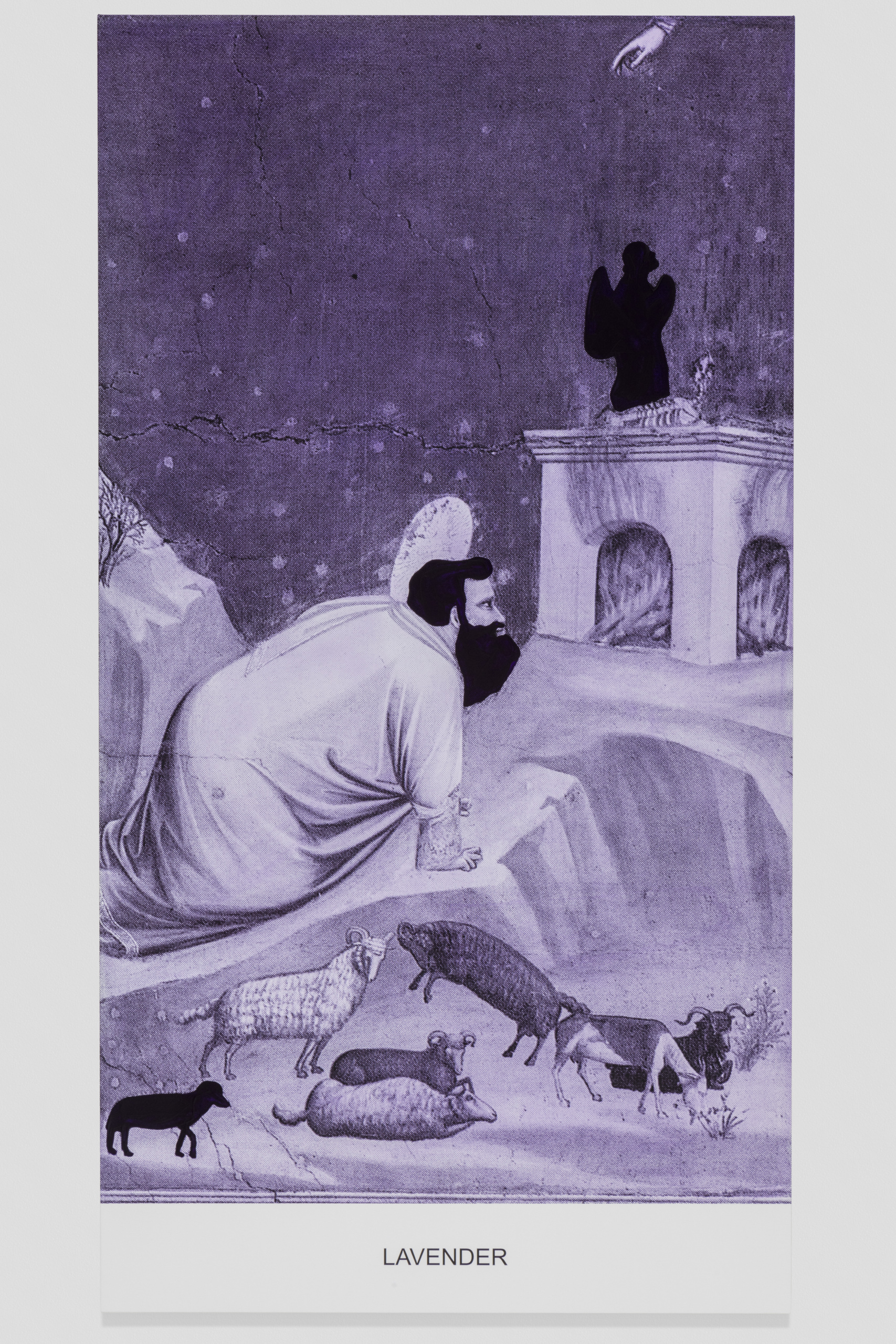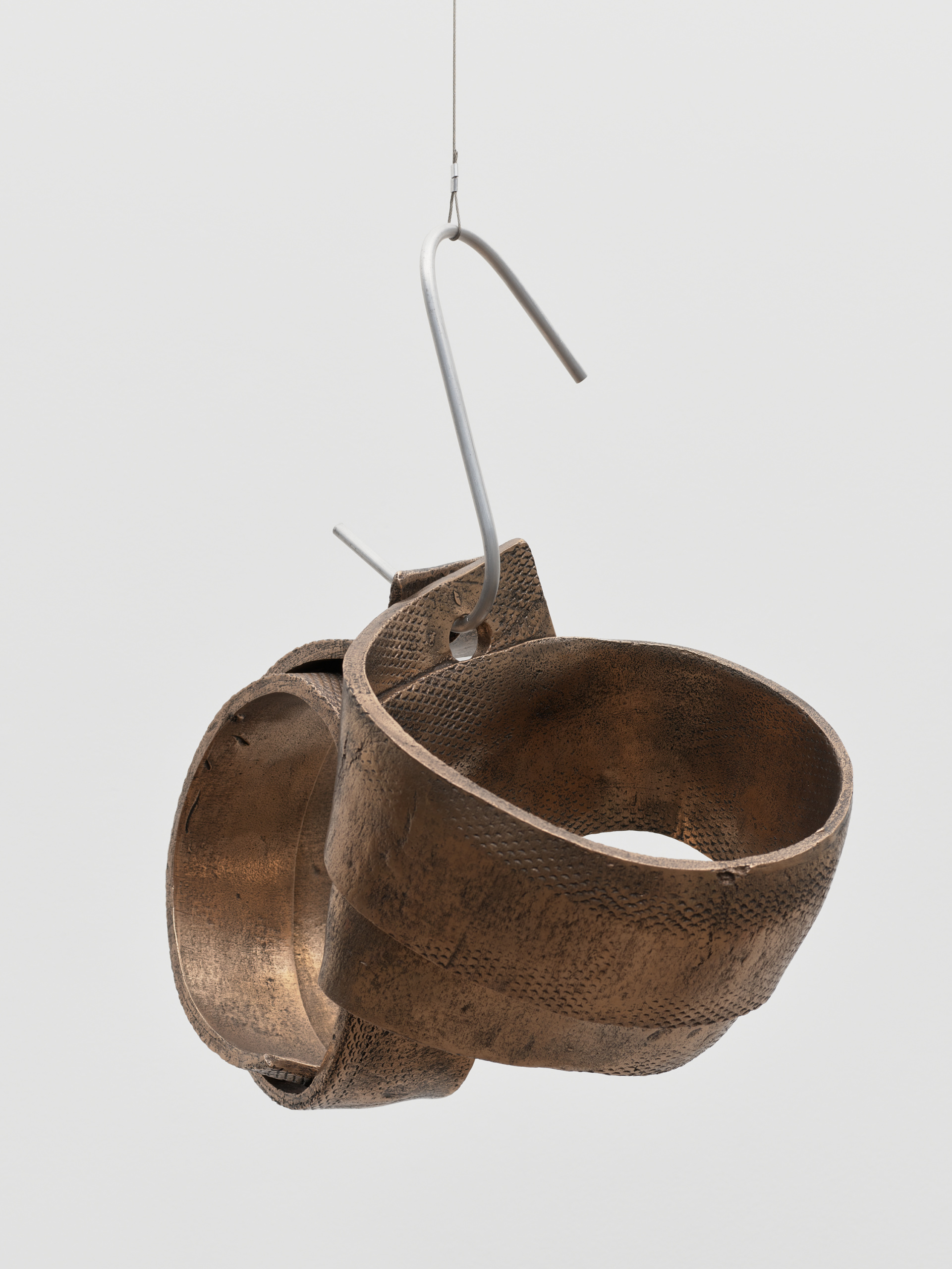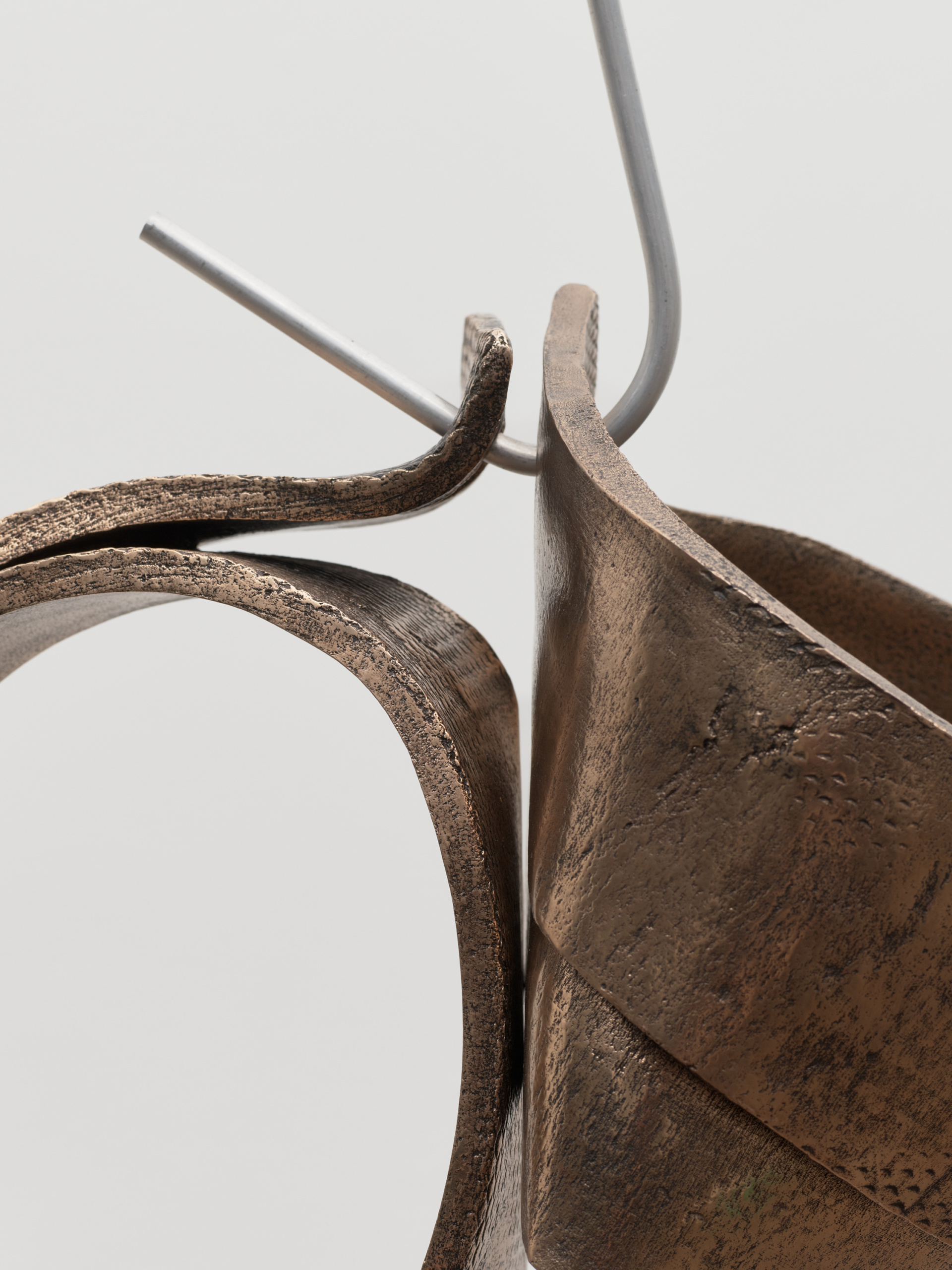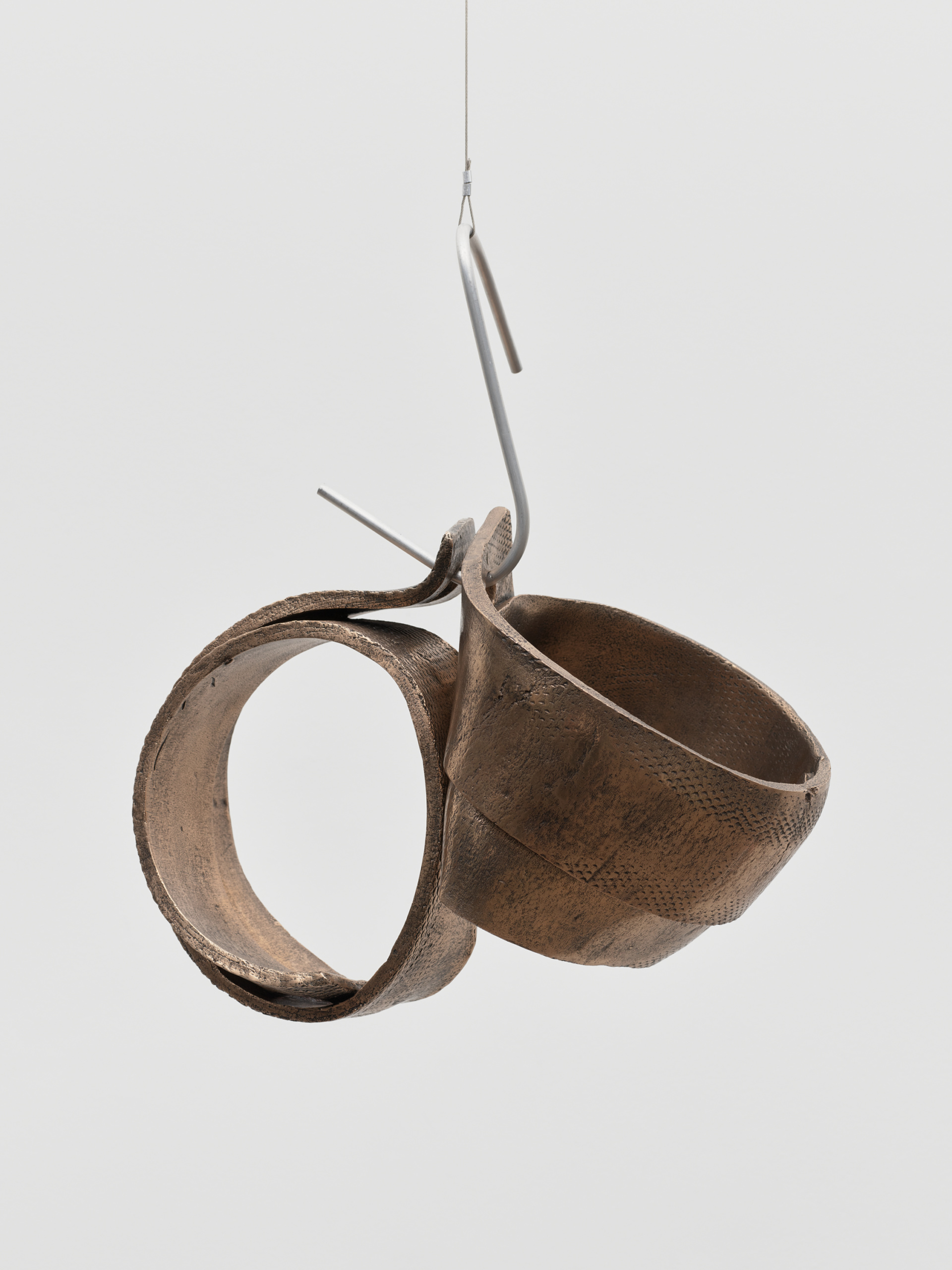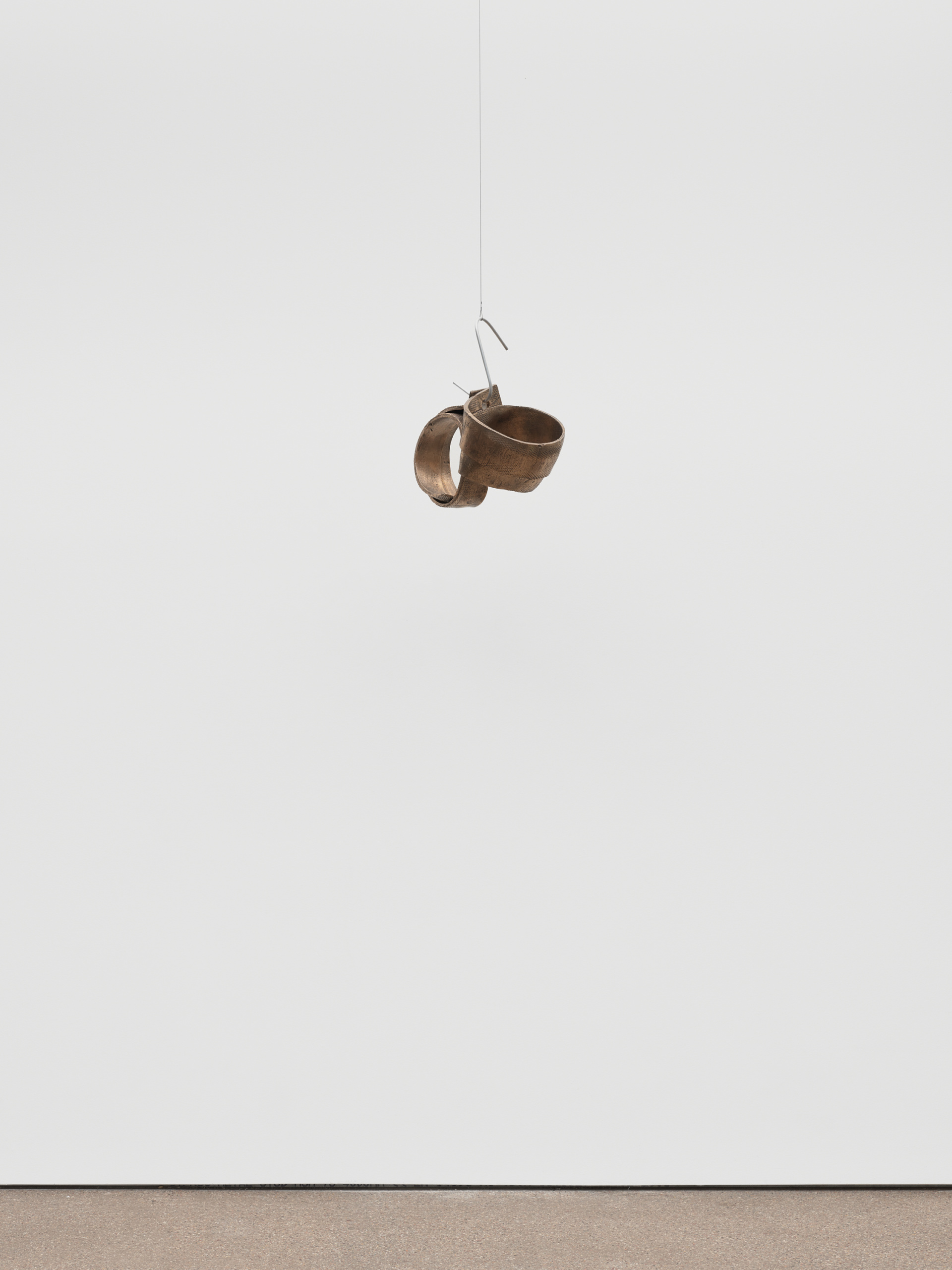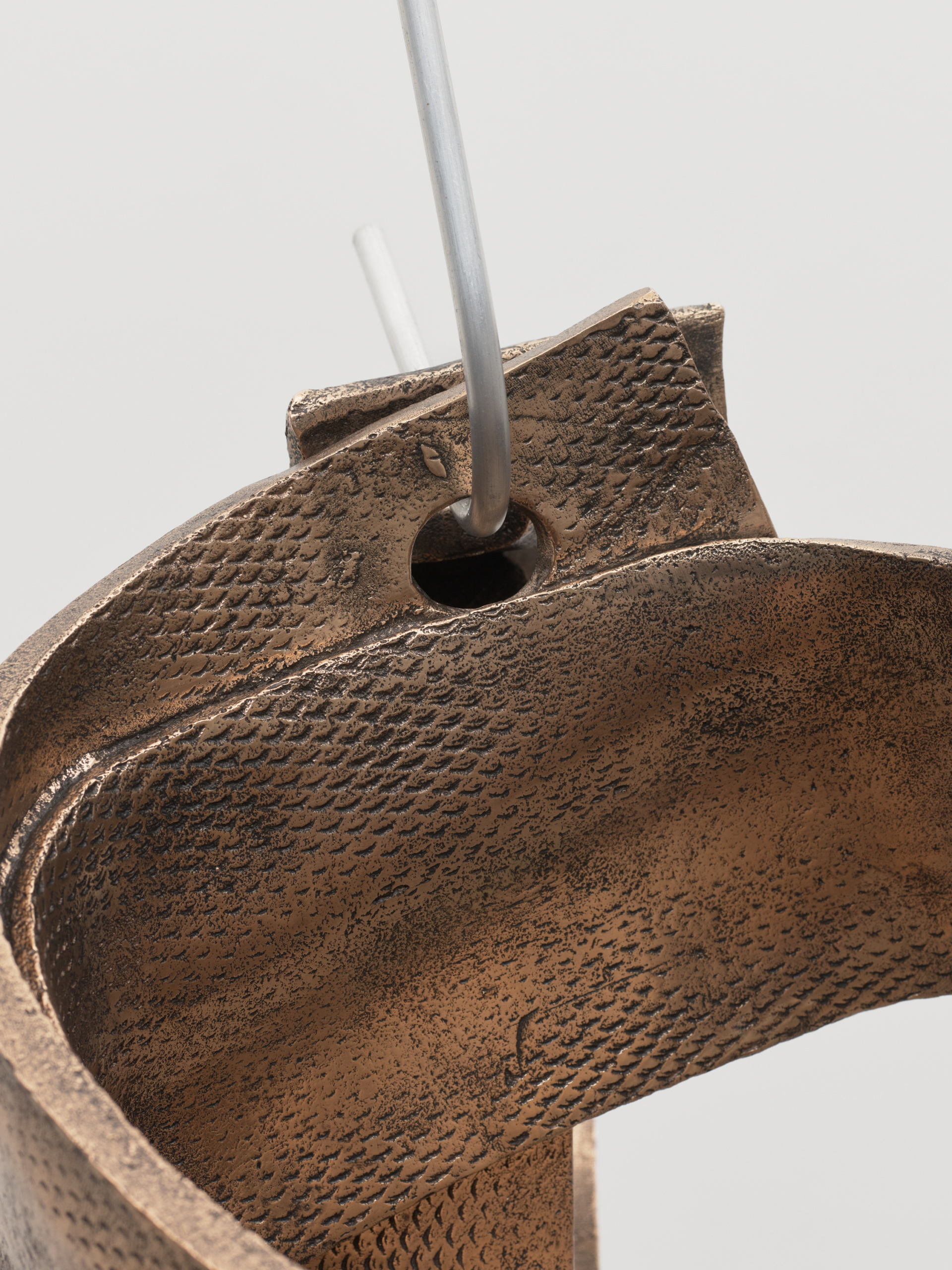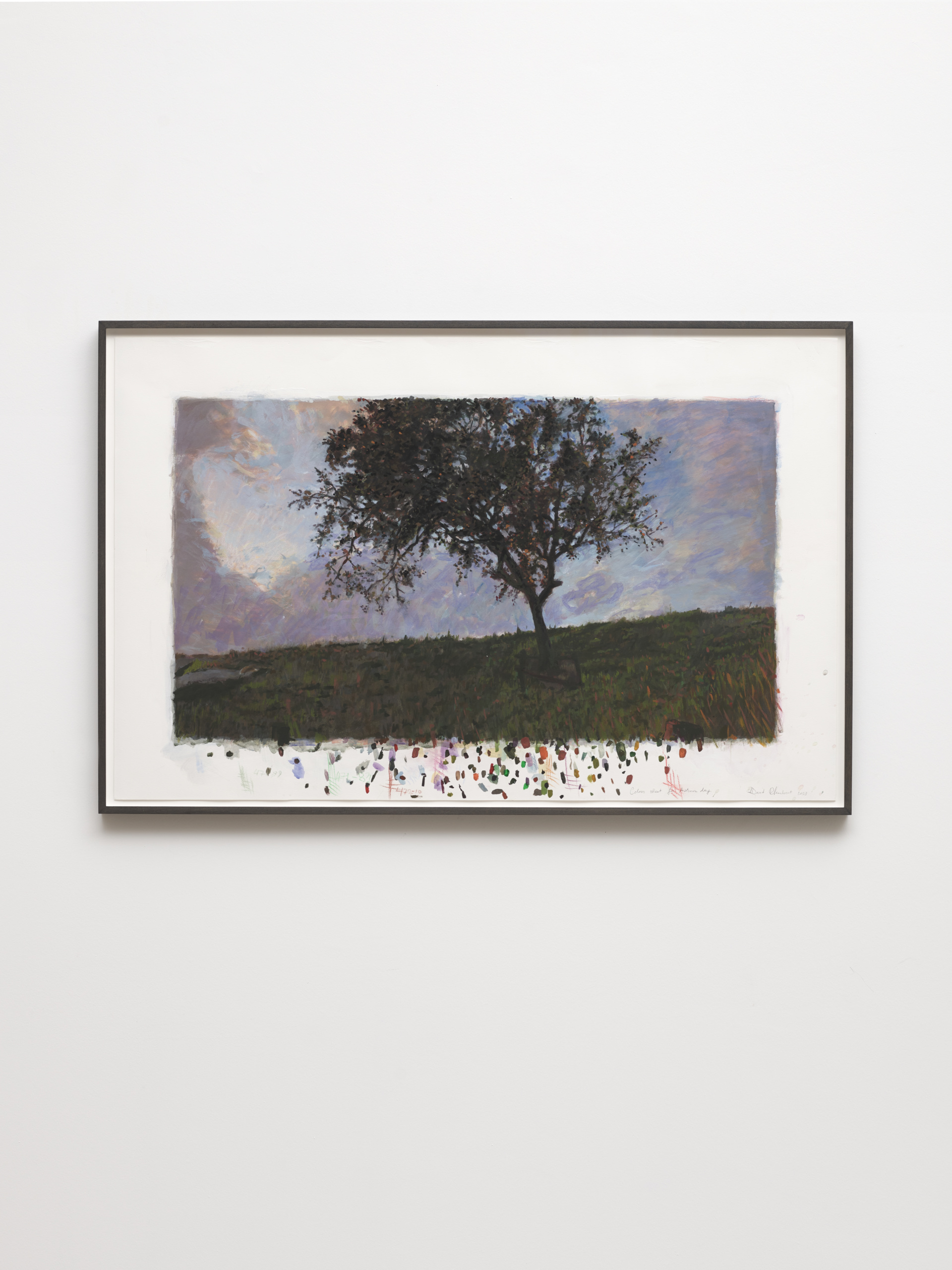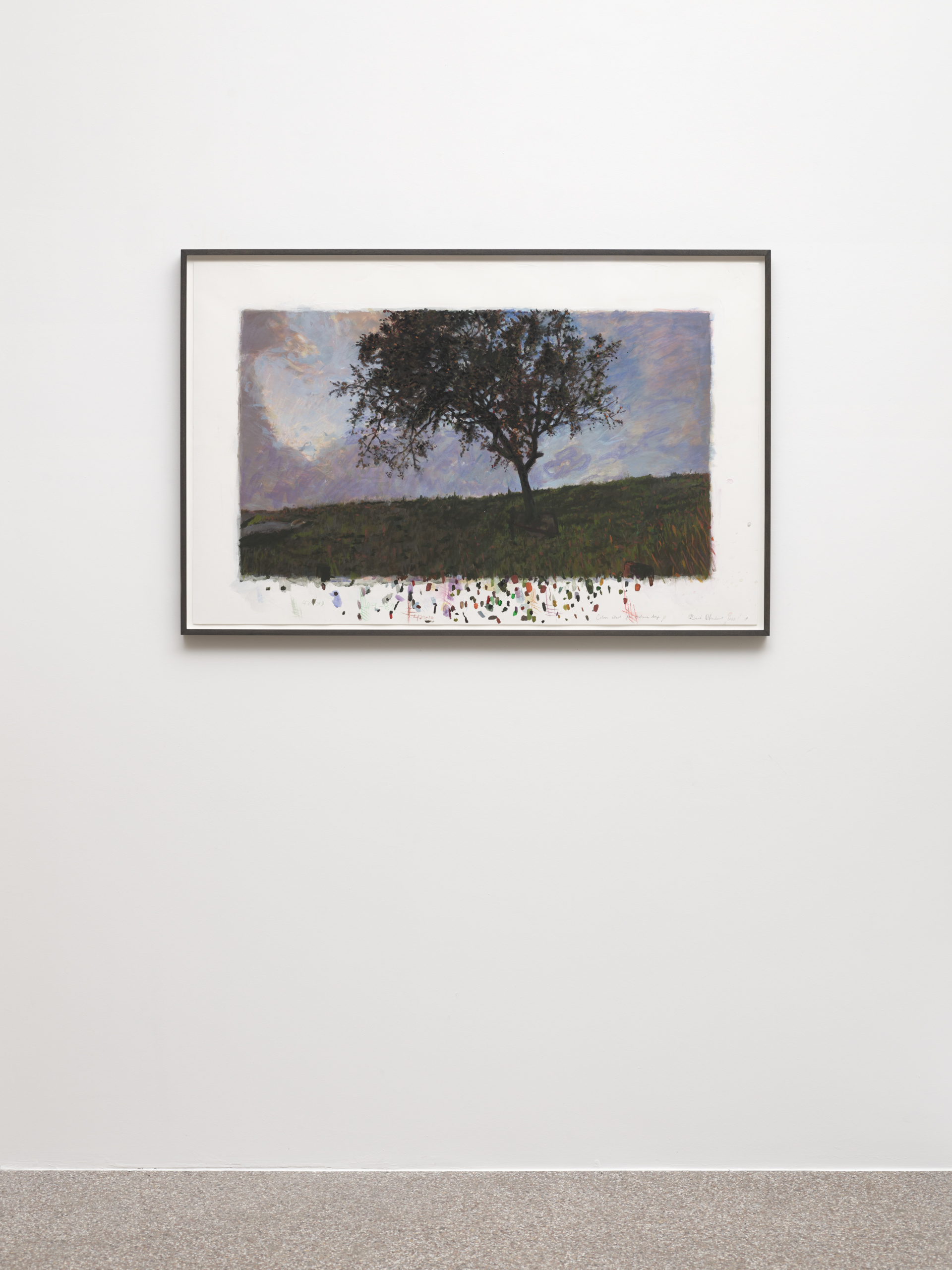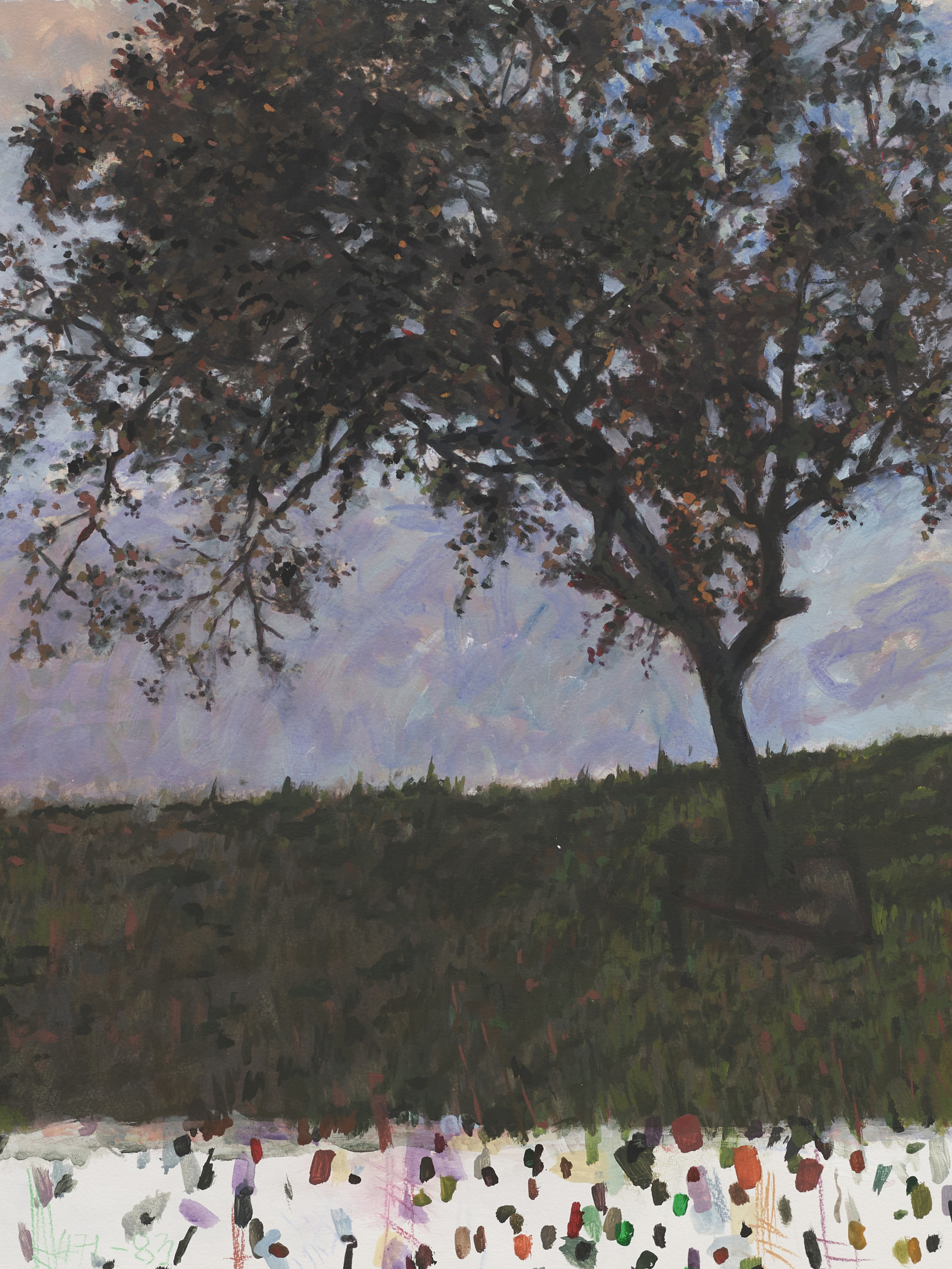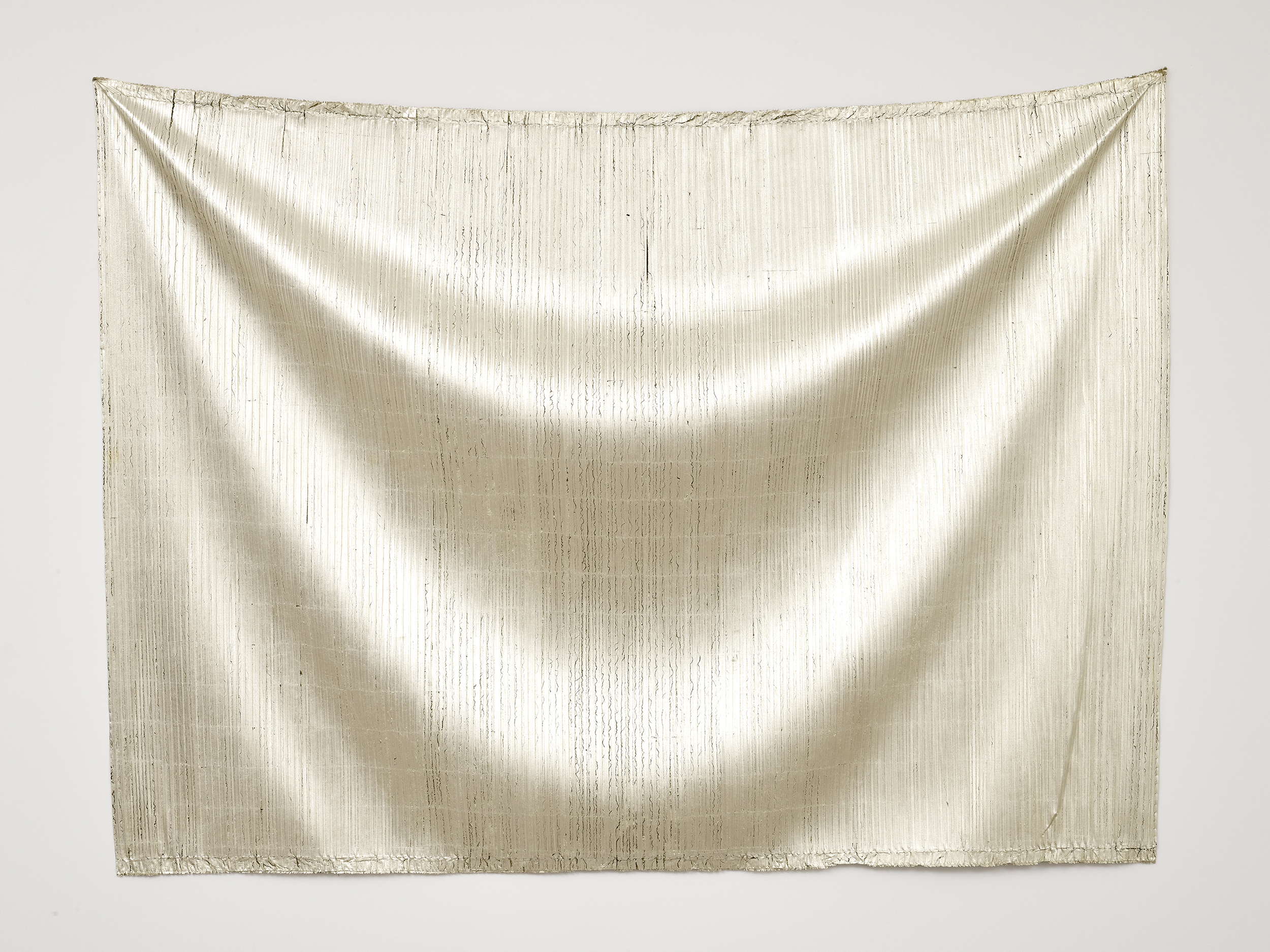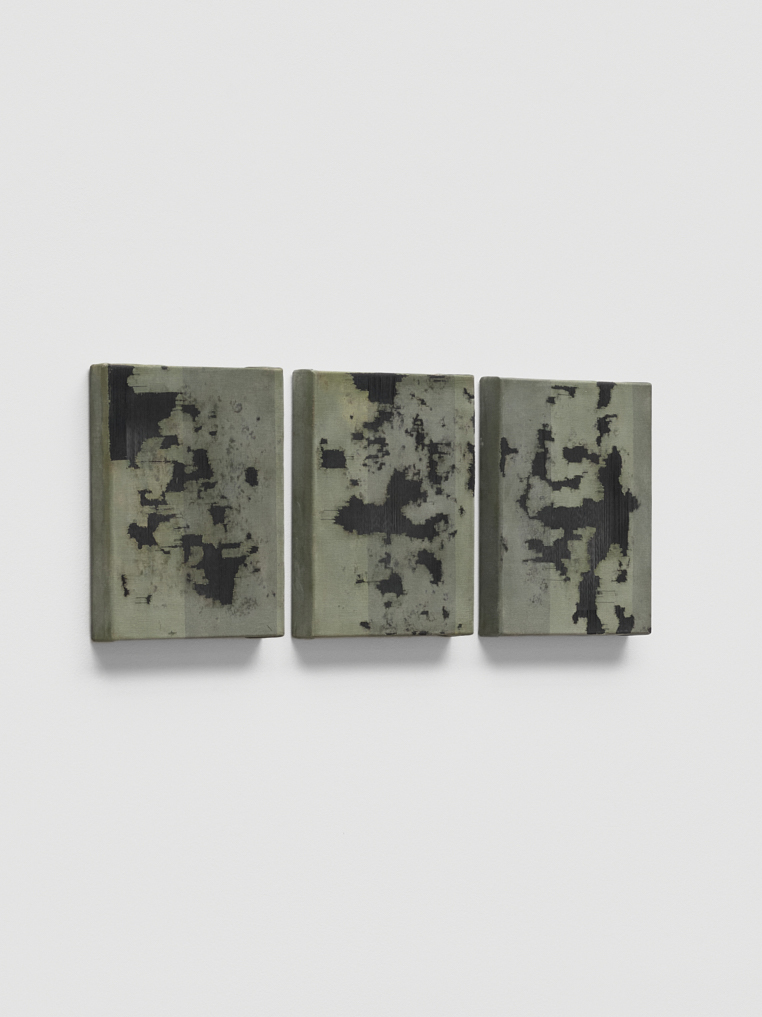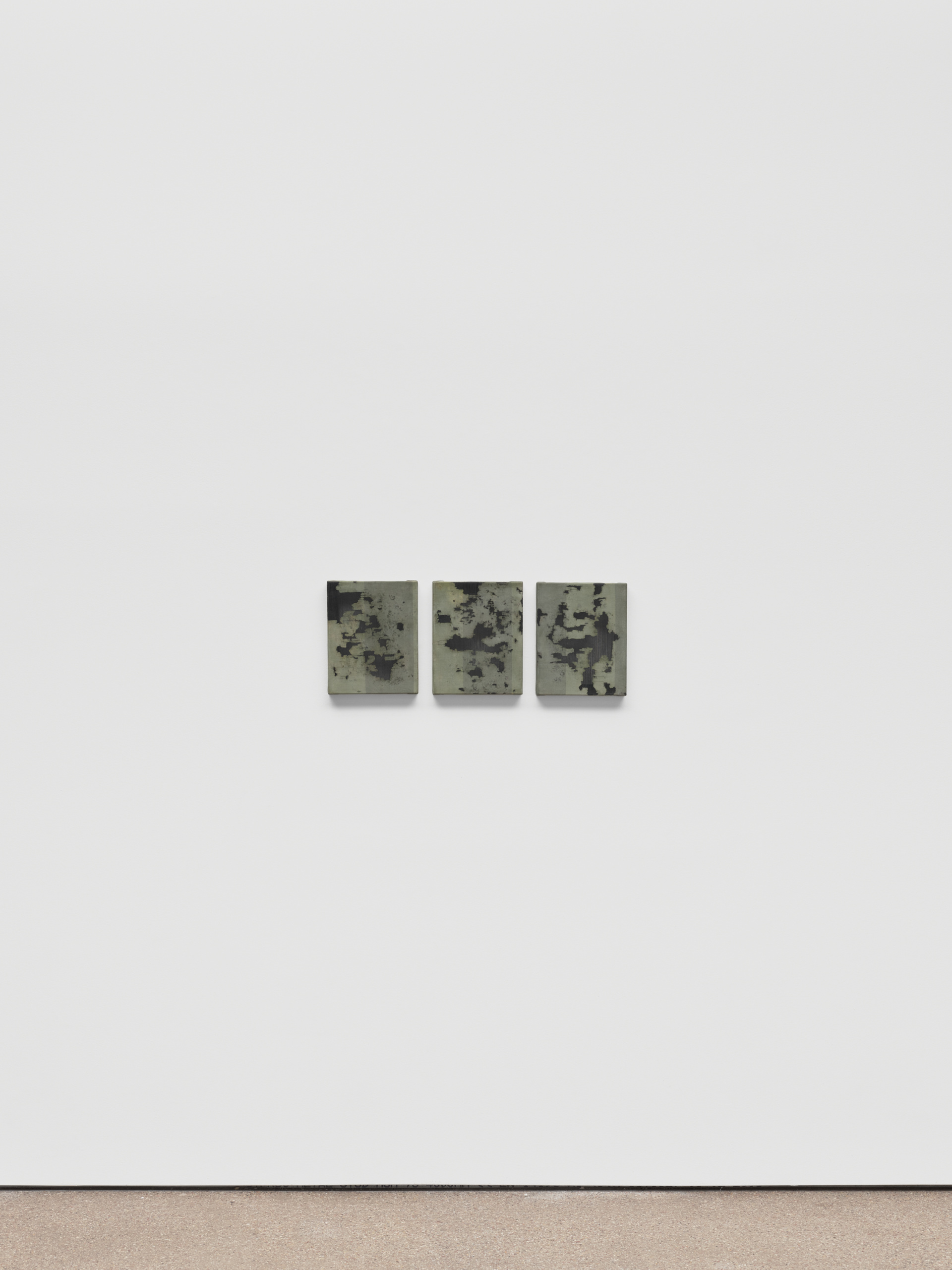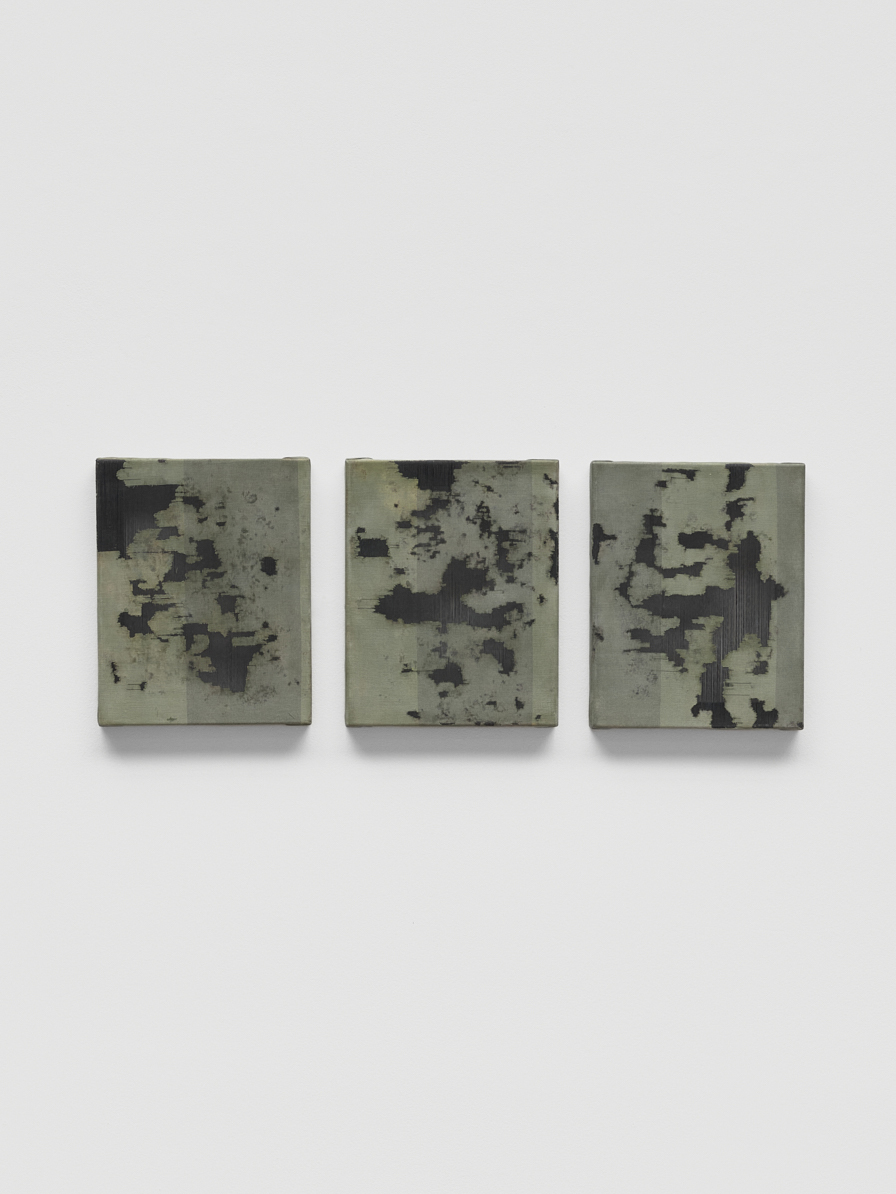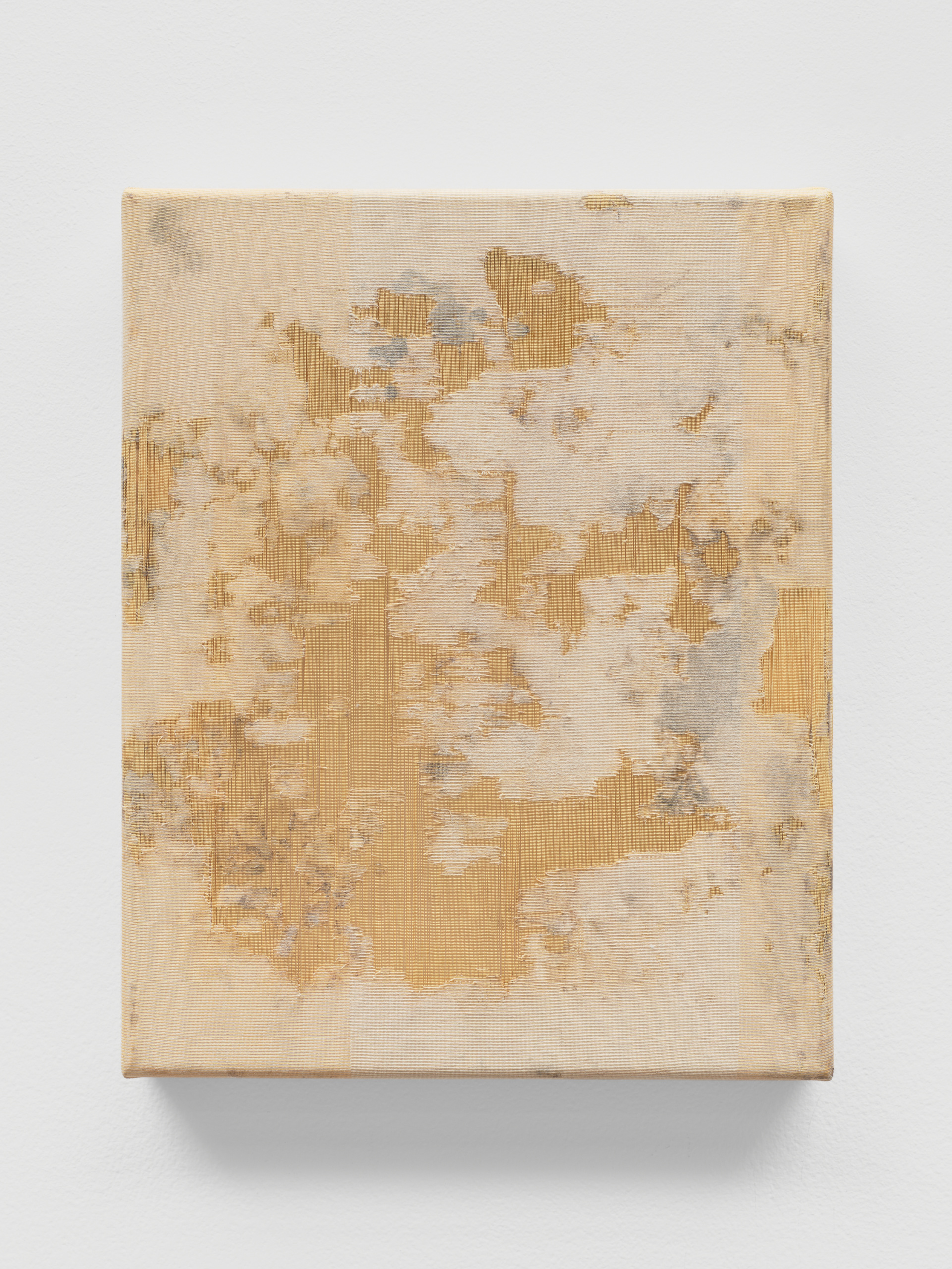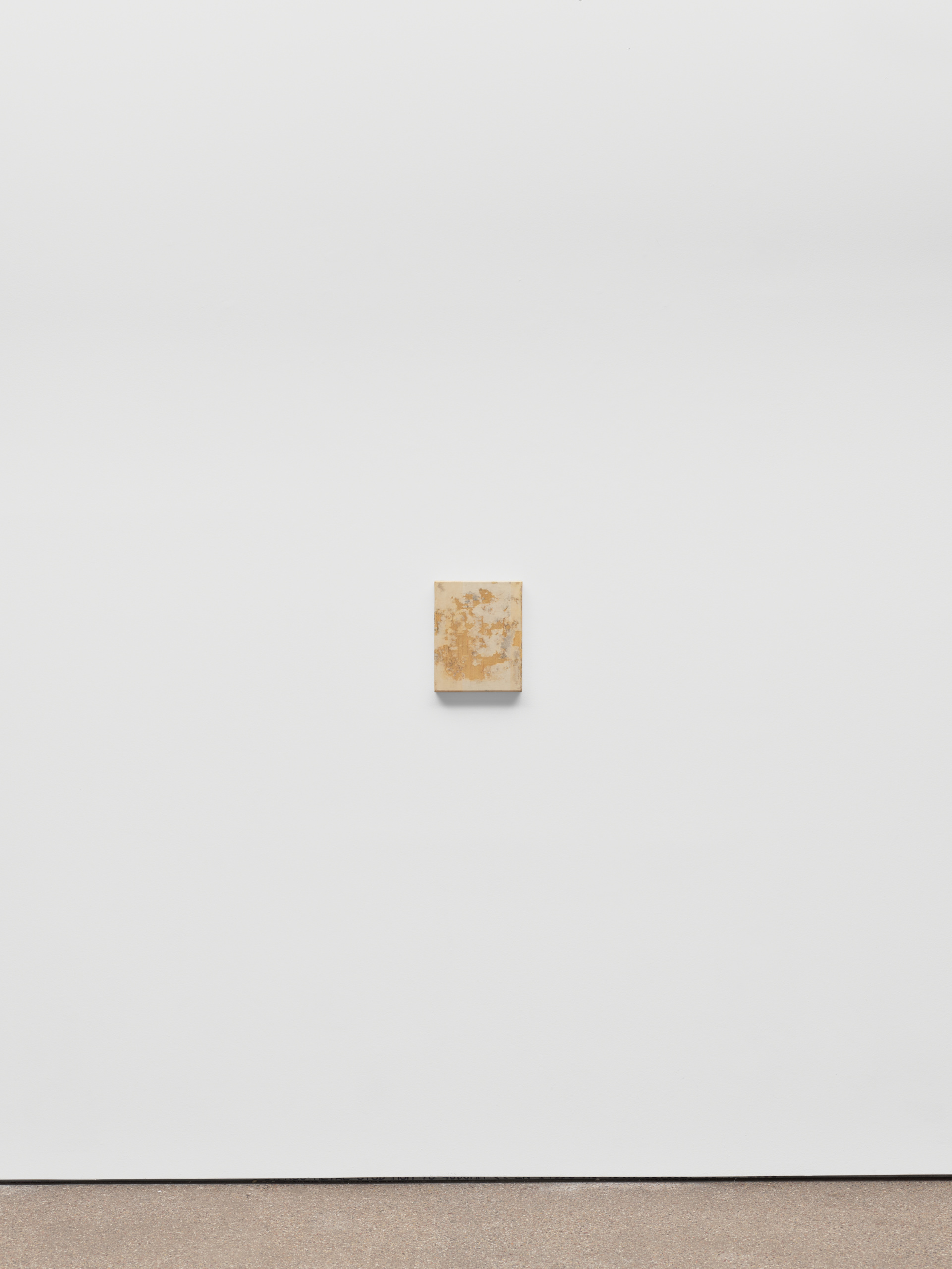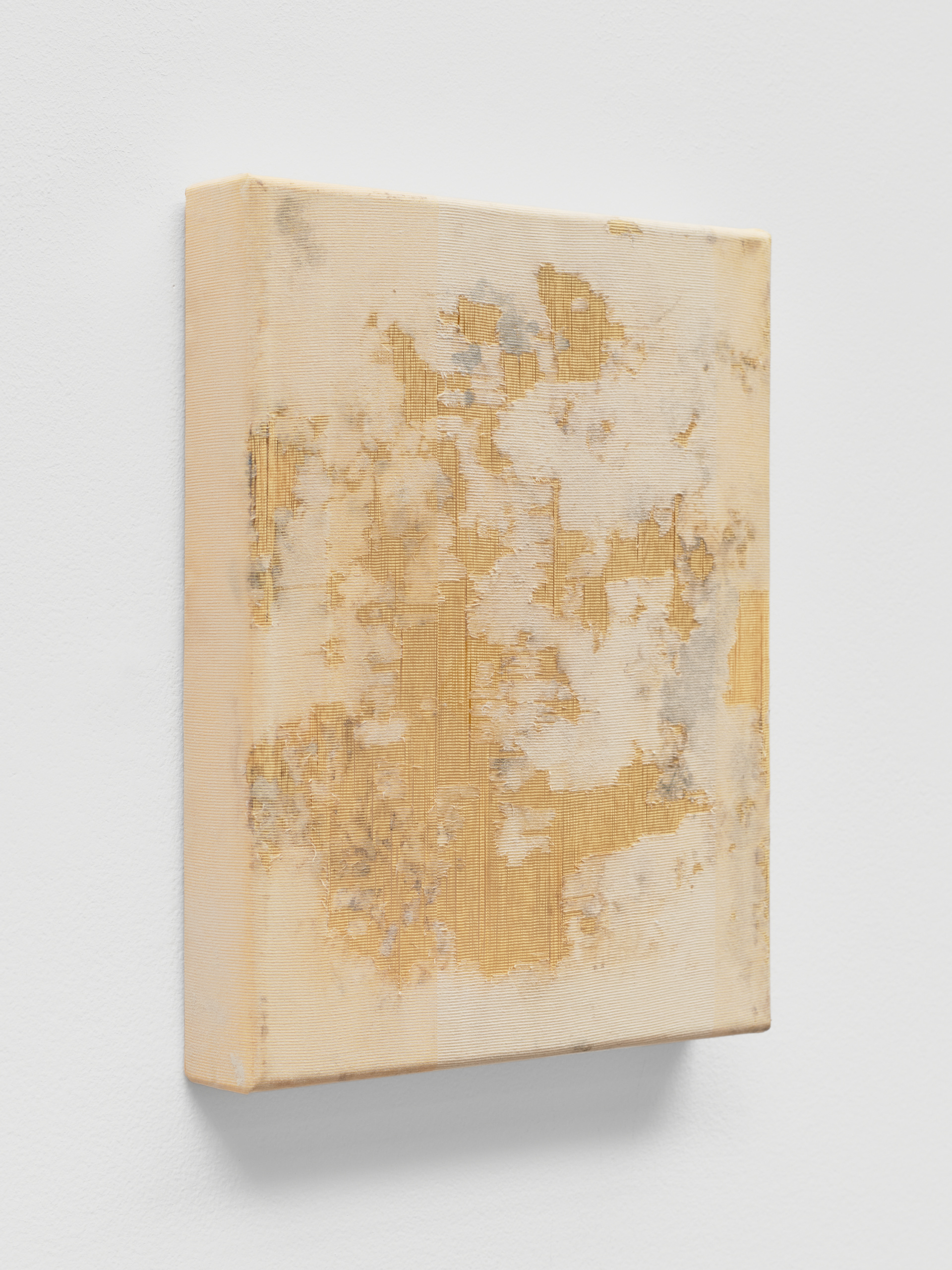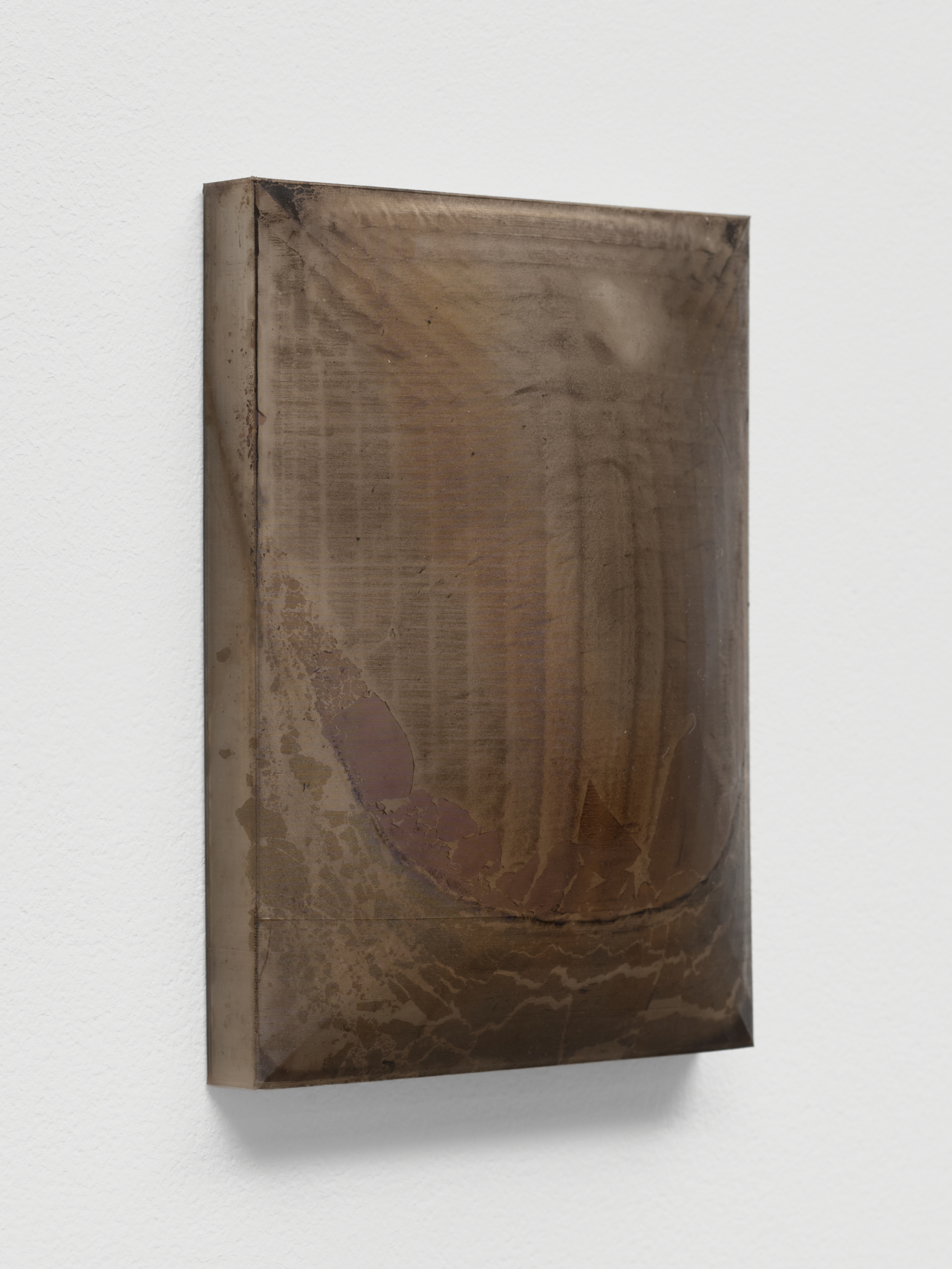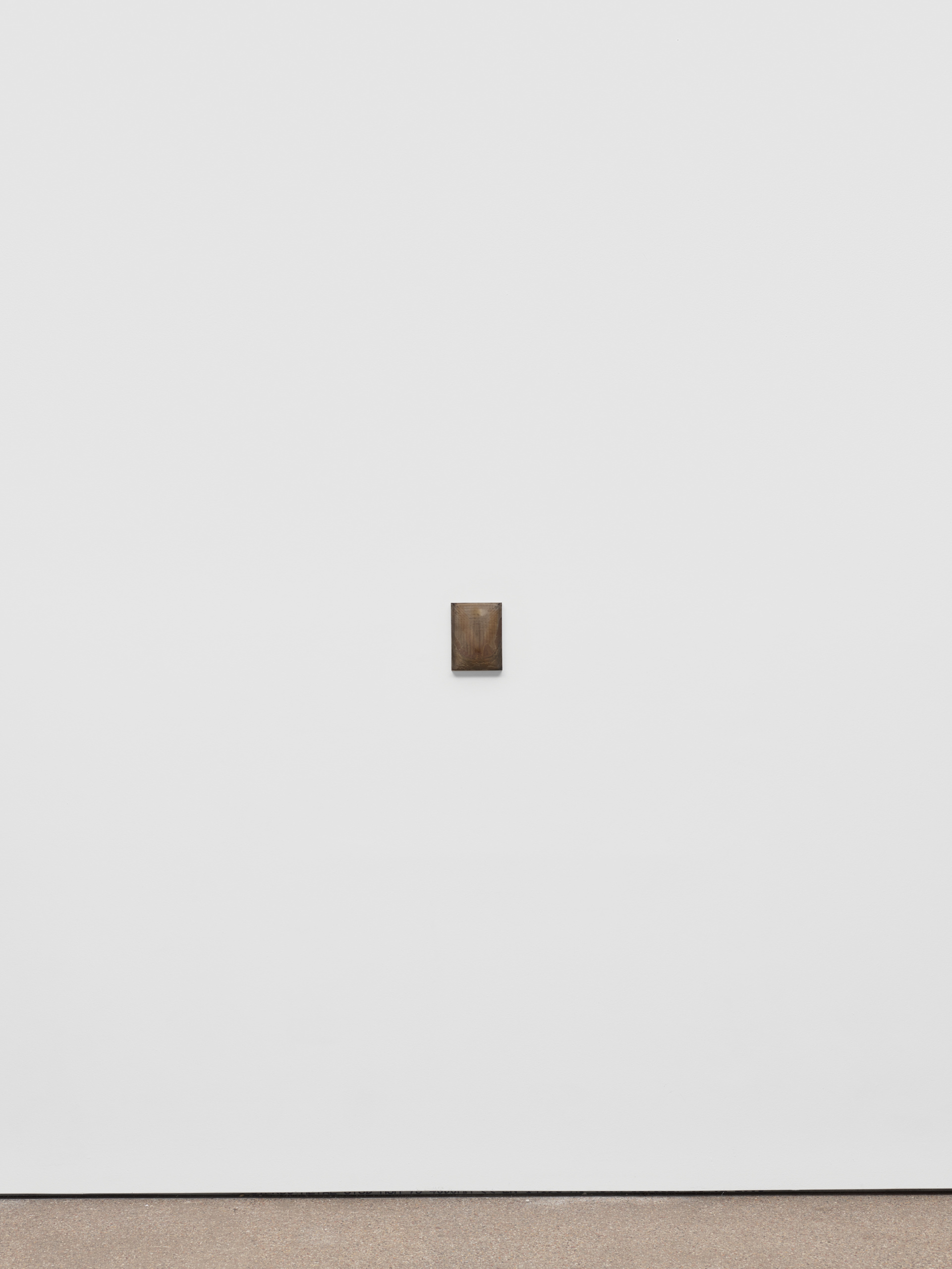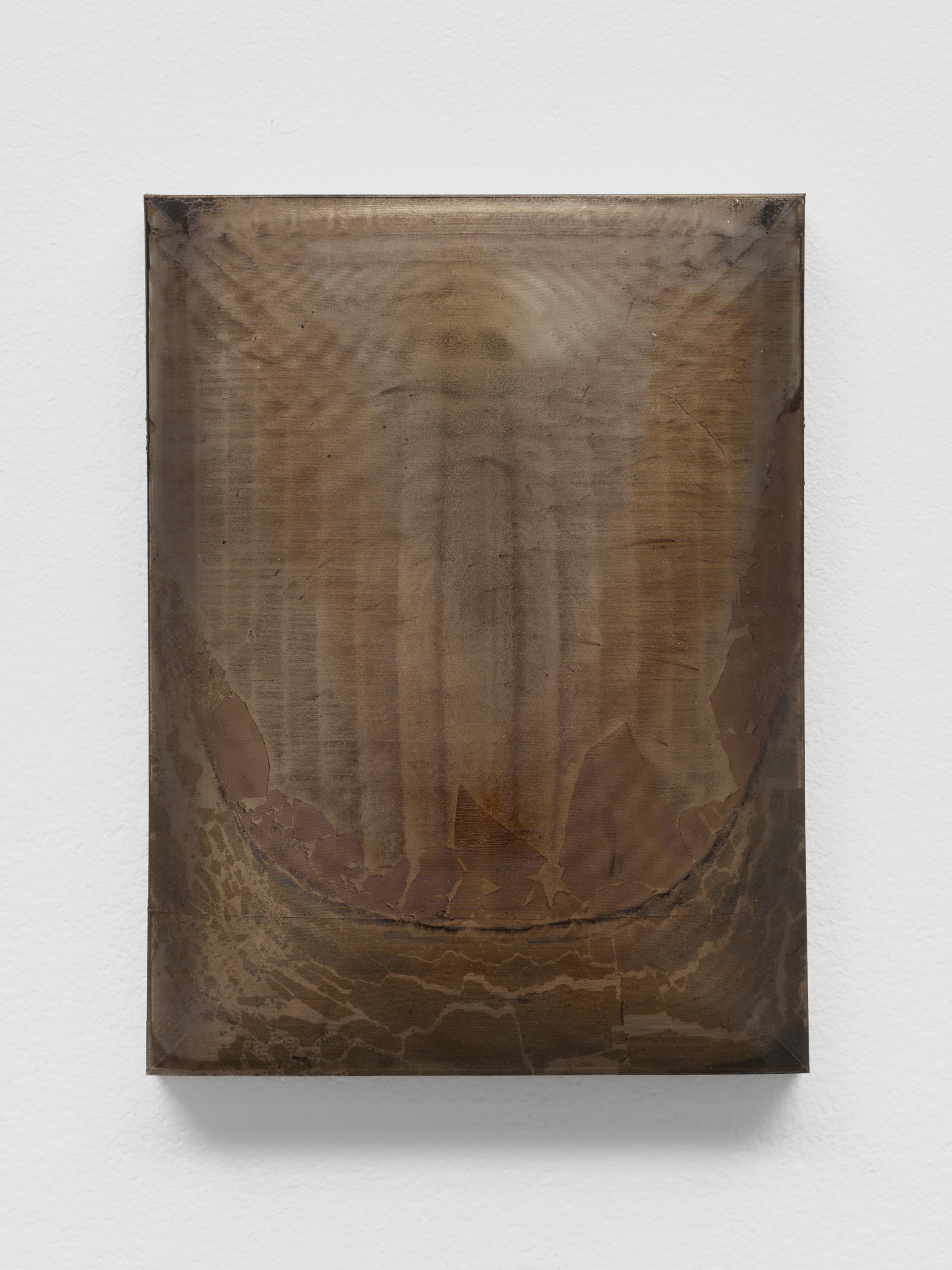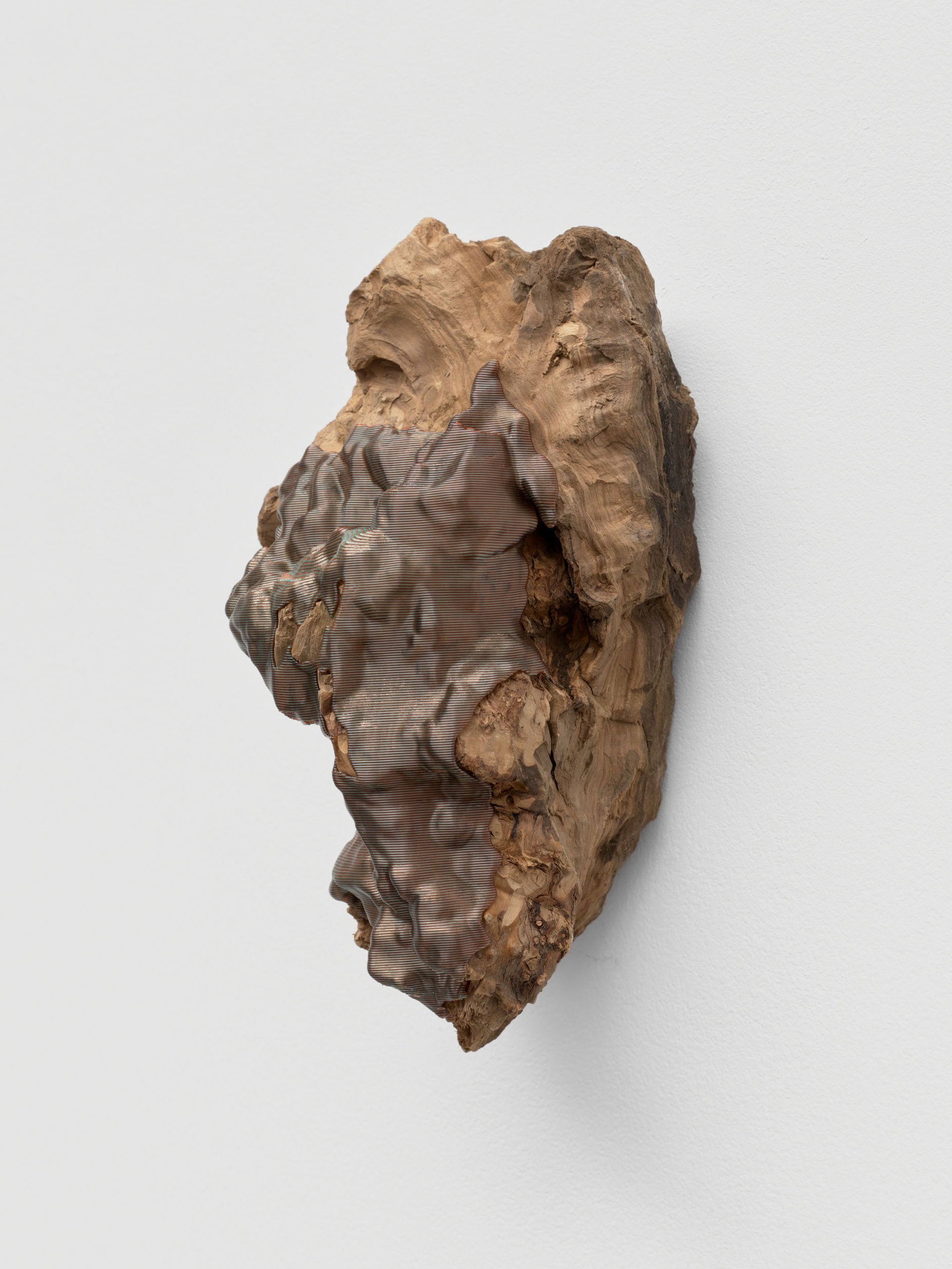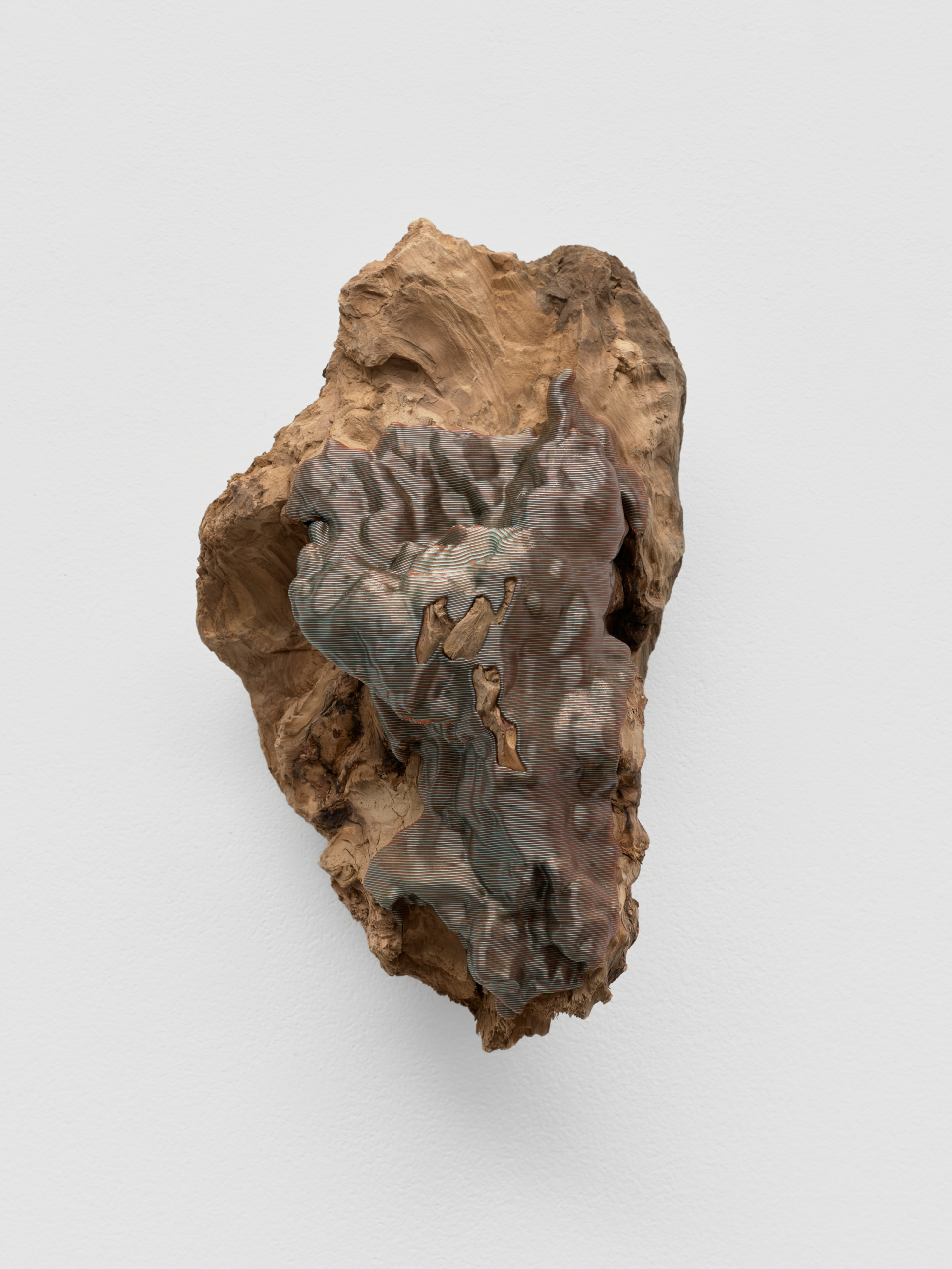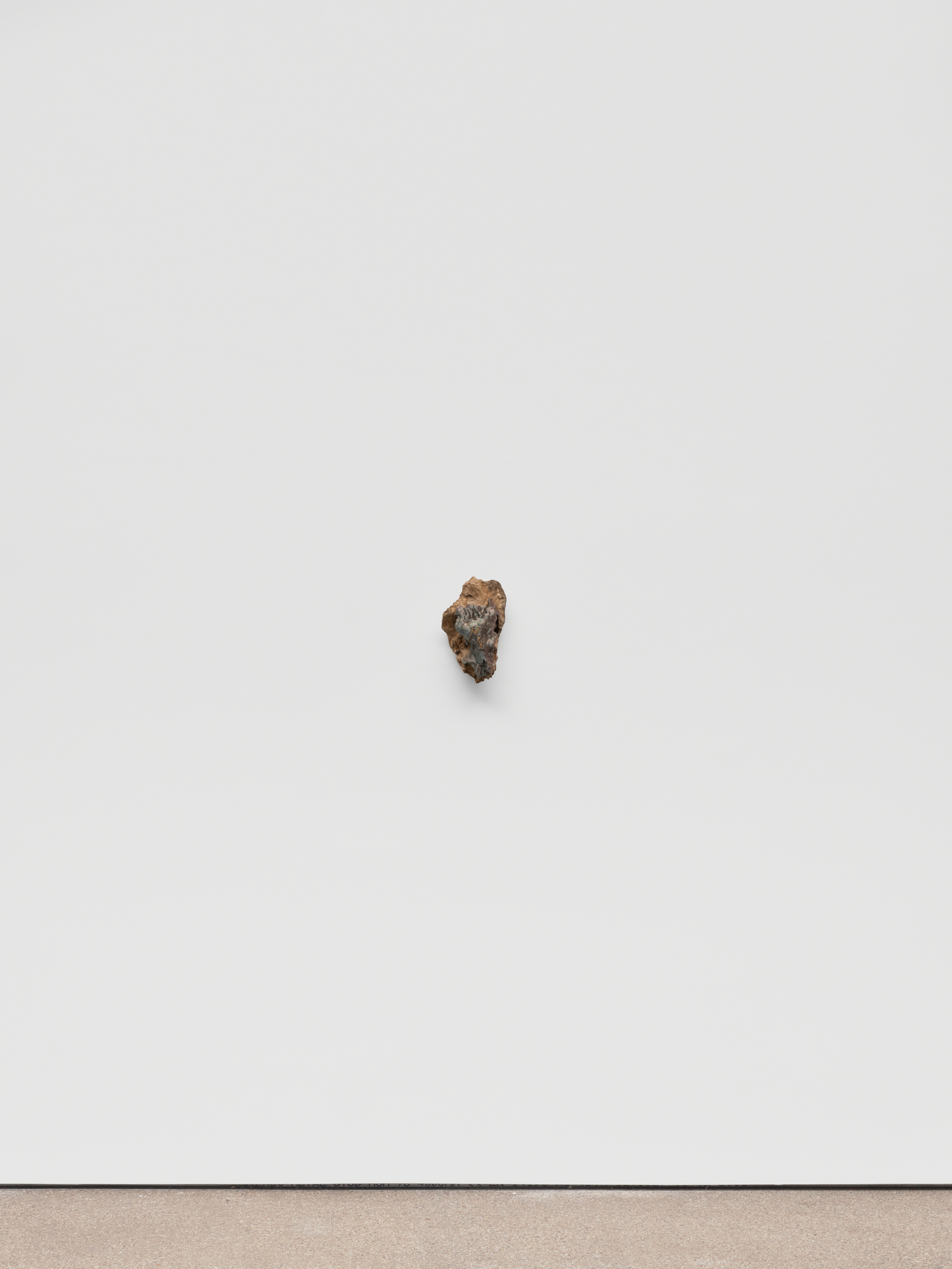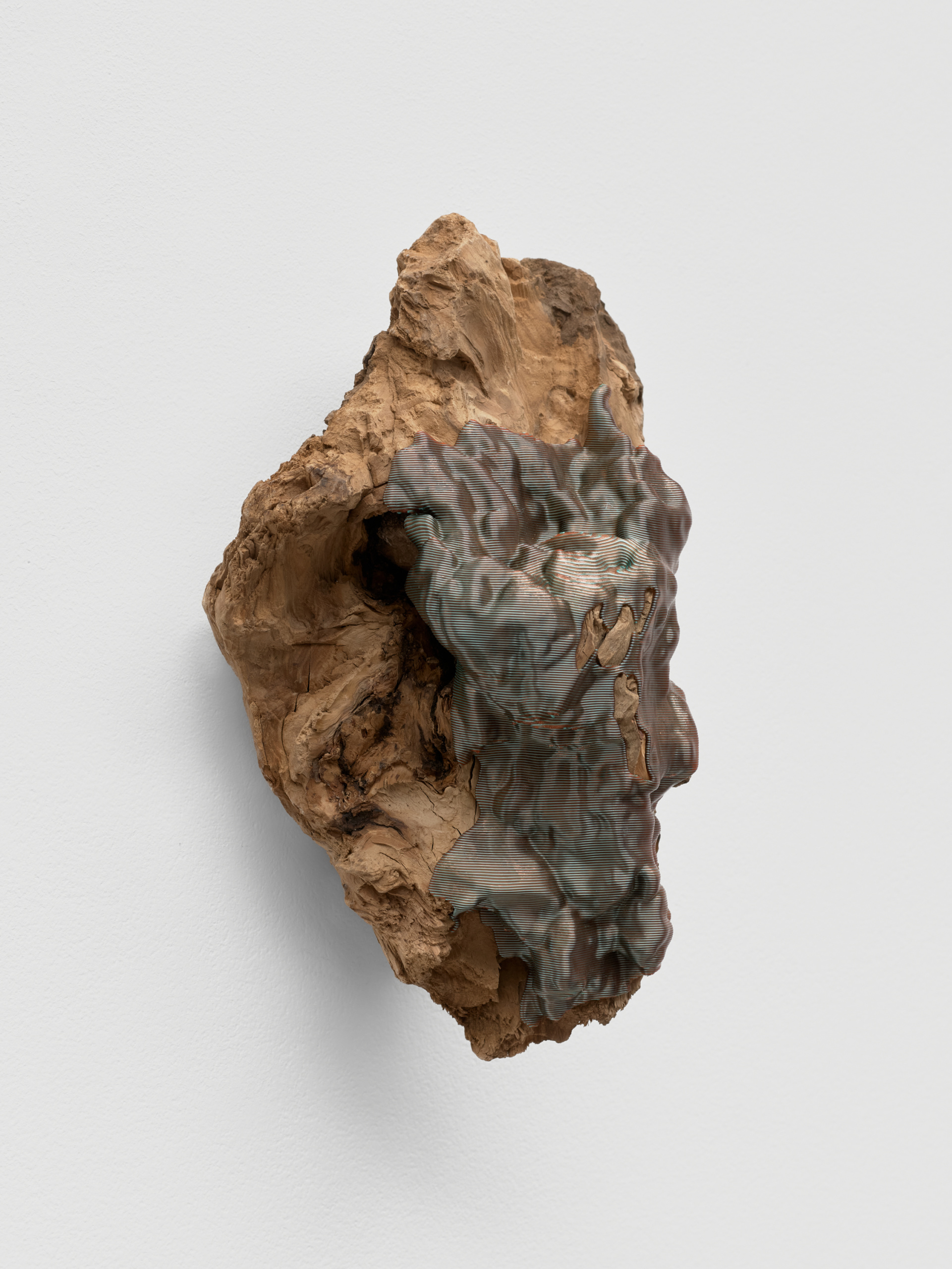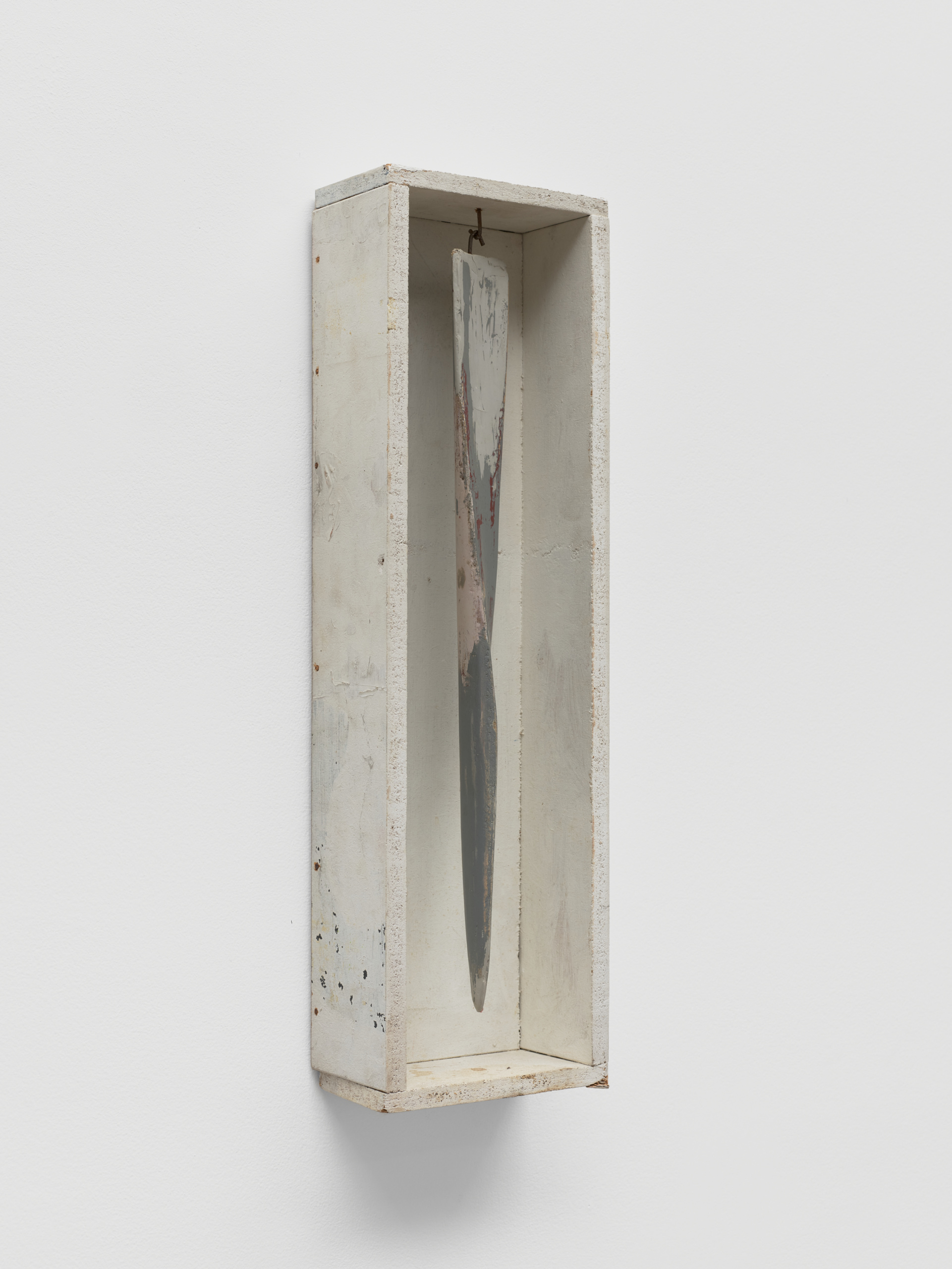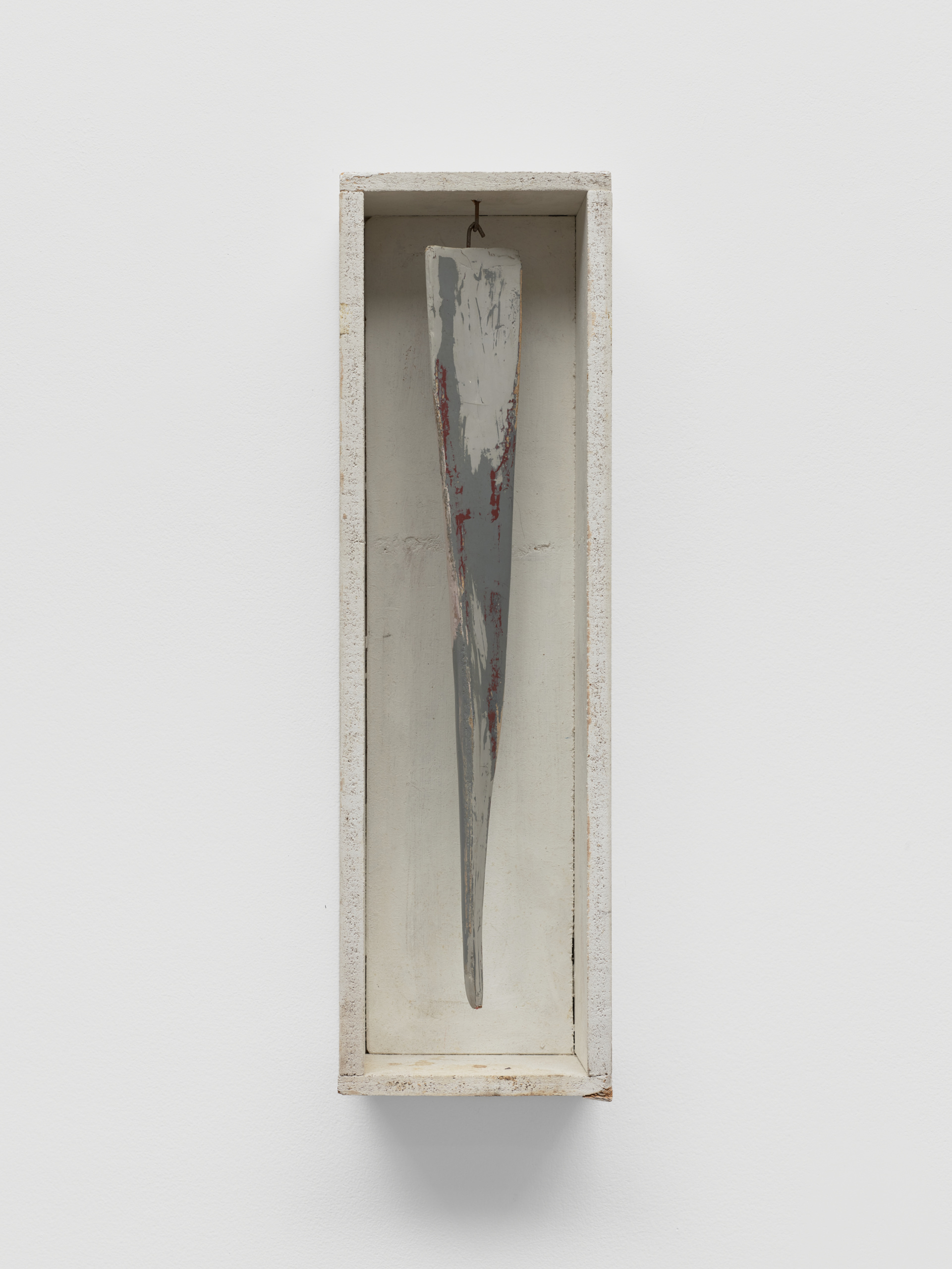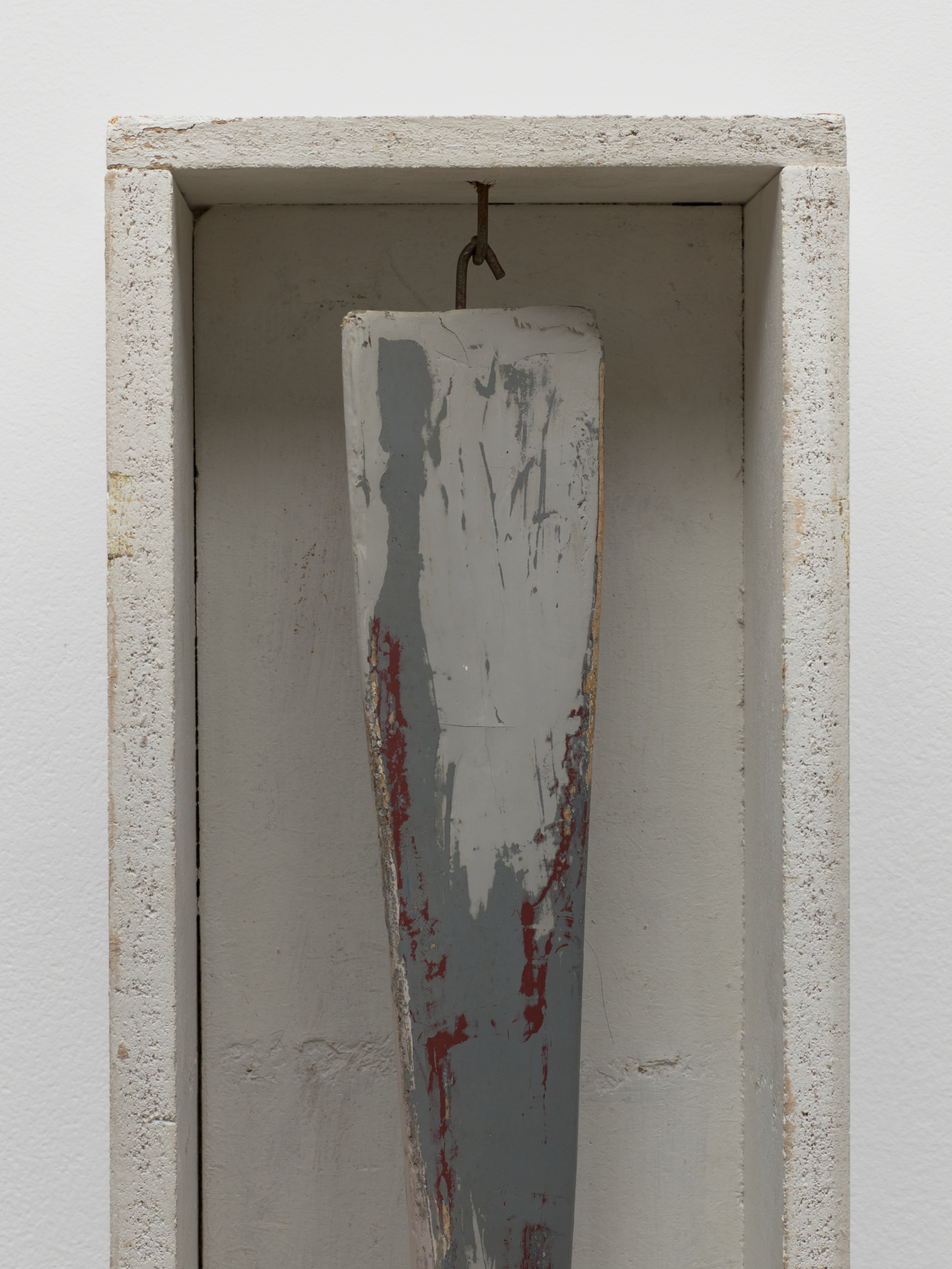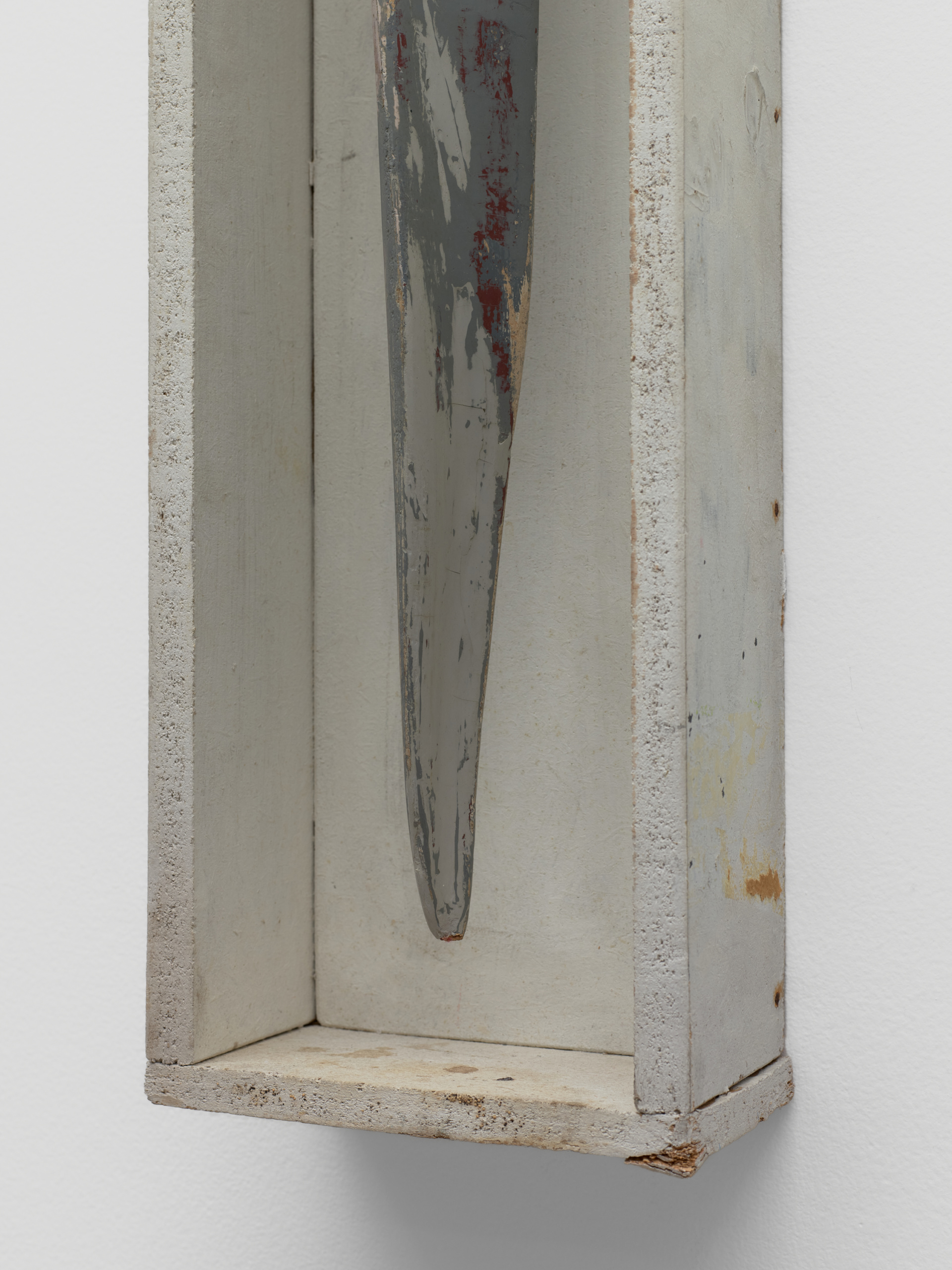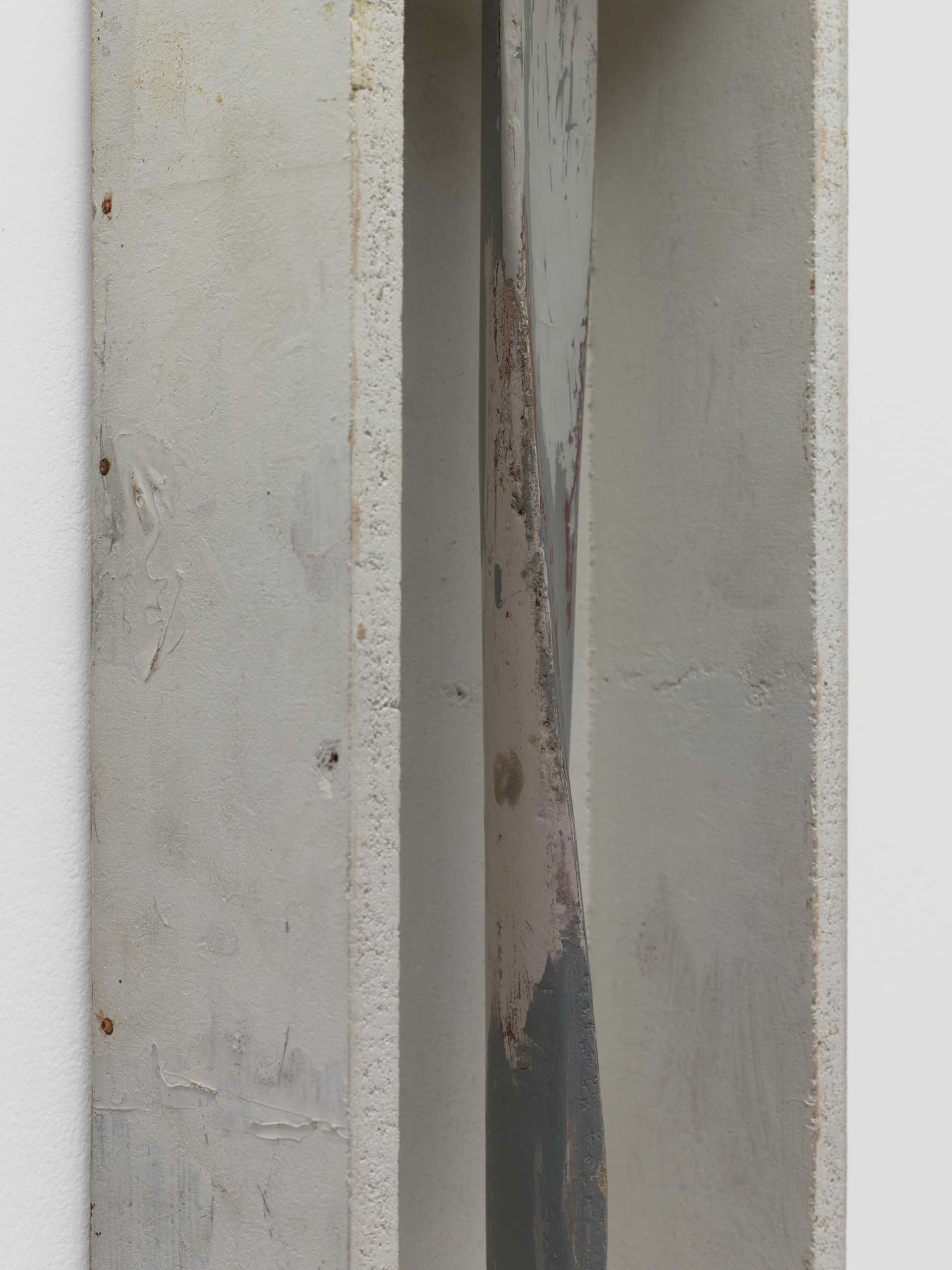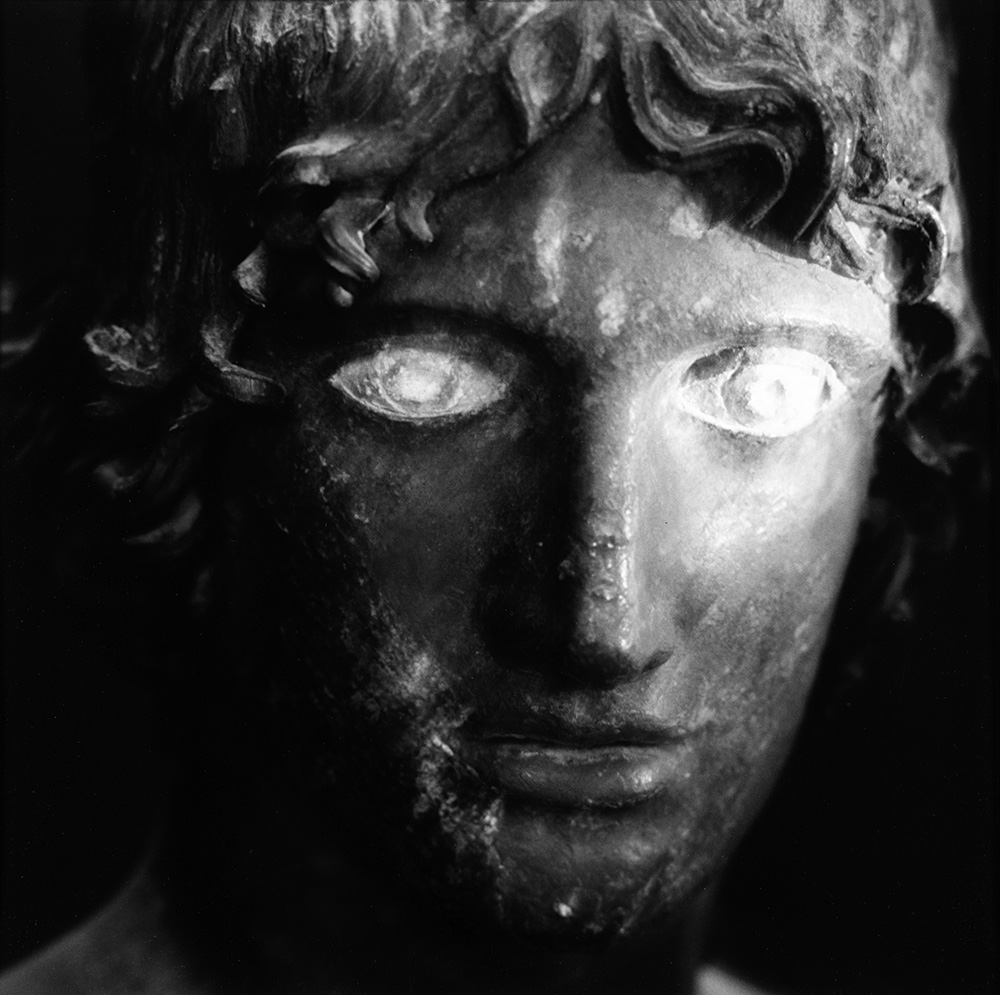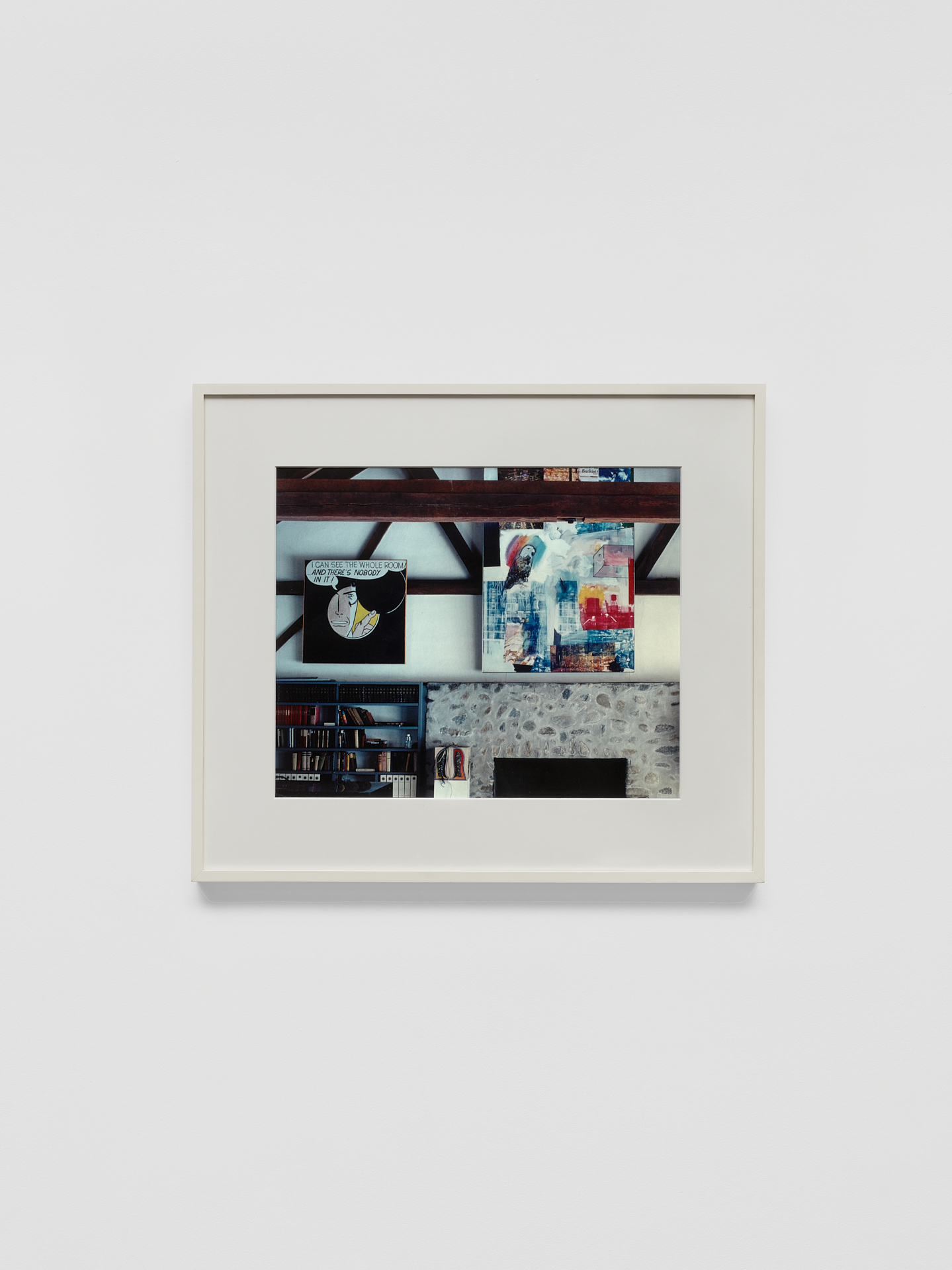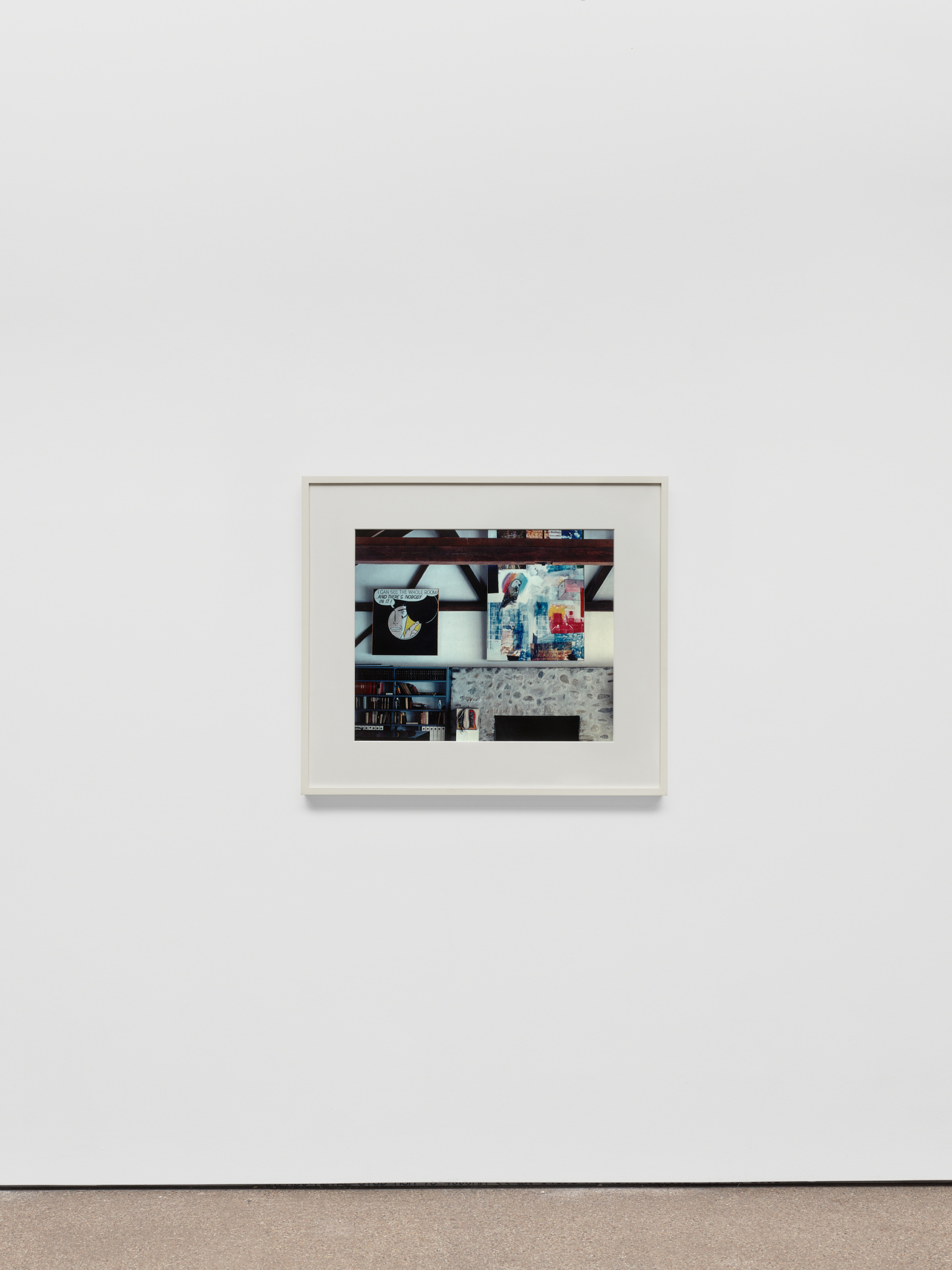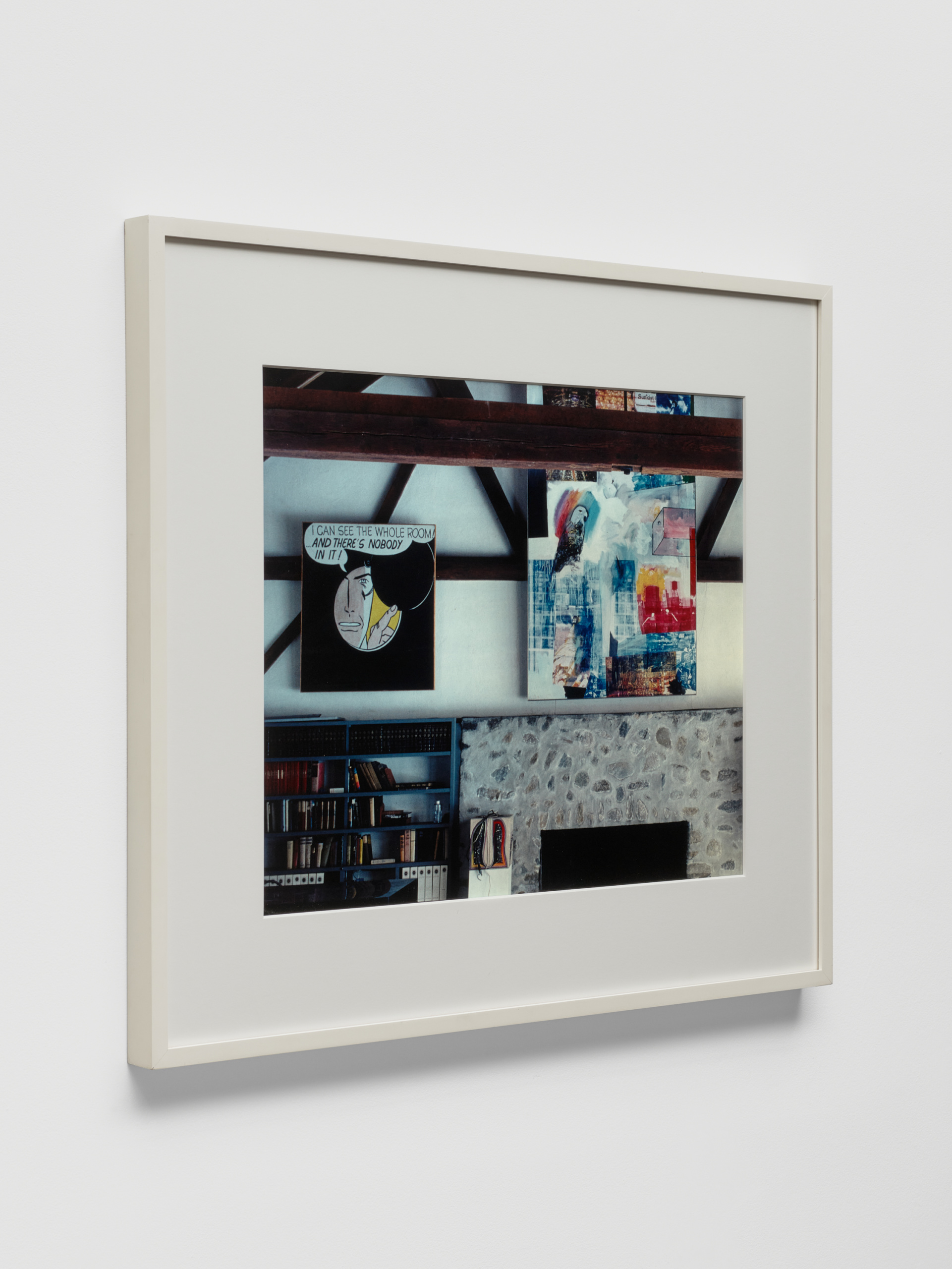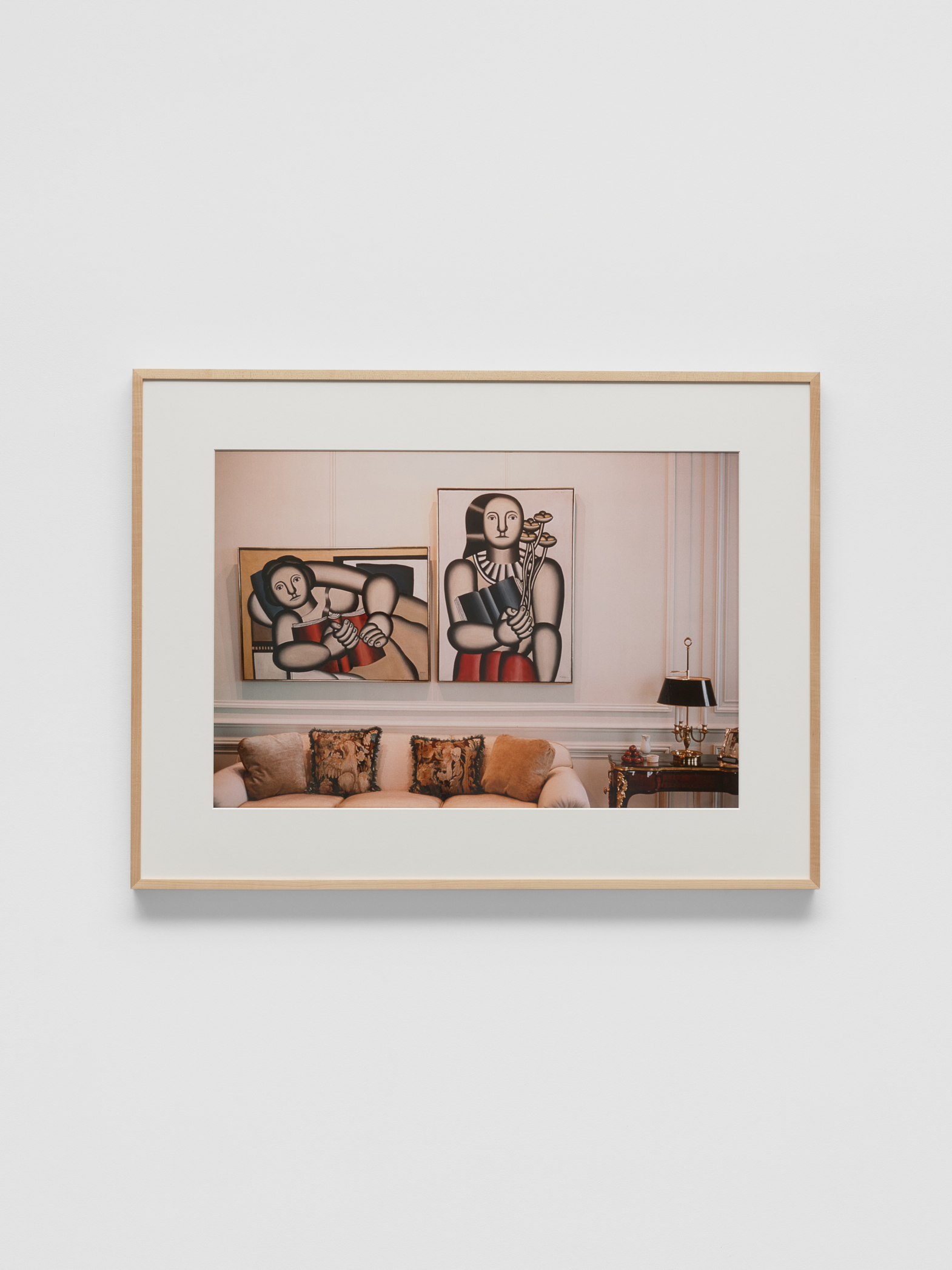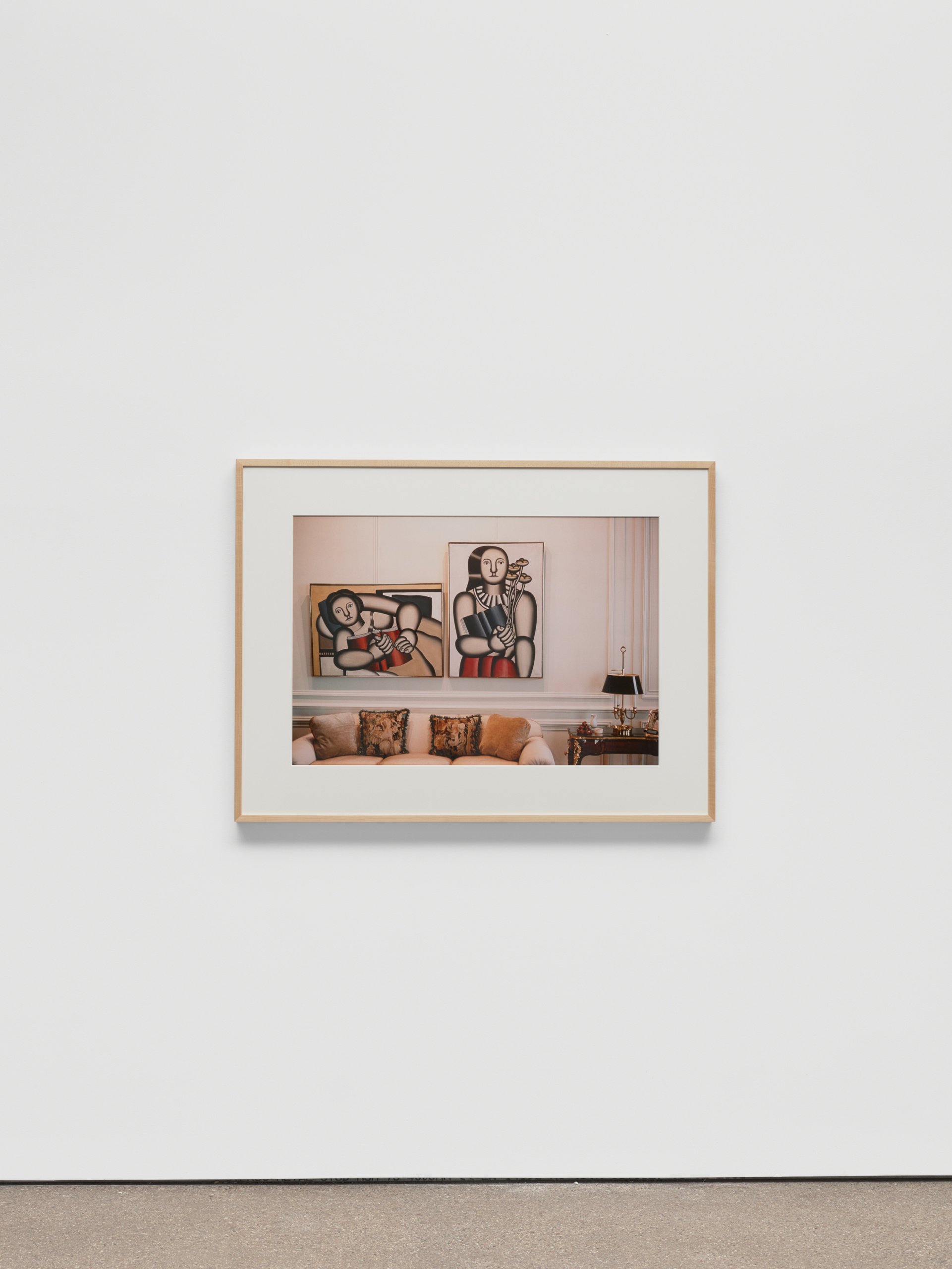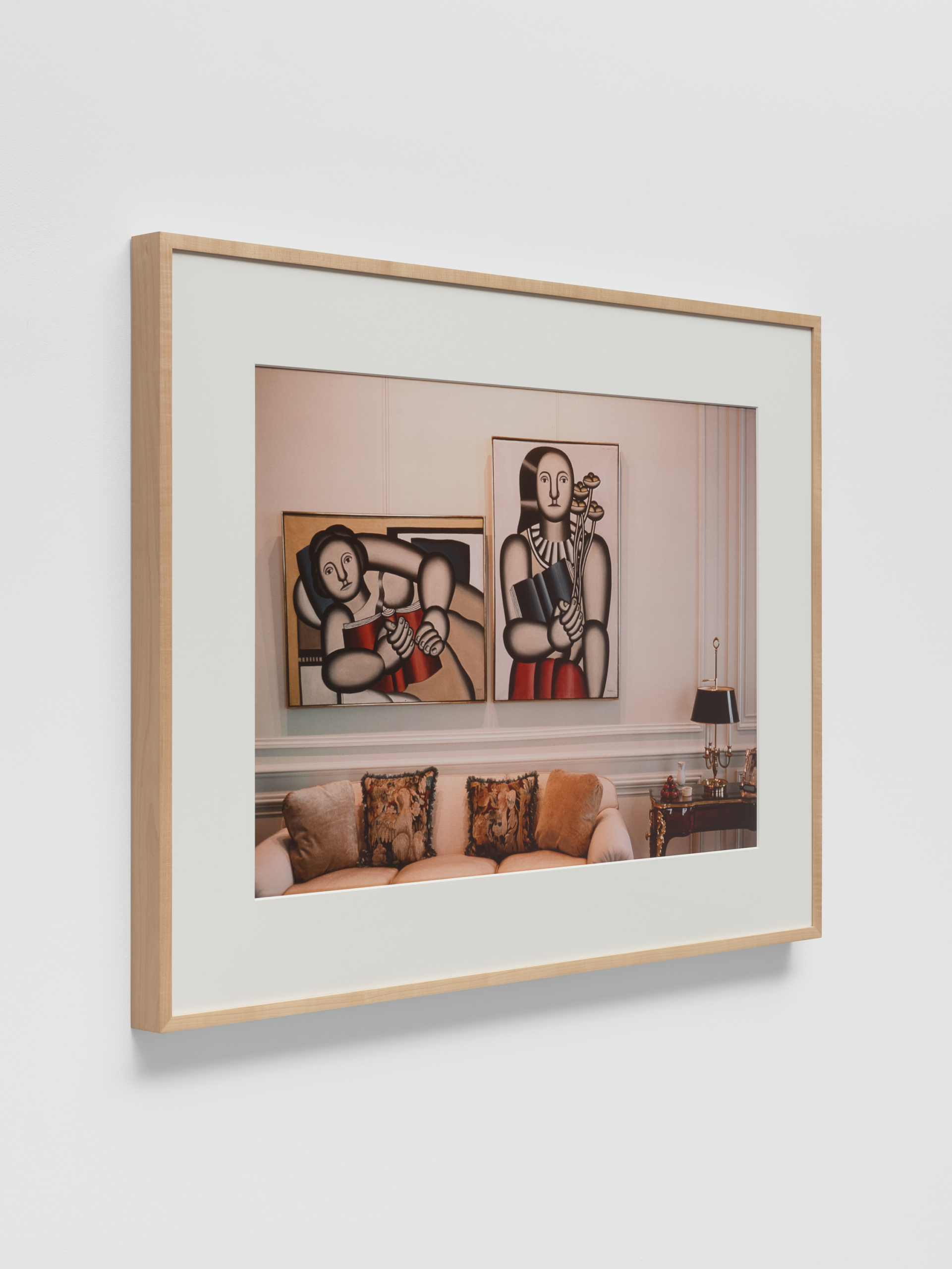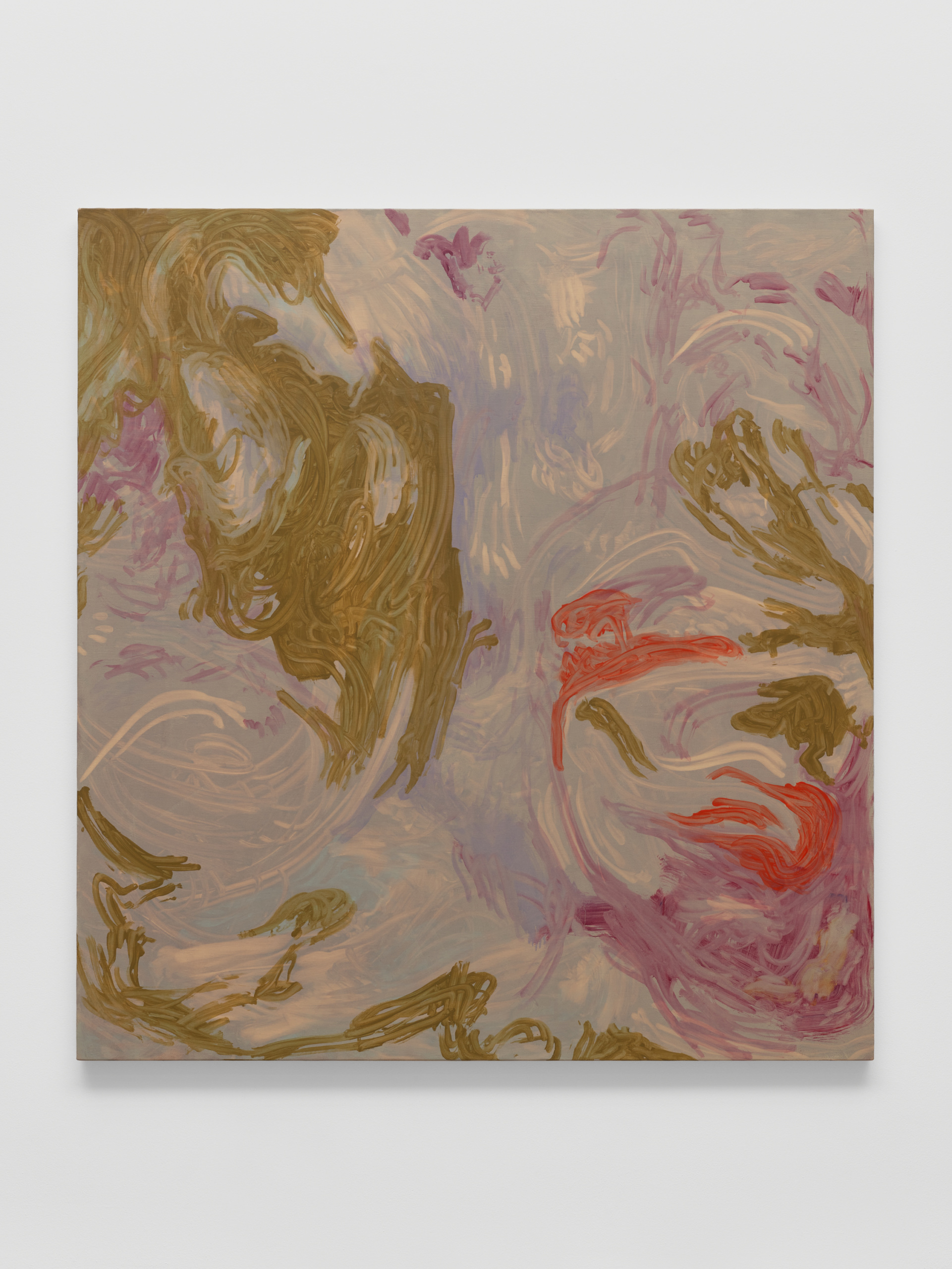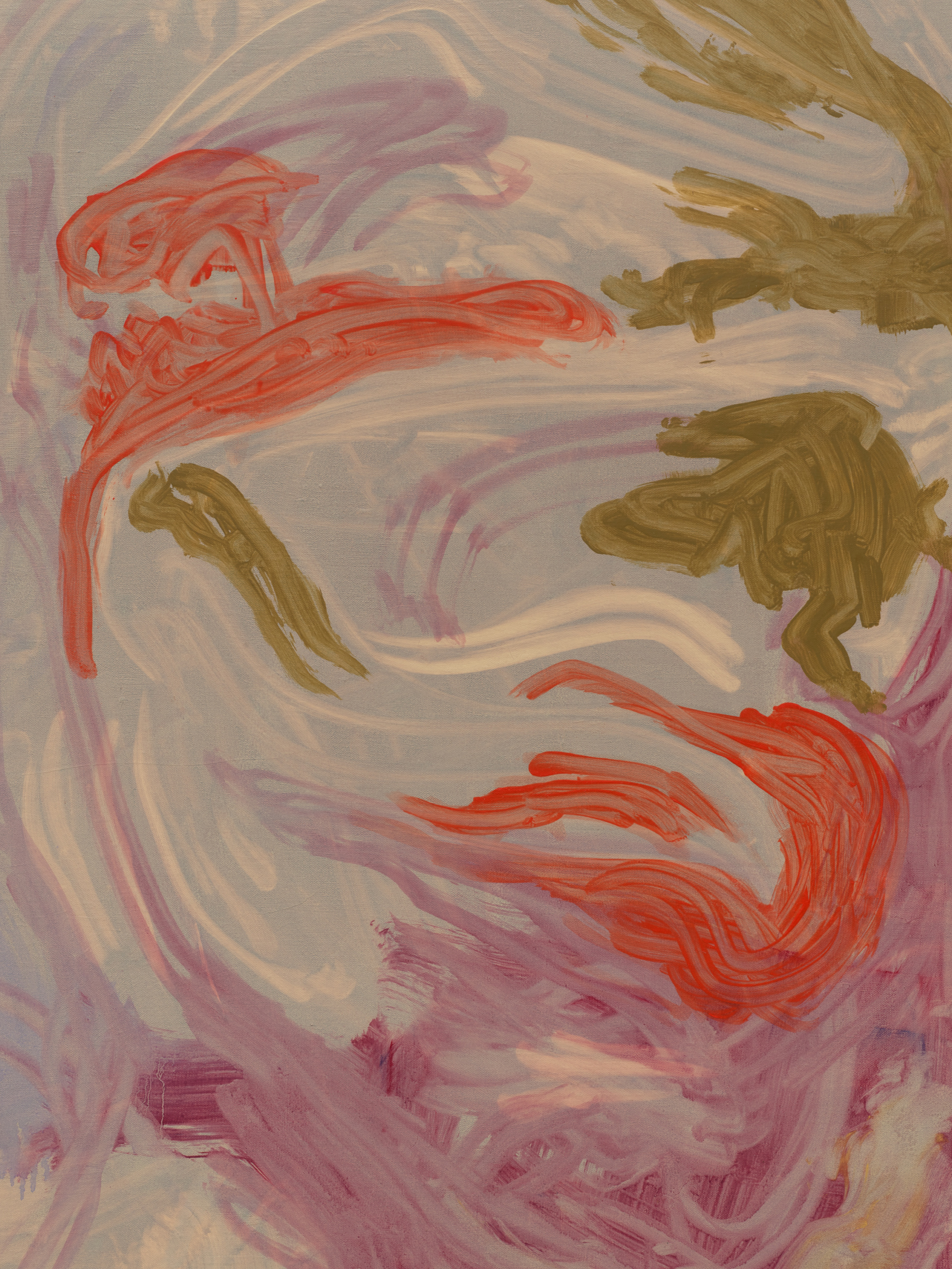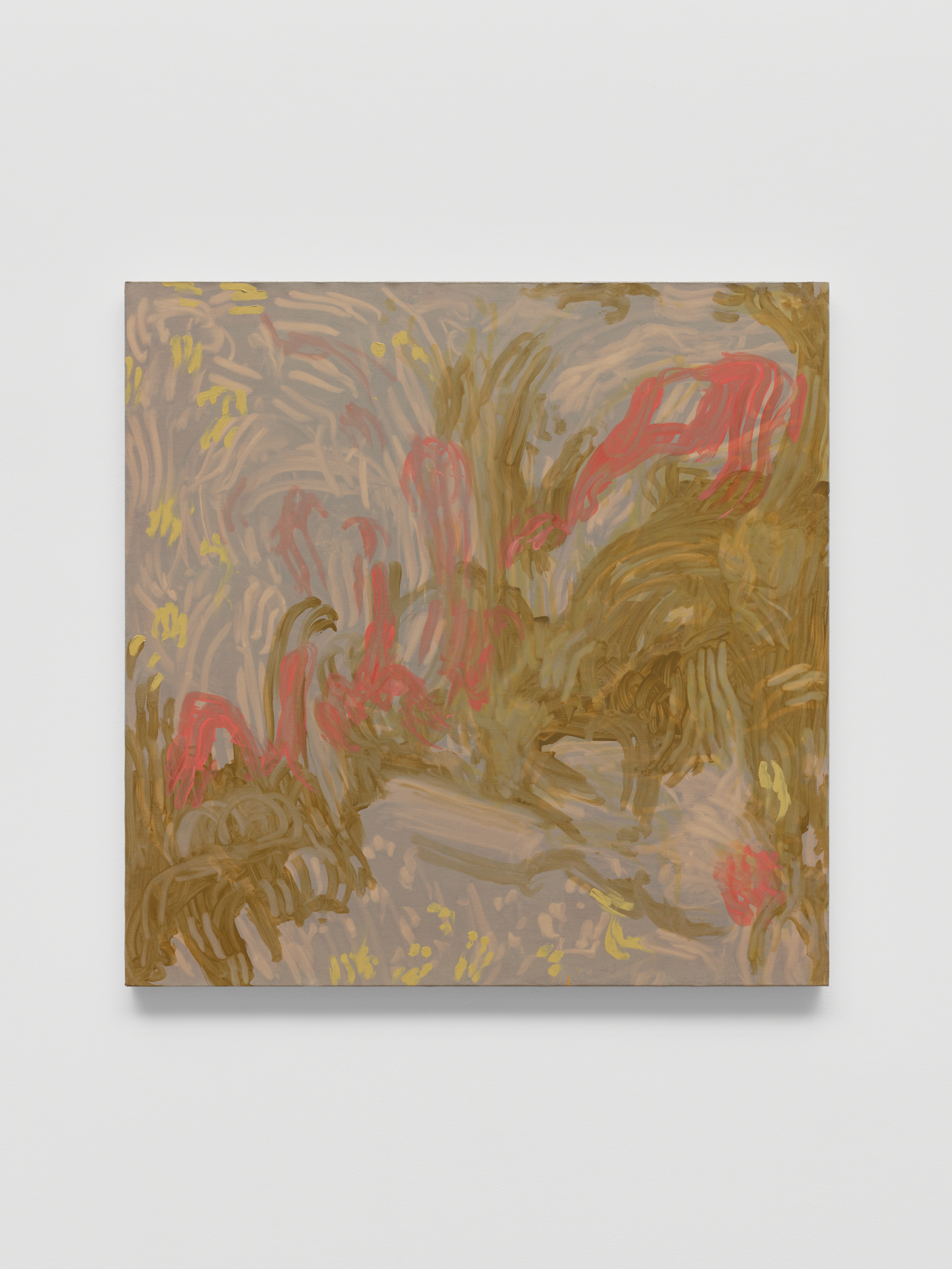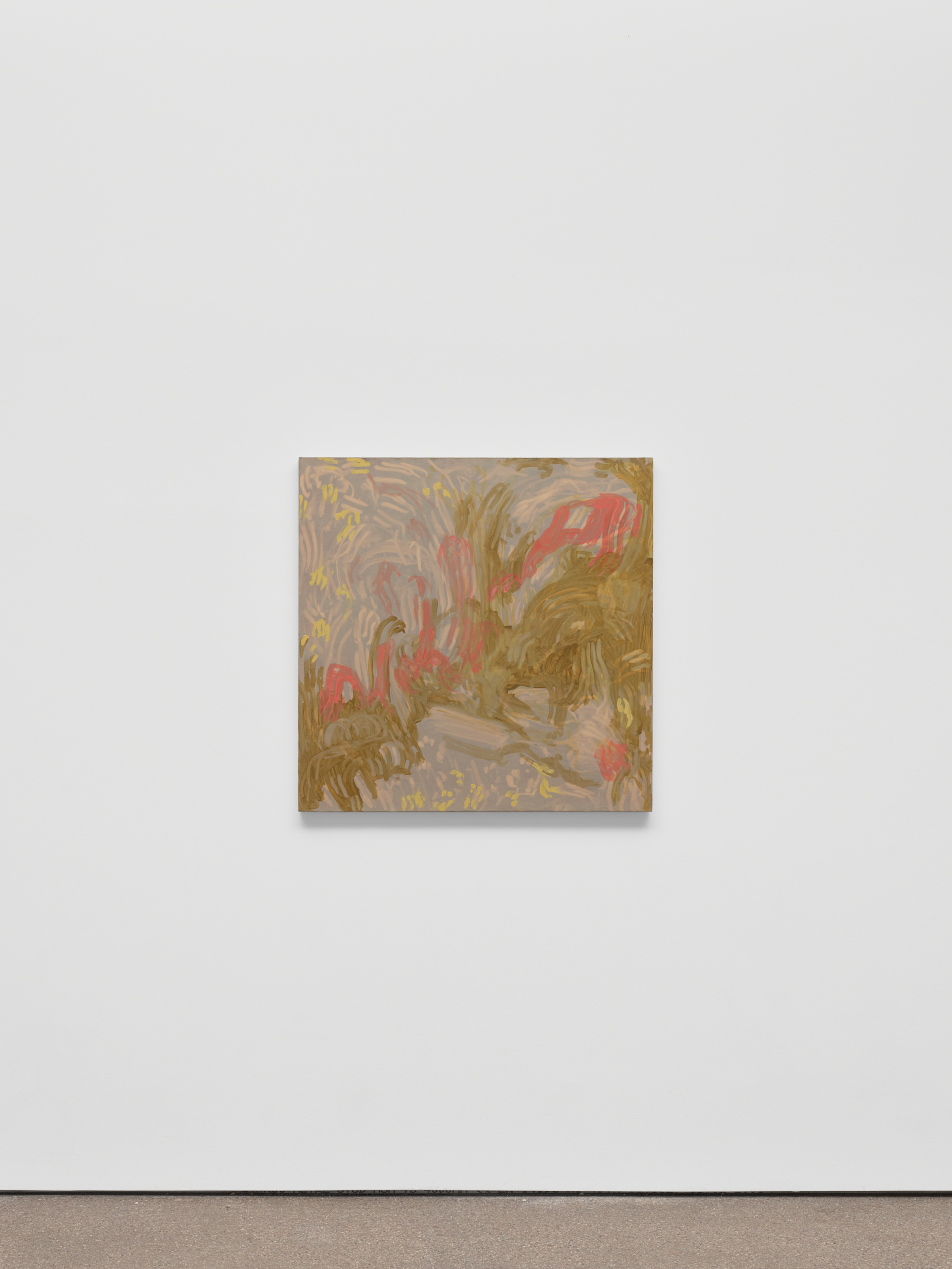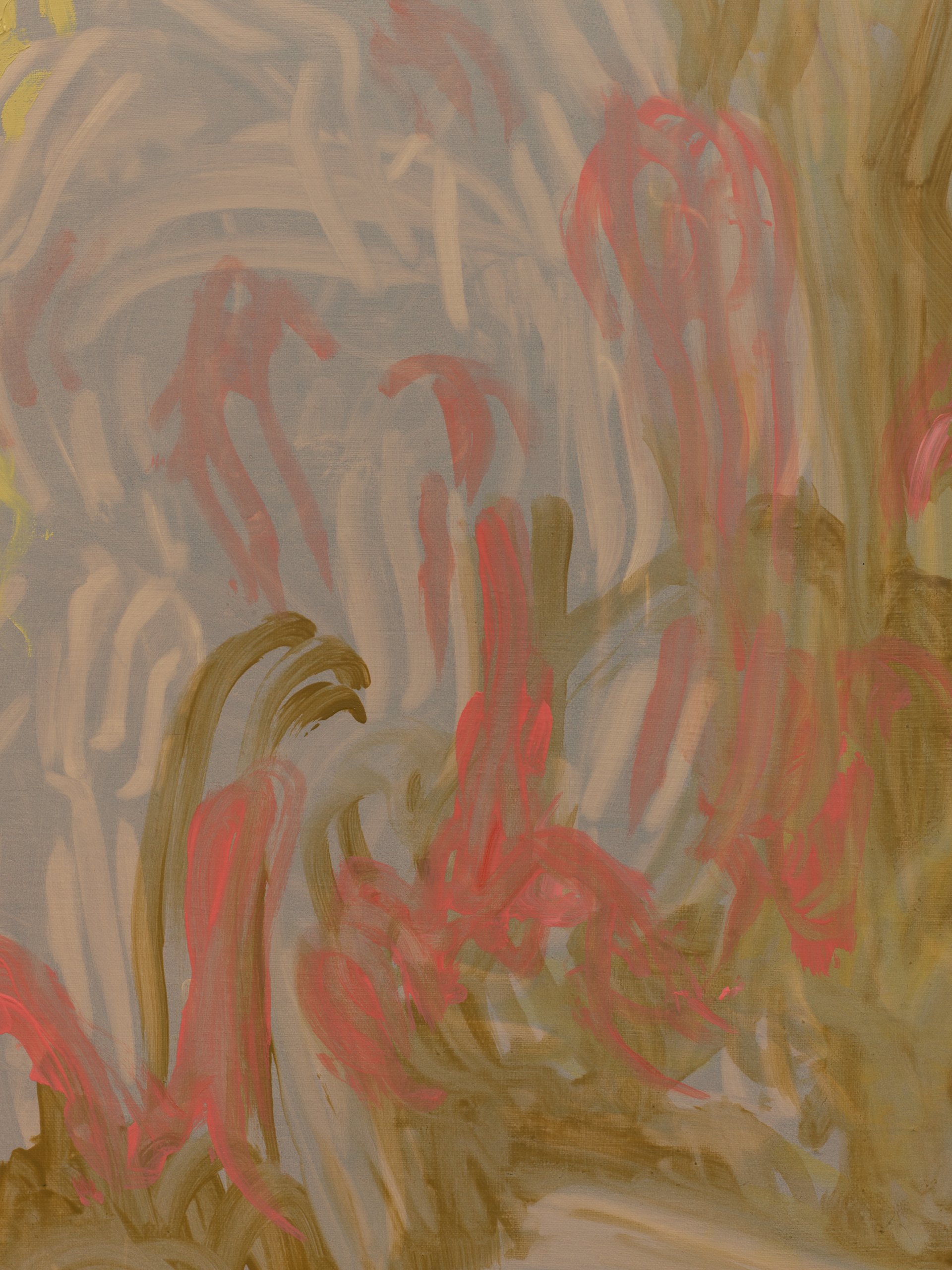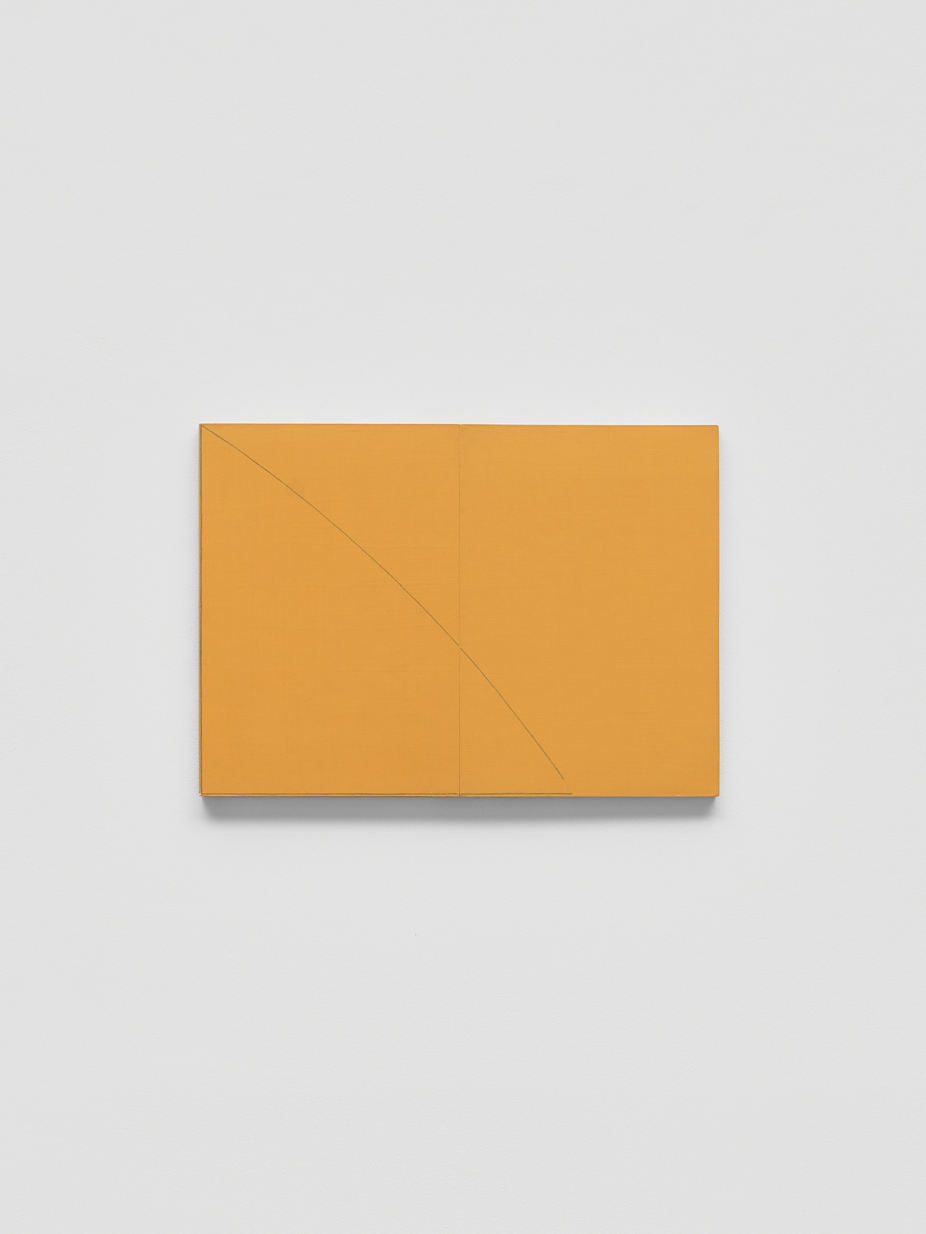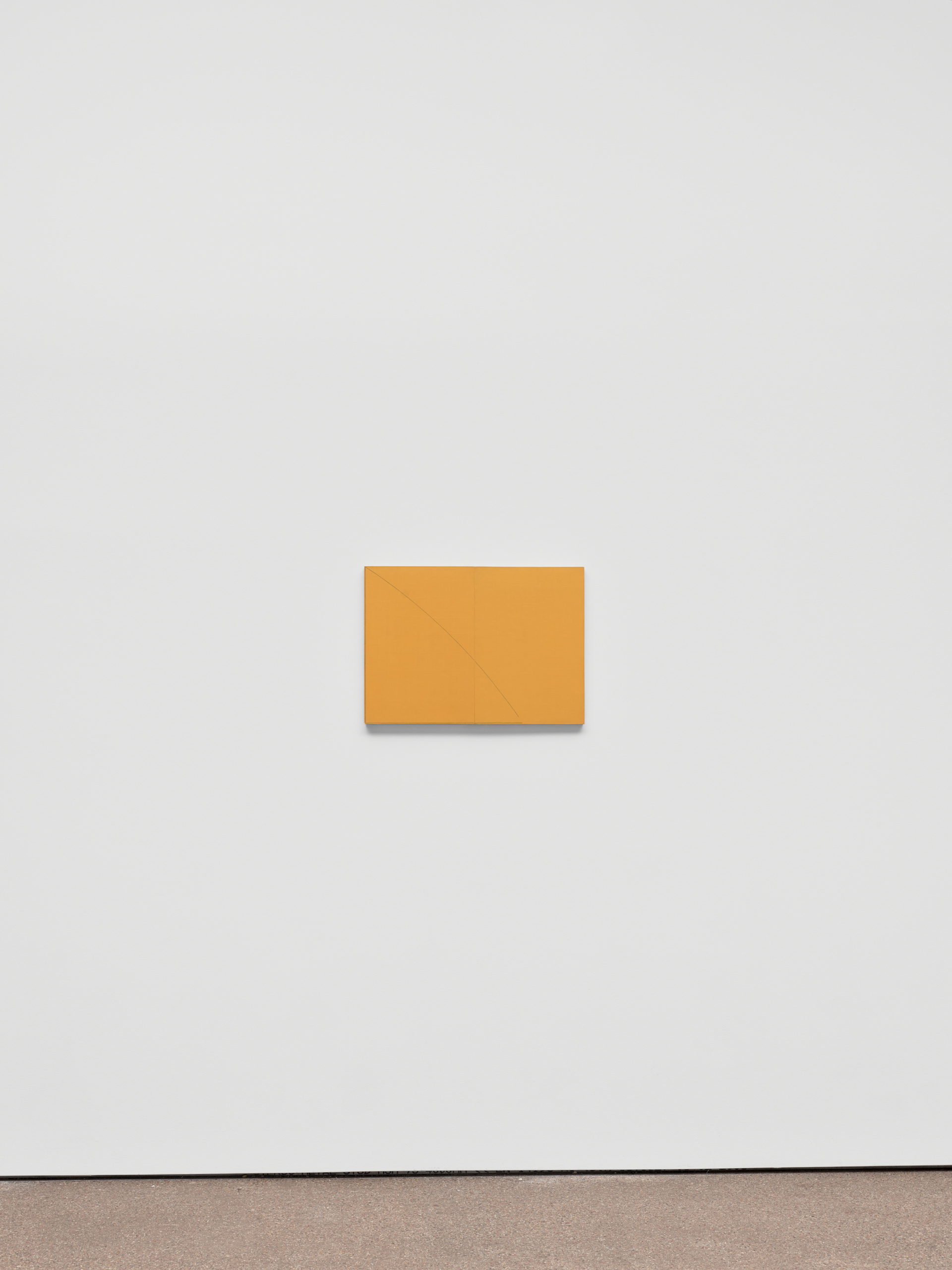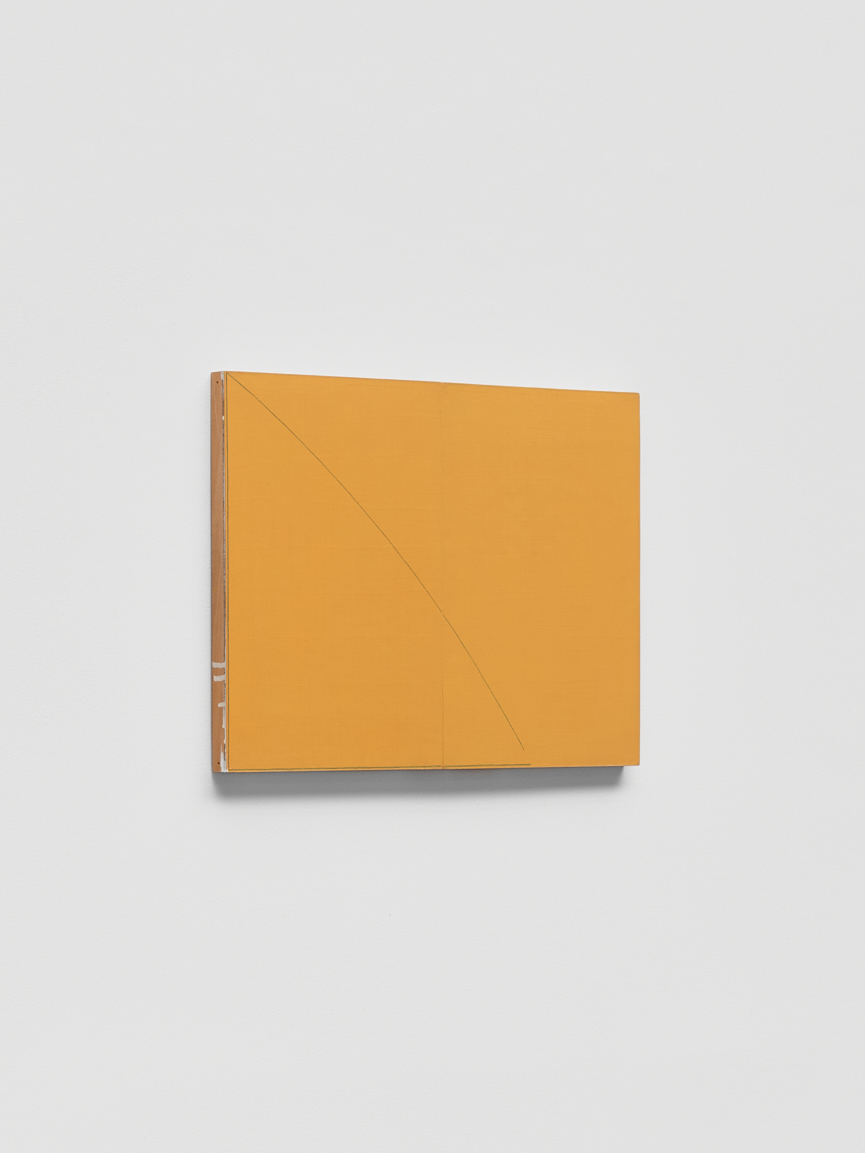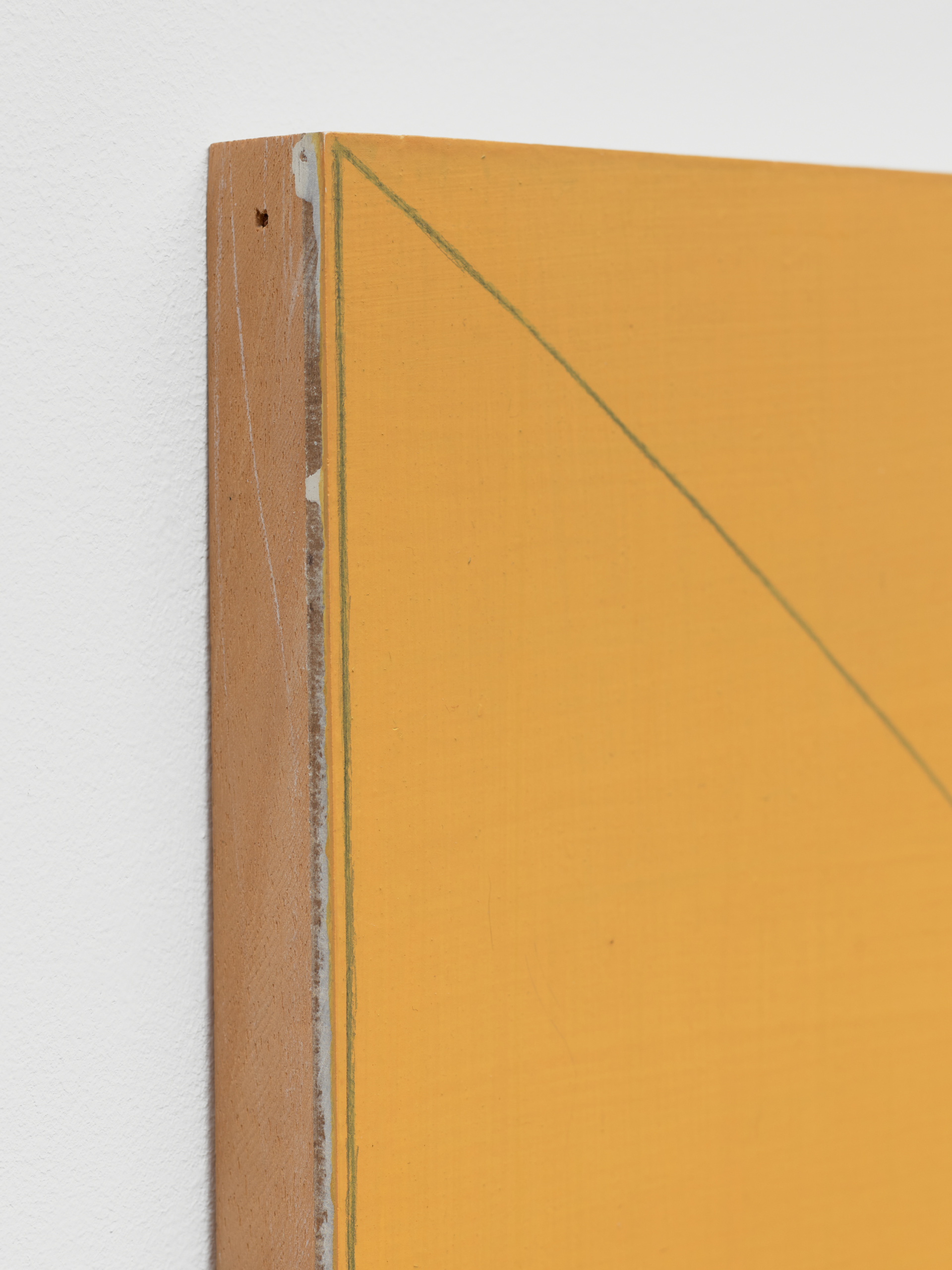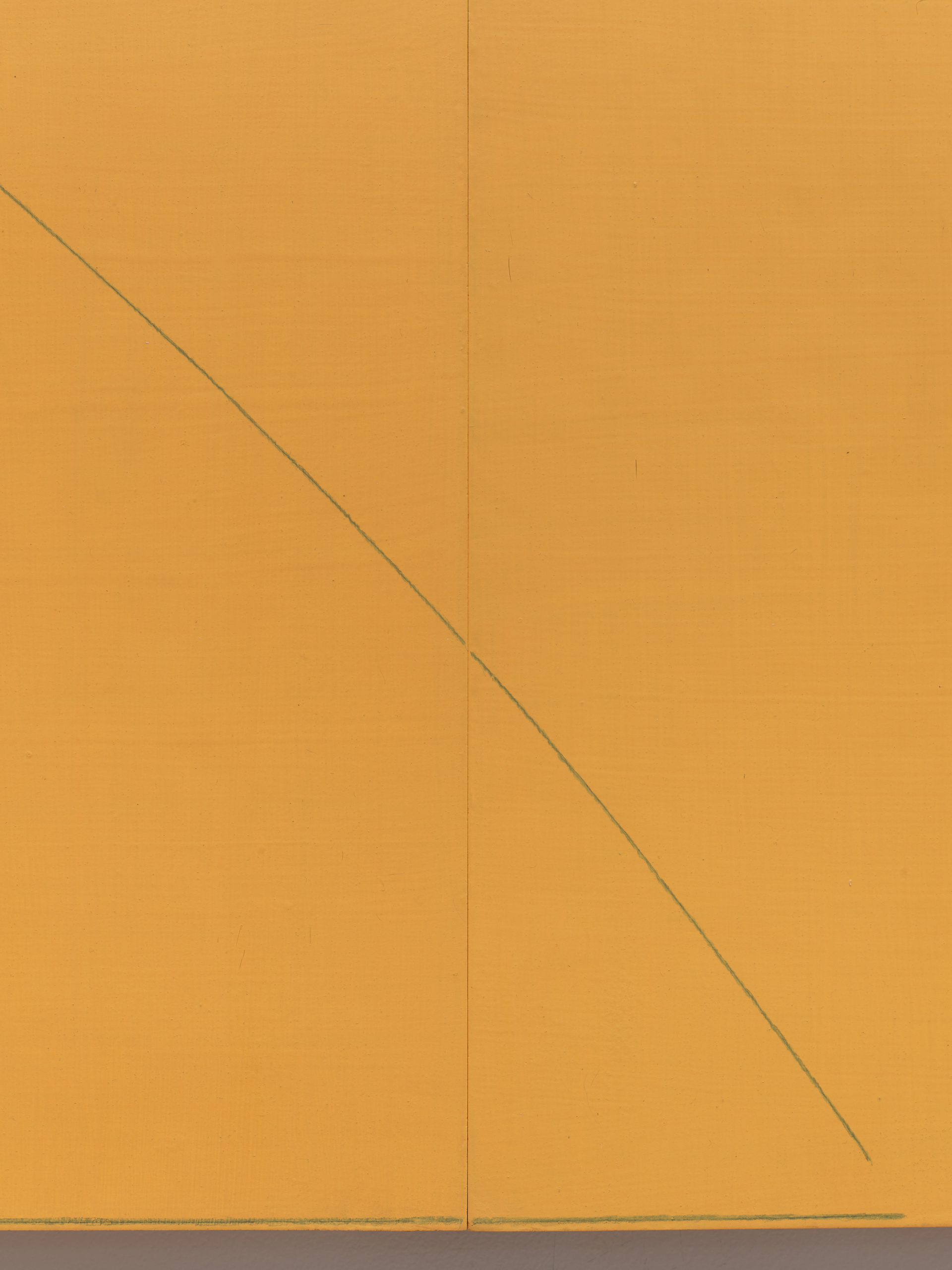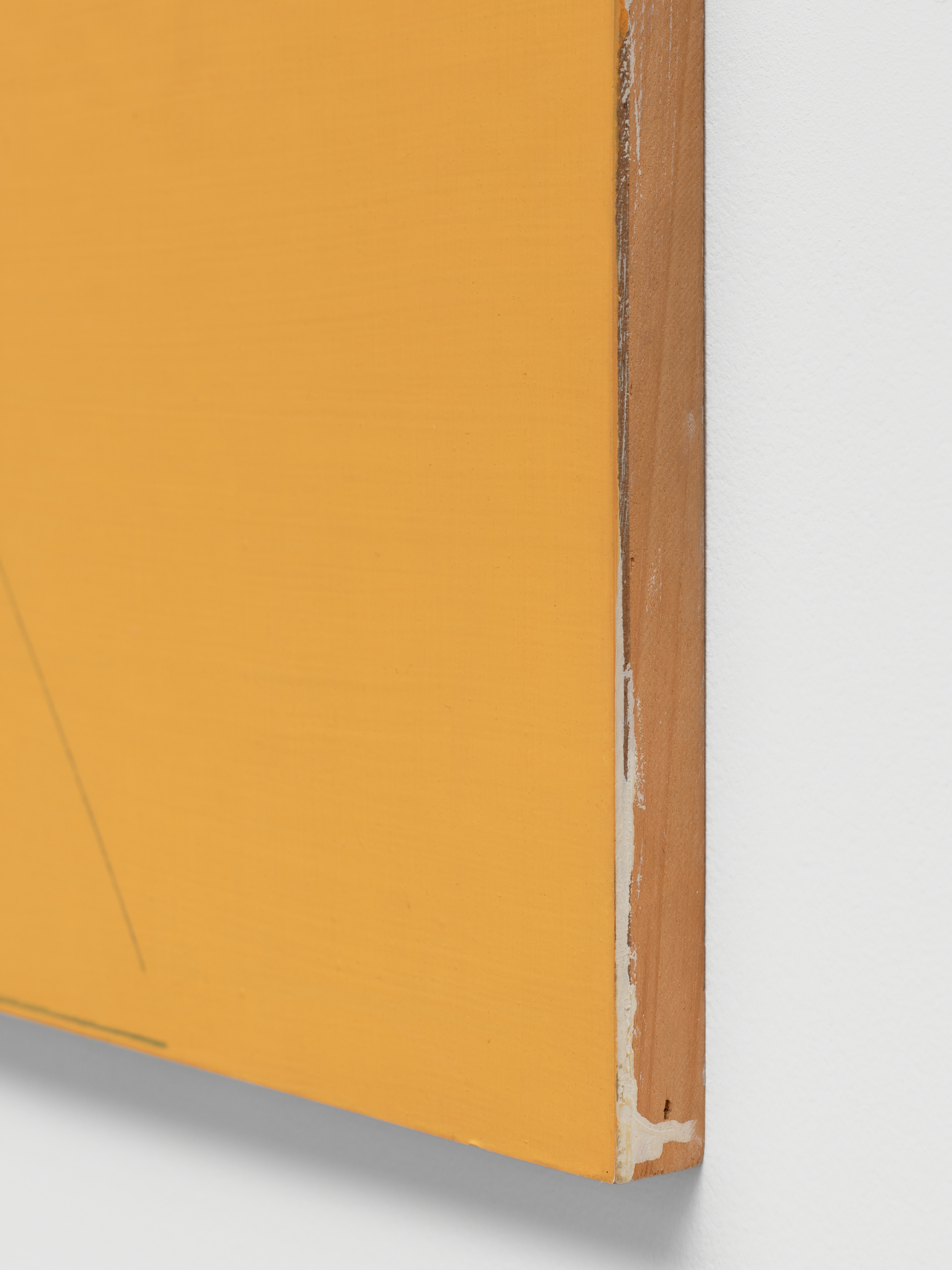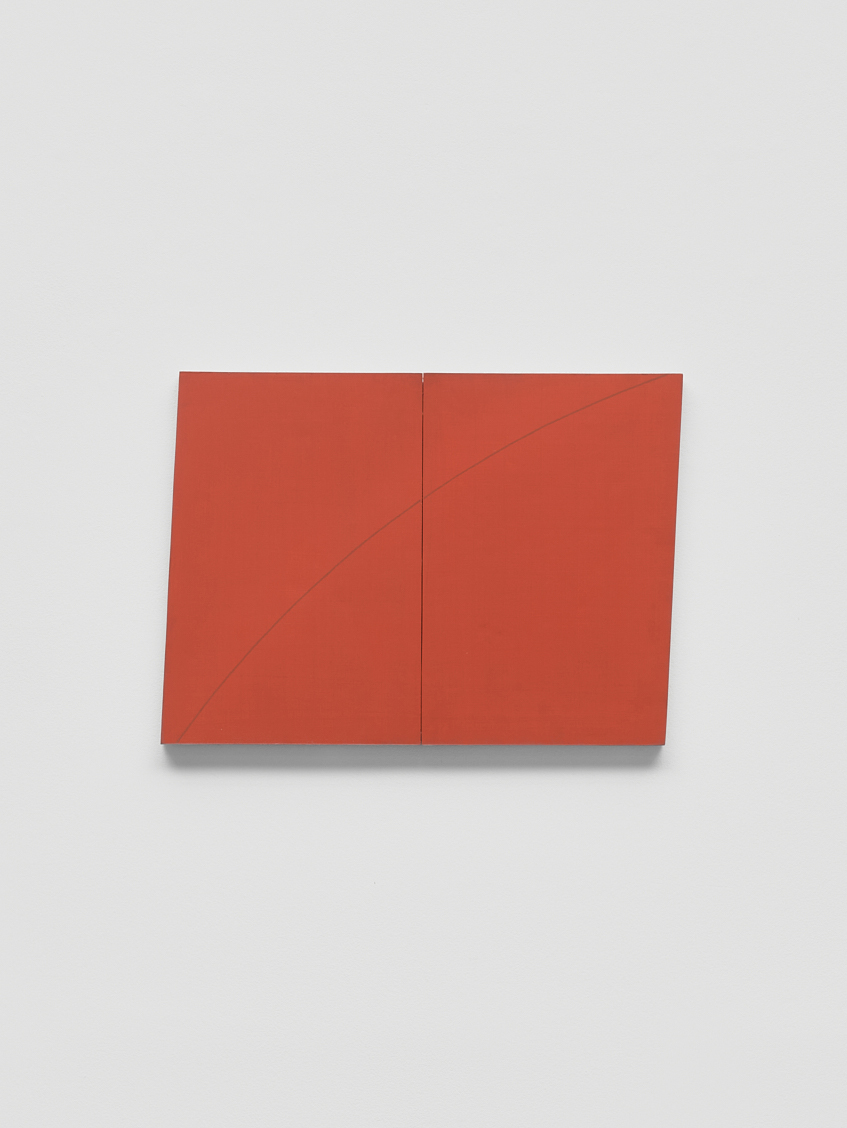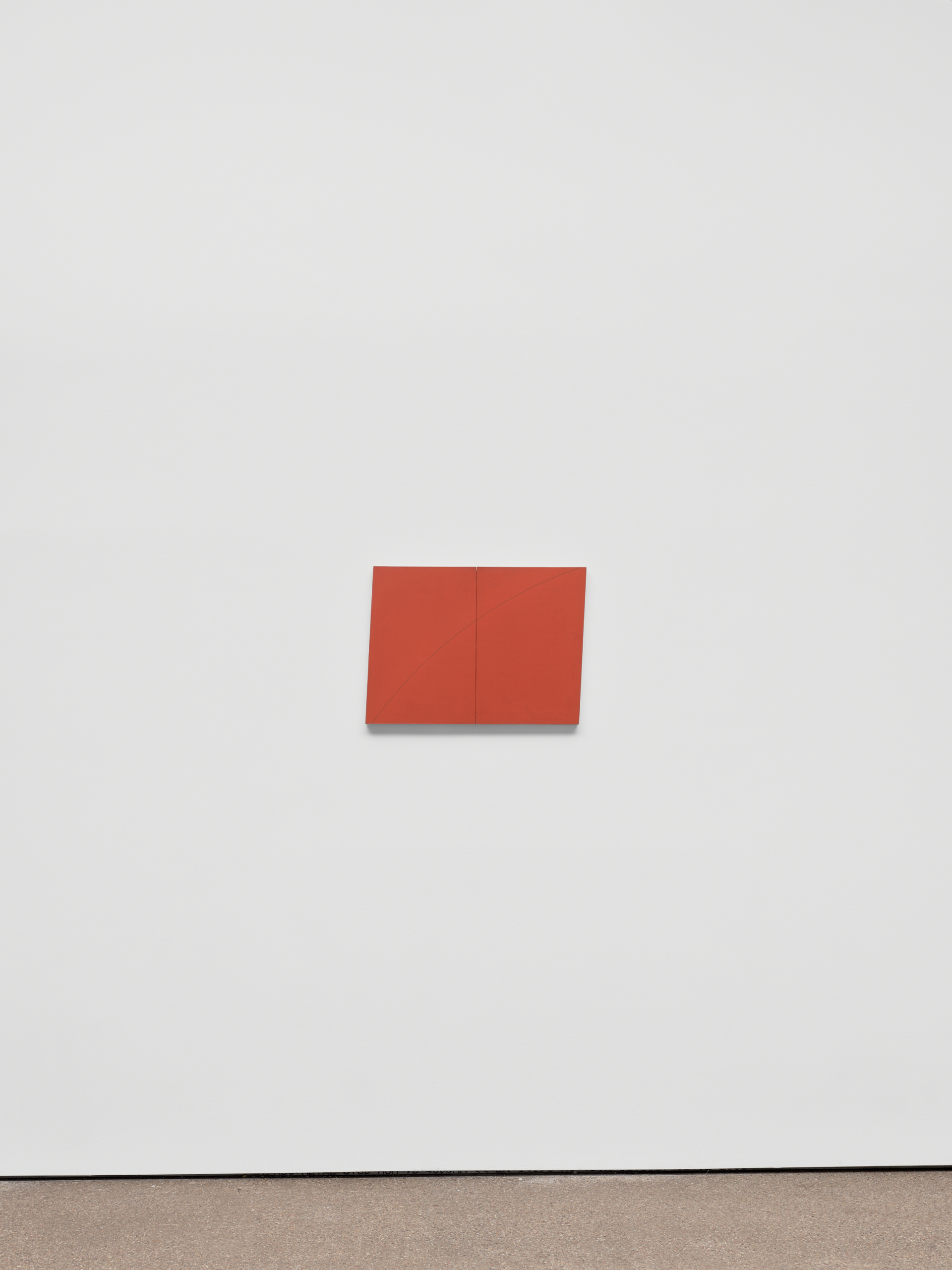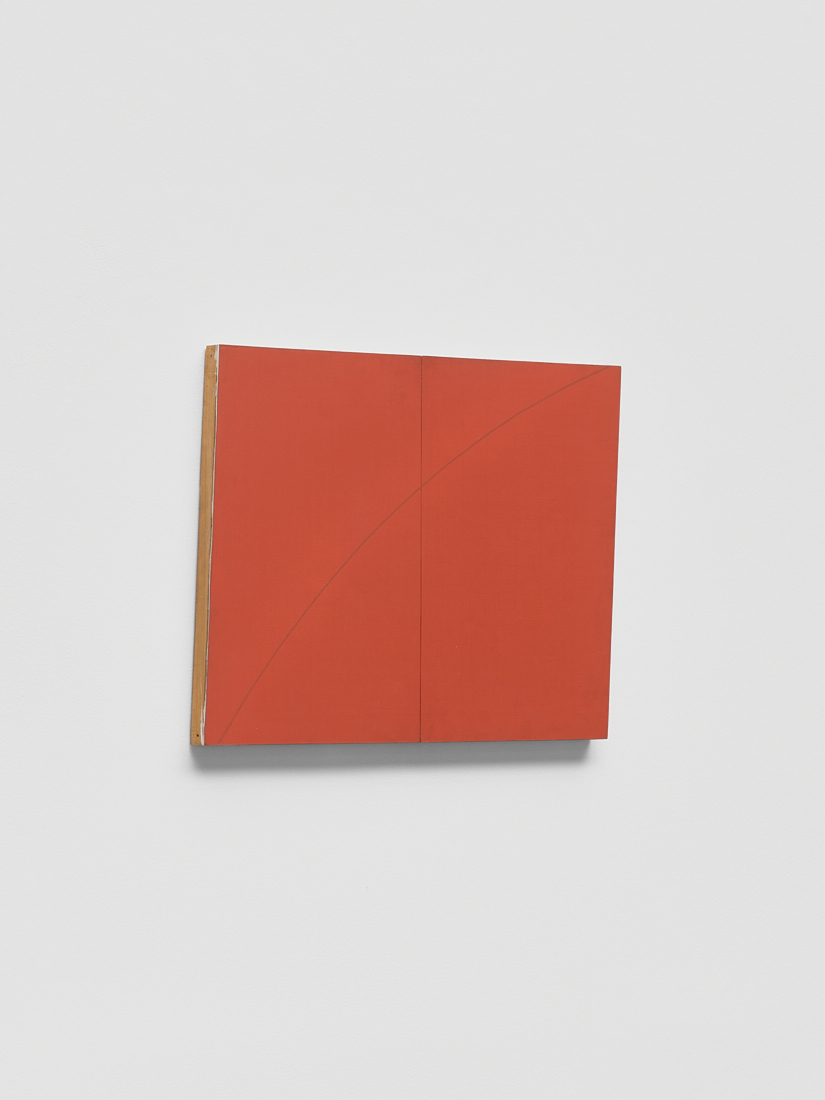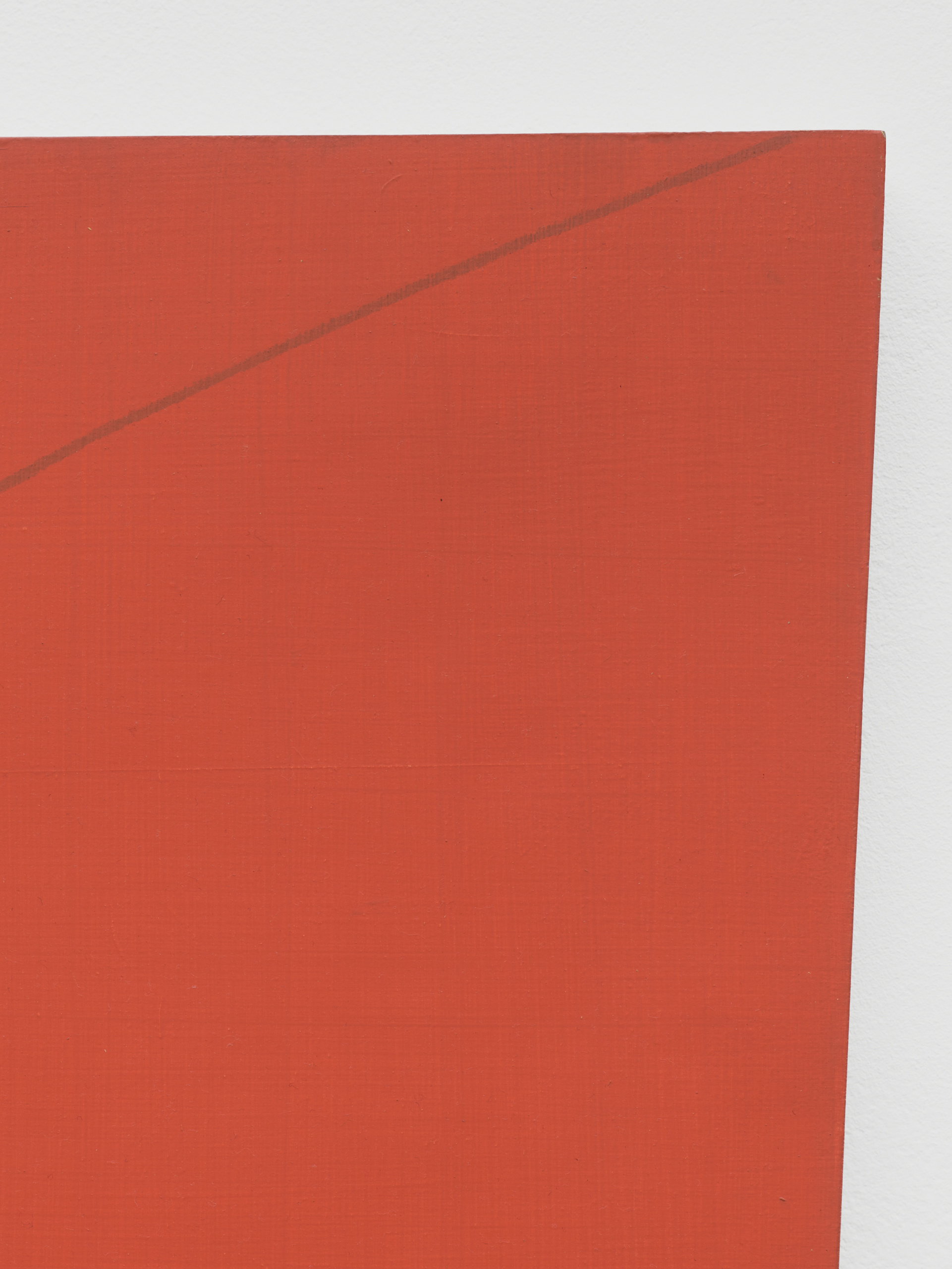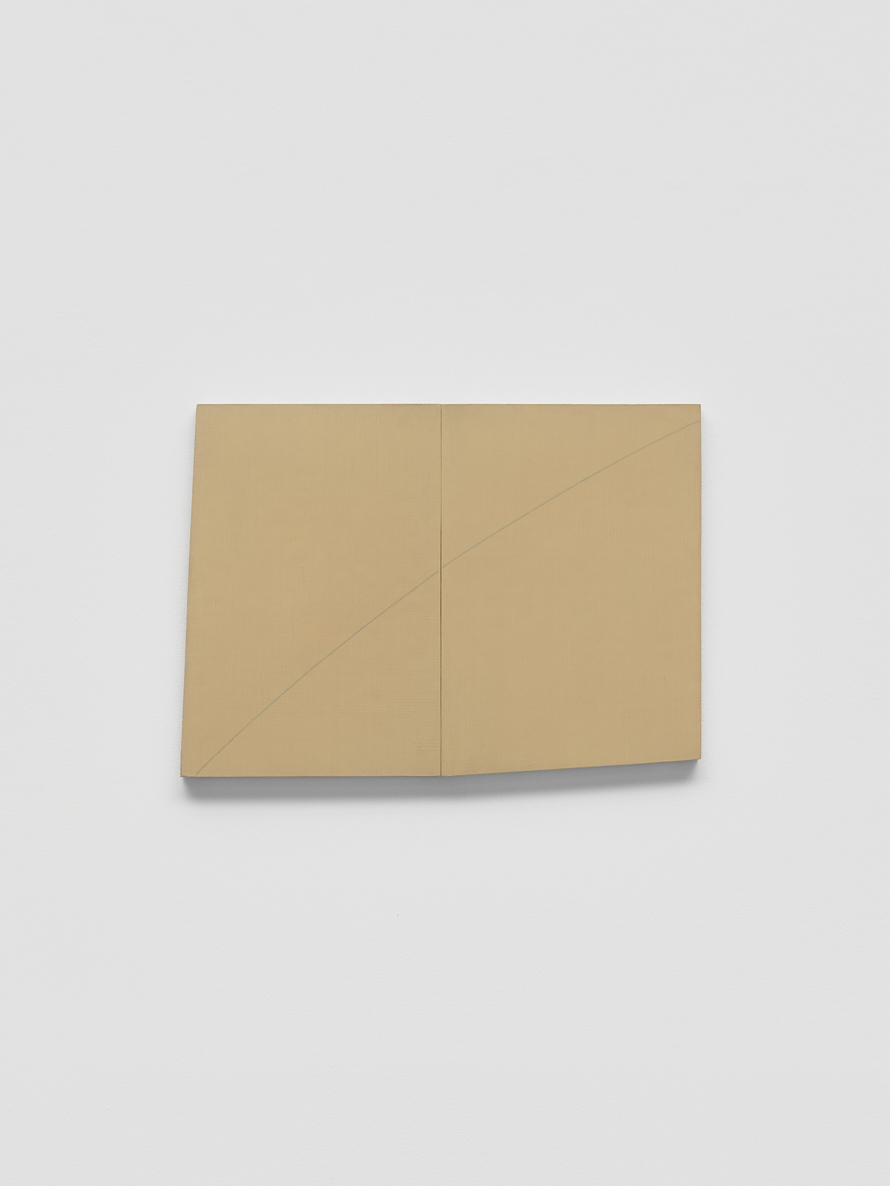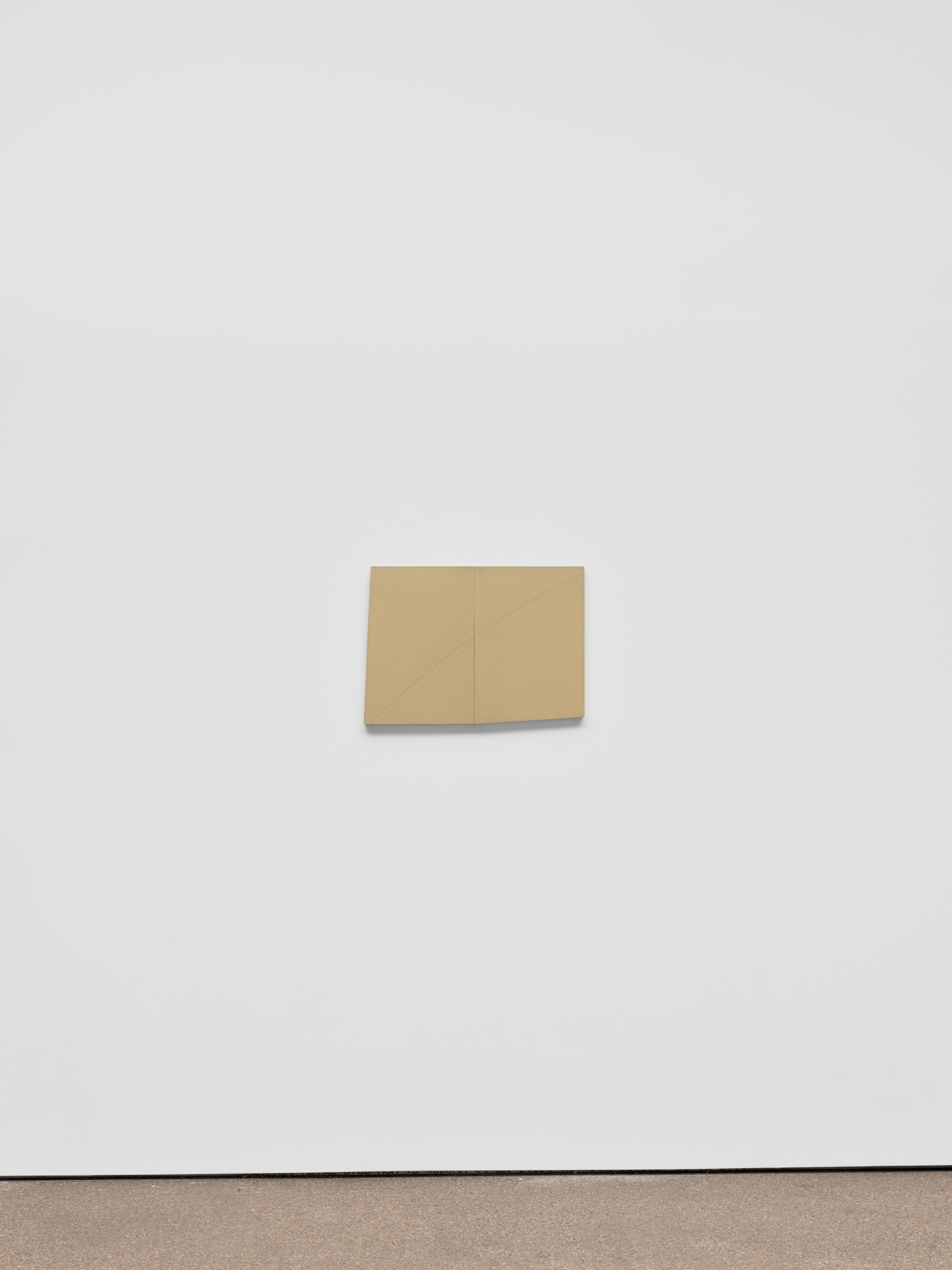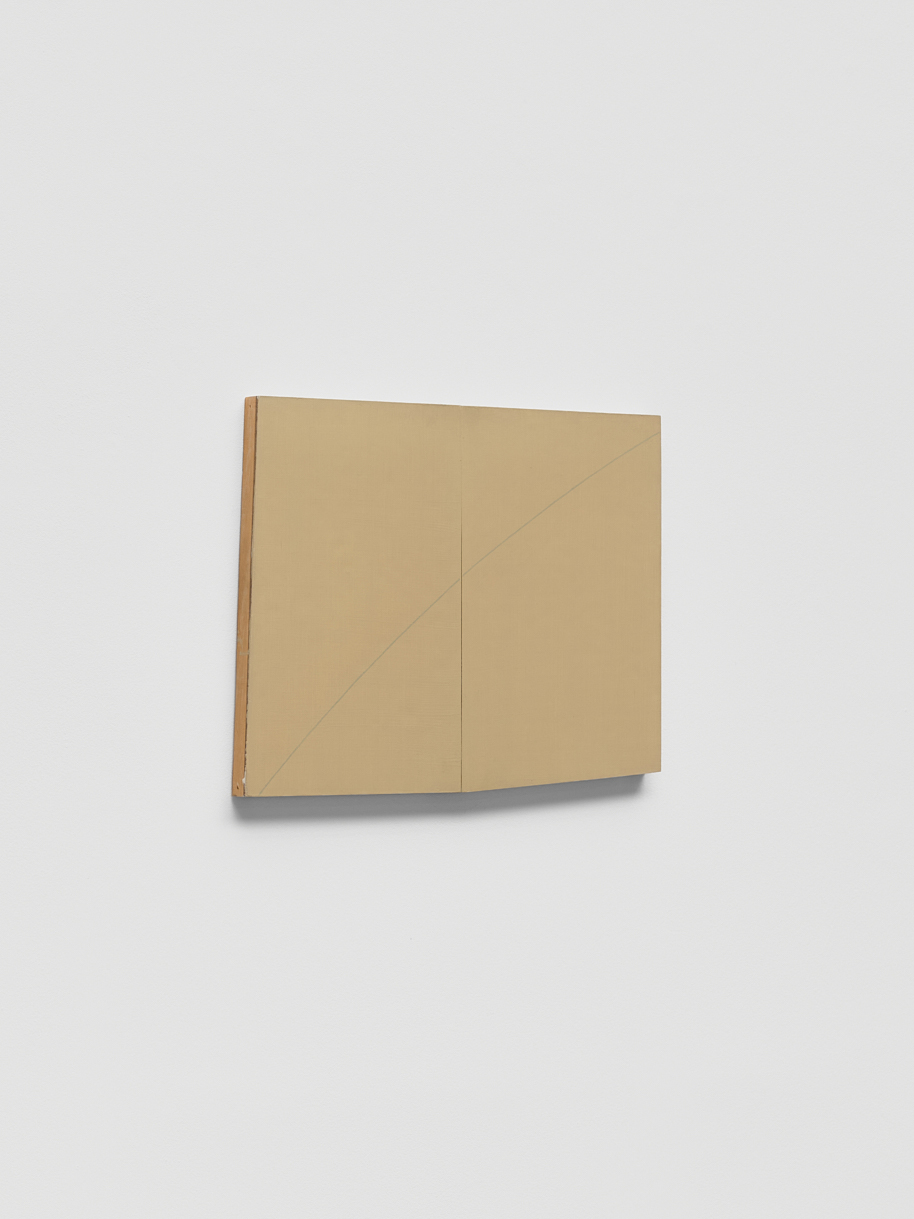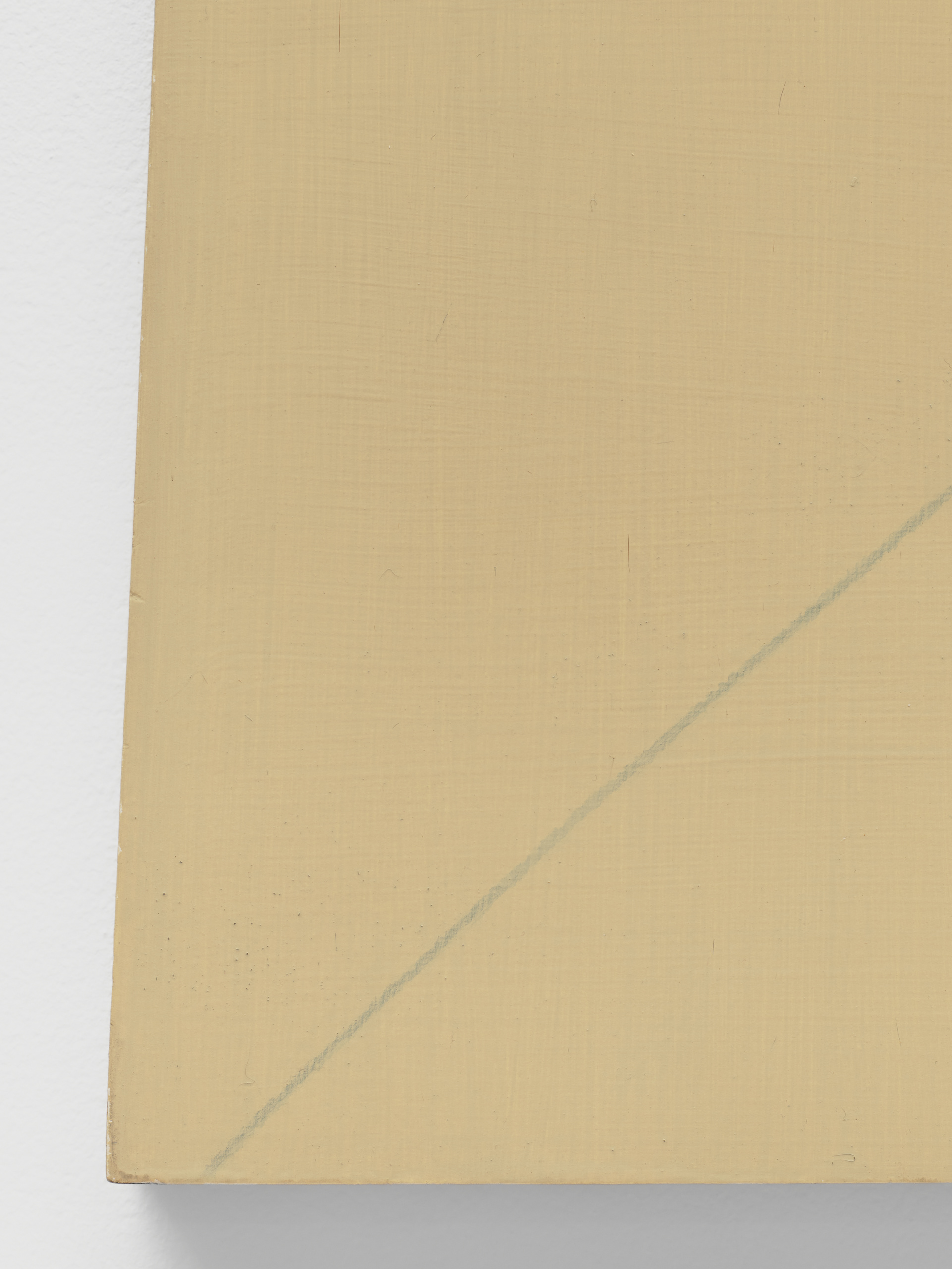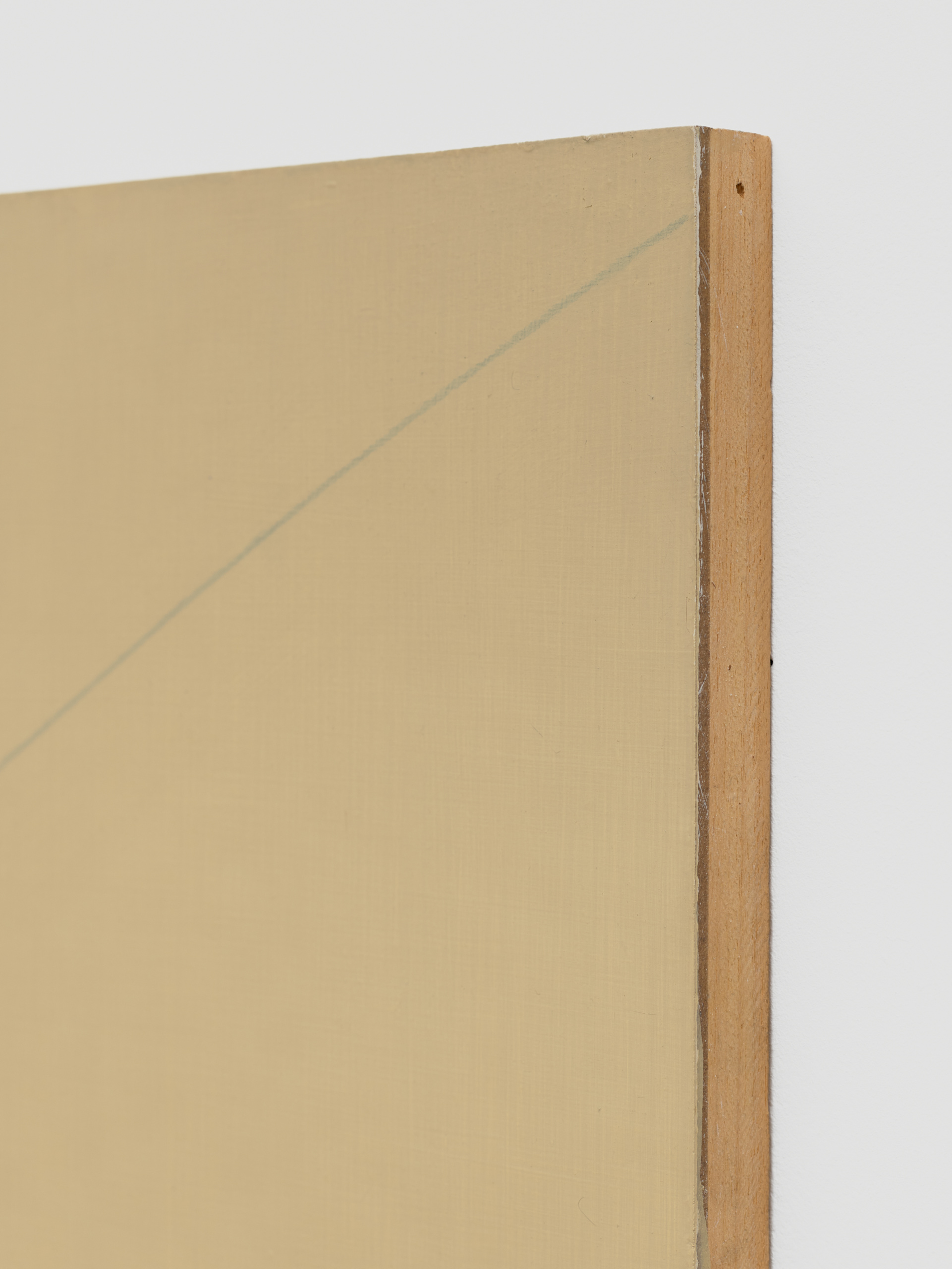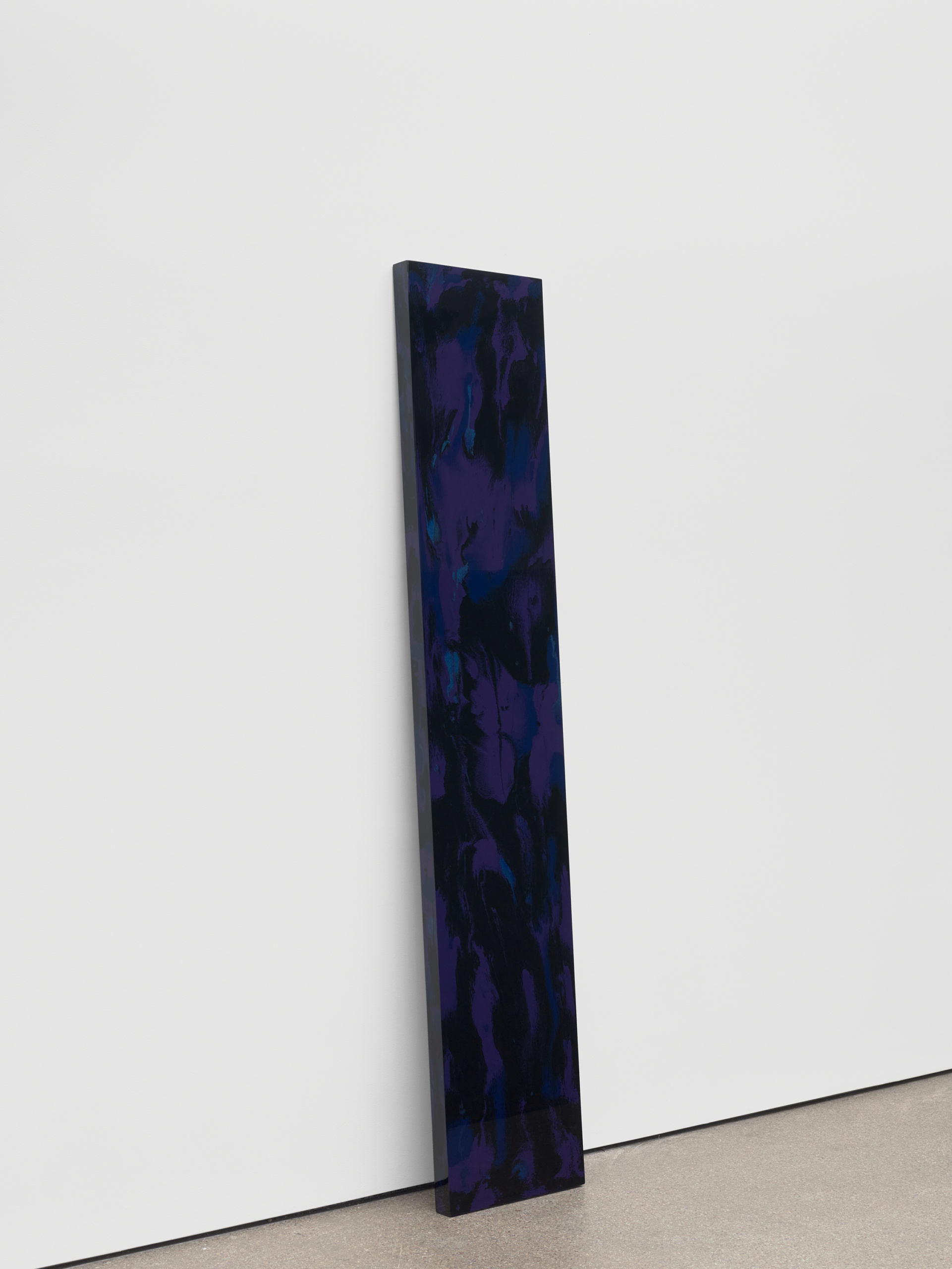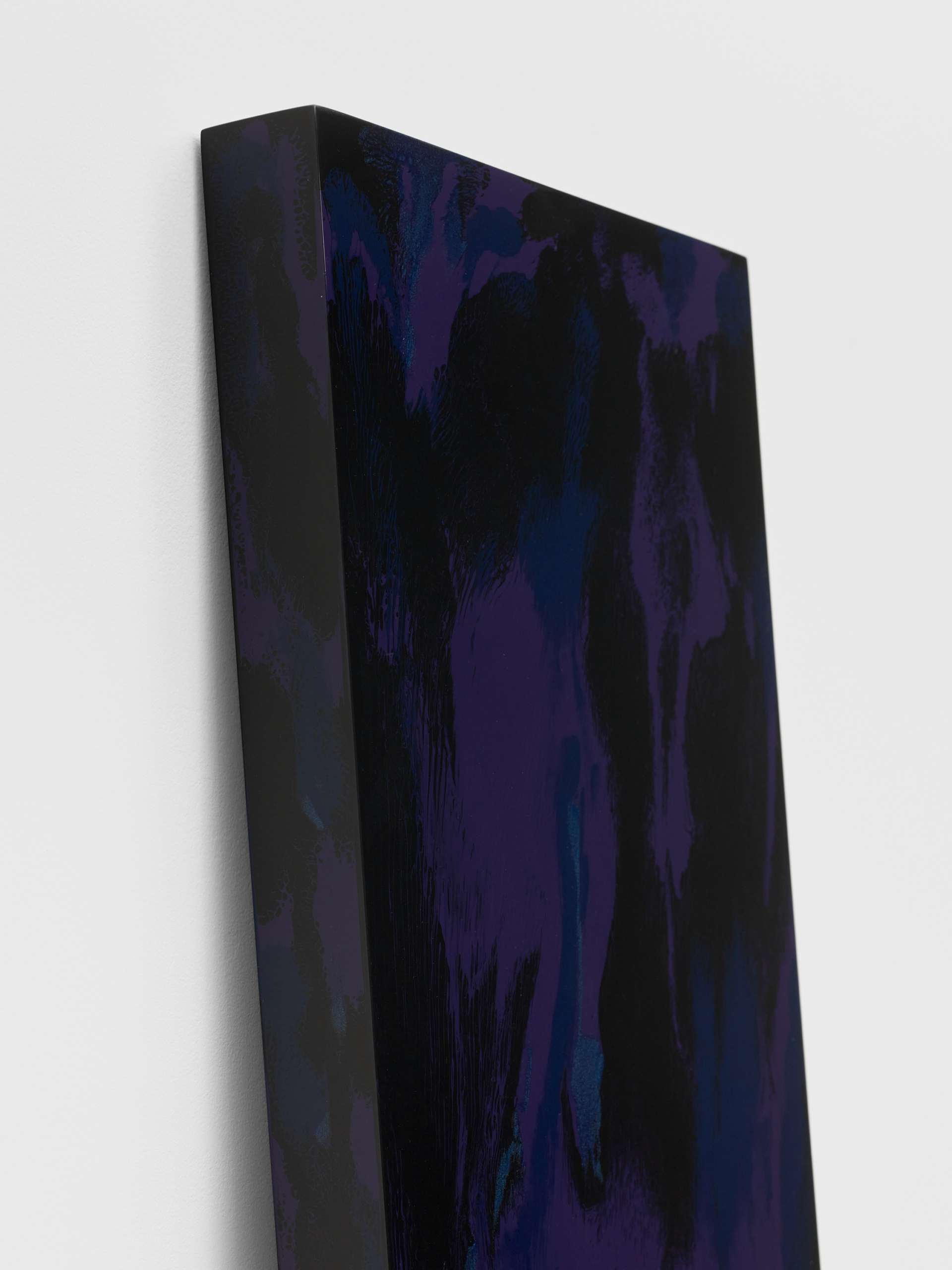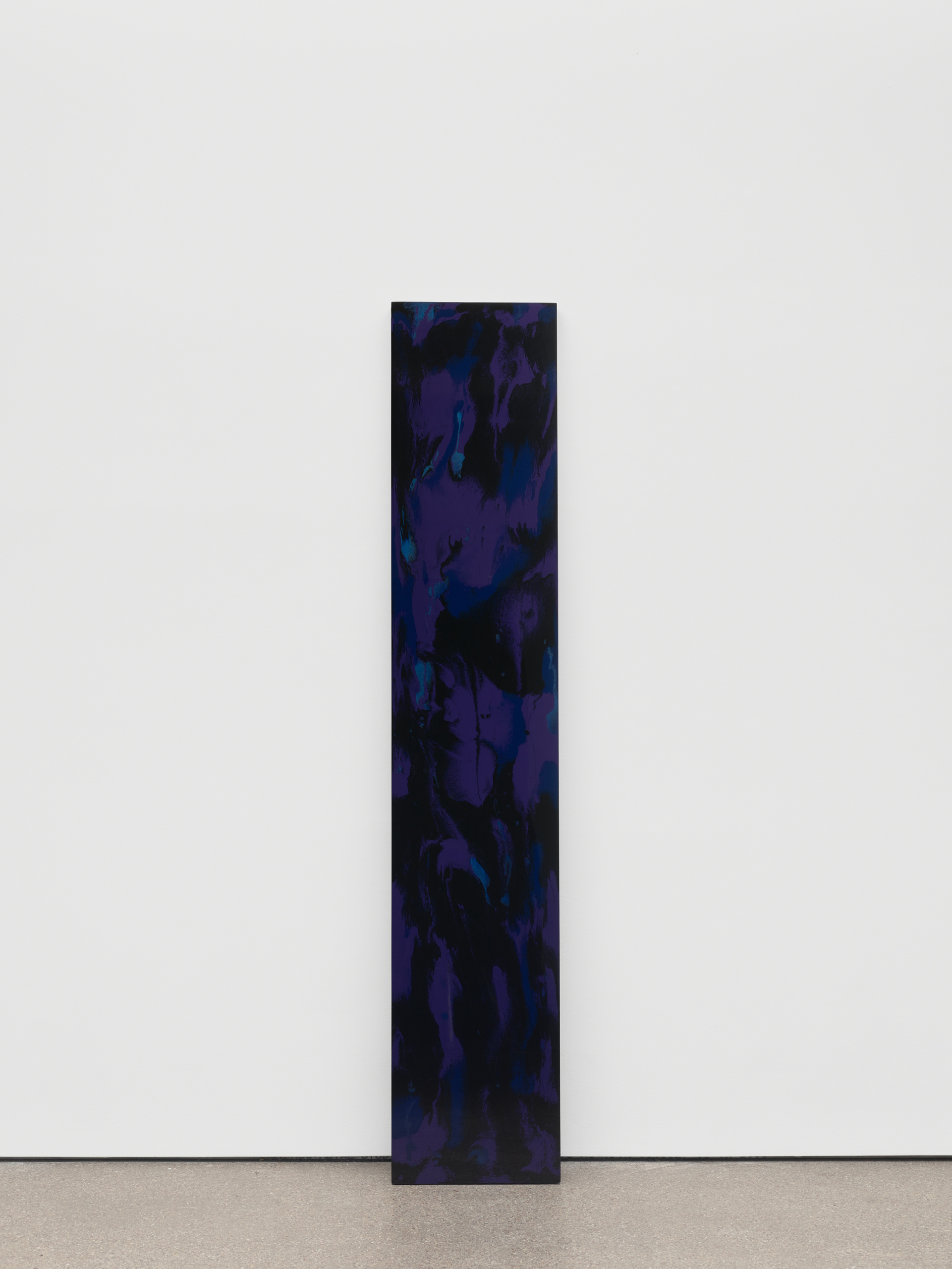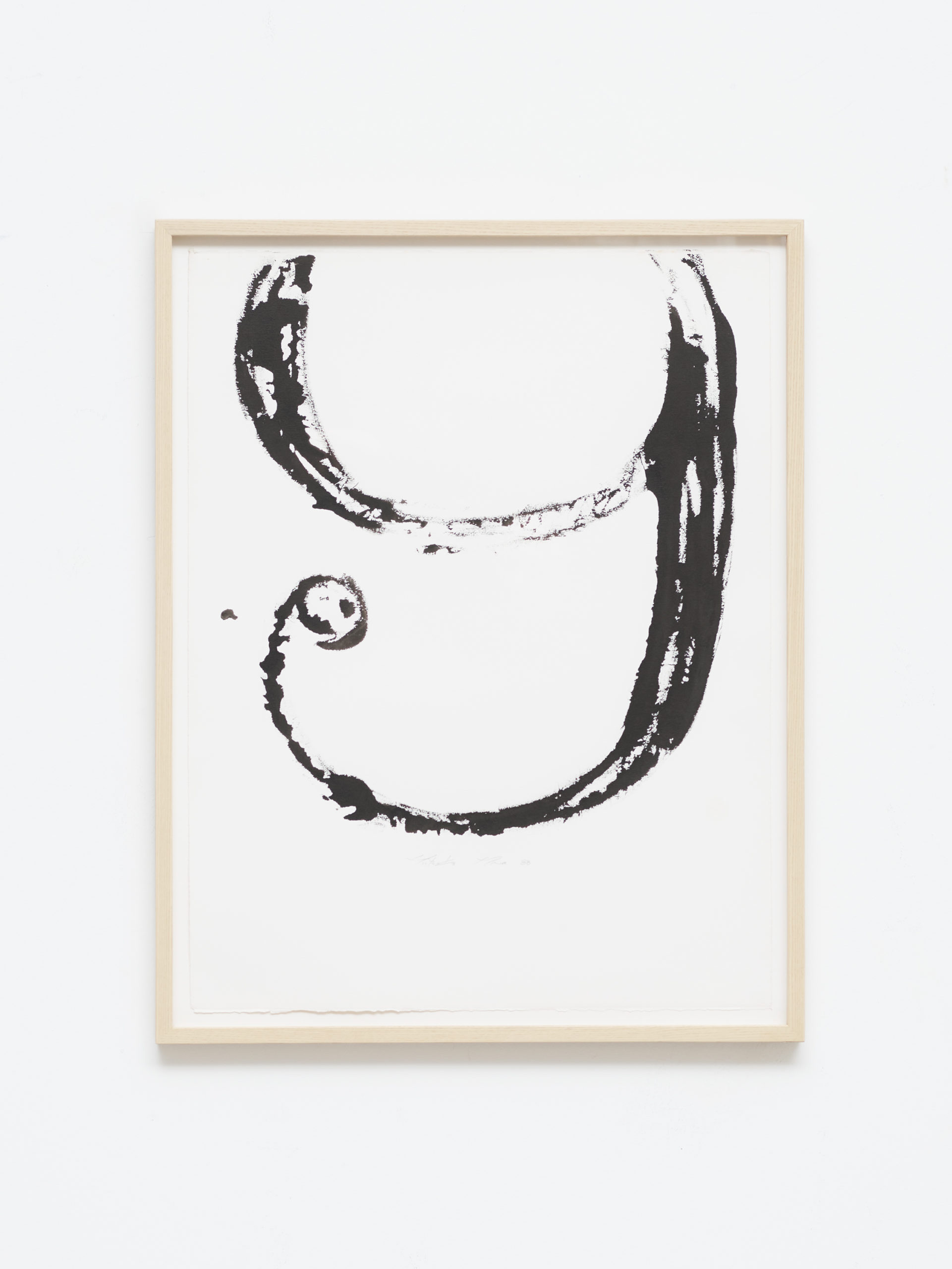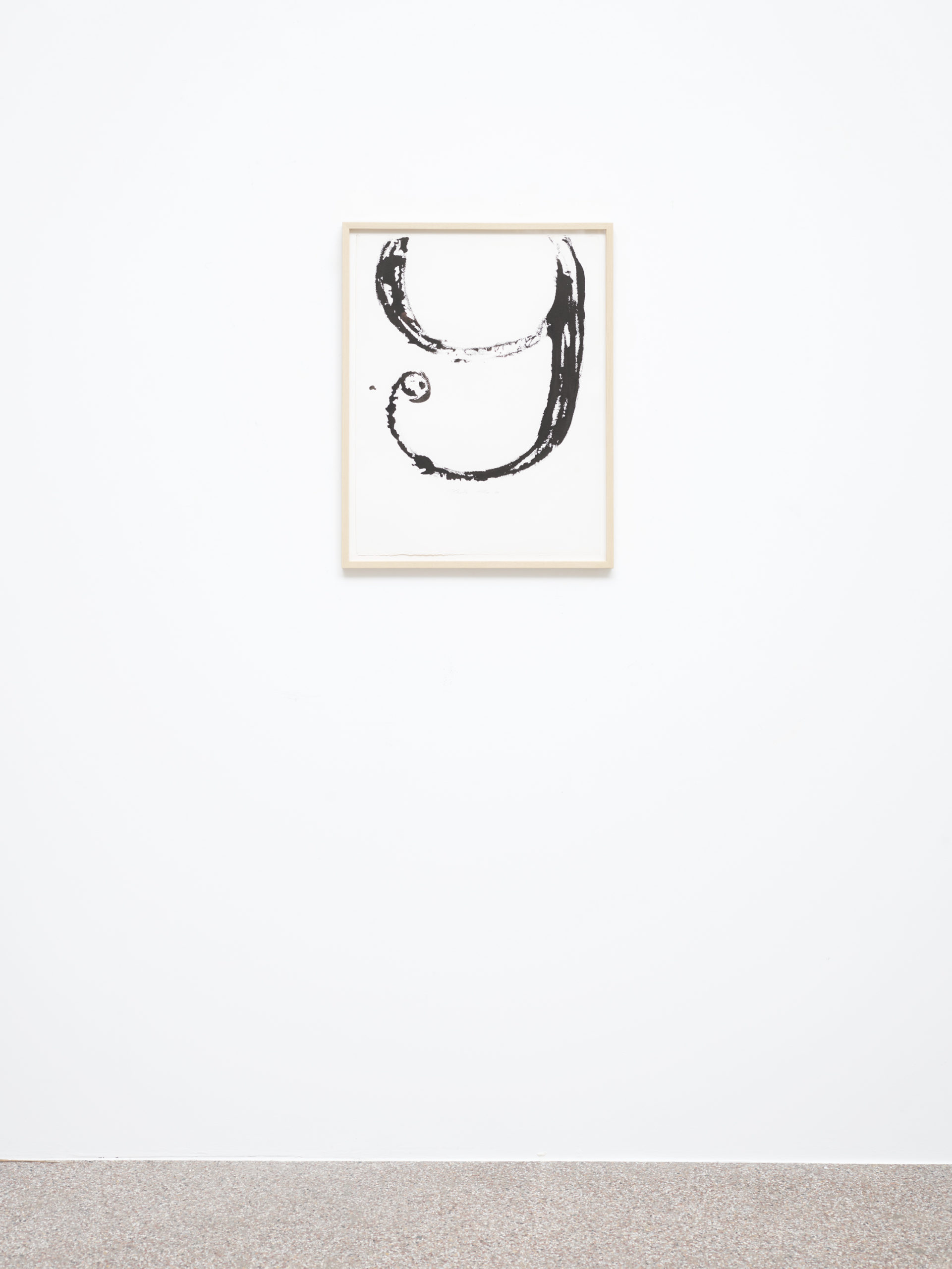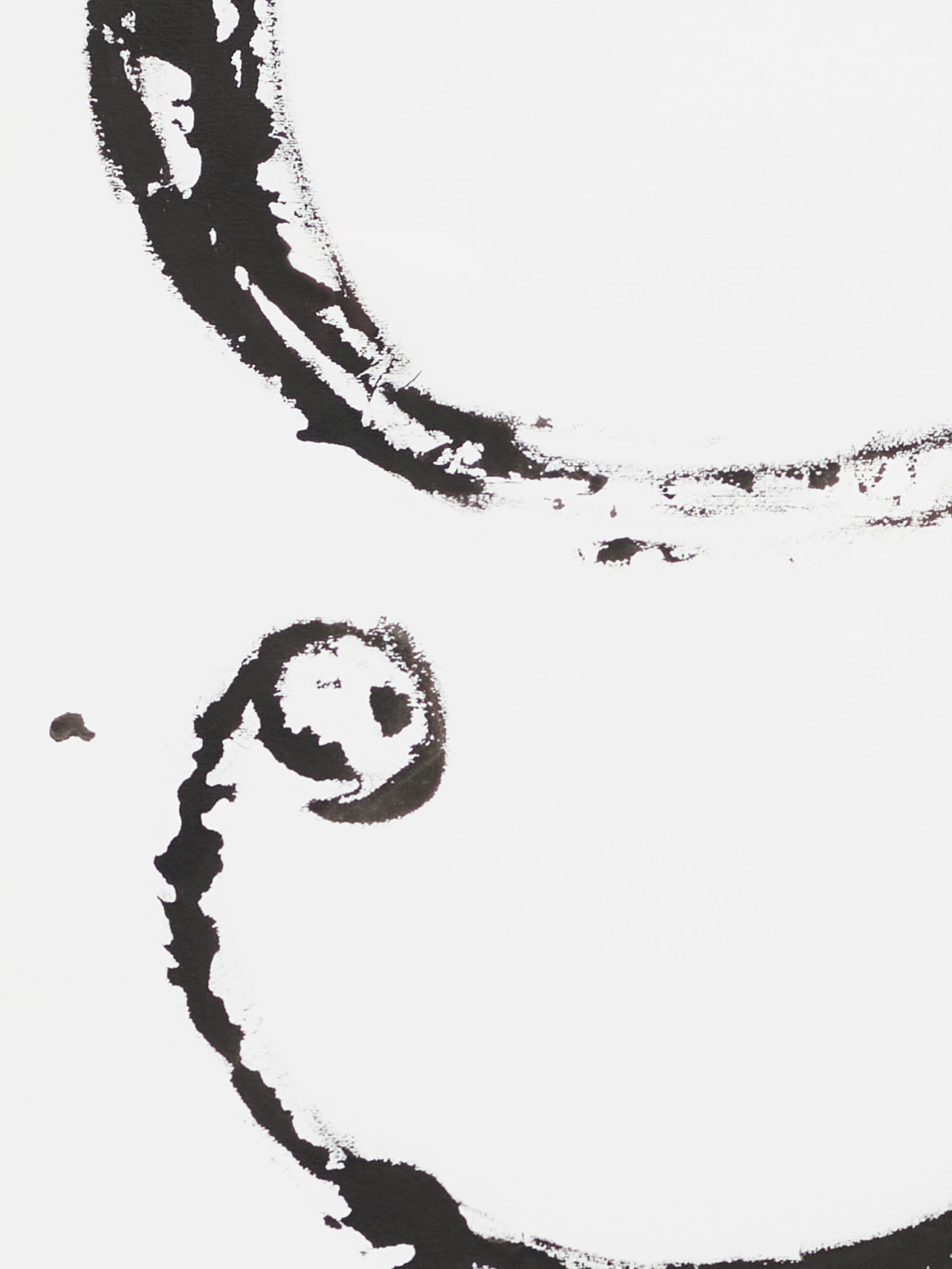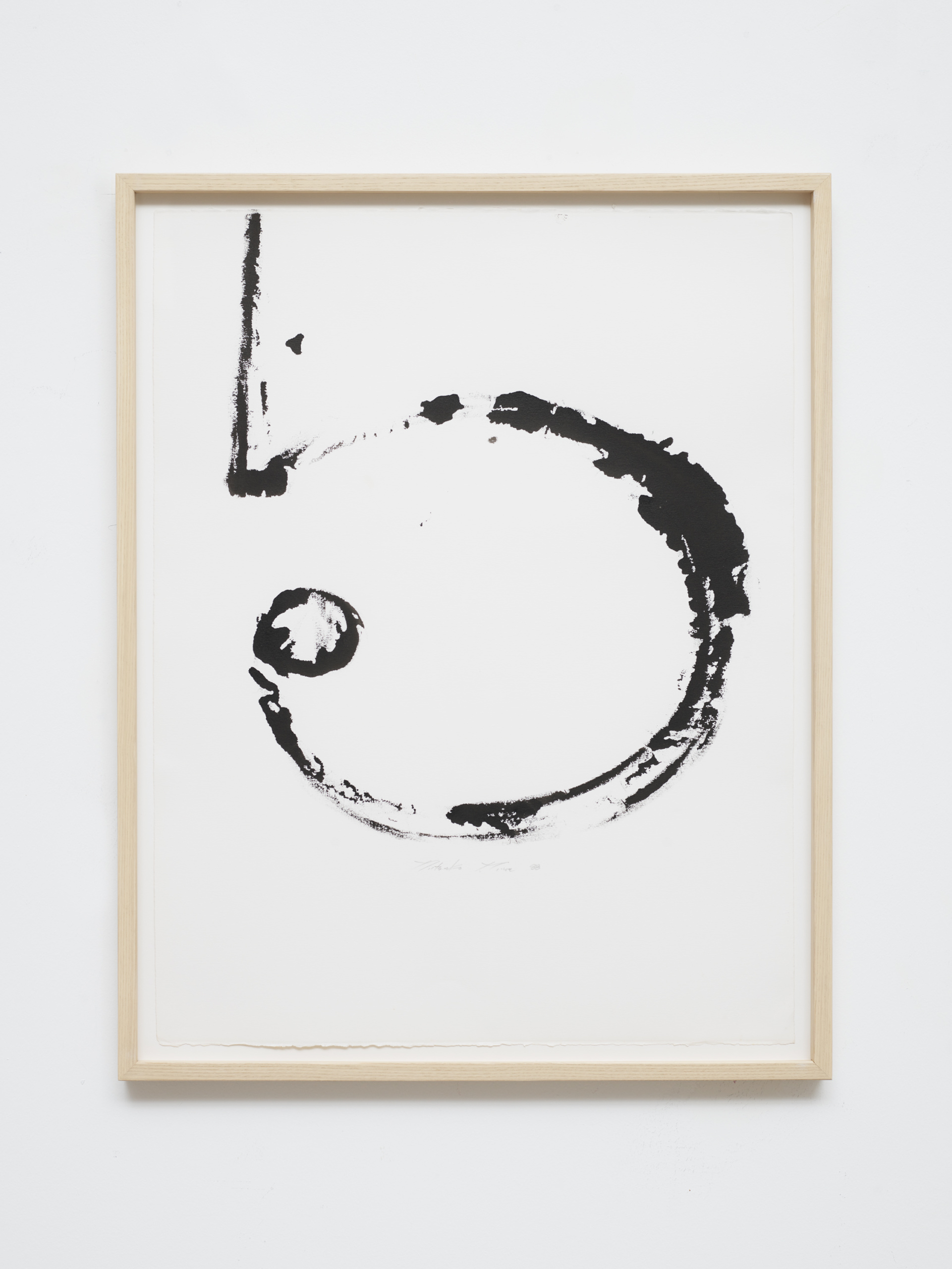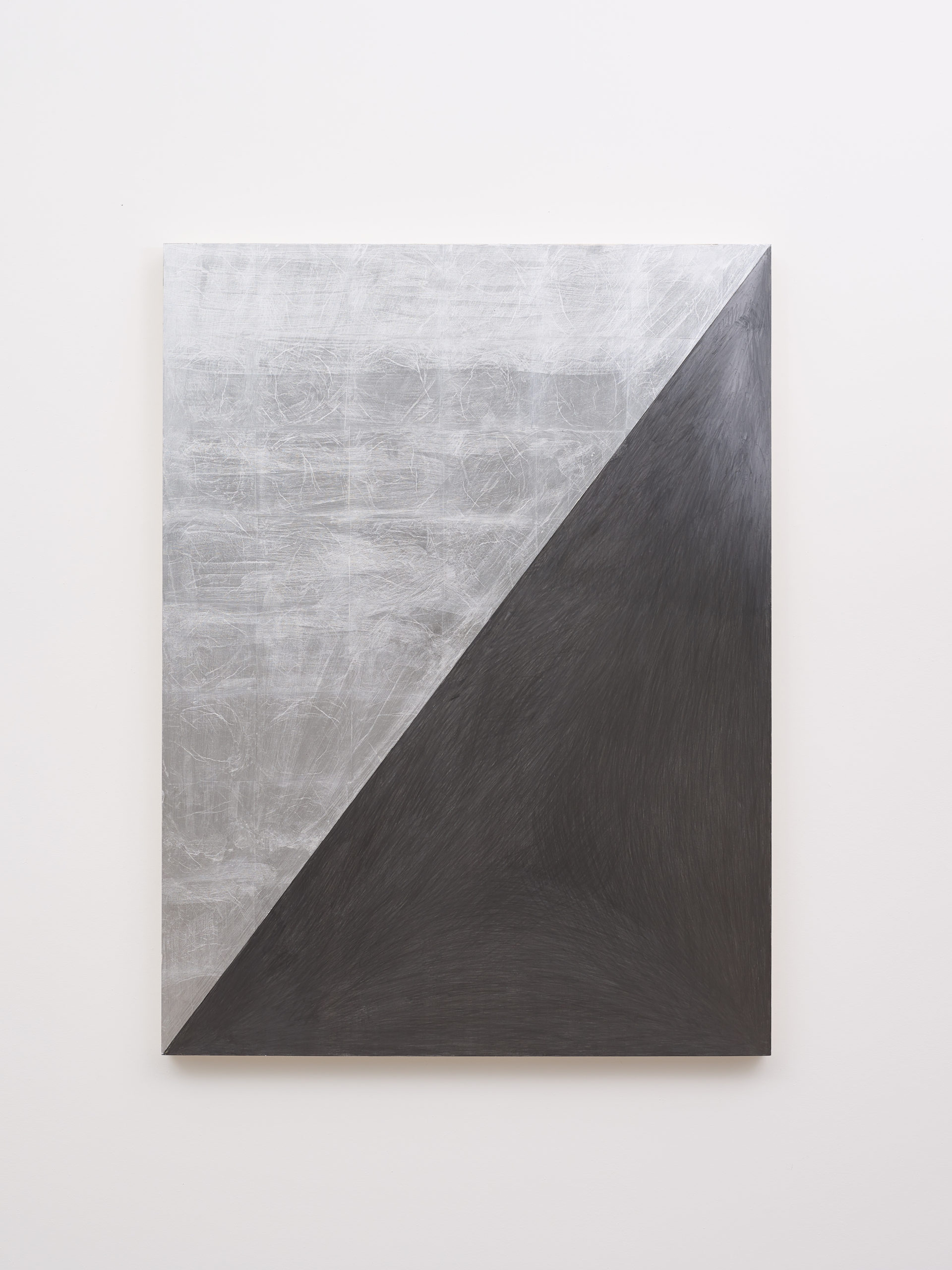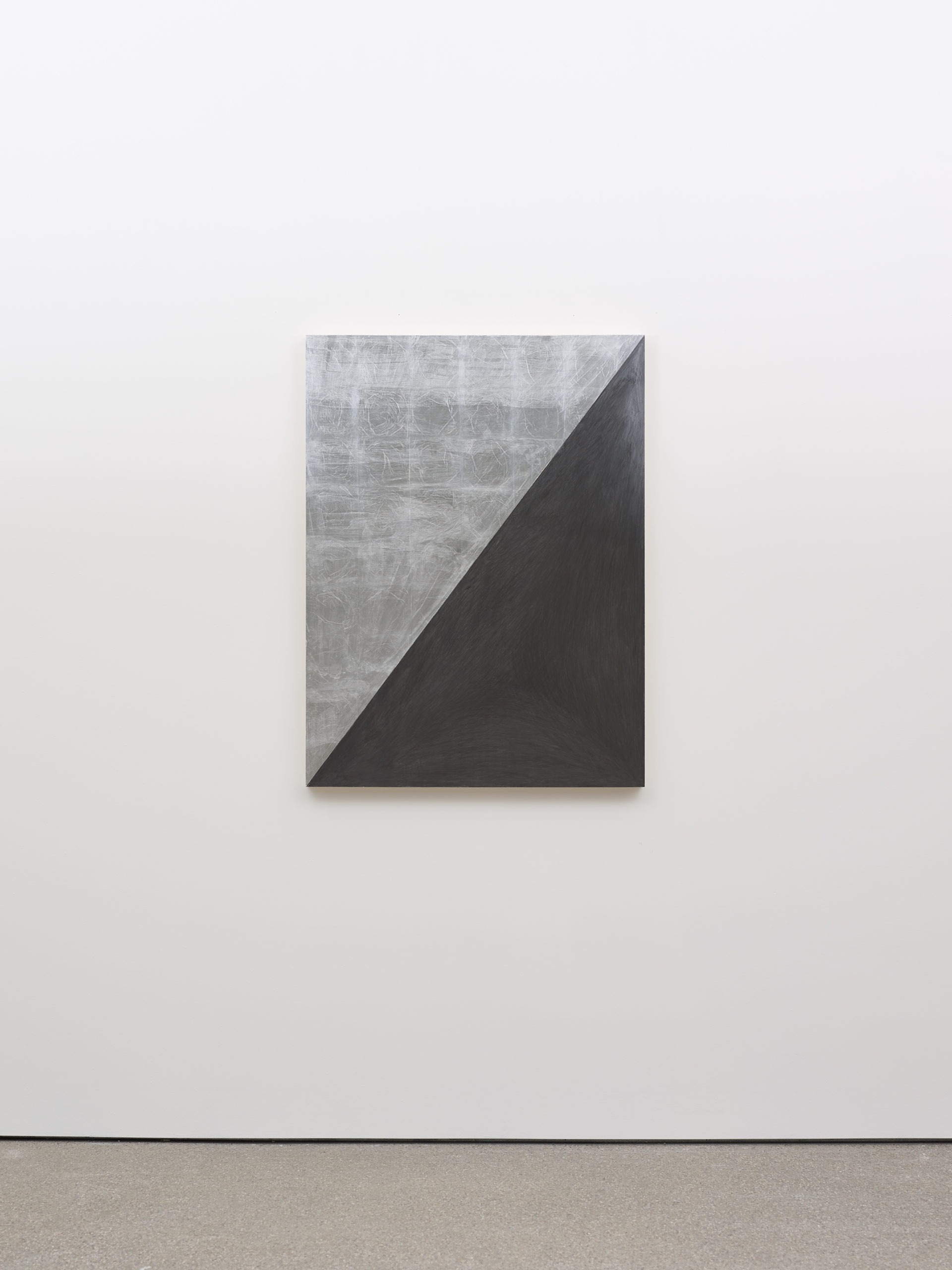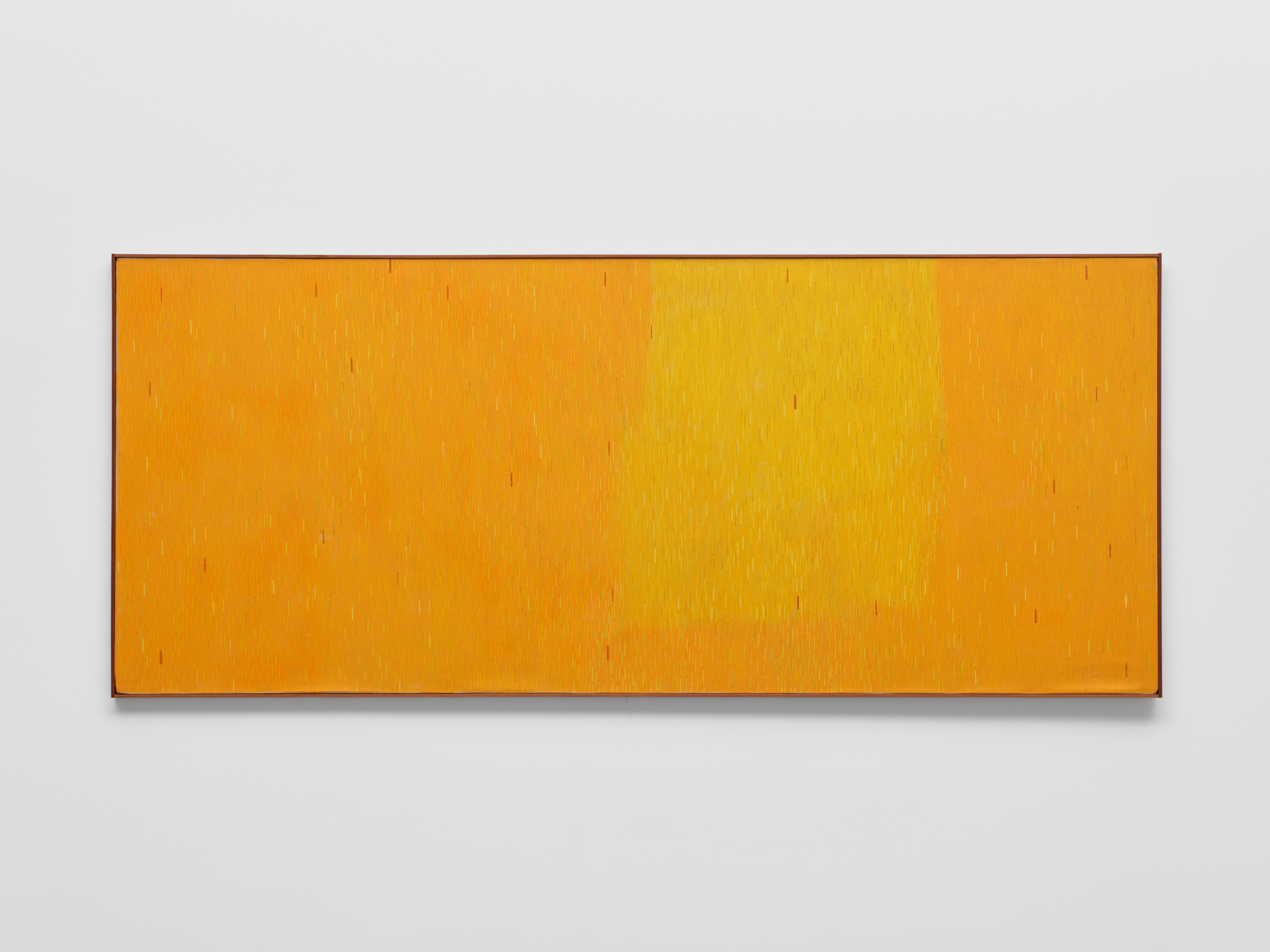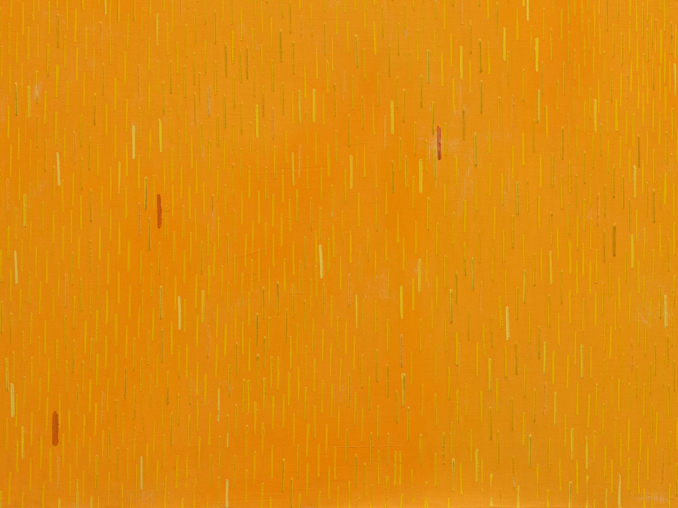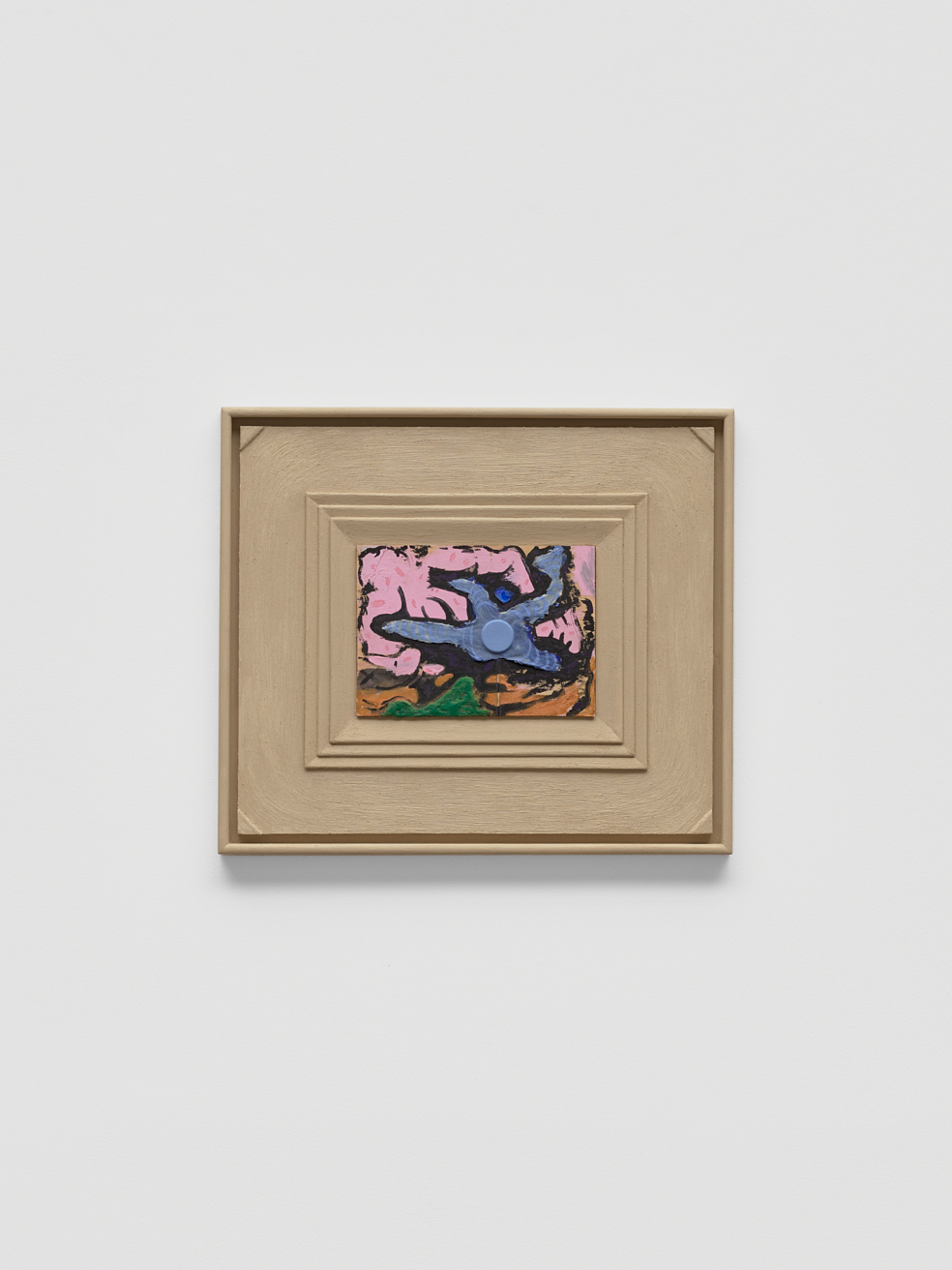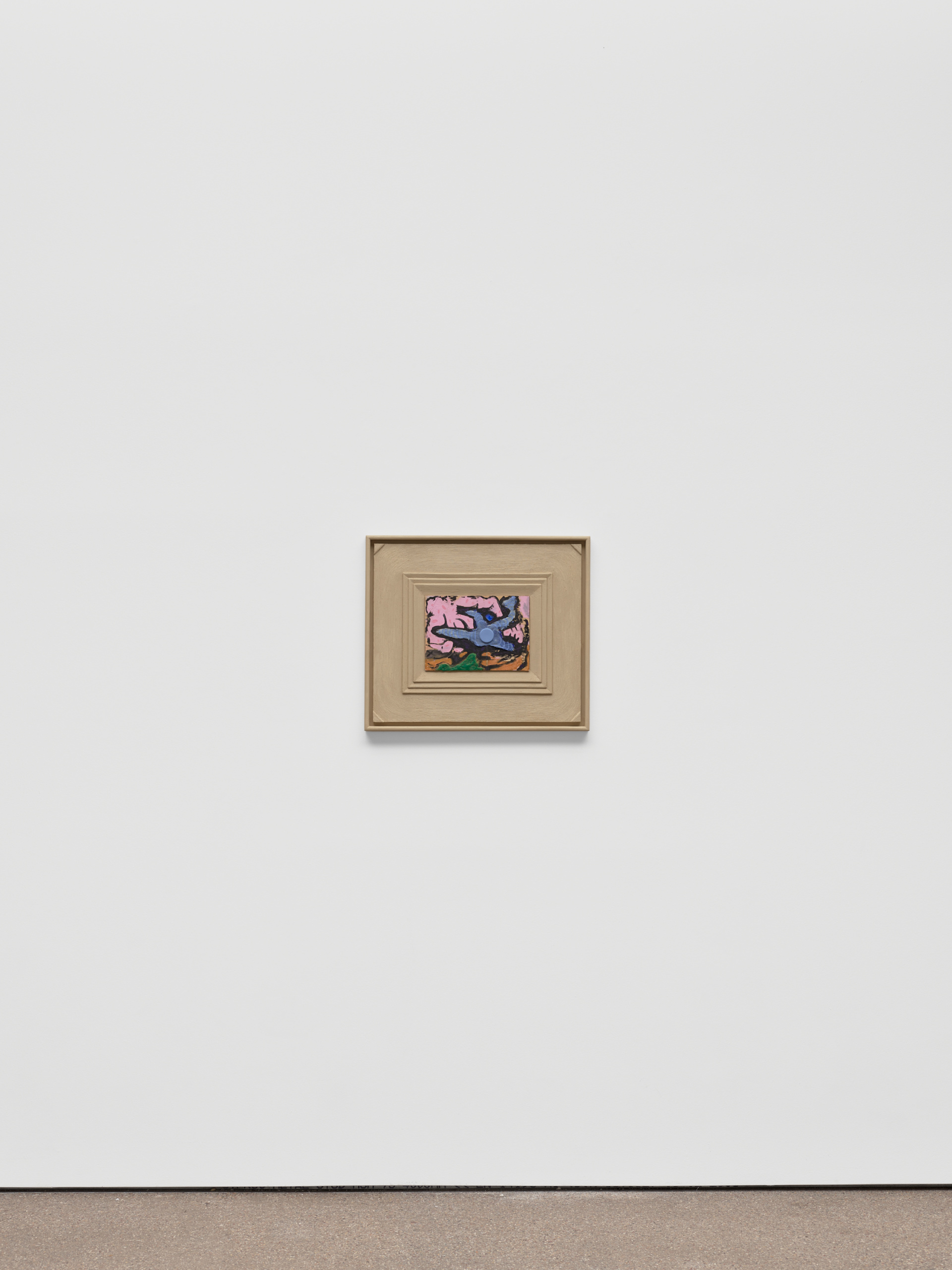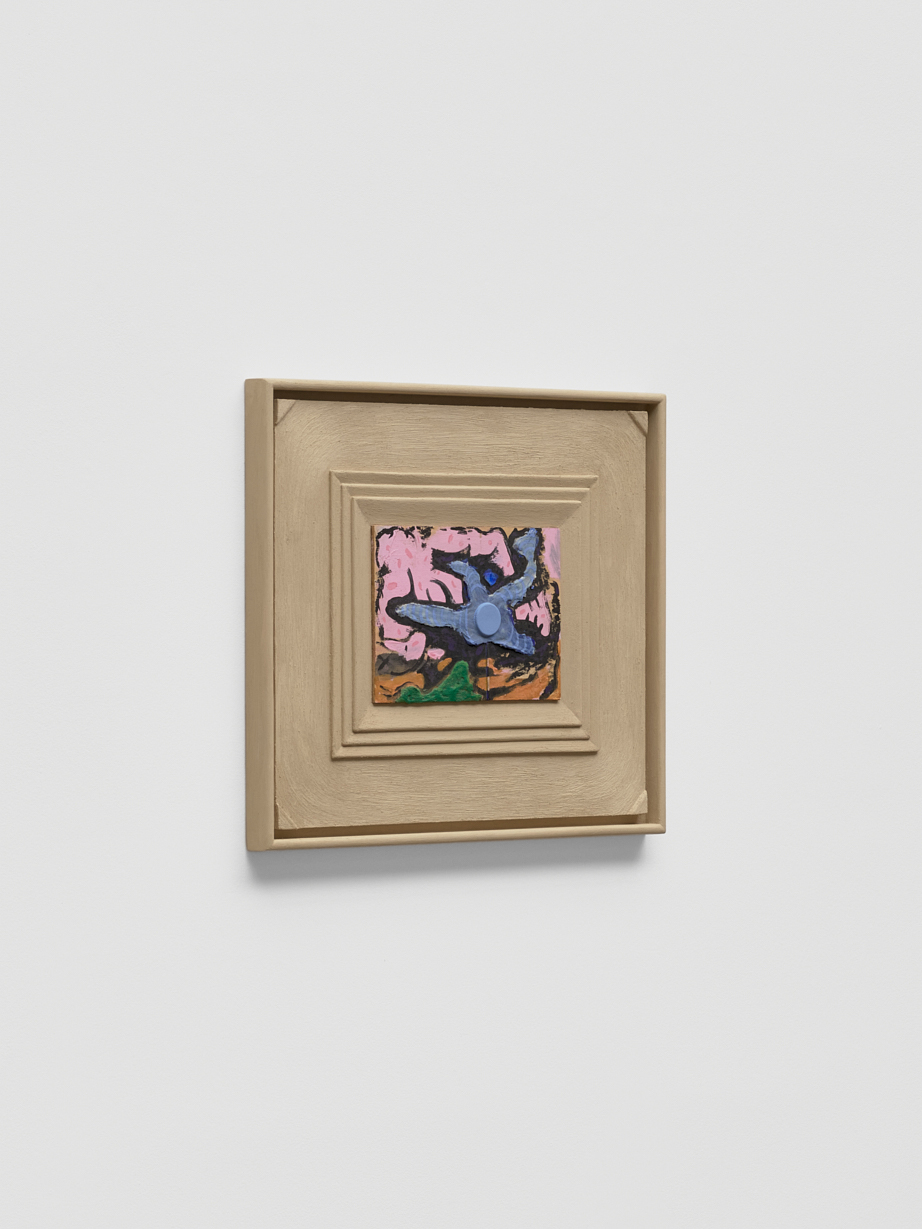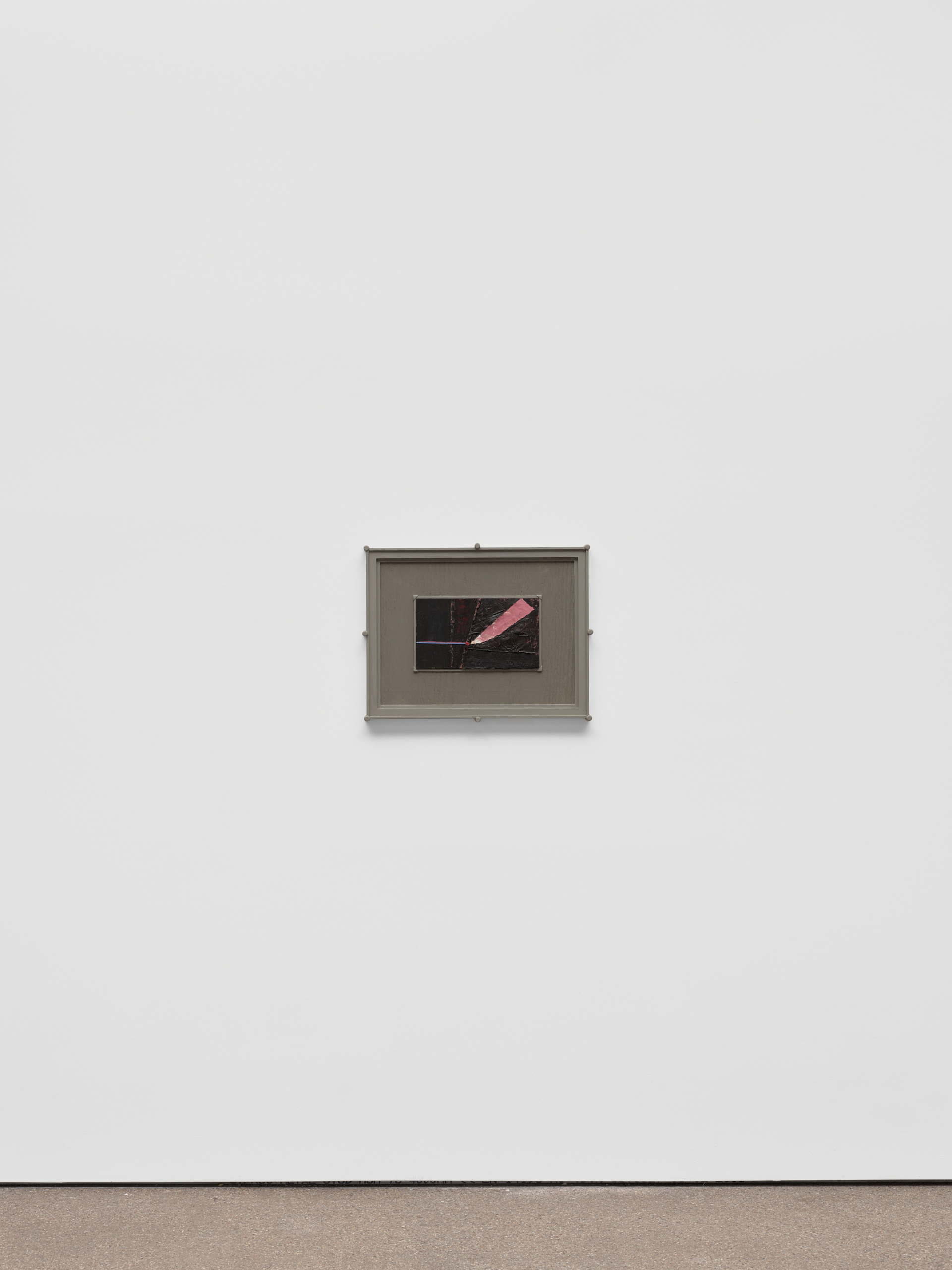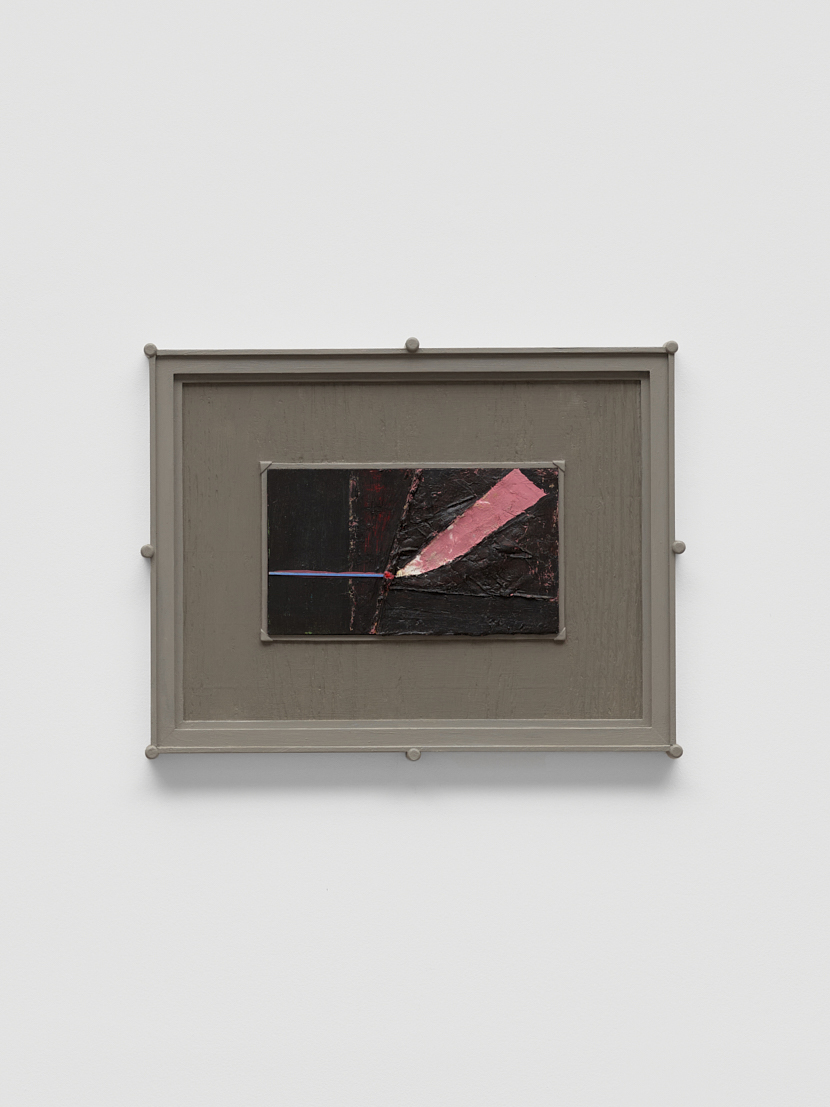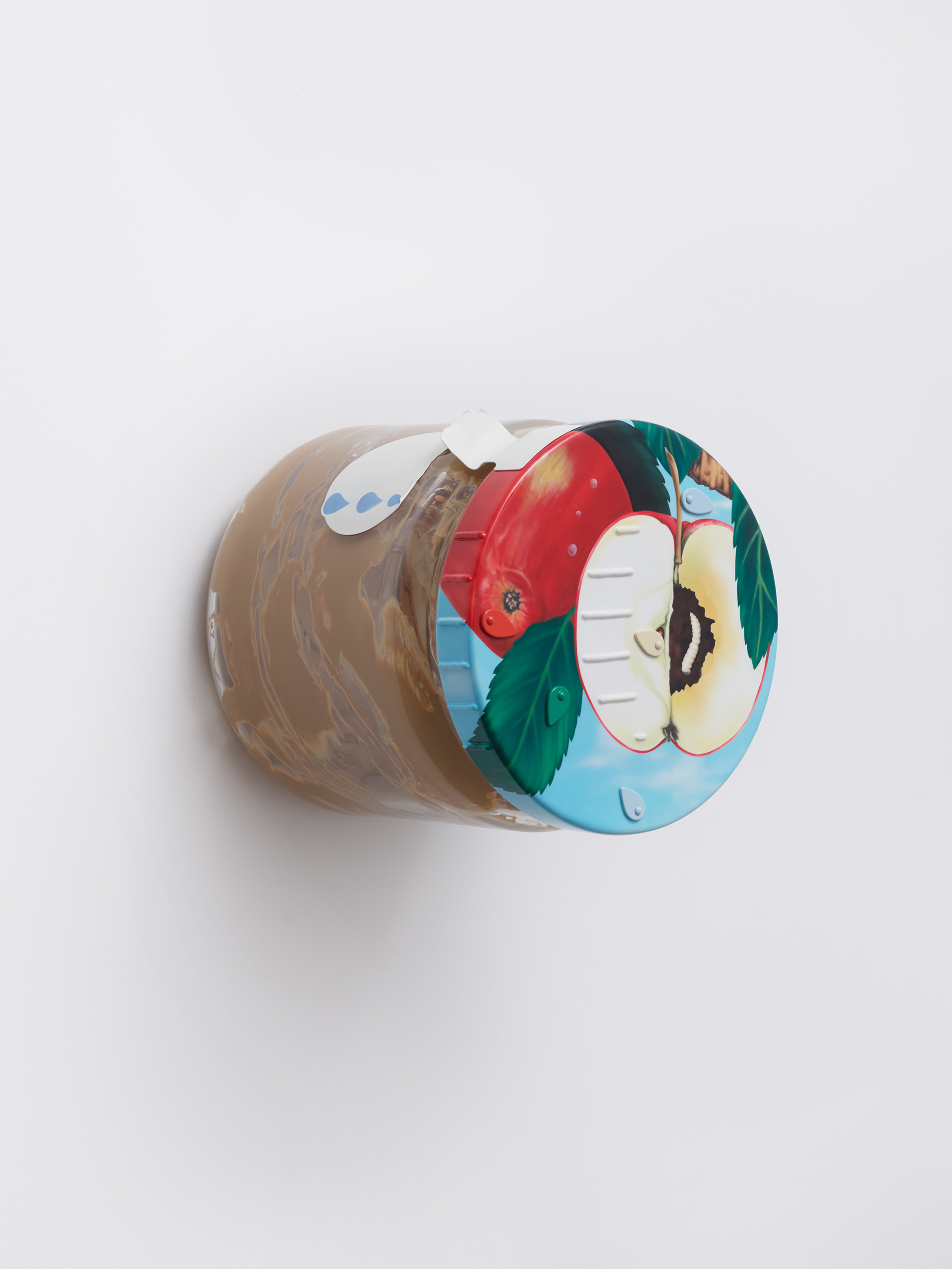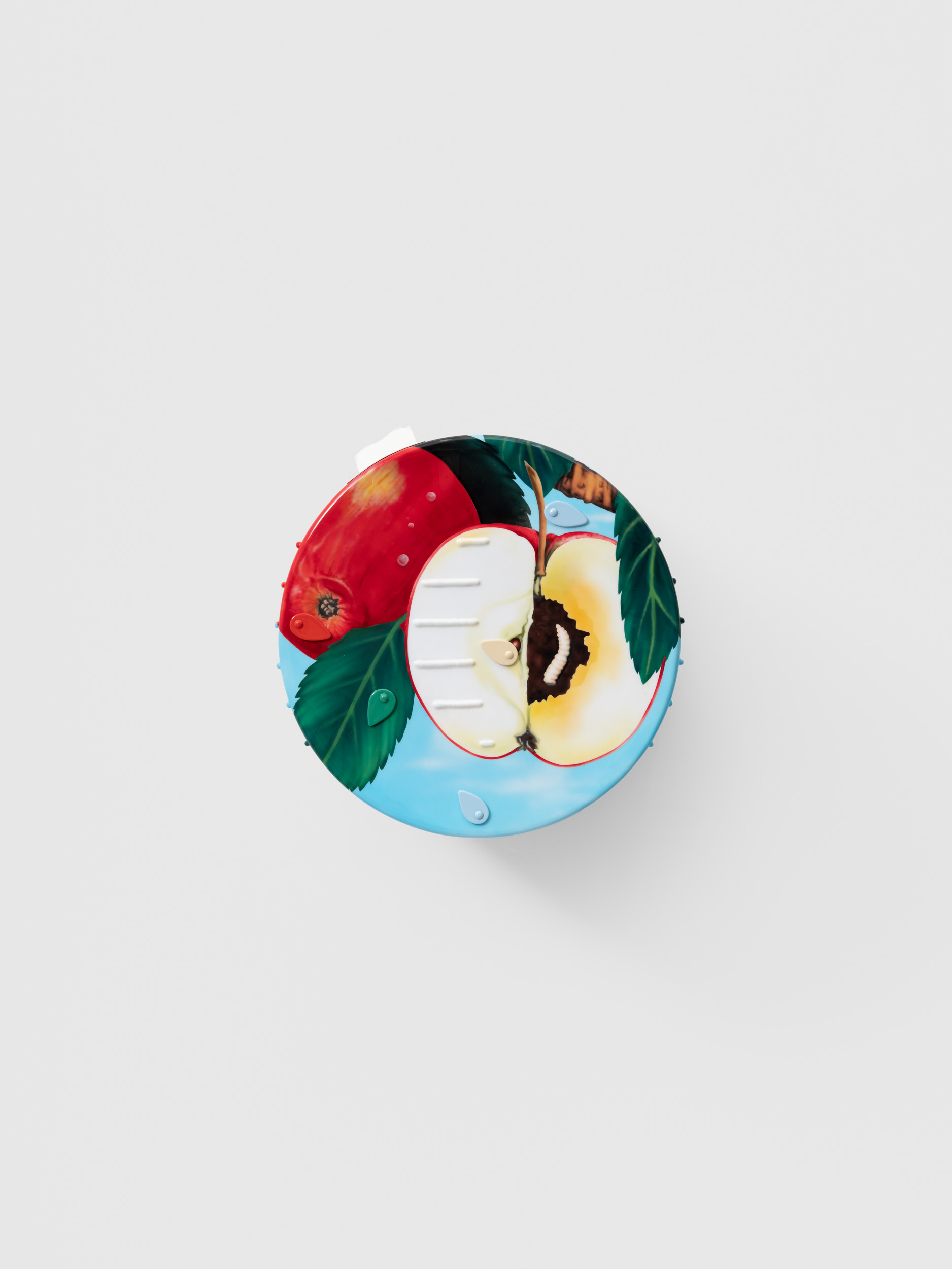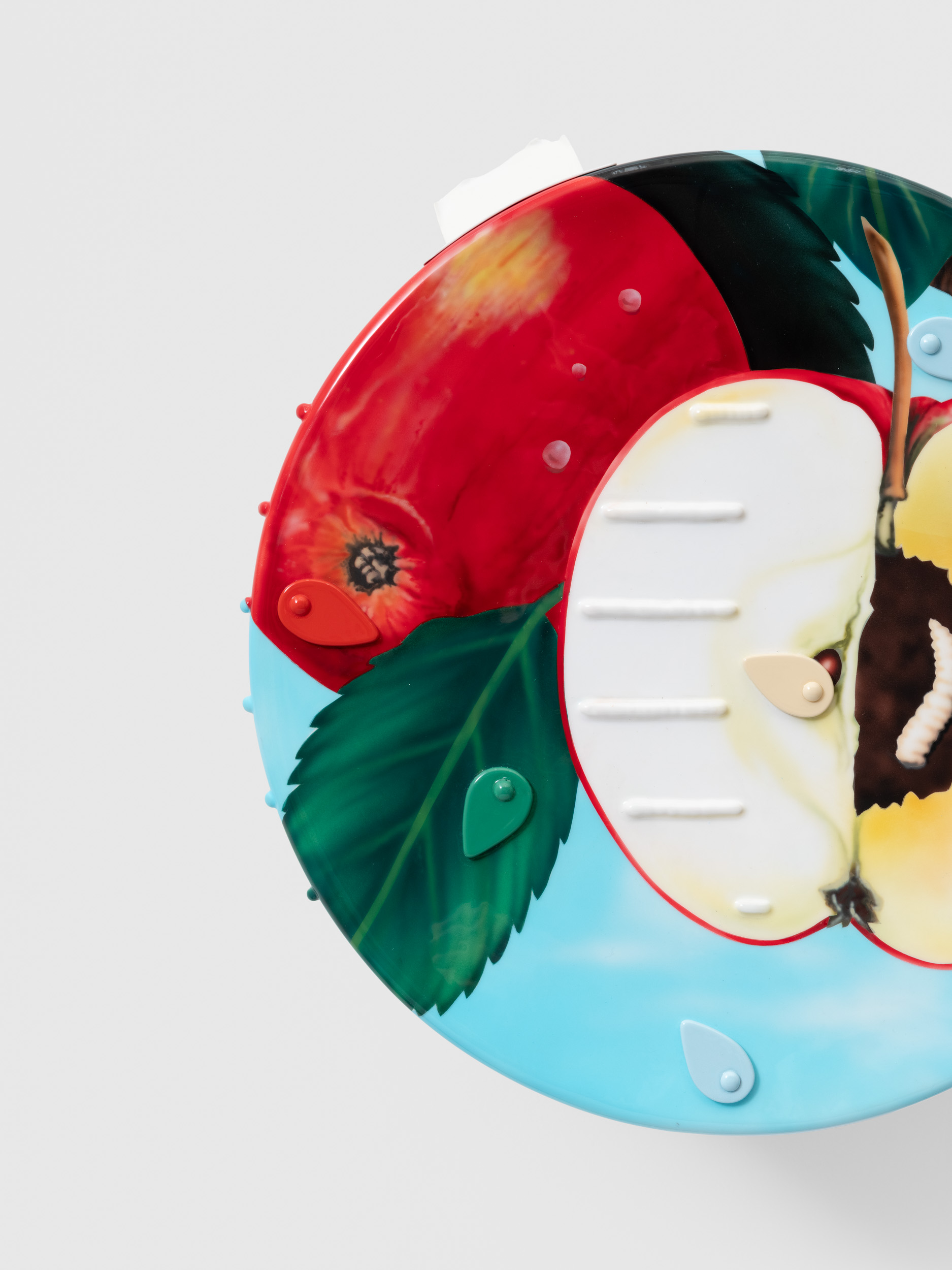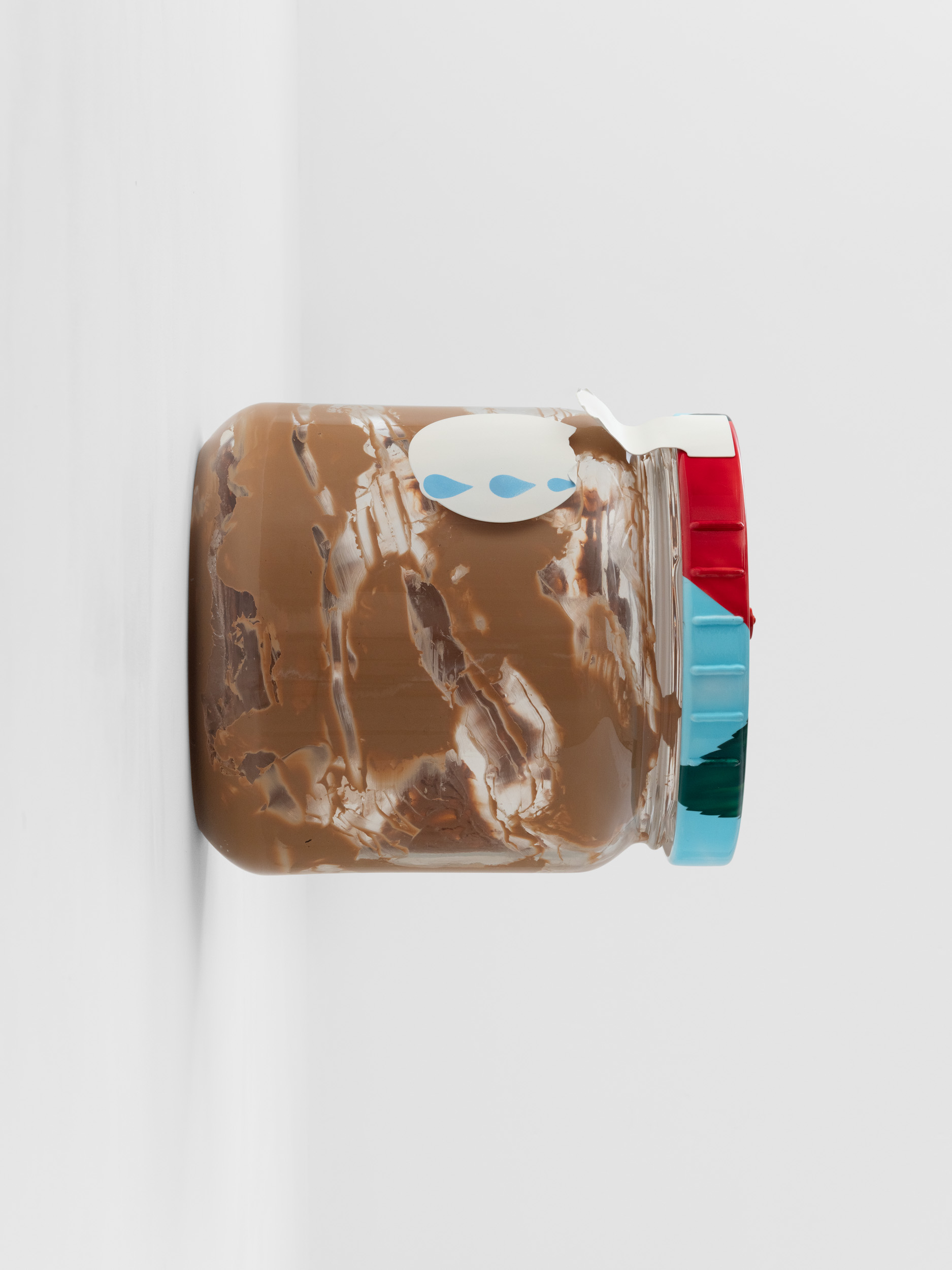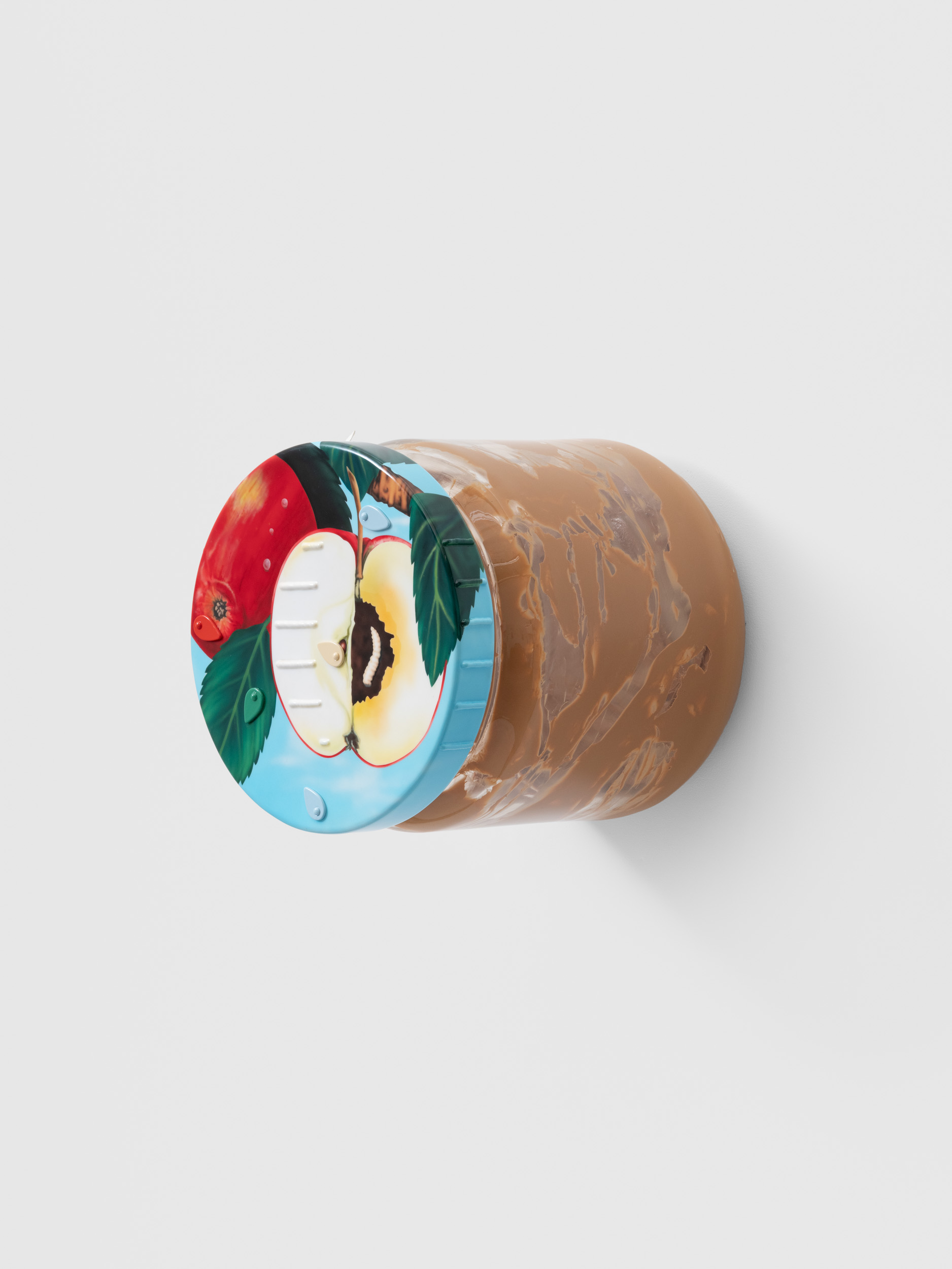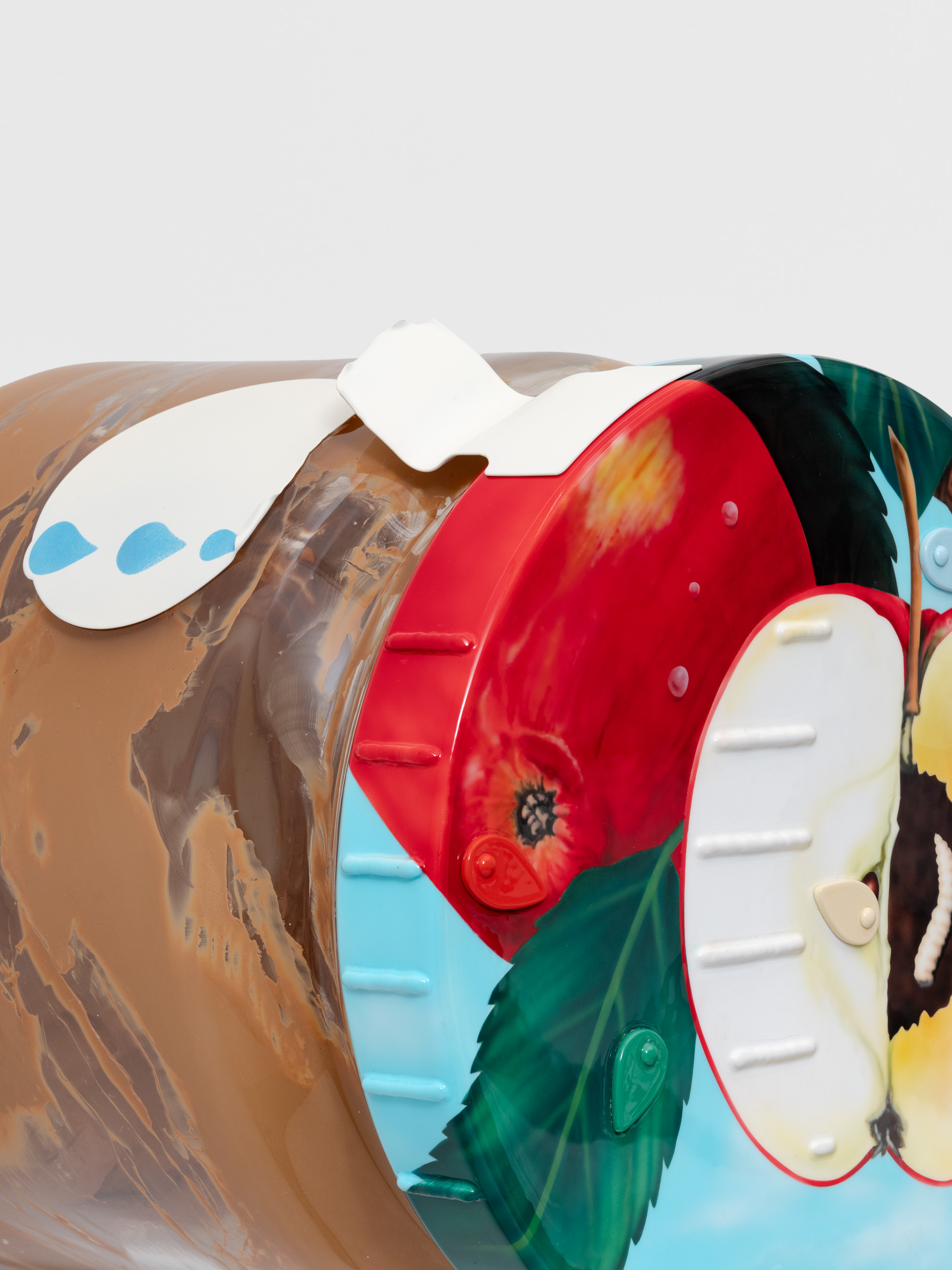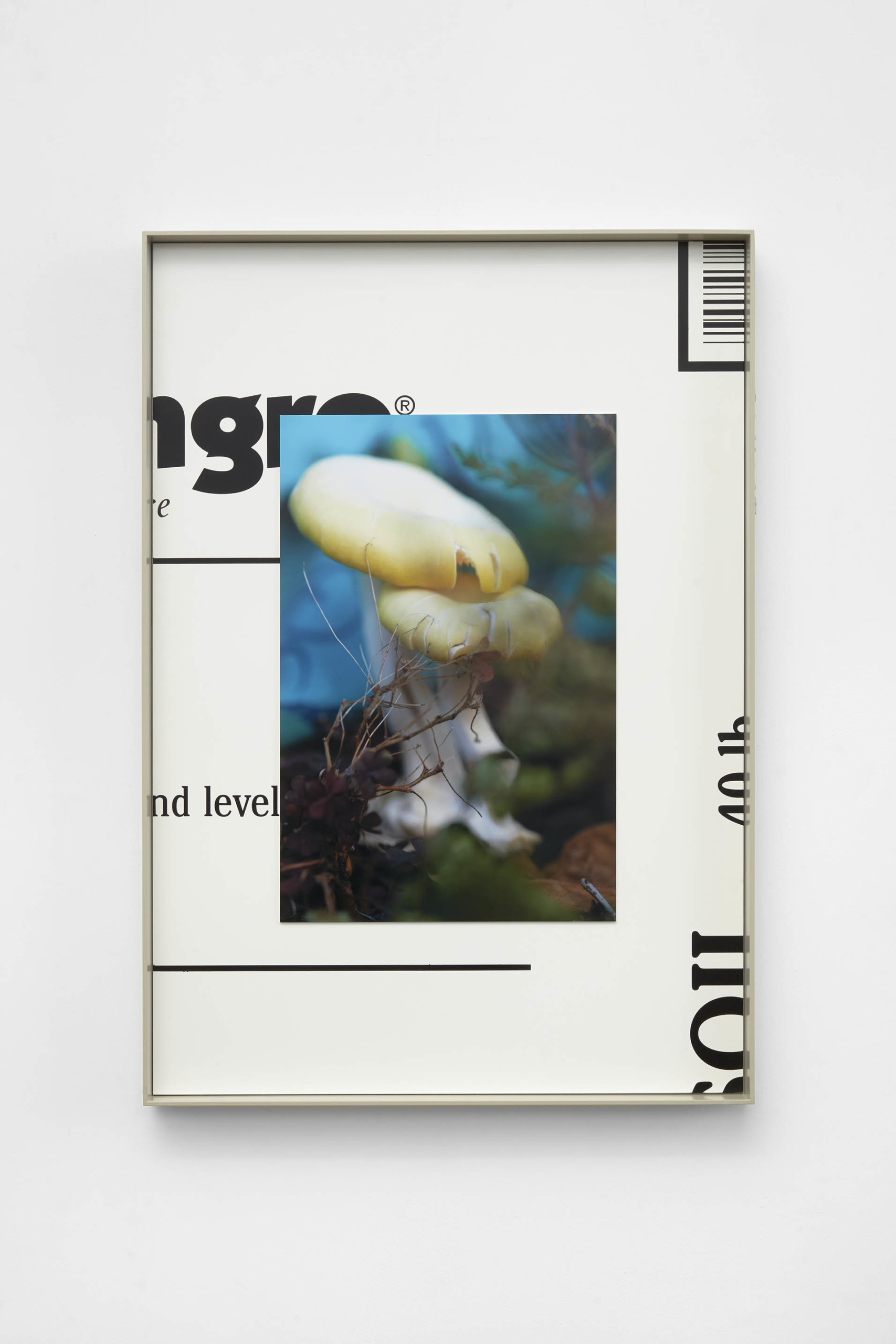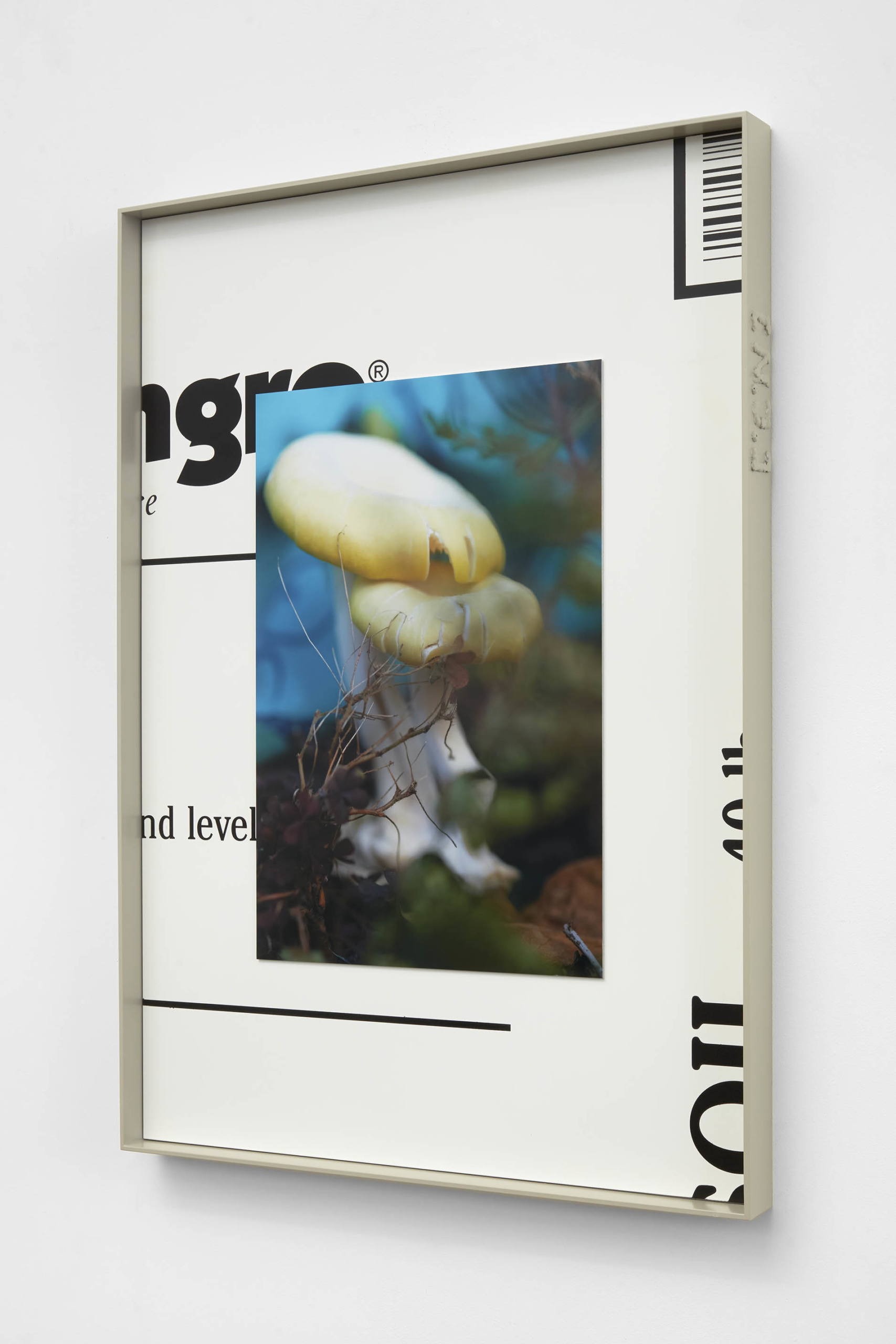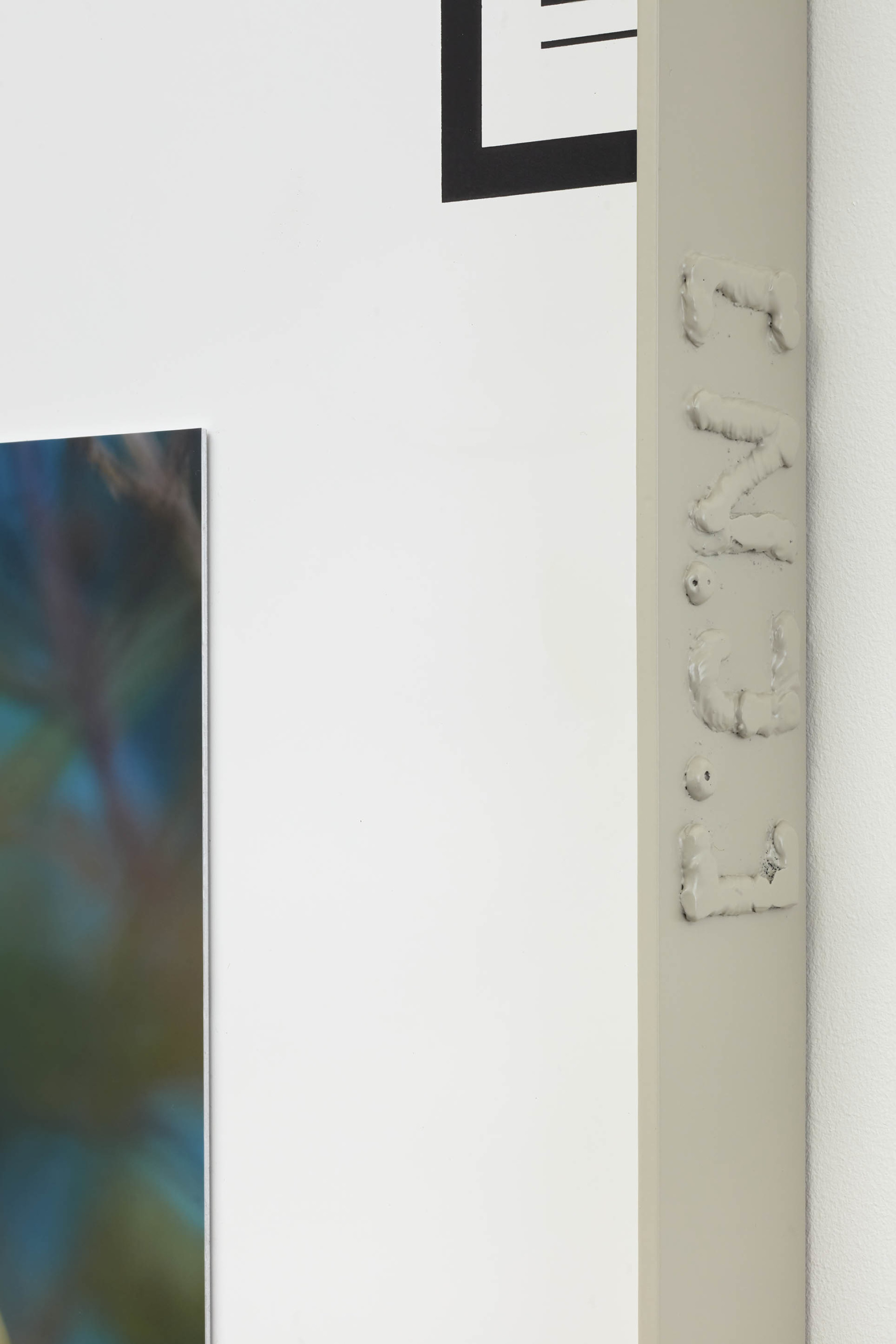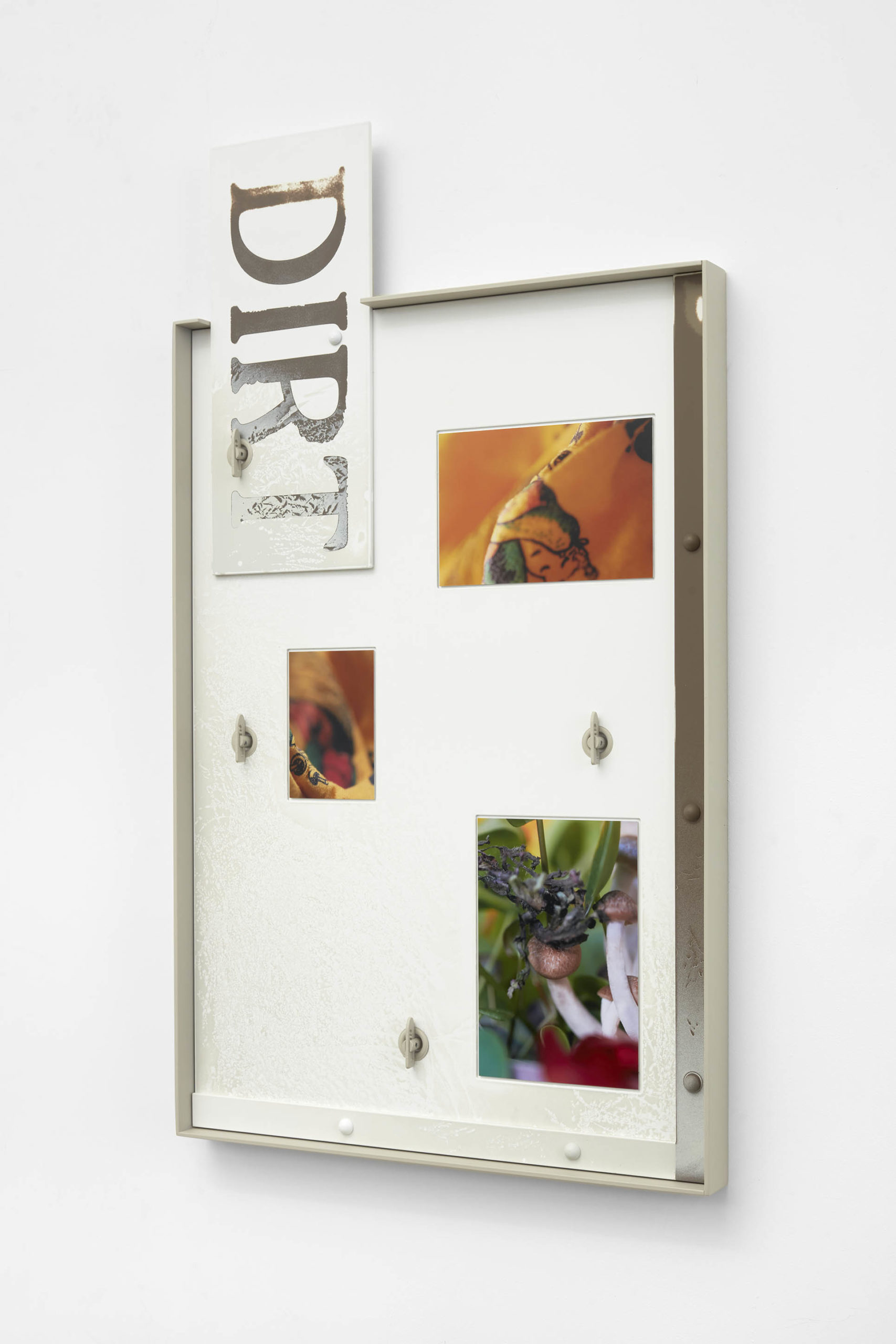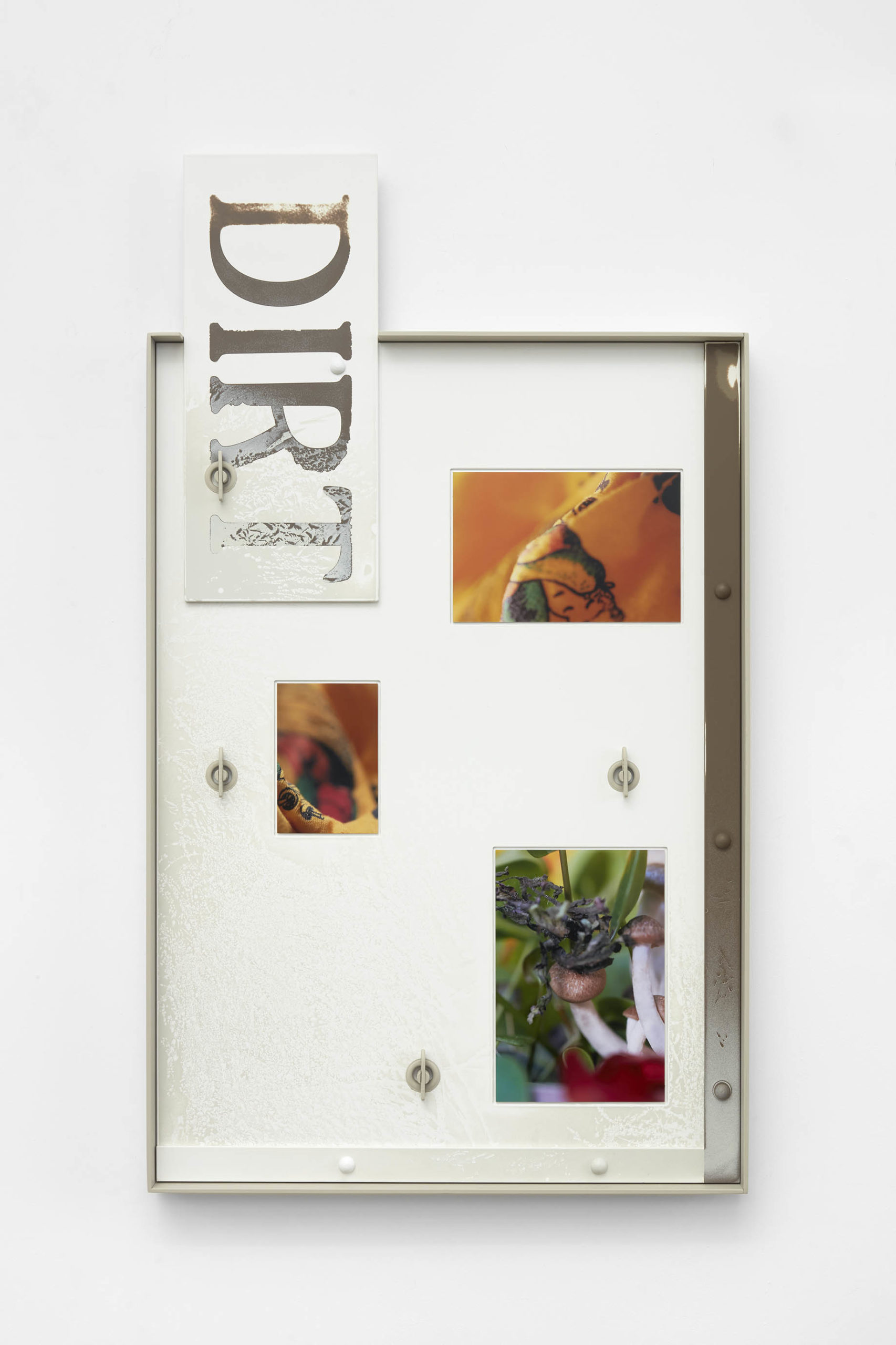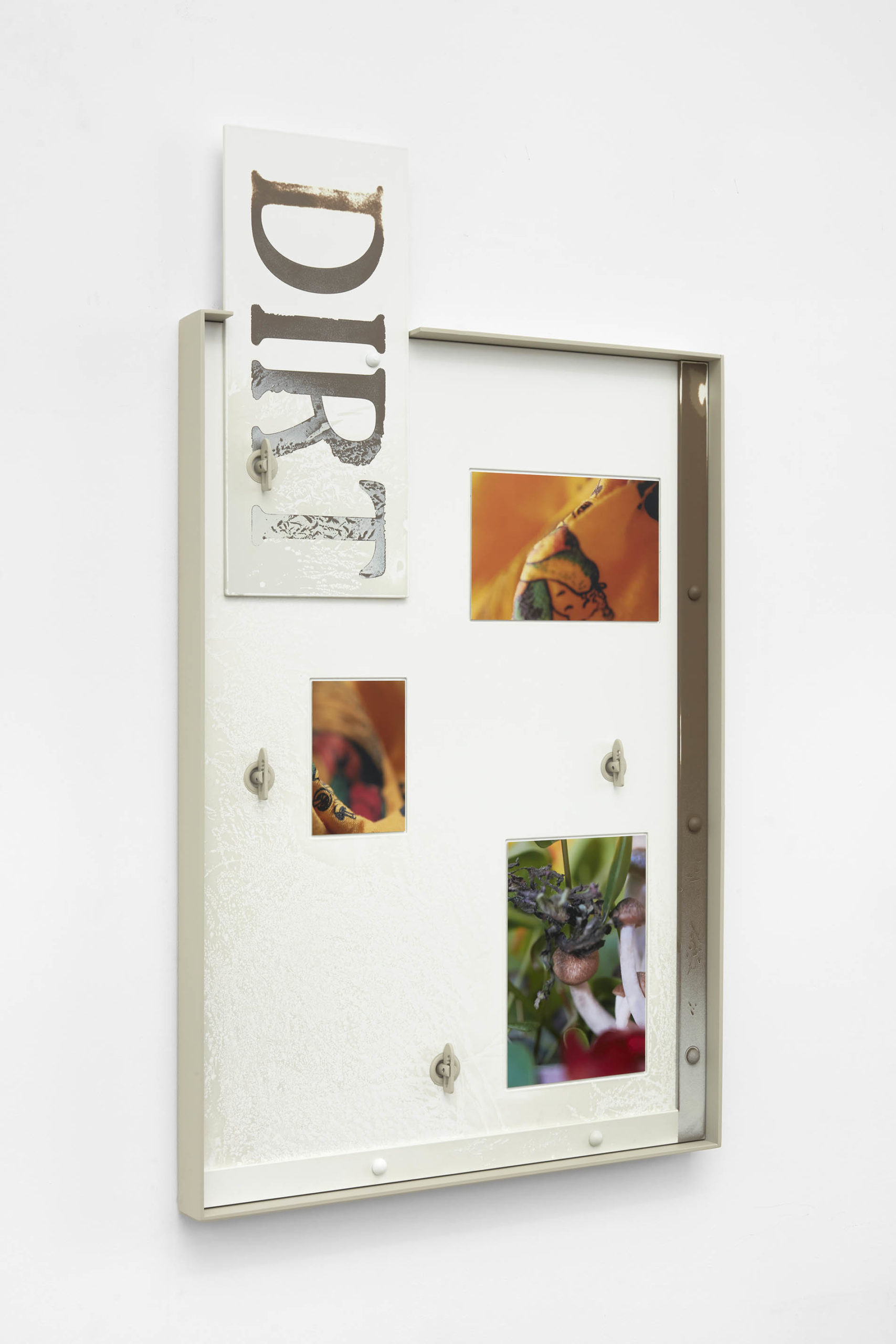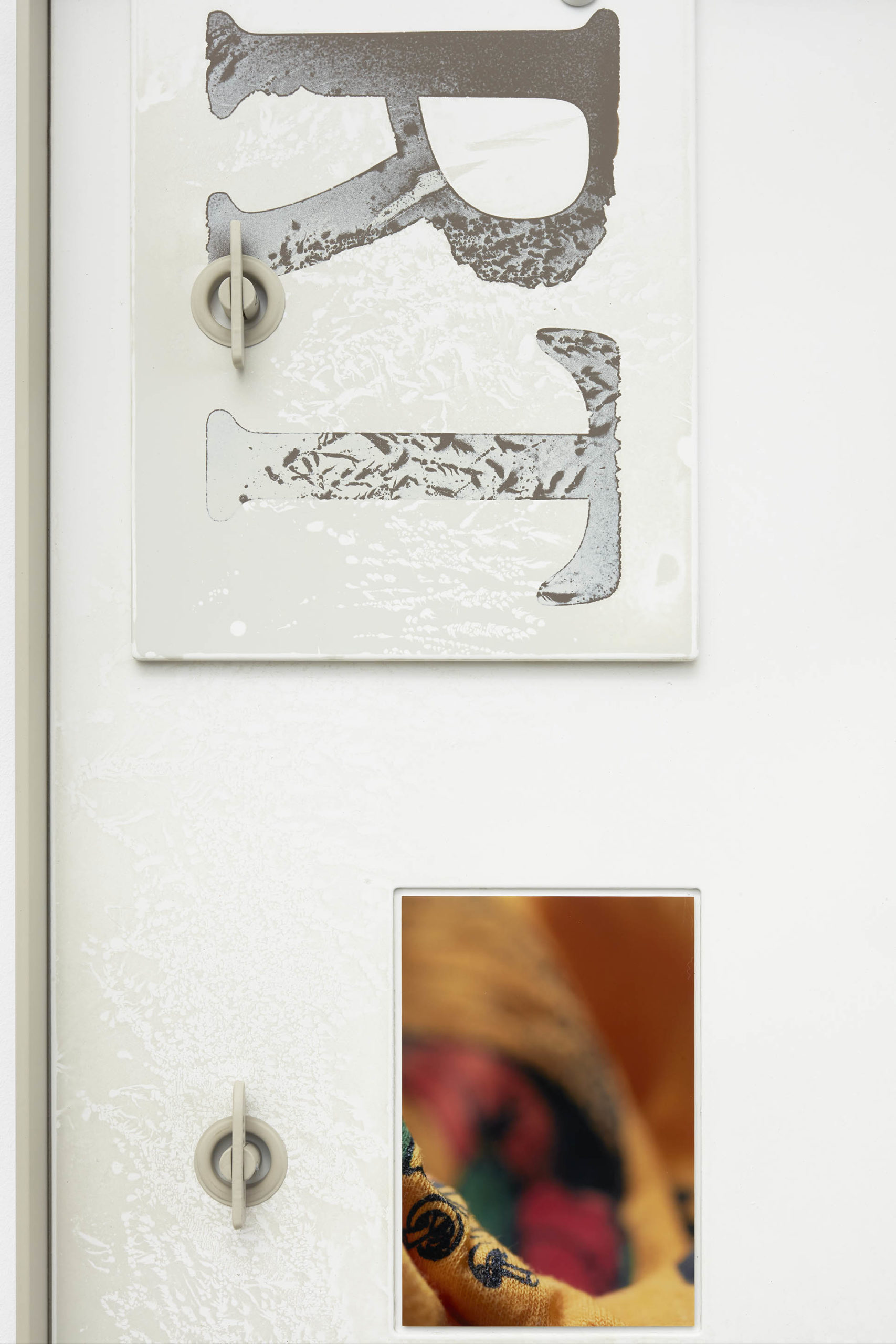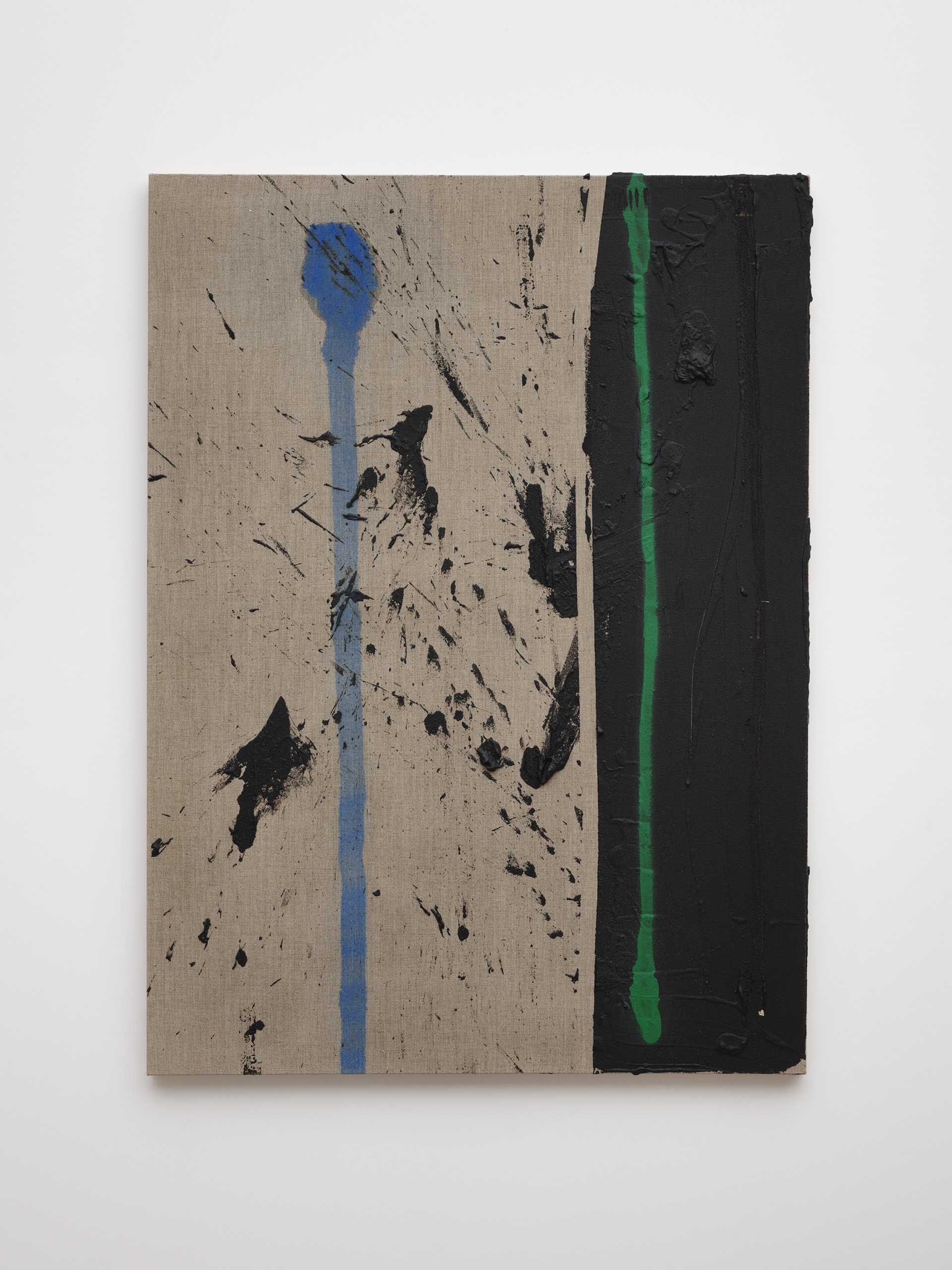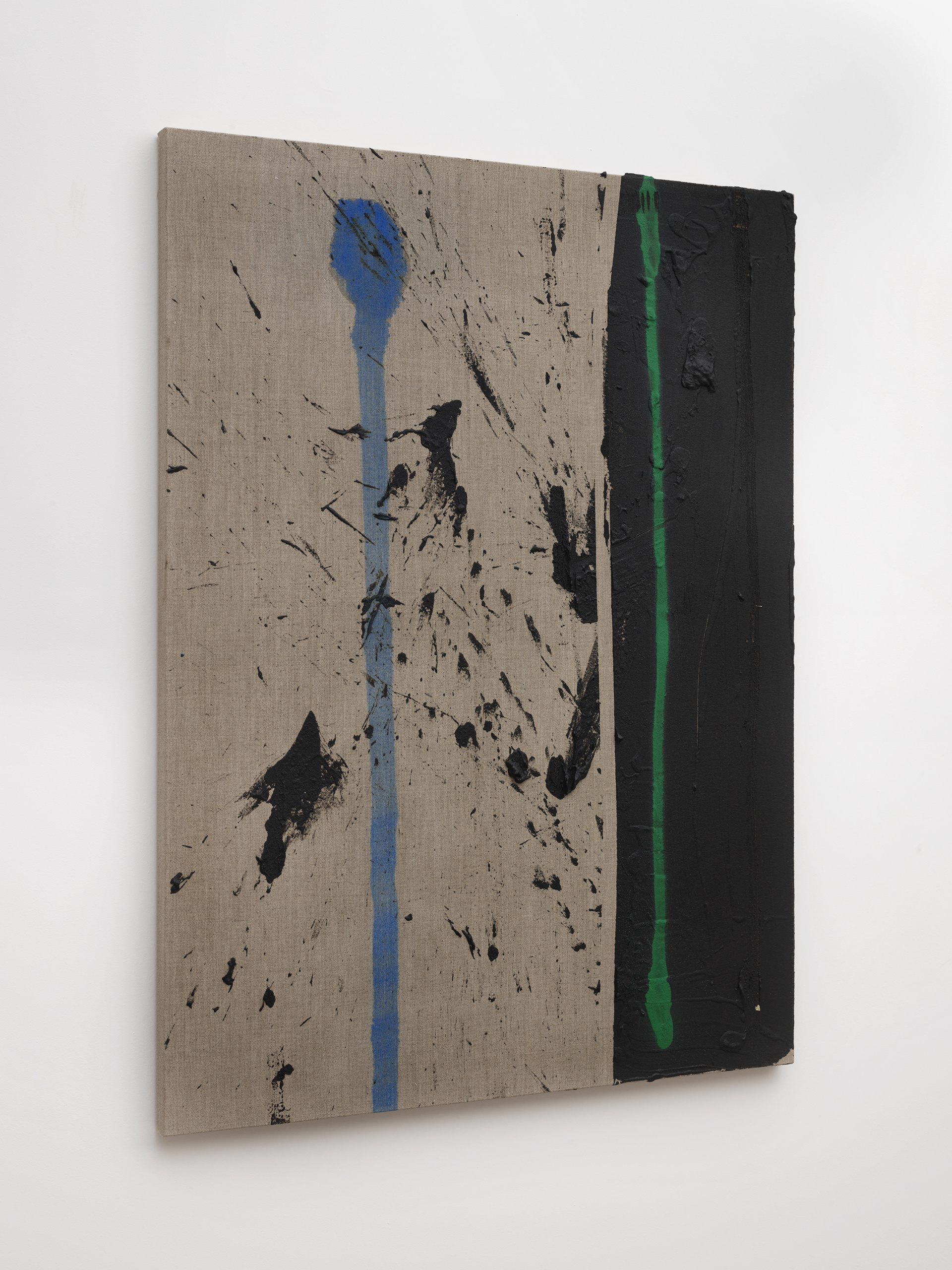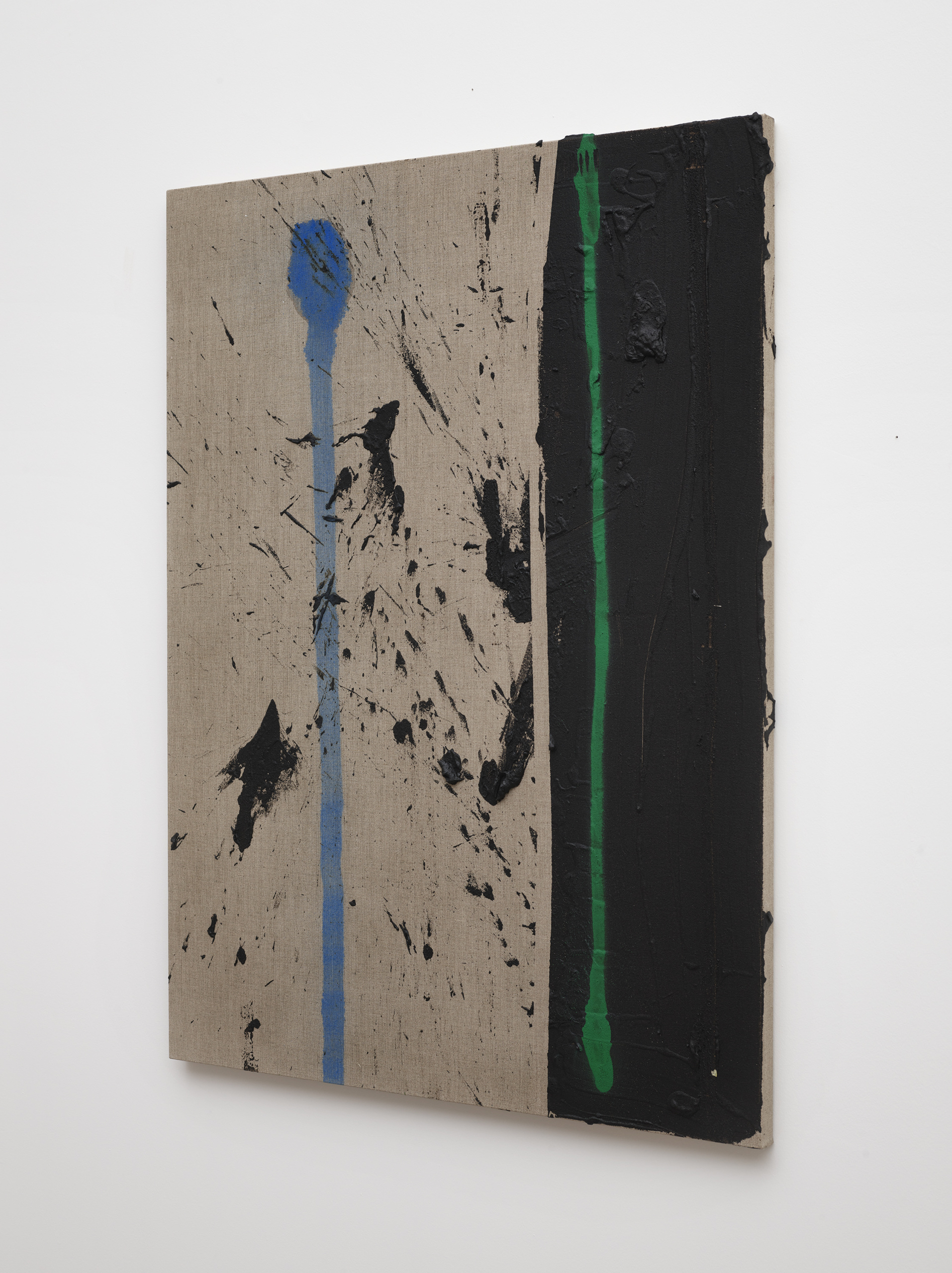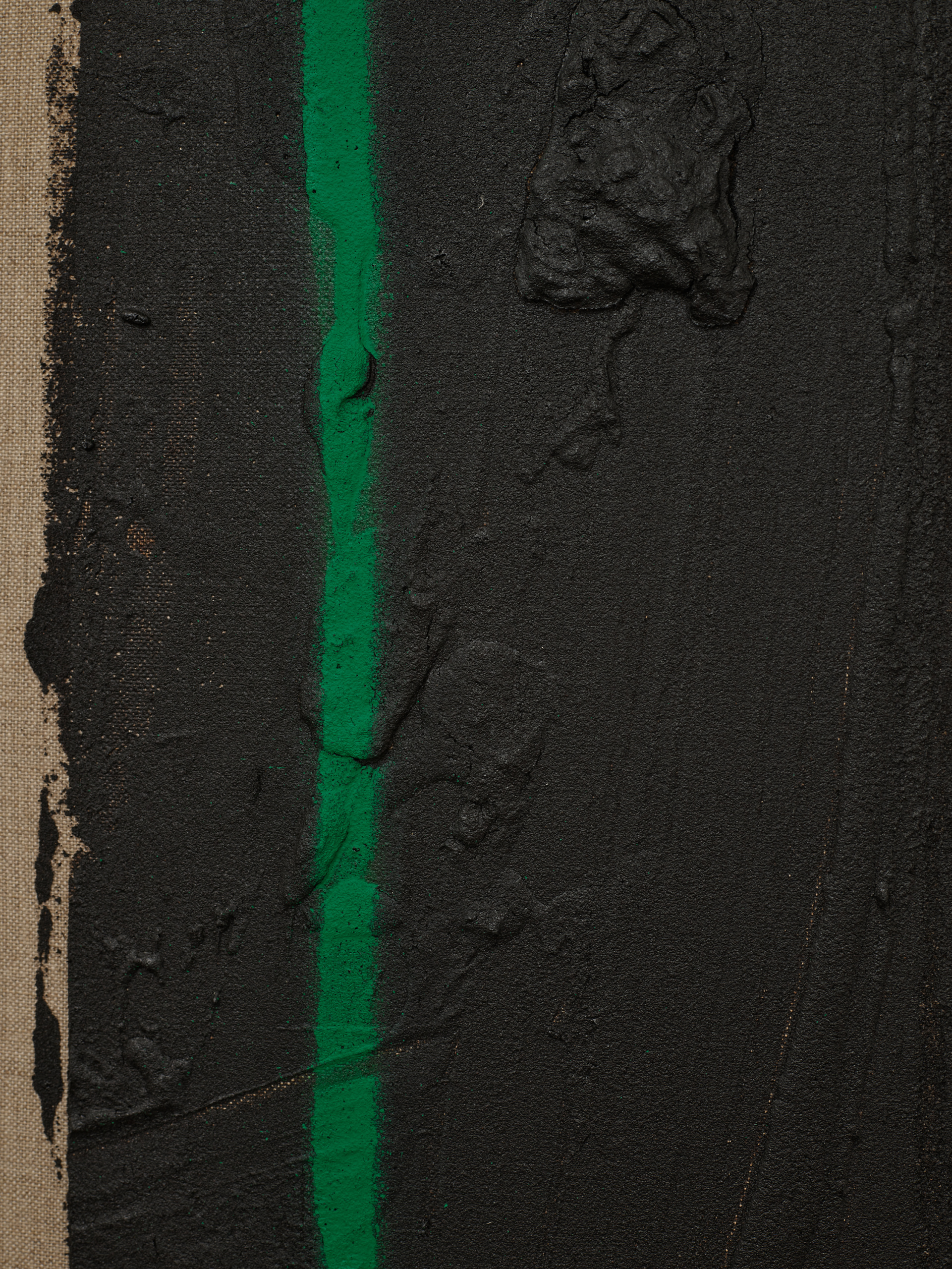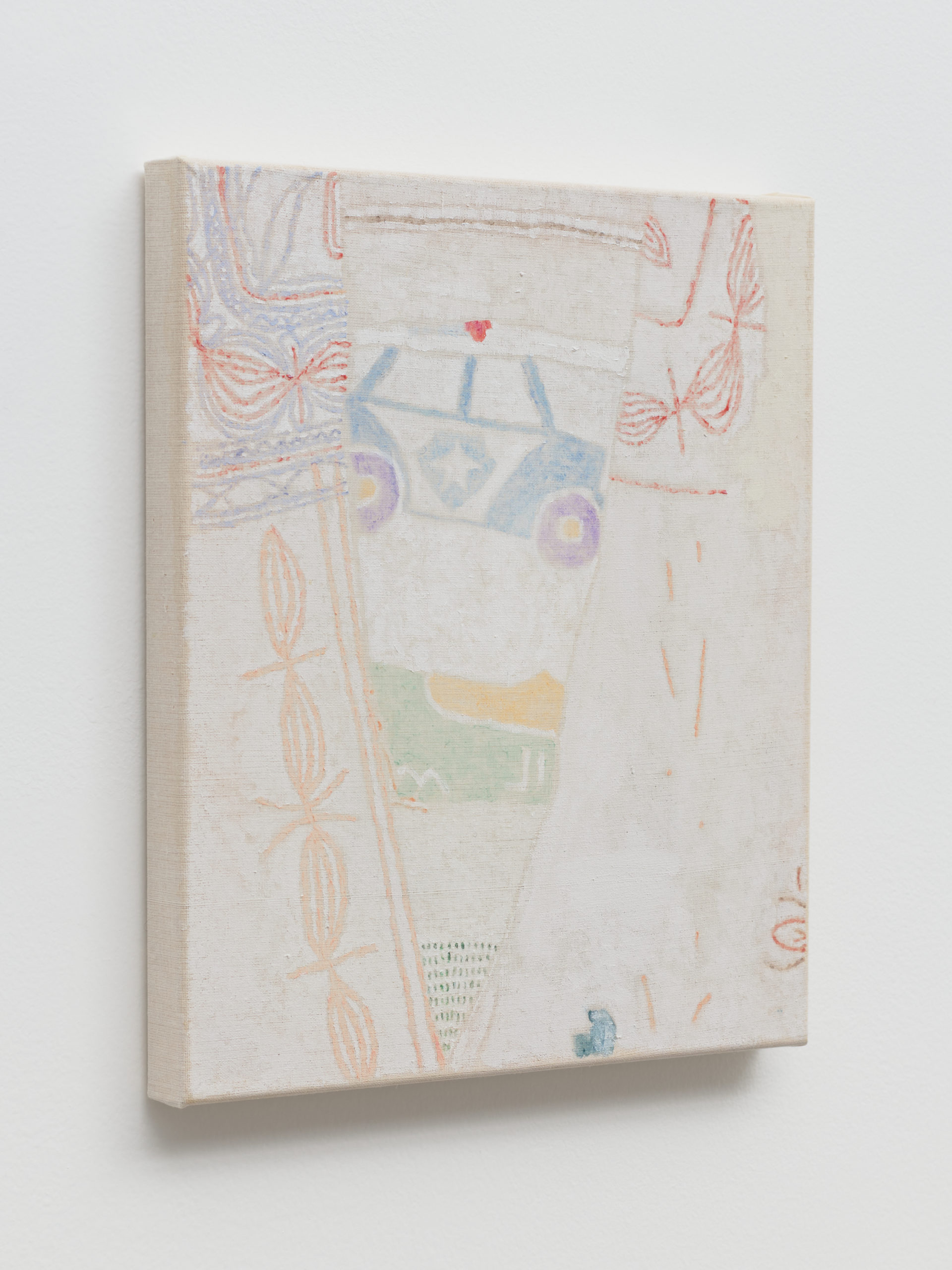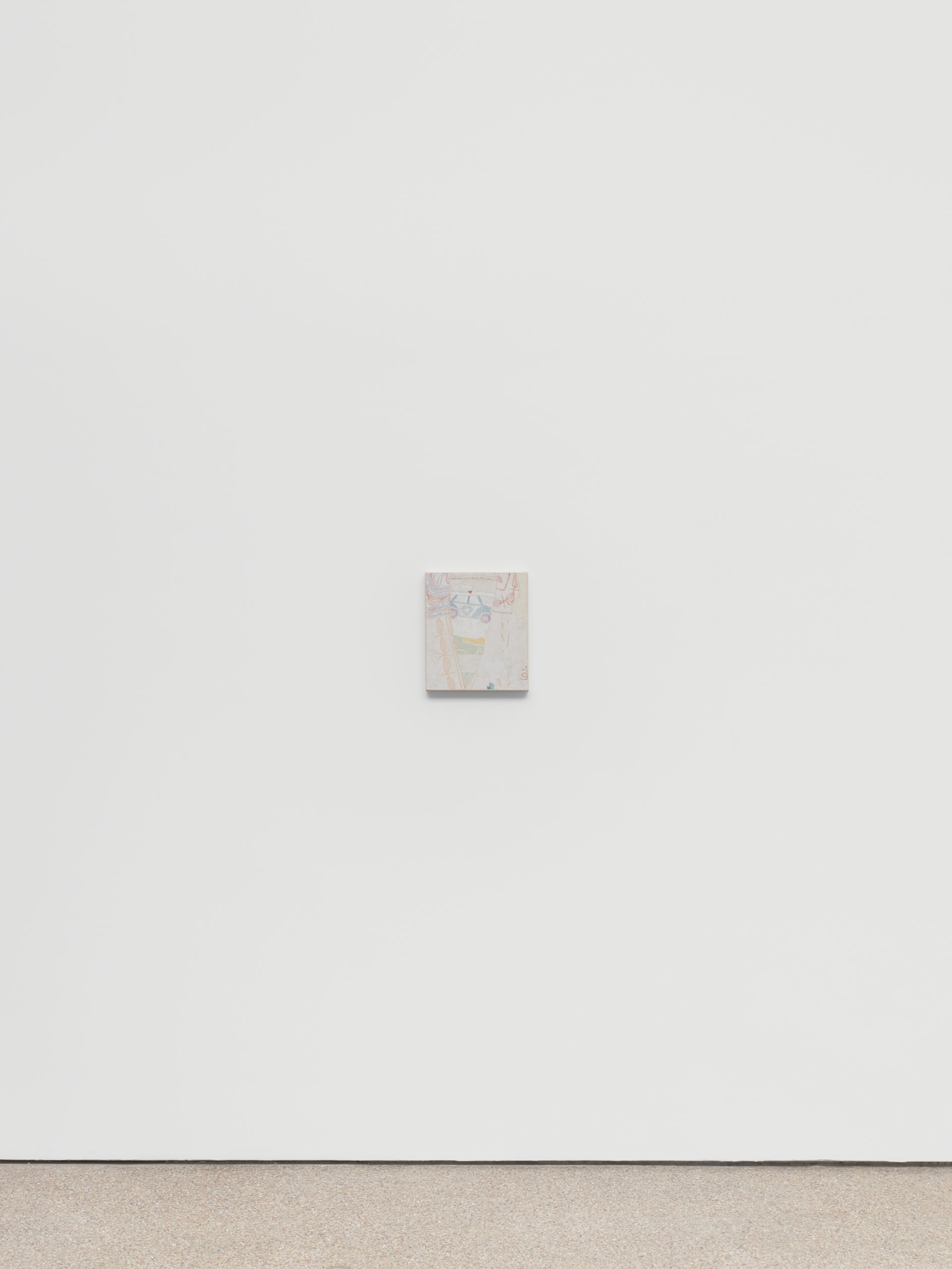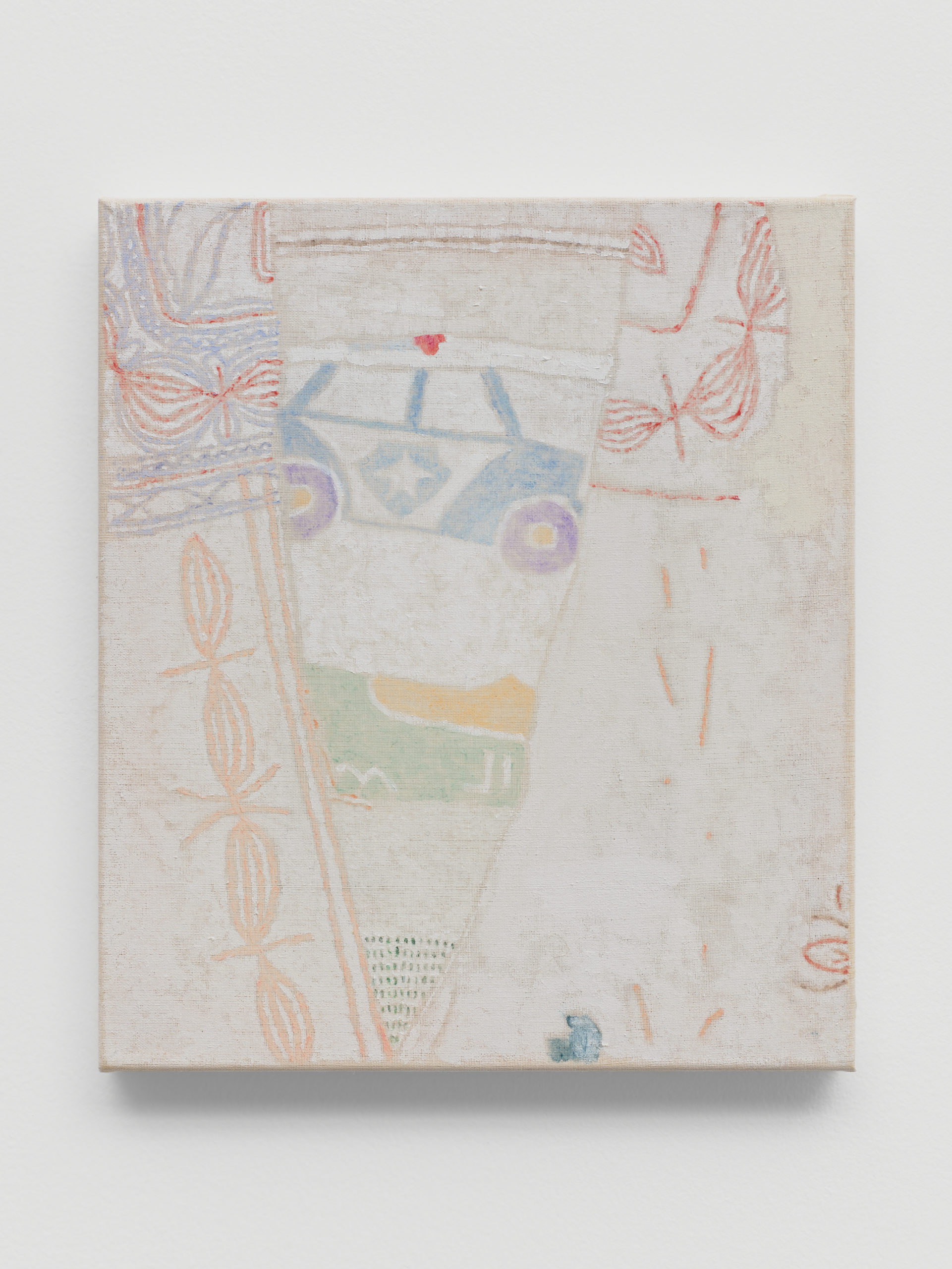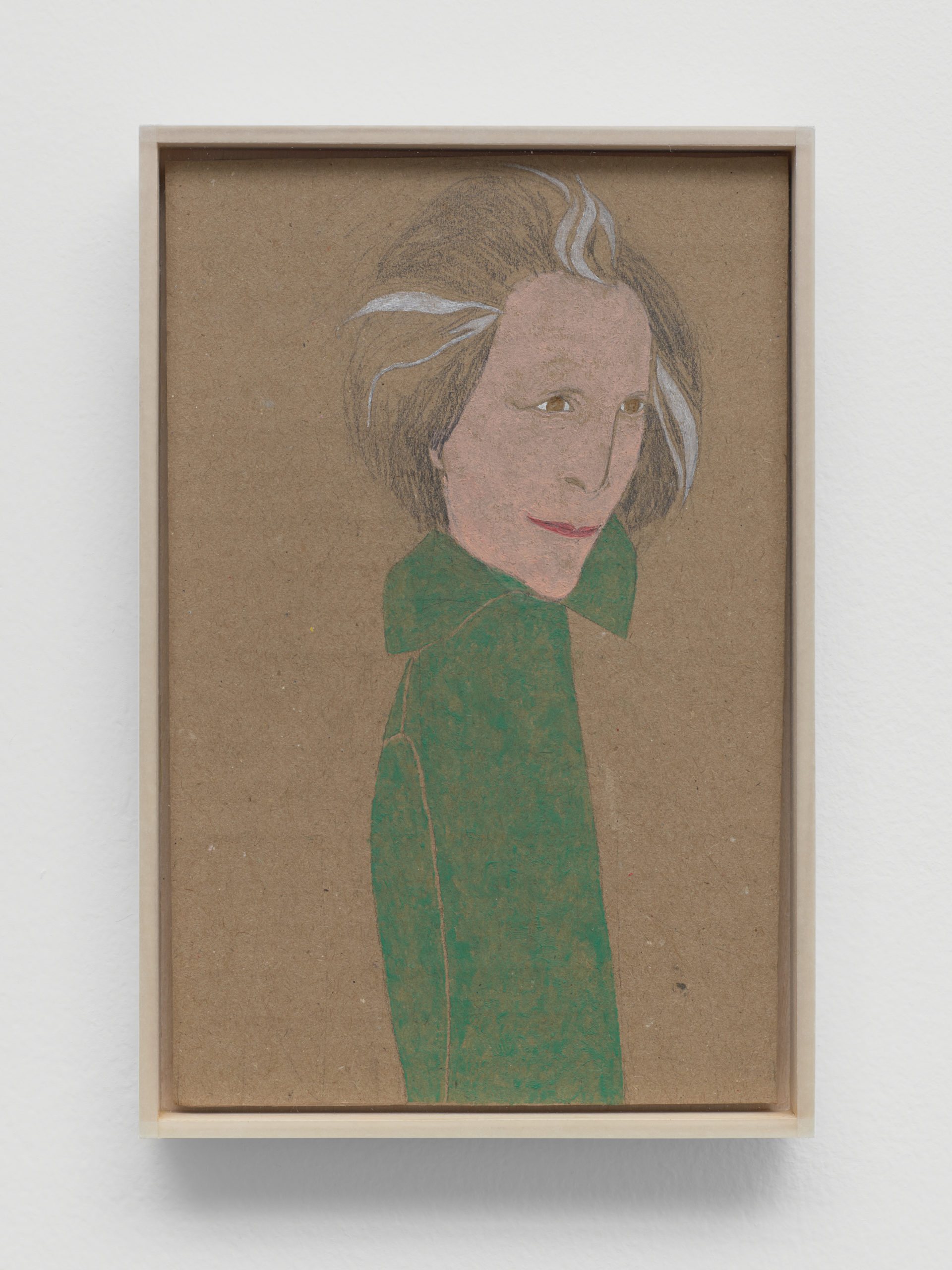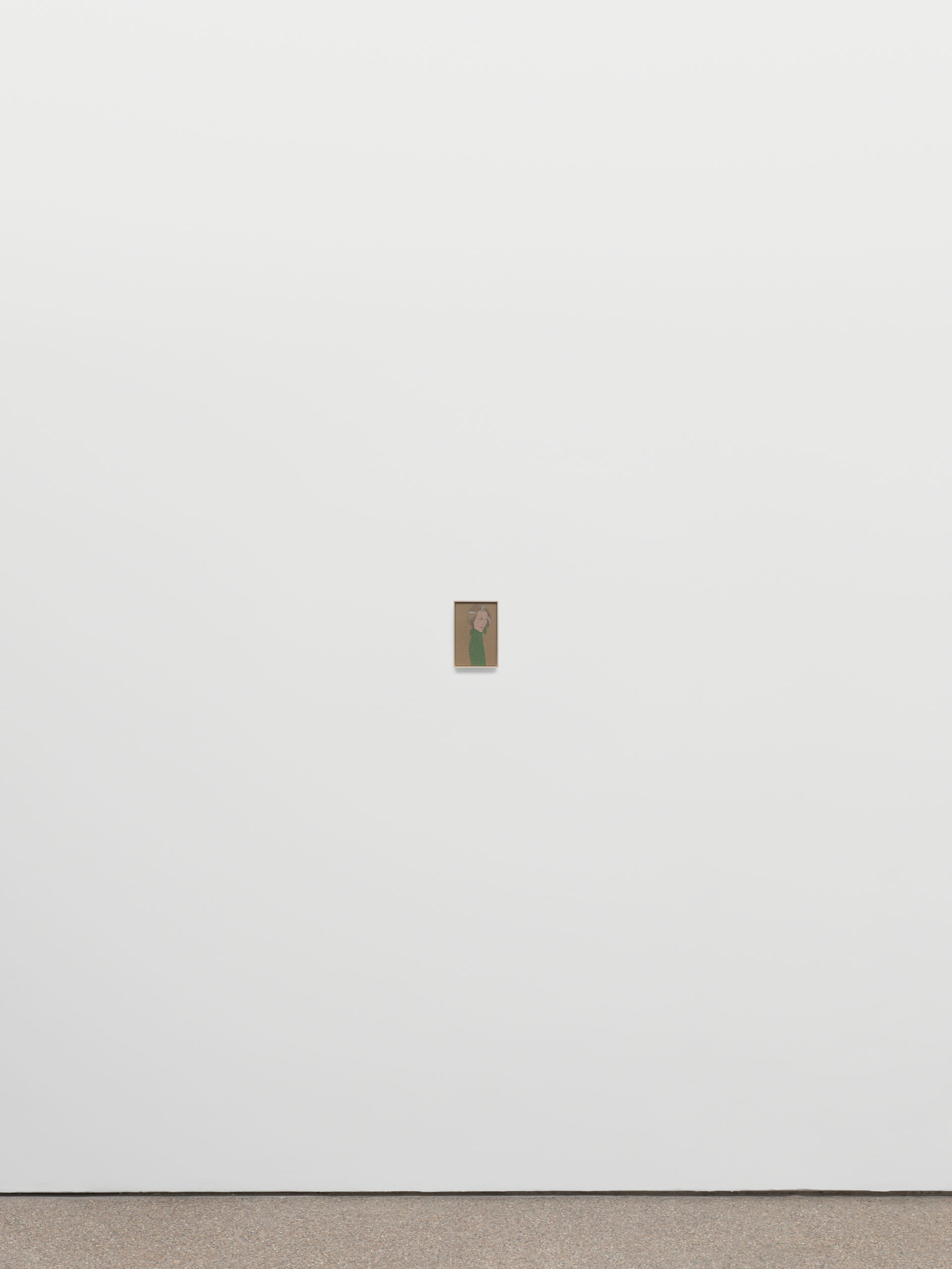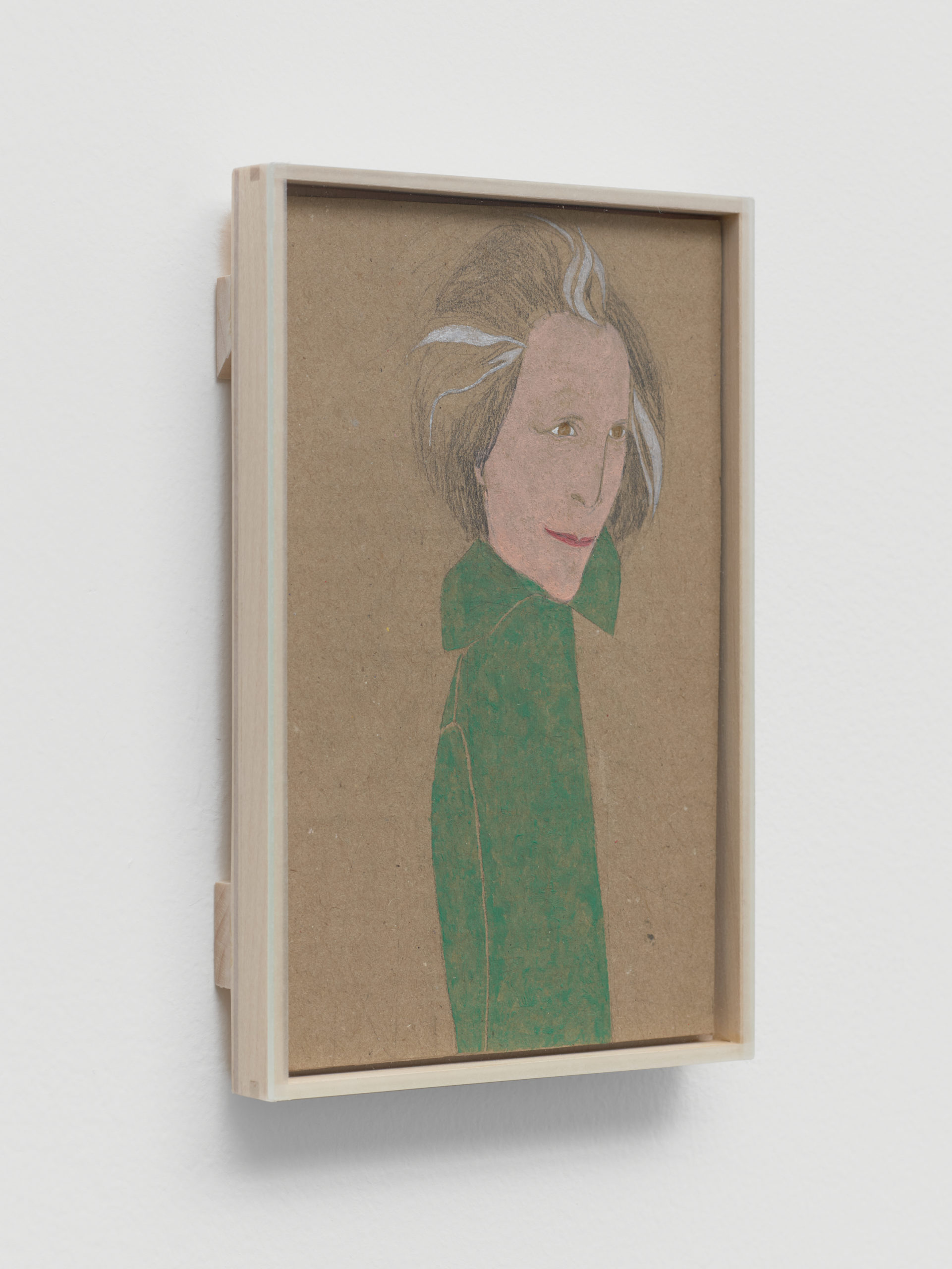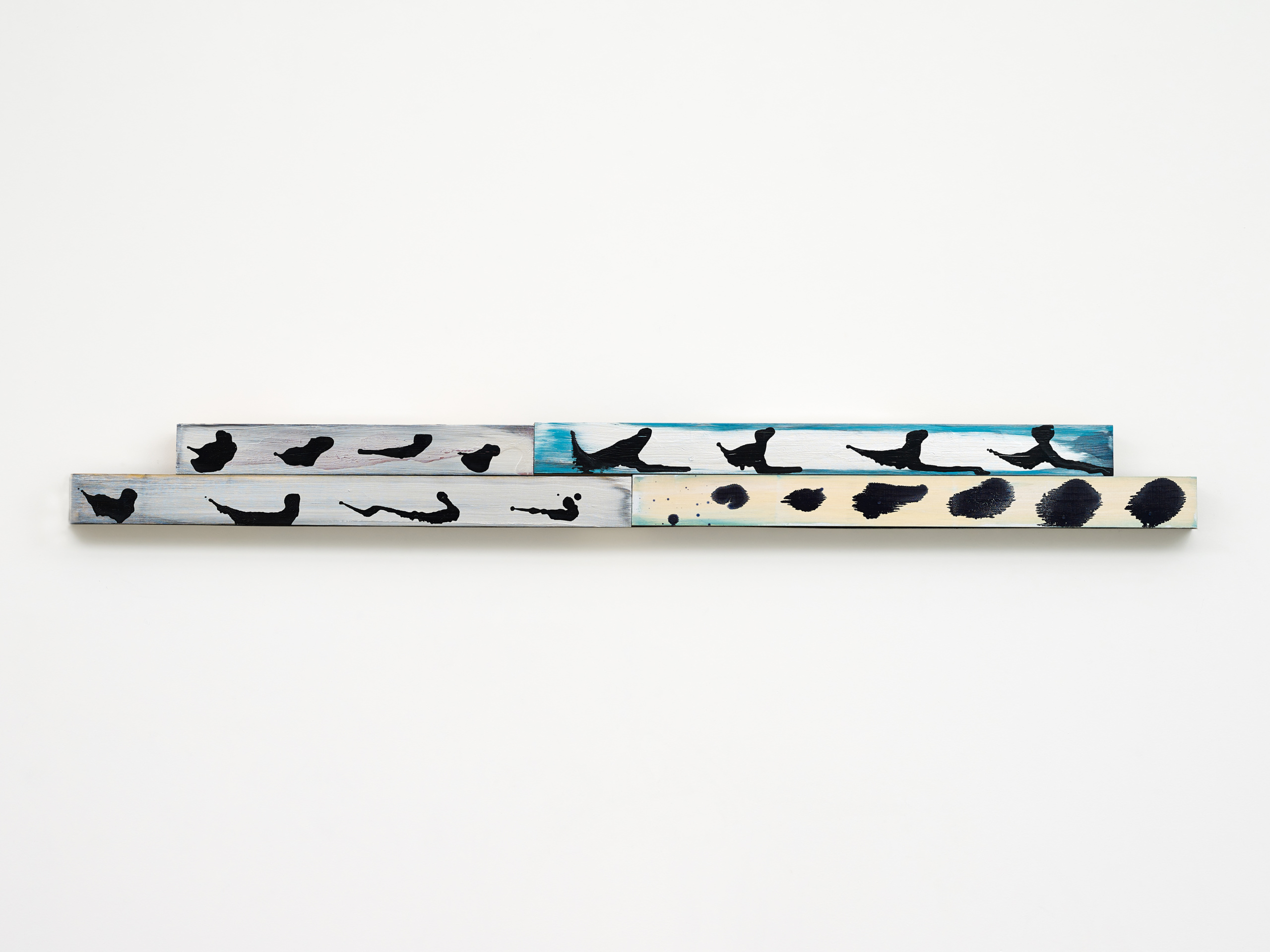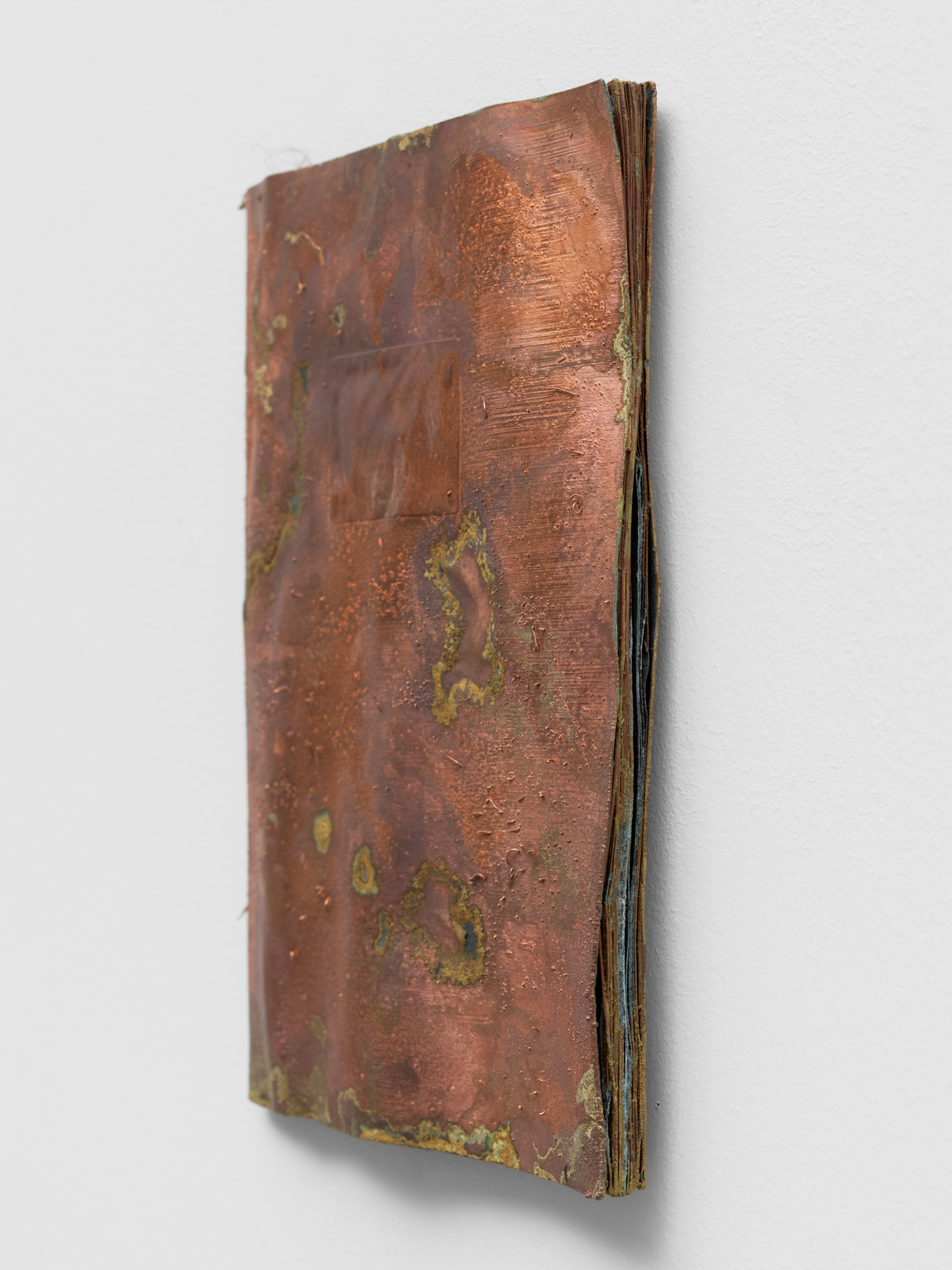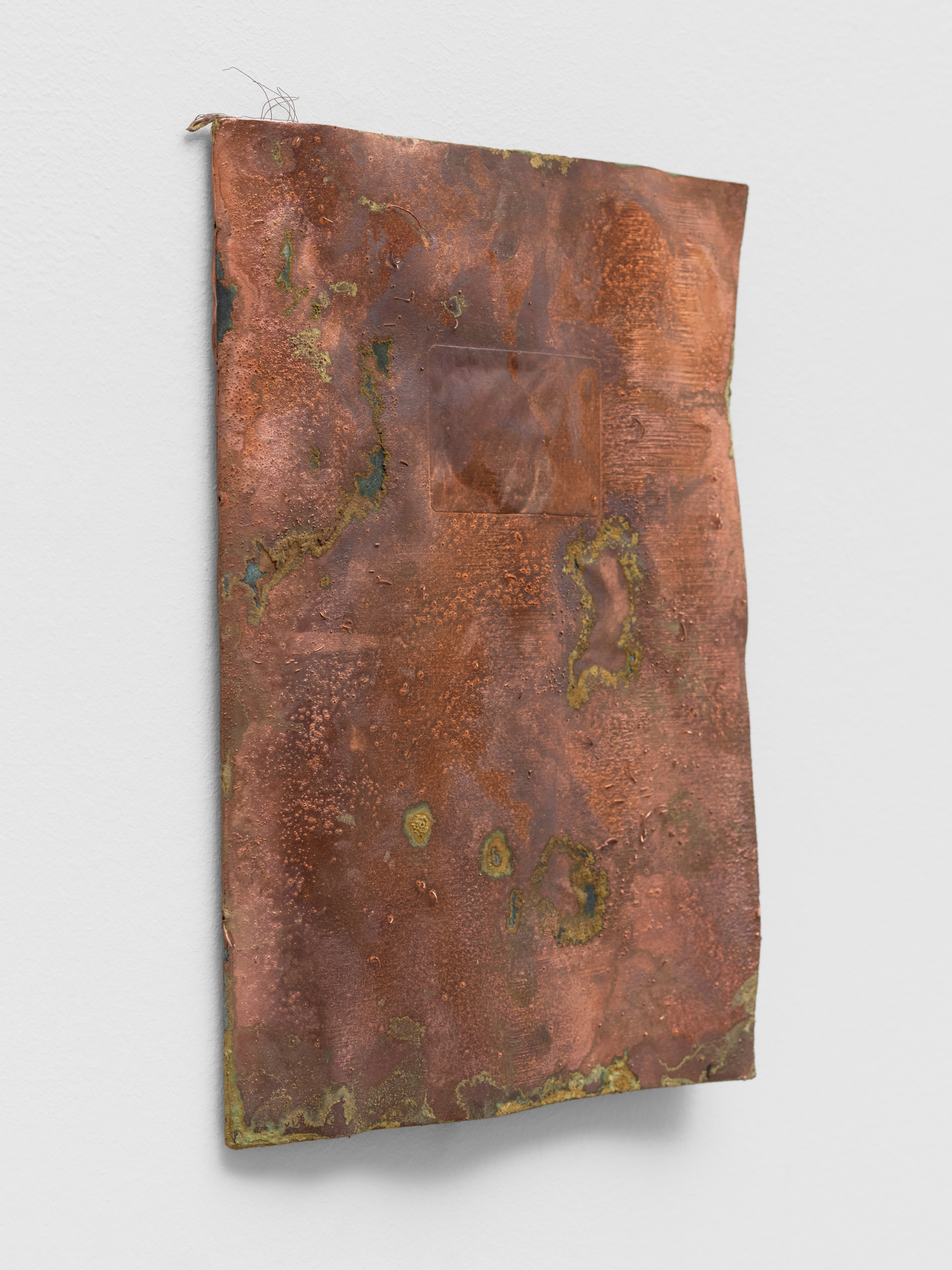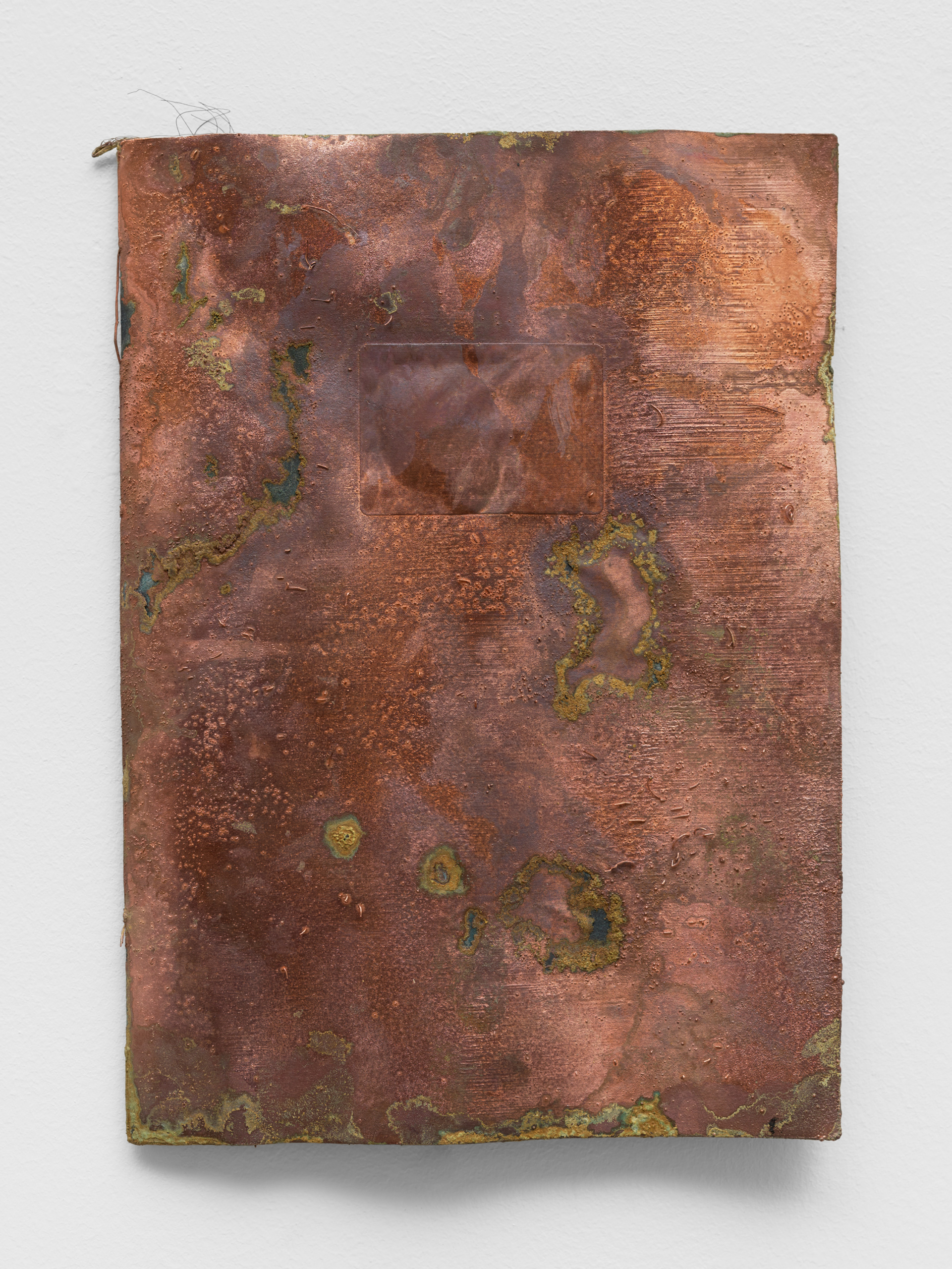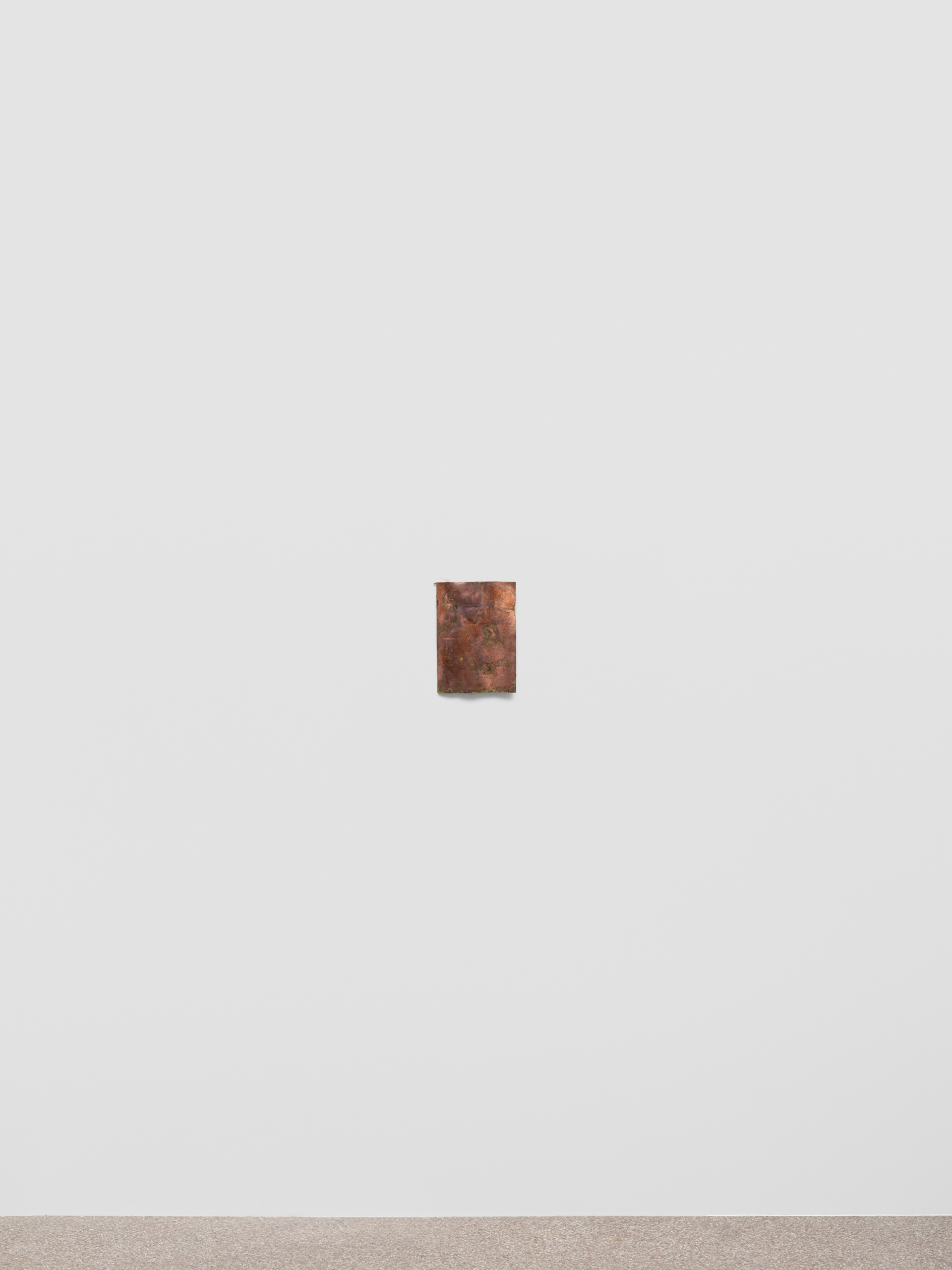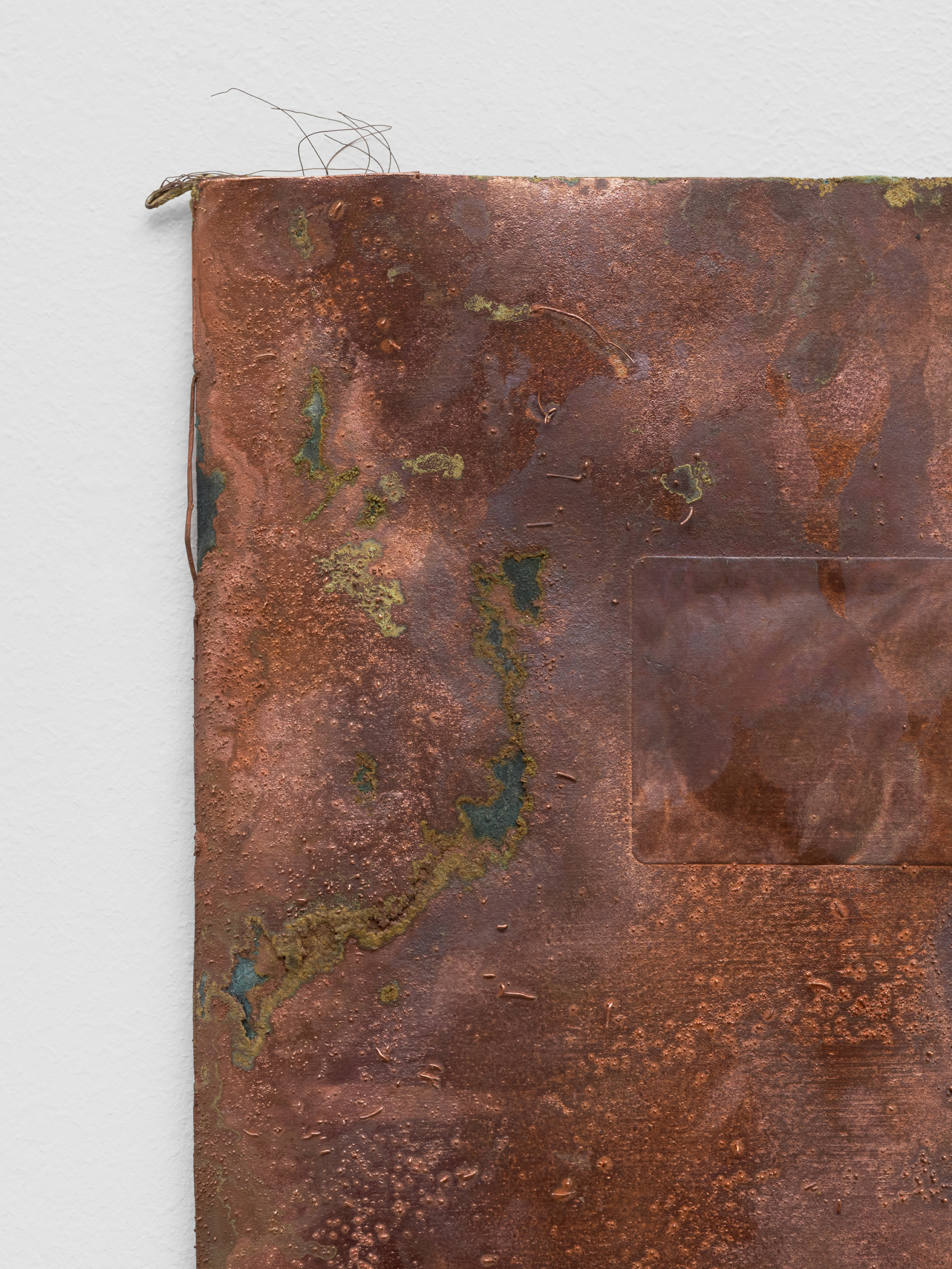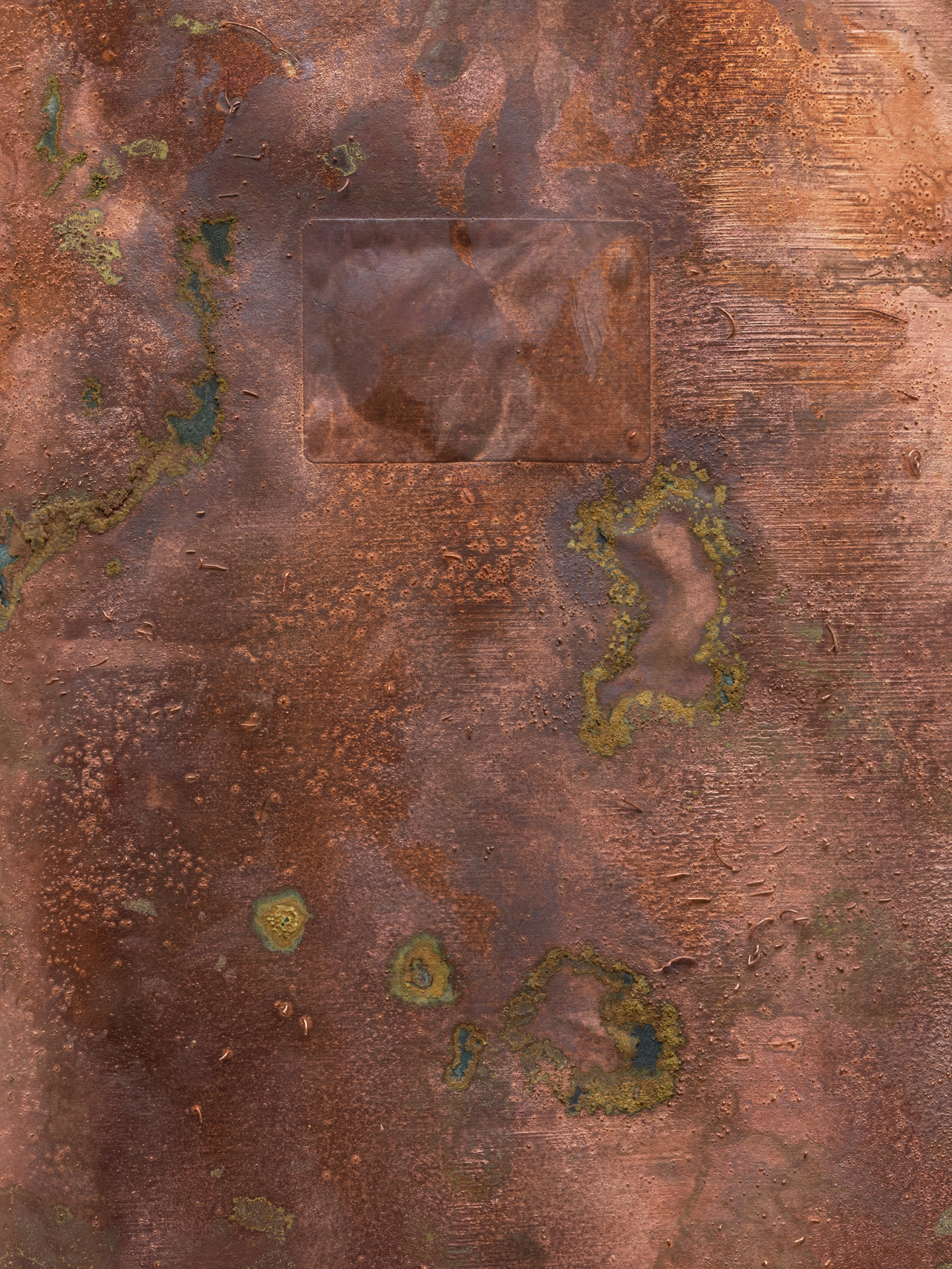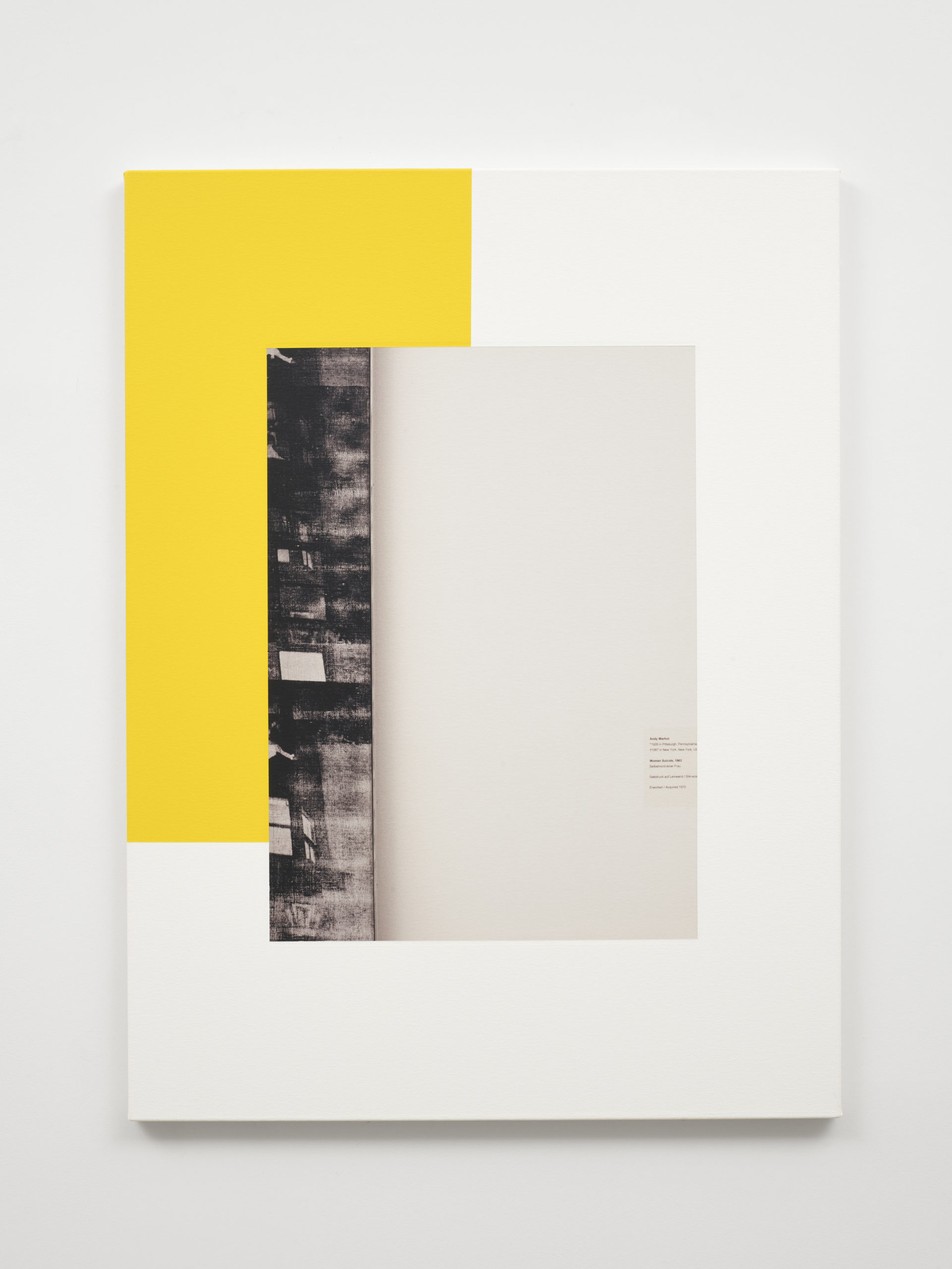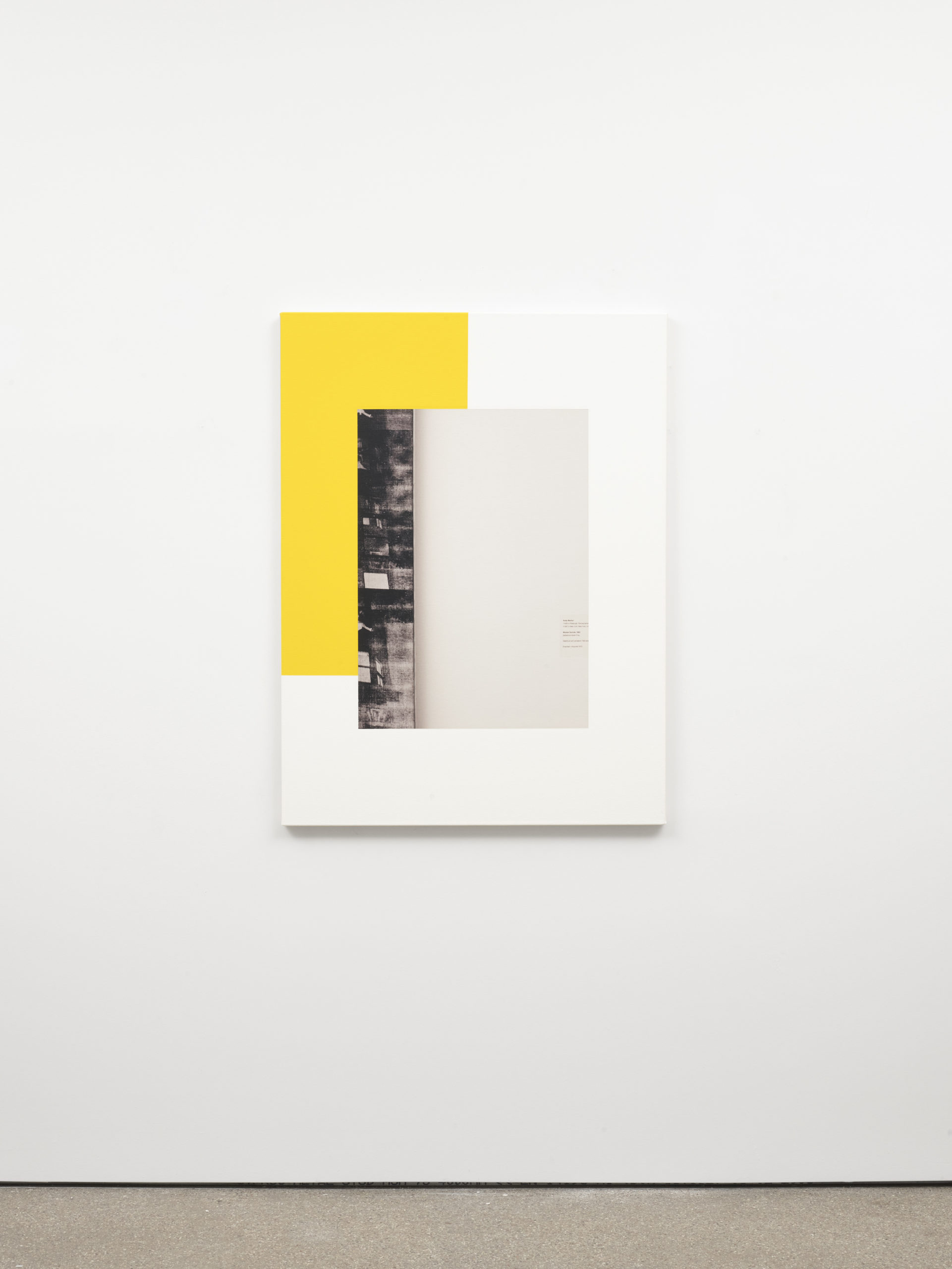Hall 2.0, Booth A10
June 19 ⏤ 22, 2025
For our participation to Art Basel 2025, we are pleased to present a selection of works by Carla Accardi, Robert Adams, Terry Adkins, John Baldessari, Katinka Bock, Luz Carabaño, David Claerbout, Edith Dekyndt, Jef Geys, Louise Lawler, Erica Mahinay, Robert Mangold, John McCracken, Mitsuko Miwa, Liliana Moro, Jean-Luc Moulène, Lee Mullican, Noam Rappaport, Magali Reus, Koen van den Broek, Catharina van Eetvelde, Micheal Venezia, Johannes Wald, and Ian Wallace.
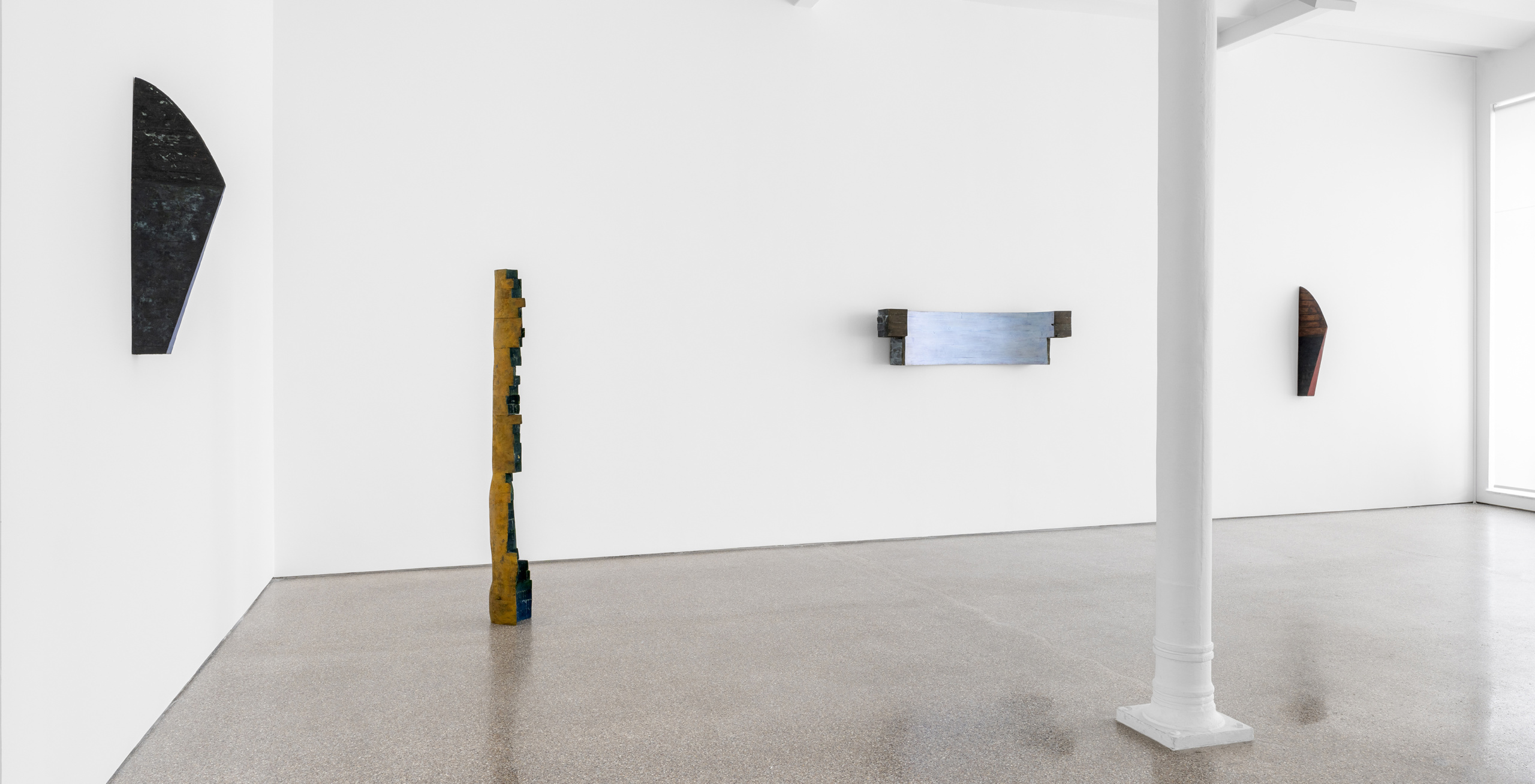
Installation view, Terry Adkins: Zürich, Galerie Greta Meert, 2024
Terry Adkins (1953-2014) was a visionary American artist whose career spanned four decades and within it developed a multifaceted practice integrating sculpture, live music, spoken word and video. Born and raised in Washington, D.C., Adkins’ evolution as an artist was marked by a relentless pursuit of innovation in all fields, had a deep commitment to history and culture, and a dedication to challenging the boundaries of artistic expression.
The artist’s career began with a foundation in music. He studied classical music and performed as a saxophonist, experiences that would profoundly influence his later practice. After earning his Bachelor of Fine Arts (printmaking) from Fisk University in Nashville, Tennessee, Adkins studied art at Illinois State University and the University of Kentucky, where he honed his skills as a sculptor and conceptual artist.
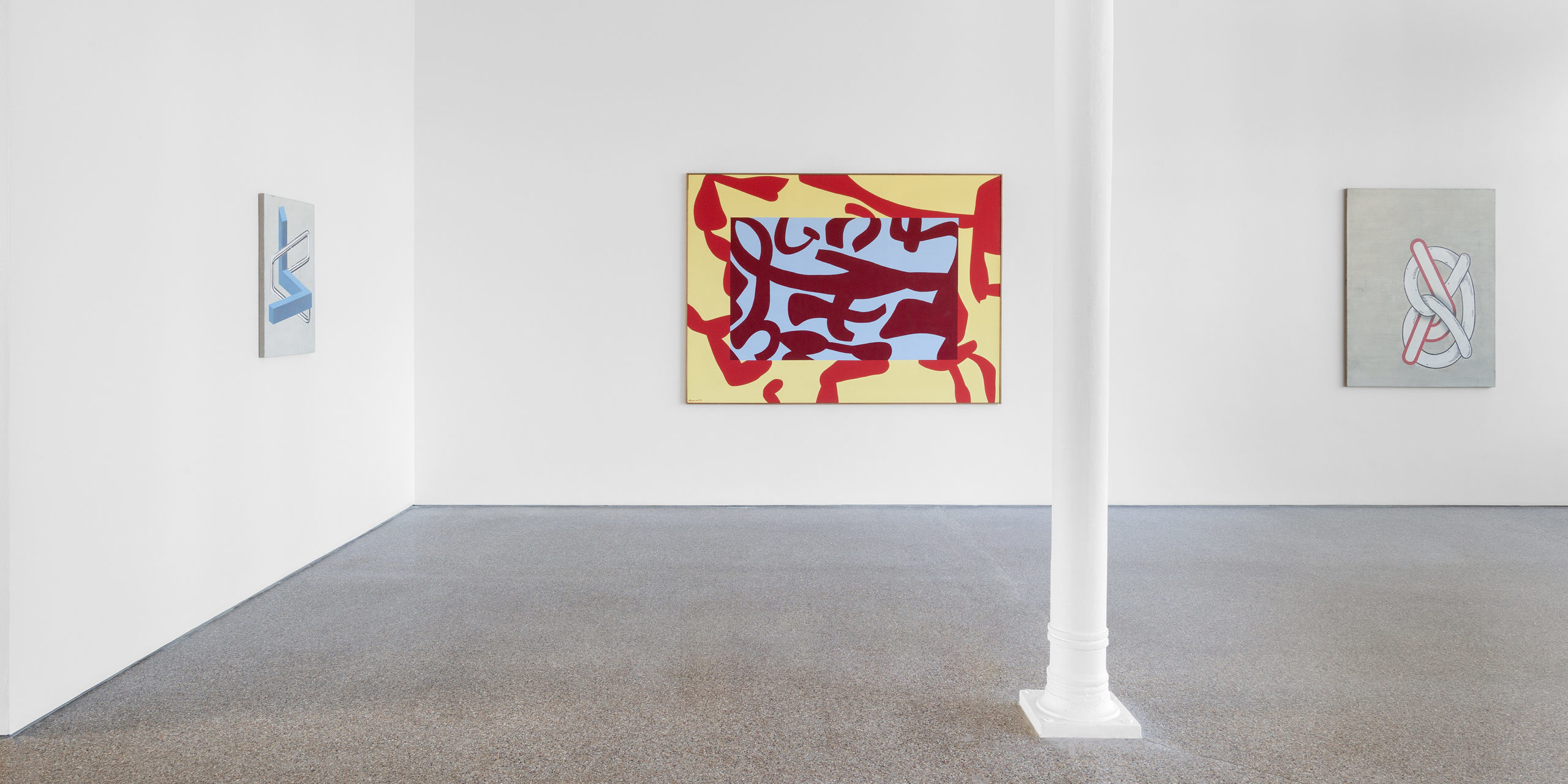
Installation view, Di fuochi e accesi sensi, Galerie Greta Meert, 2019
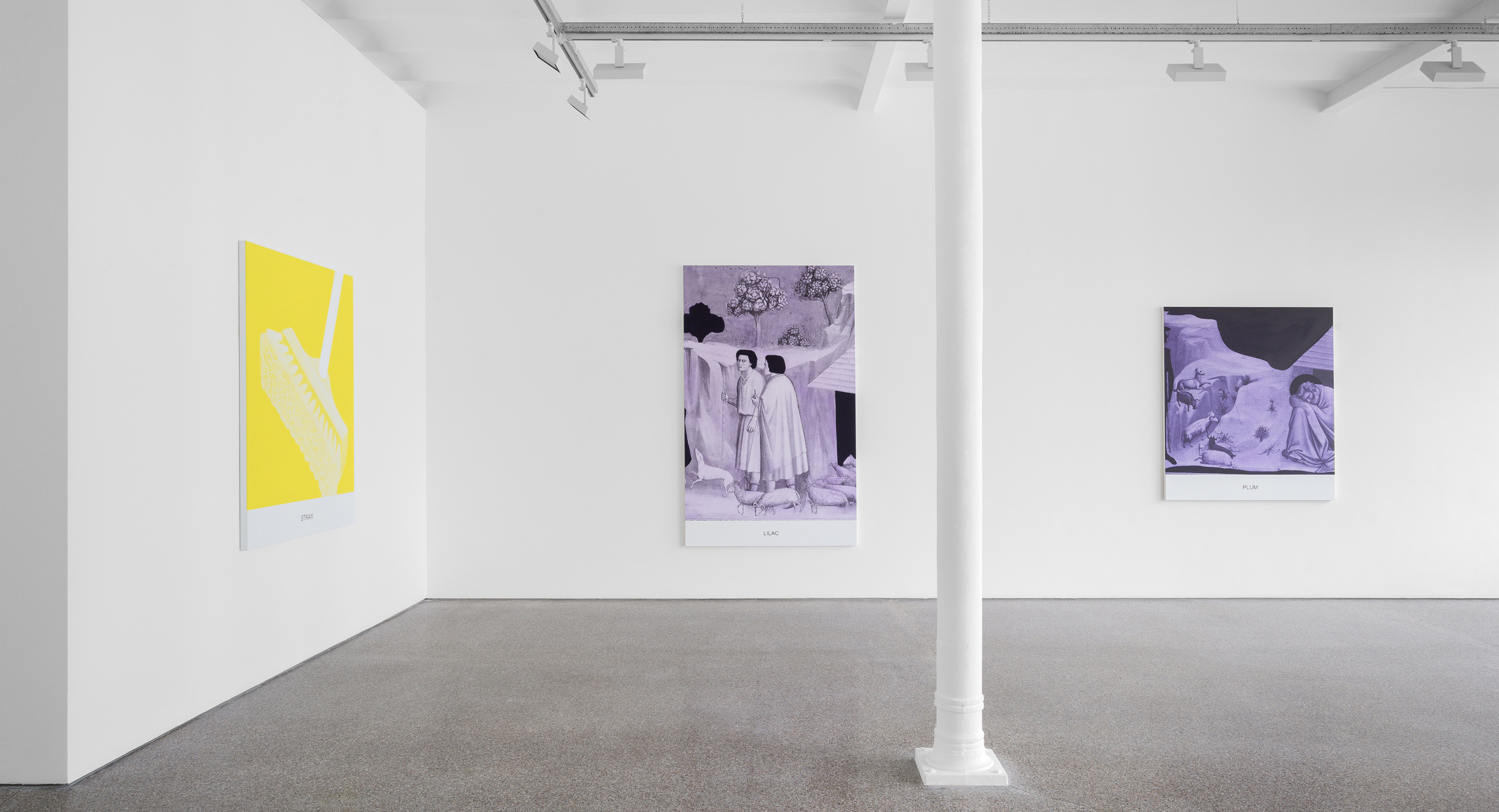
Installation view, John Baldessari: The Complementary Color Series, Galerie Greta Meert, 2018
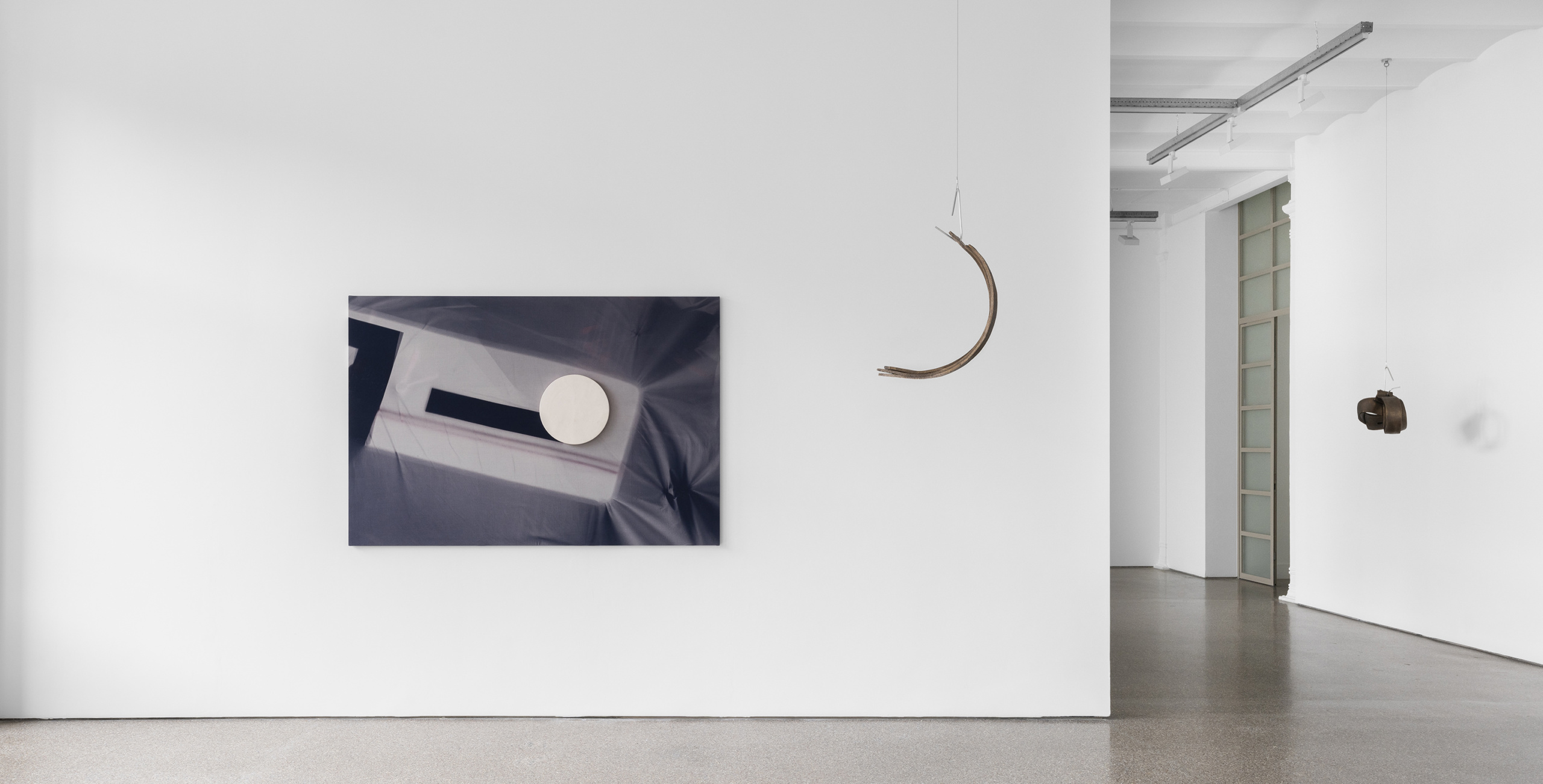
Installation view, Katinka Bock: Assemblée anonyme, Galerie Greta Meert, 2024
Luz Carabaño (b. 1995) is a Los Angeles–based artist whose small-scale oil paintings invite viewers to experience shifts in perception and sensation. Working on shaped linen canvases stretched over hand-cut wooden panels (in the artist’s words, softened rectangles that have been touched on all sides) she explores themes of retracing, fragmentation, and displacement. Drawing from everyday sights and gestures, she transforms these moments into new, poetic forms that feel both familiar and internal. In addition to painting, Carabaño creates ceramics and handmade books that extend her exploration of form, shadow, and presence.
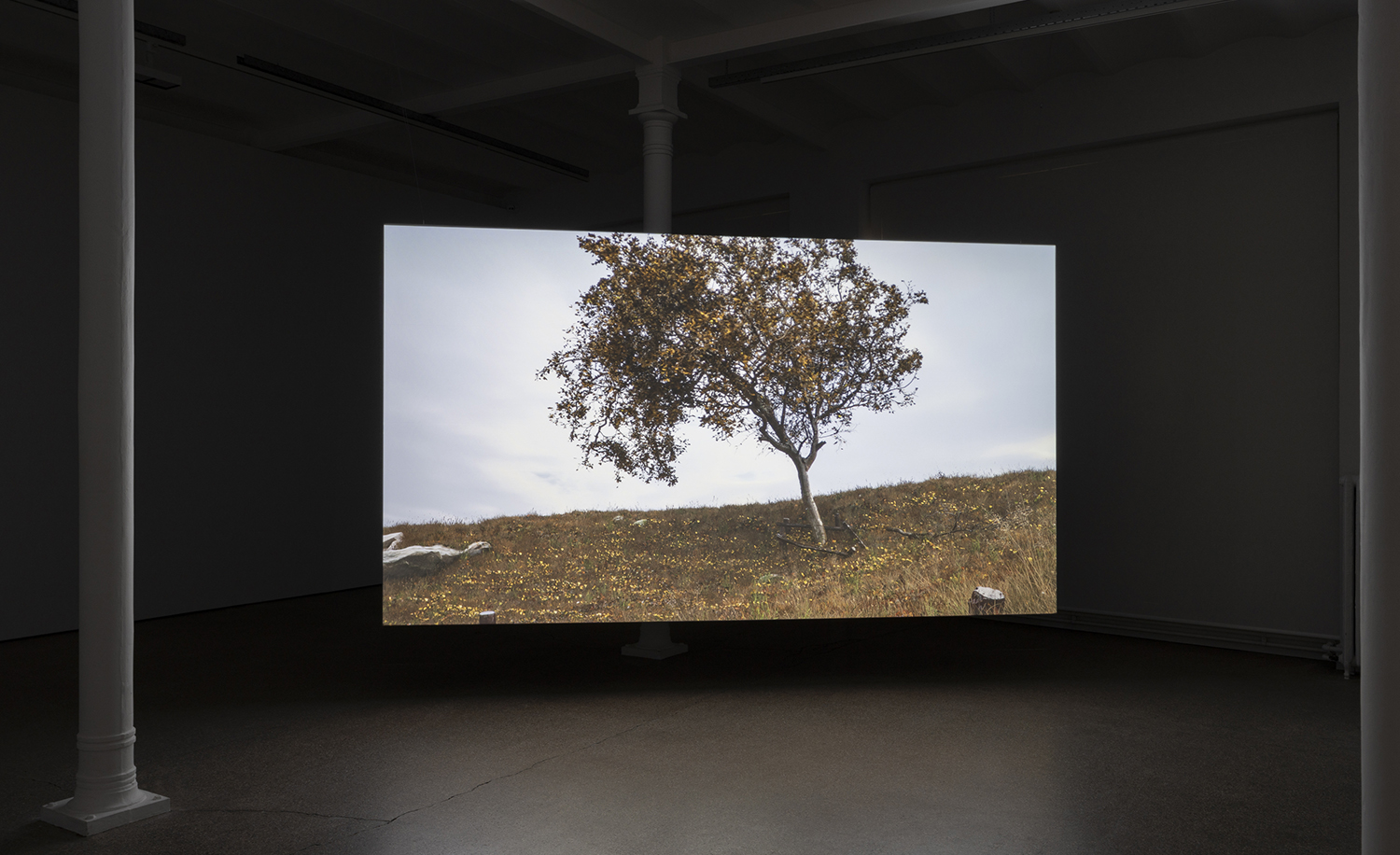
Installation view, David Claerbout: Birdsong, Galerie Greta Meert, 2023
Originally trained in painting and drawing, David Claerbout (b. 1969) is known for his works using photography, video, digital technology and sound. His practice revolves around the concepts of temporality and duration, images suspended in a tension between stillness and movement, as well as the experience of dilated time and memory. David Claerbout says that he “sculpts in duration. The definition of duration is different from that of time: duration is not an independent state-like time, but an in-between state.” With his large-scale video-based installations, the artist makes the viewer a part of the work: whether by establishing a connection between the projected images on the screen and the audience, or by creating a spatial relationship between the screen itself and the exhibition space, or simply, by allowing a process by which “a single scene can develop into another by the presence of the spectator and a bit of time.”
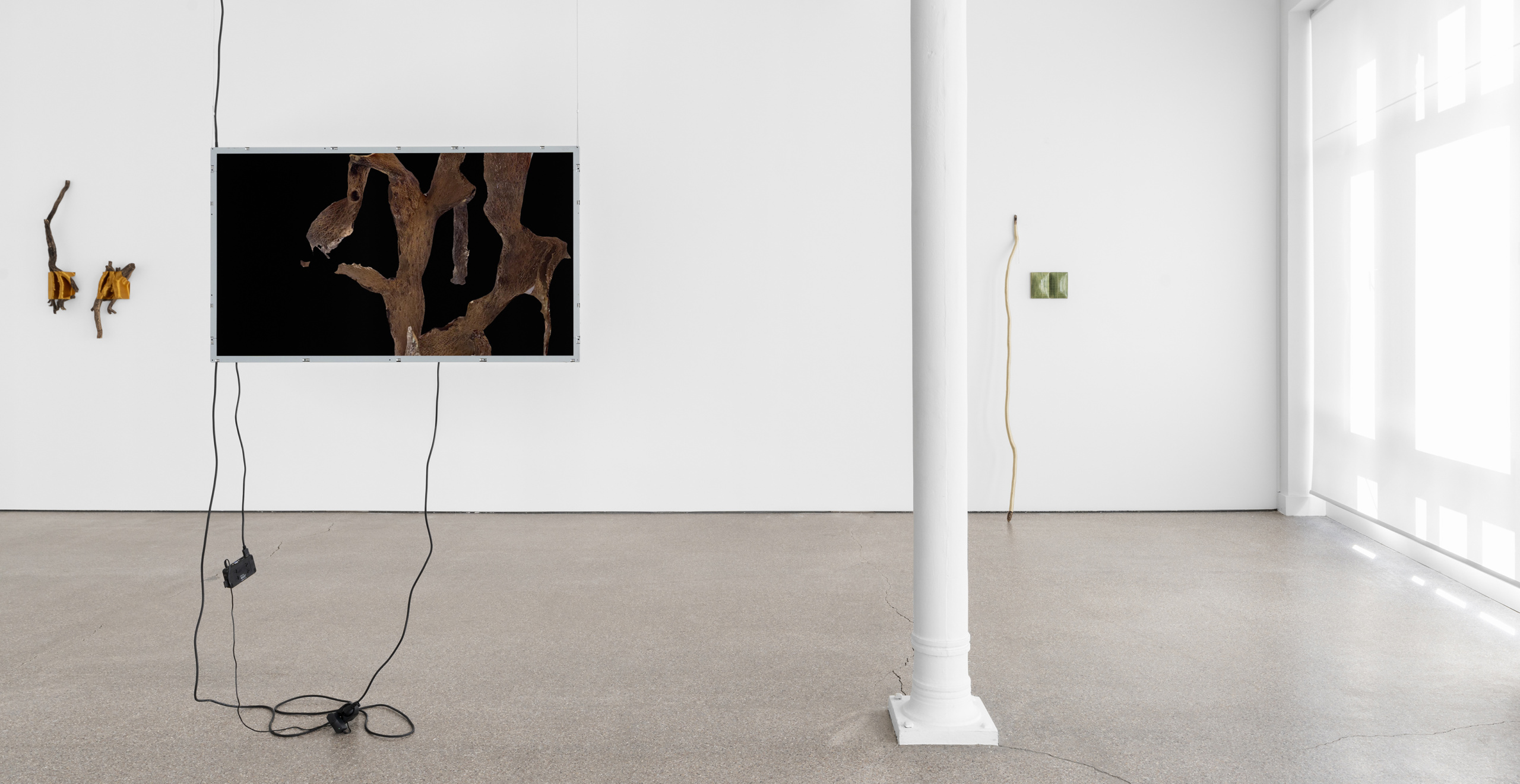
Installation view, Edith Dekyndt: Ne pas laver le sable jaune, Galerie Greta Meert, 2023
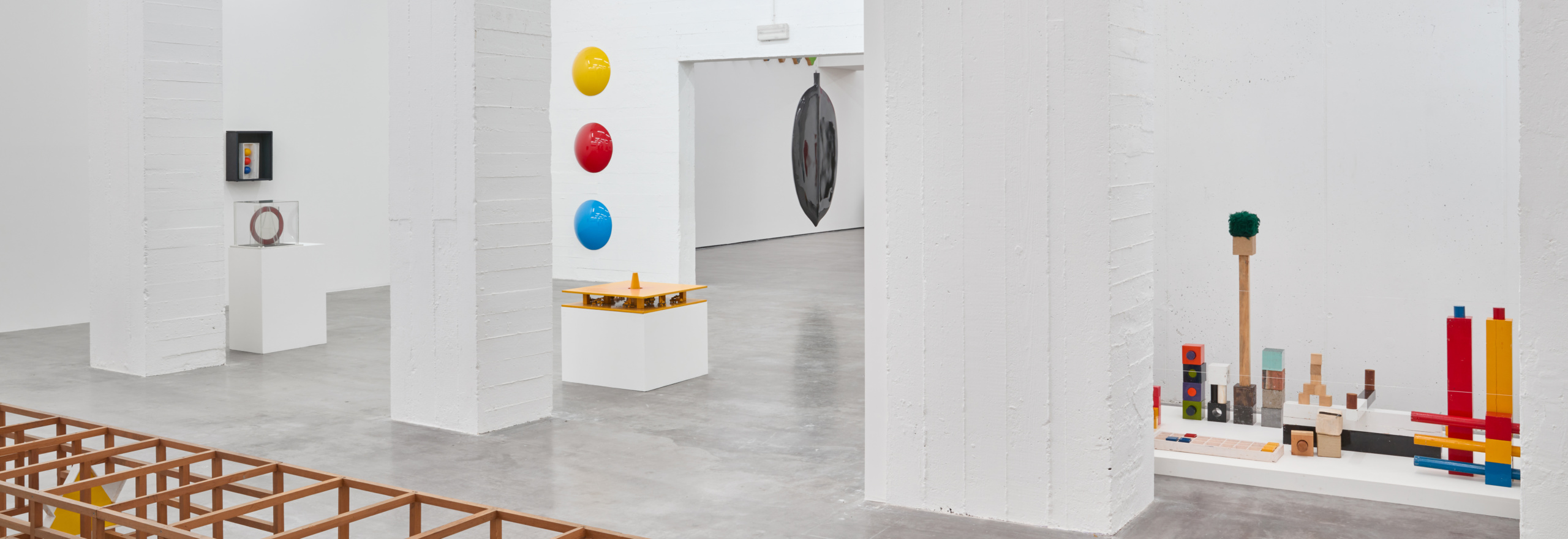
Installation view, Jef Geys, WIELS (Brussels), 2024
Throughout his life, Jef Geys (1939 – 2018) pursued a complex and eclectic body of work that radically breaks with the idea of autonomous art. His work offers a critical analysis of what constitutes art making by functioning as a transfer of knowledge in the form of, among other things, everyday objects or images that the artist found in his direct surrounding and distributed using locally available means. By playing with his identity, he often tried to have his work infiltrate unusual contexts. Questioning the value and status of art in society at large, as well as the role of institutions and that of the artist, Geys reversed and actively undermined hierarchies.
Mimmo Jodice (b. 1934) is a renowned Italian photographer known for his evocative black-and-white imagery that bridges the past and present. Born in Naples, Jodice began his career in the 1960s and became a key figure in conceptual and experimental photography in Italy. His work often explores themes of time, memory, and classical heritage, capturing timeless urban landscapes, ancient sculptures, and the quiet poetry of everyday life. With a deep sensitivity to light and composition, Jodice transforms familiar subjects into meditative visual experiences, inviting viewers to reflect on history and the passage of time.
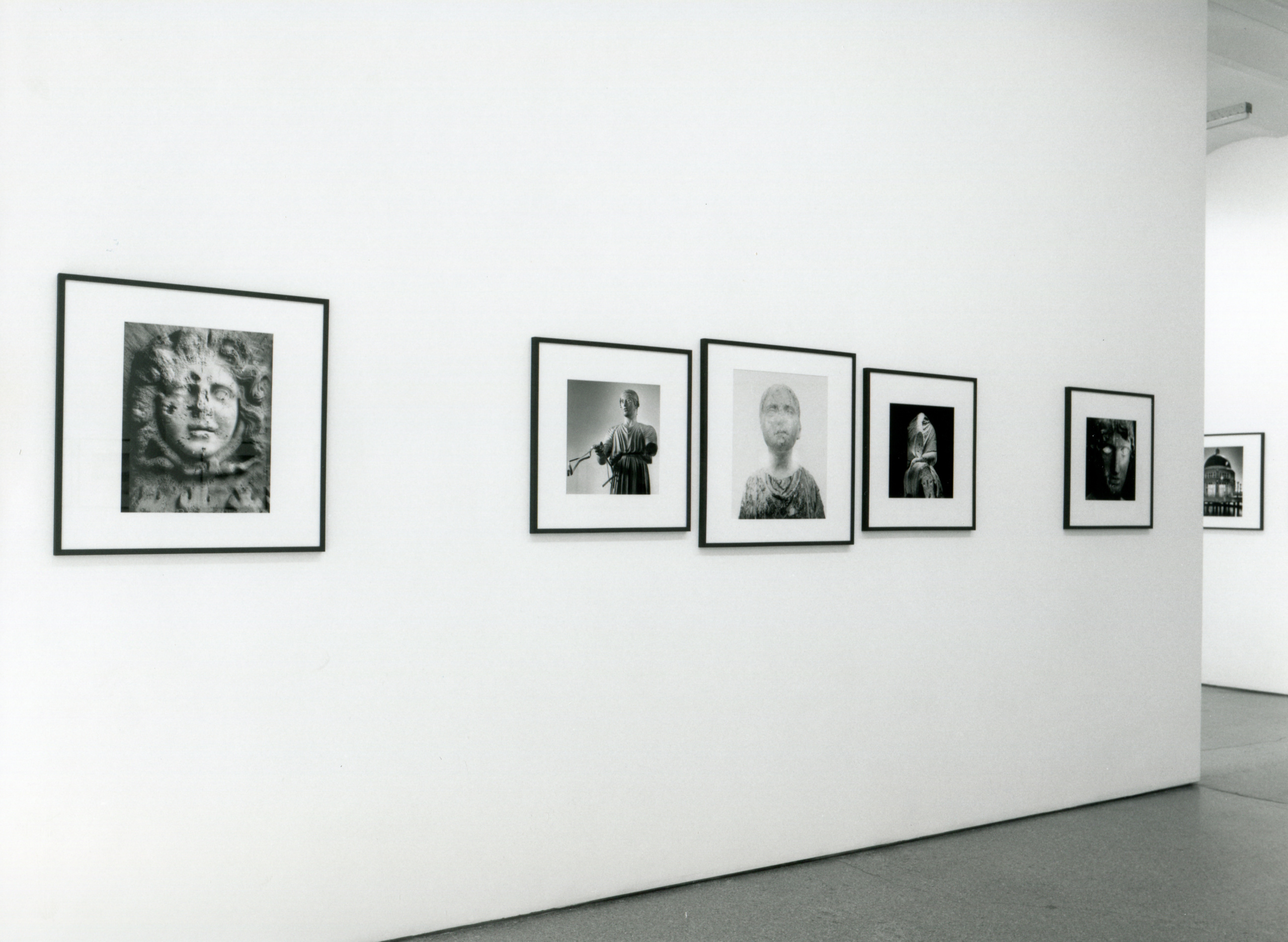
Installation view, Mimmo Jodice – Giubilelo n°1, 1999 Roma, Galerie Greta Meert, 2002
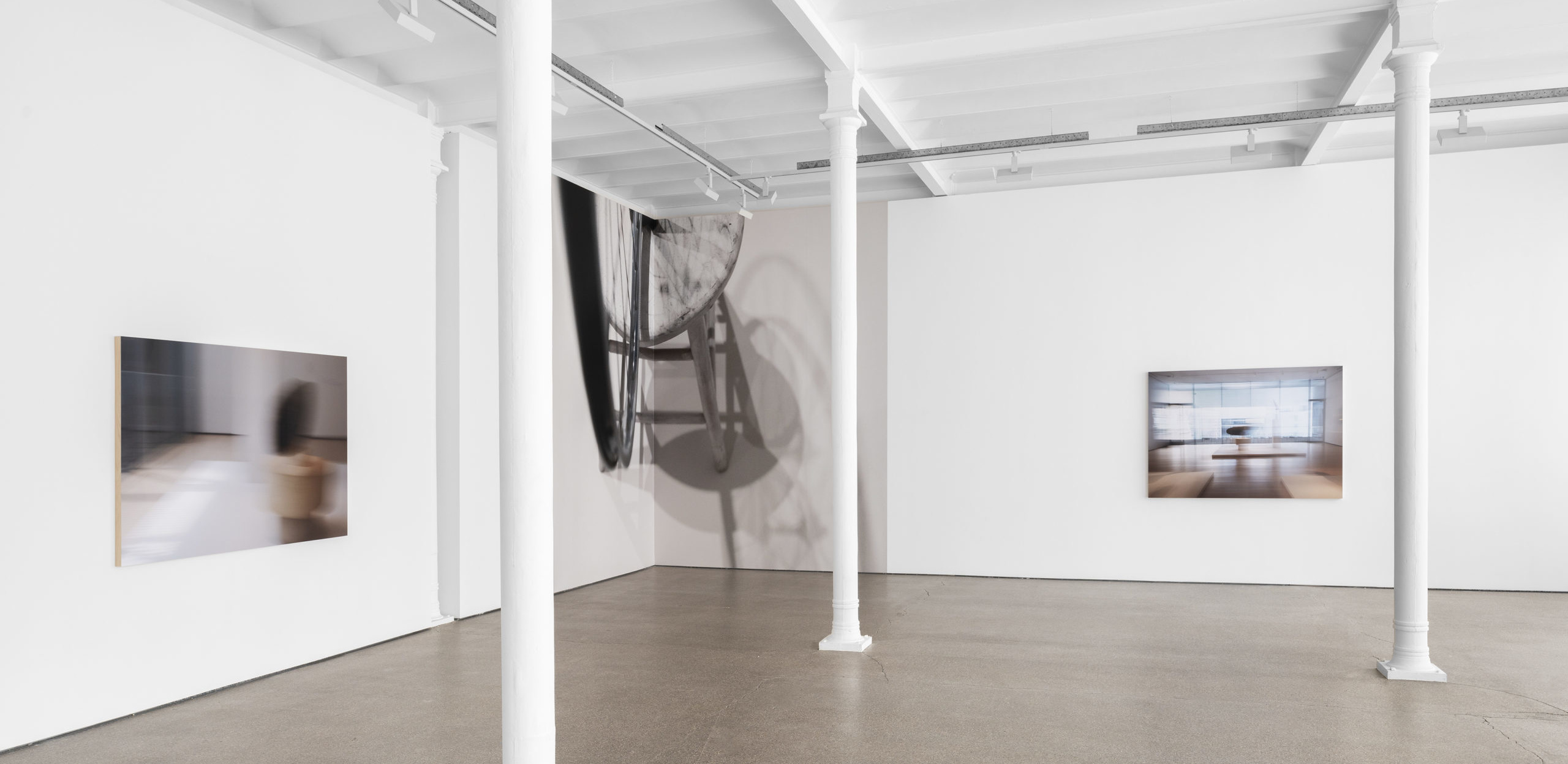
Installation view, Louise Lawler: CORNERED, Galerie Greta Meert, 2024
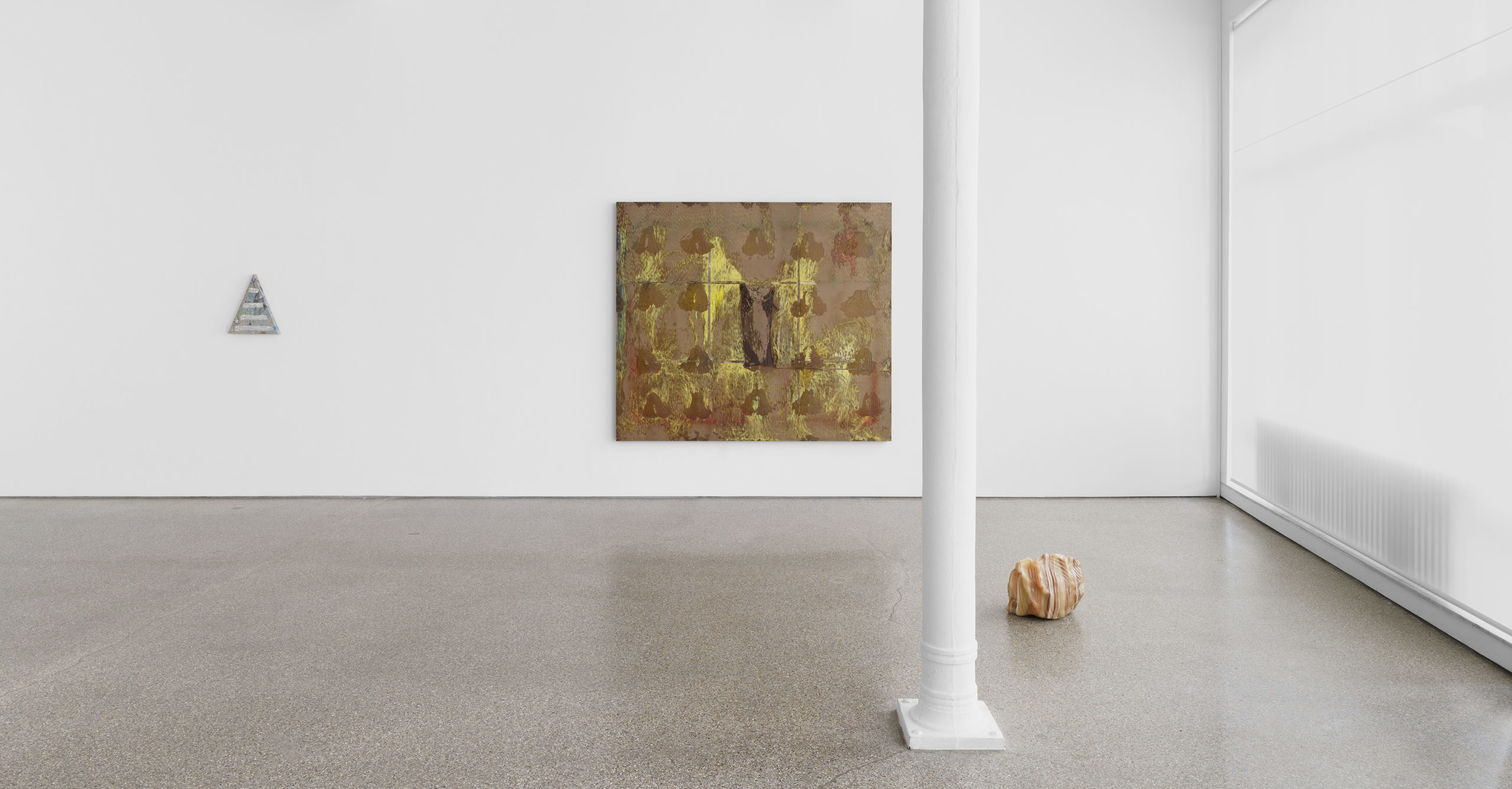
Installation view, Once The Block Is Carved, There Will Be Names, Galerie Greta Meert, 2025
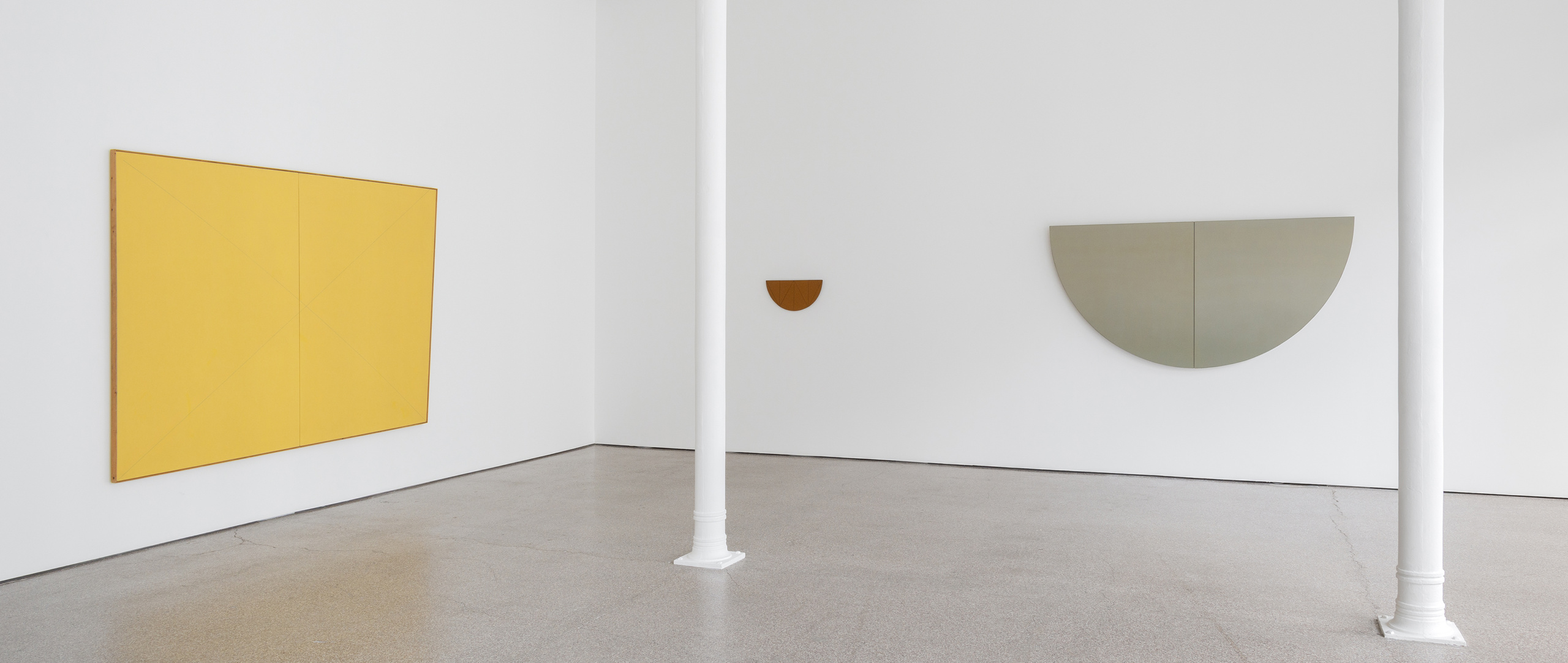
Installation view, Robert Mangold: Works from 1967 to 2017, Galerie Greta Meert, 2019
John McCracken (1934 – 2011) was an influential American artist whose work explored the meeting point between material precision and perceptual depth. Best known for his iconic “planks”—monochrome, high-gloss fiberglass sculptures leaning between floor and wall—McCracken developed a form that exists in a state of poised ambiguity, merging painting, sculpture, and architecture. Educated at the California College of Arts and Crafts, he became associated with West Coast Minimalism. Each sculpture was constructed by hand: shaped from plywood, then layered with fiberglass and polyester resin. McCracken applied the paint himself, methodically sanding and polishing the surfaces to an intense luster that gives them an almost translucent visual effect. These works prompt quiet reflection and an acute awareness of space. As McCracken described, the planks inhabit a space between the tangible world and the realm of mental and visual imagination.
Based in Aichi Prefecture, Mitsuko Miwa (b. 1958) has since her early years developed her own painterly practice through diverse stylistic transitions. Awarded a scholarship from the Philip Morris Foundation, she stayed in Berlin from 1996 to 1997, and also was selected as a guest artist for the Swedish artistic exchange program IASPIS (Stockholm) in 1998. Her works were included in various exhibitions, such as “Vanishing Point -Contemporary Art from Japan” which toured New Delhi and Mumbai in 2007, and it is worth remembering that she was highlighted in this year’s international art festival “Aichi Triennale 2022”. Diverse motifs seen in Miwa’s works, ranging from figures and furniture to landscapes, suggest that the artist’s interest is not in the painted objects but a painting itself as a device.
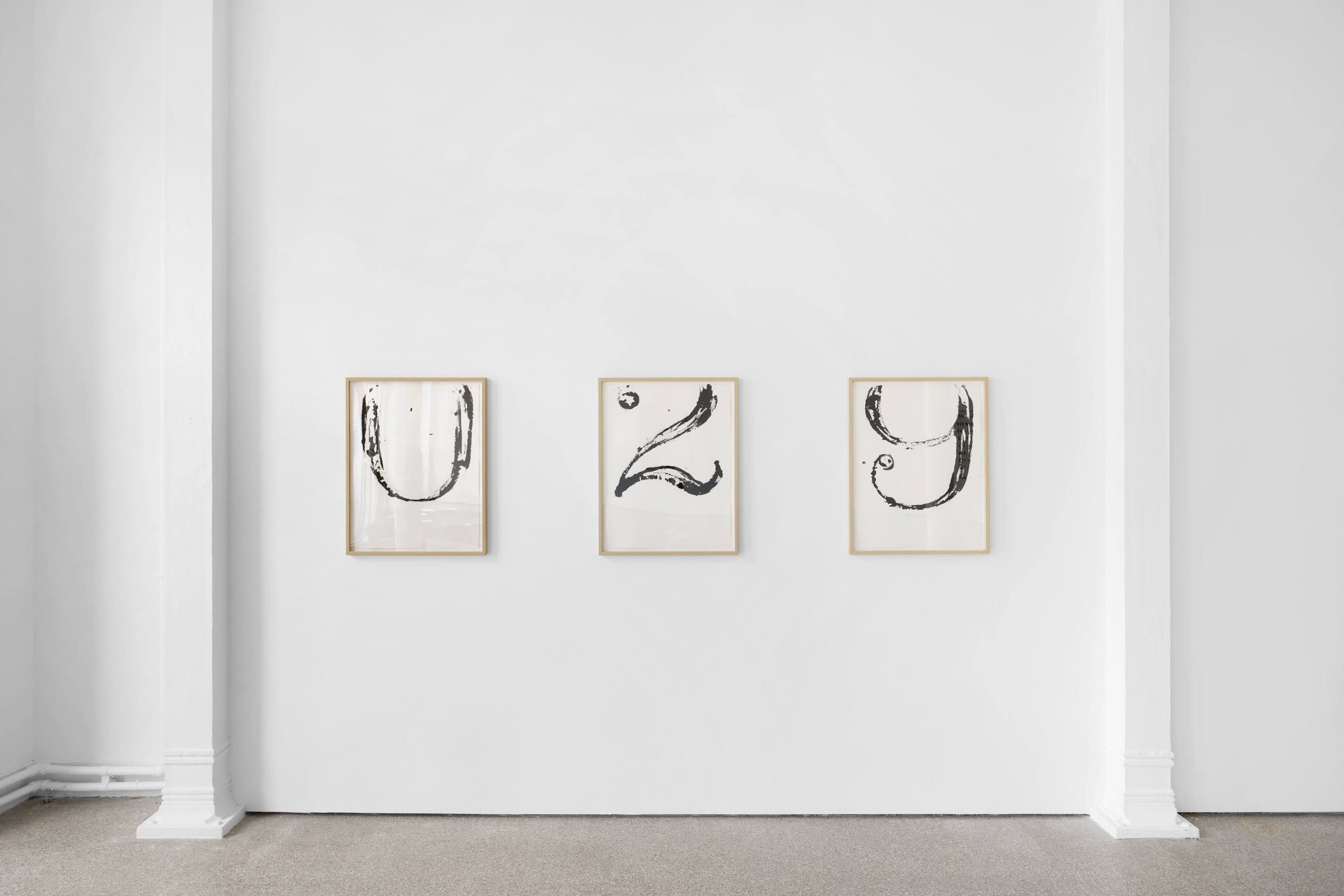
Installation view, Mitsuko Miwa, Leap Second, Galerie Greta Meert, 2024.
Jean-Luc Moulène (b. 1955) sets out to remove the boundaries between heterogeneous worlds: art and media, art objects and mass-produced objects, utility value and artistic value. Throughout his work, Jean-Luc Moulène has been exploring the nature of artistic labor and what it means to “author a work of art”. His practice is characterized by the wide variety of materials he uses along with his keen sense of observation and analysis of the world that surrounds him. From his point of view, art is not peaceful, an artwork always contains a ‘yes’ and a ‘no’ and it is the task of the viewer to find and define their own position.
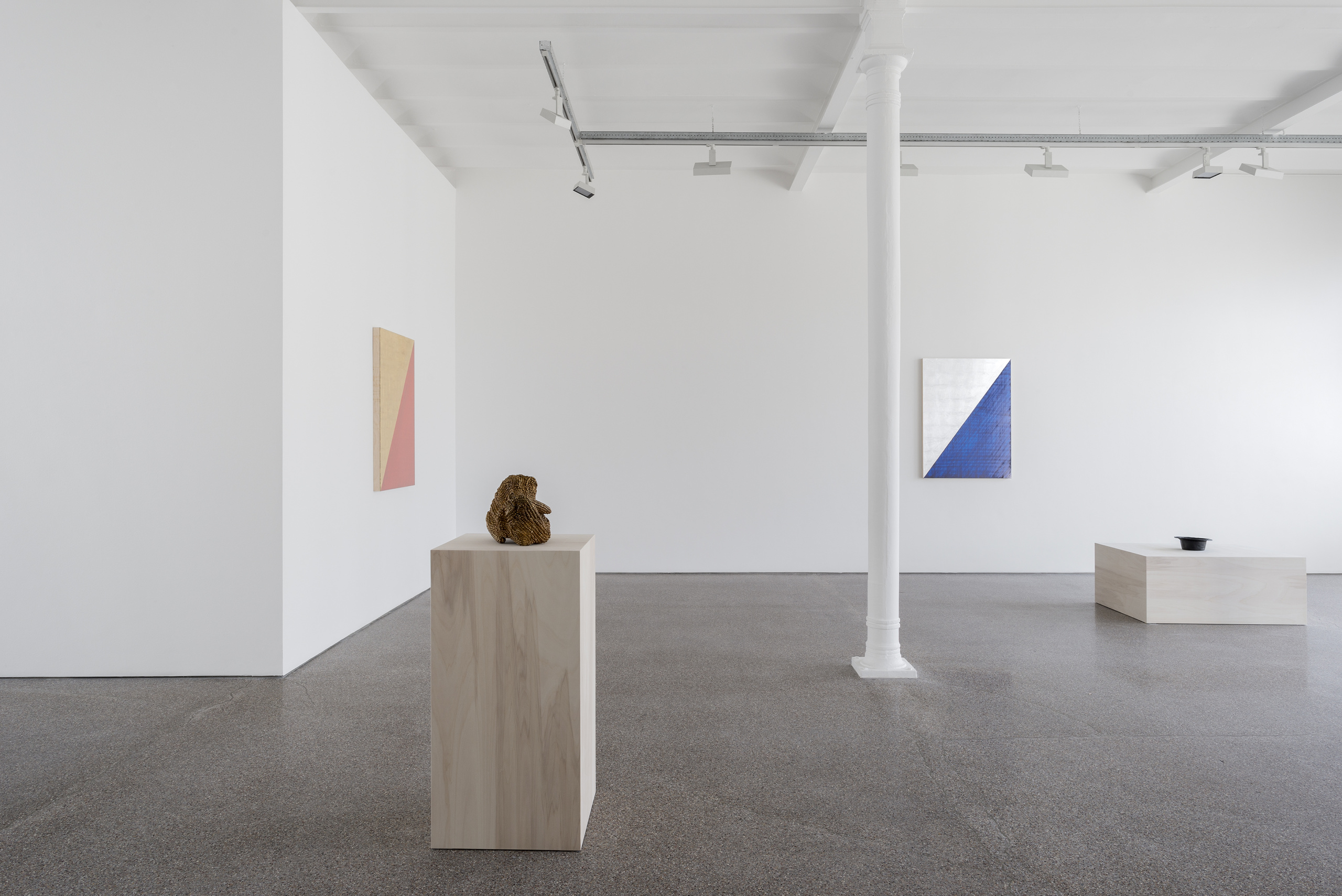
Installation view, Jean-Luc Moulène, Condensés et dilutions, Galerie Greta Meert, 2018.
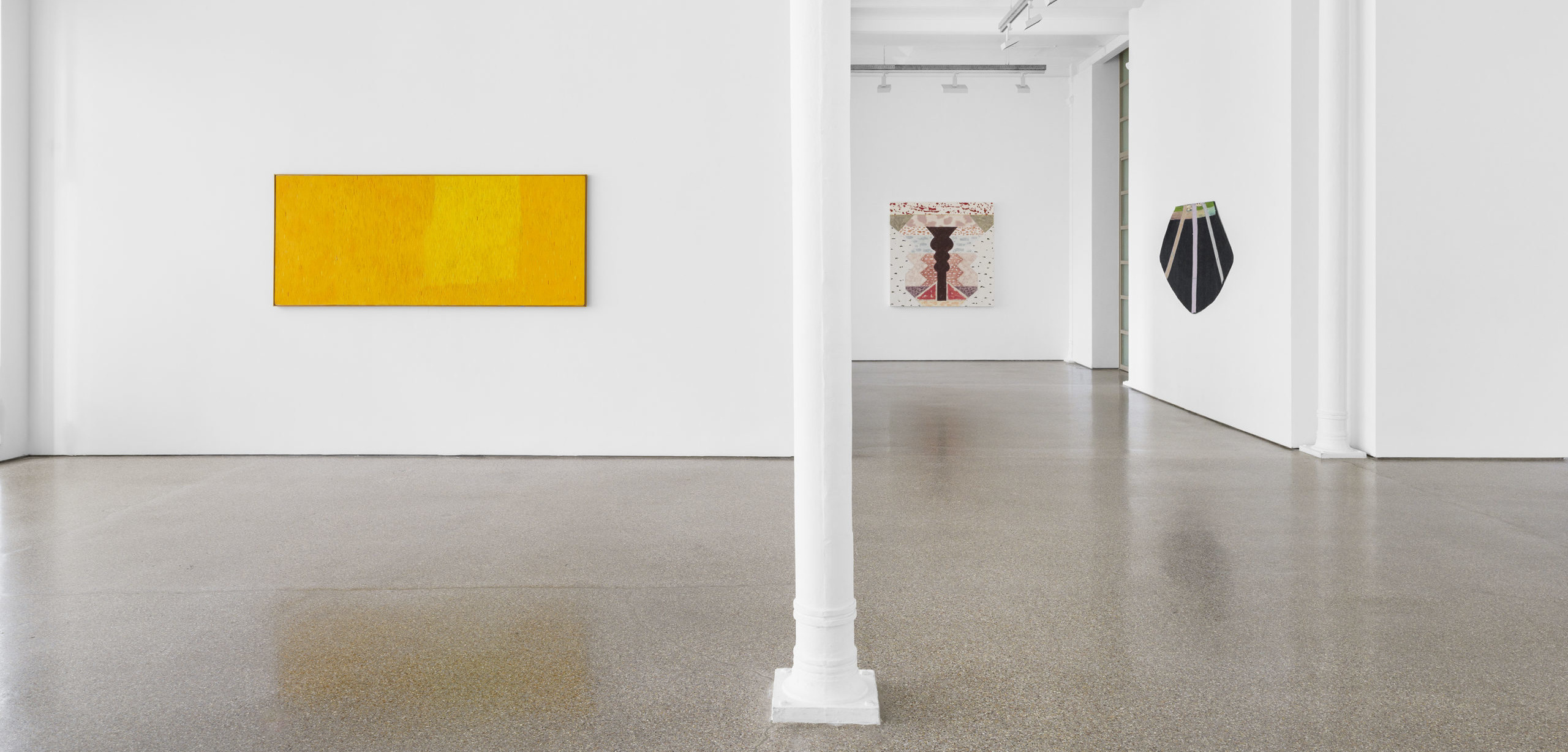
Installation view, Once The Block Is Carved, There Will Be Names, Galerie Greta Meert, 2025
Lee Mullican (1919–1998) developed a deeply personal visual language rooted in mysticism, cosmology, and non-Western philosophies. His practice sits at the intersection of abstraction, spirituality, and science, where painting becomes a meditative act of mapping inner and outer worlds. Working primarily with a palette knife rather than a brush, Mullican created intricate linear patterns that evoke celestial bodies, digital systems, and ritualistic symbols. Across his career, he remained devoted to the idea that art could access higher states of consciousness.
Noam Rappaport (b. 1974) creates playful, formally inventive painting-sculpture hybrids that challenge the conventions of modernist abstraction. Using shaped canvases and collaged materials like wire, wood, and aluminum, he explores subtle relationships between objects, surfaces, and space. His aesthetic is tidy yet experimental, drawing from artists like Ellsworth Kelly, Paul Klee, and Franz West while remaining distinctly contemporary. Rappaport’s works balance precision with spontaneity, often hovering between harmony and disruption. His practice celebrates form and composition, continually pushing the boundaries of sculptural painting into unexpected, nuanced territory.
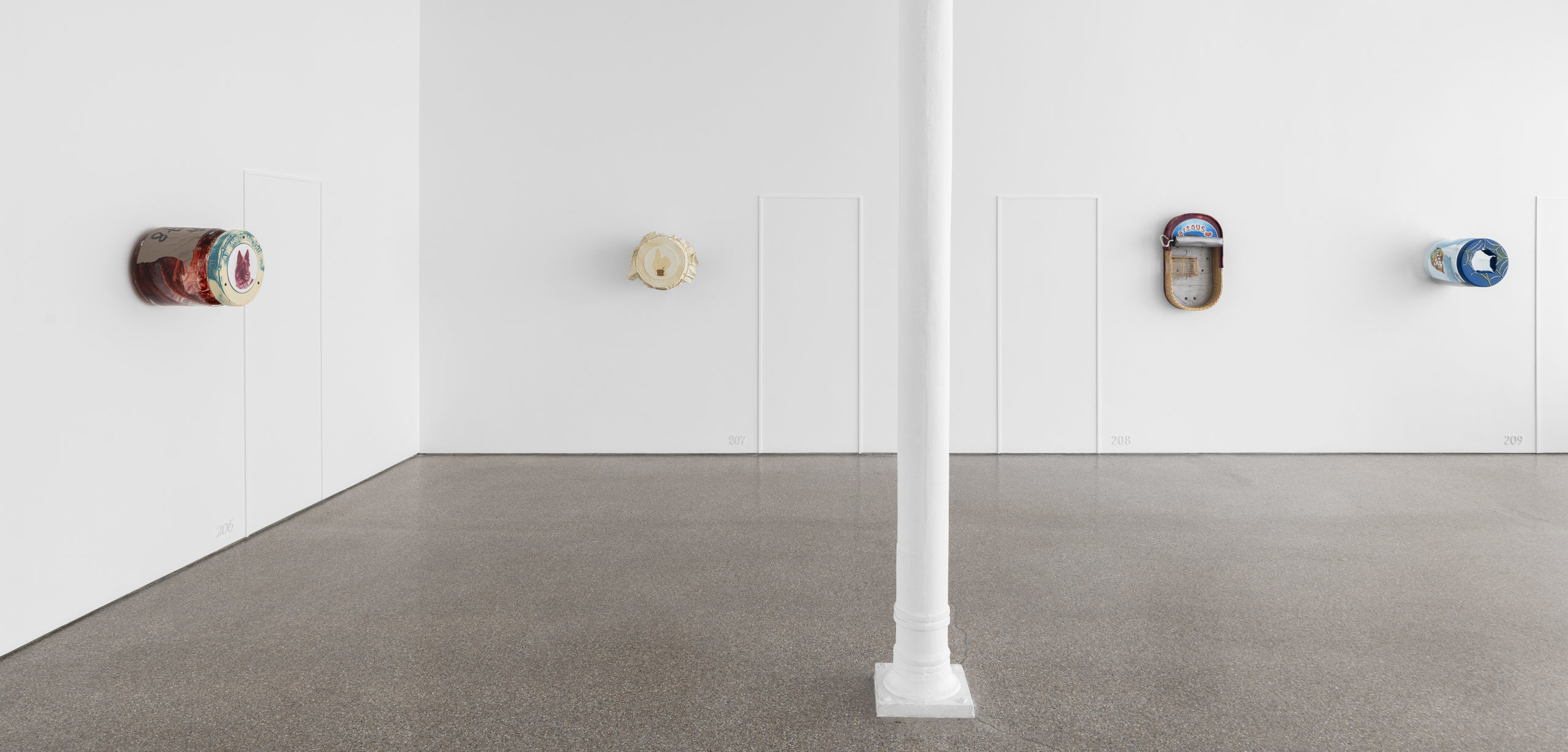
Installation view, Magali Reus: HOTELS, Galerie Greta Meert, 2024
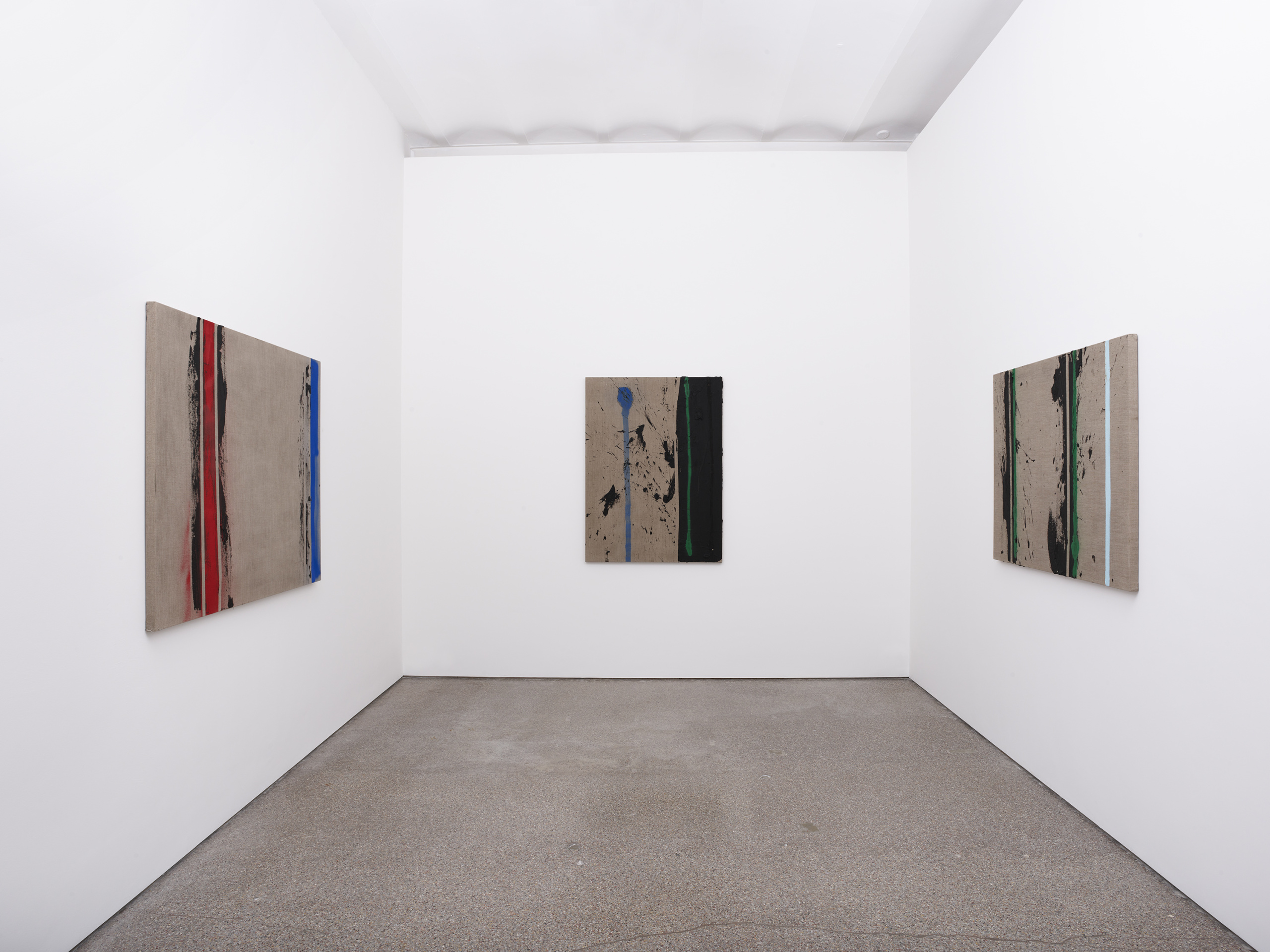
Installation view, Koen van den Broek: The Real World, Galerie Greta Meert, 2023
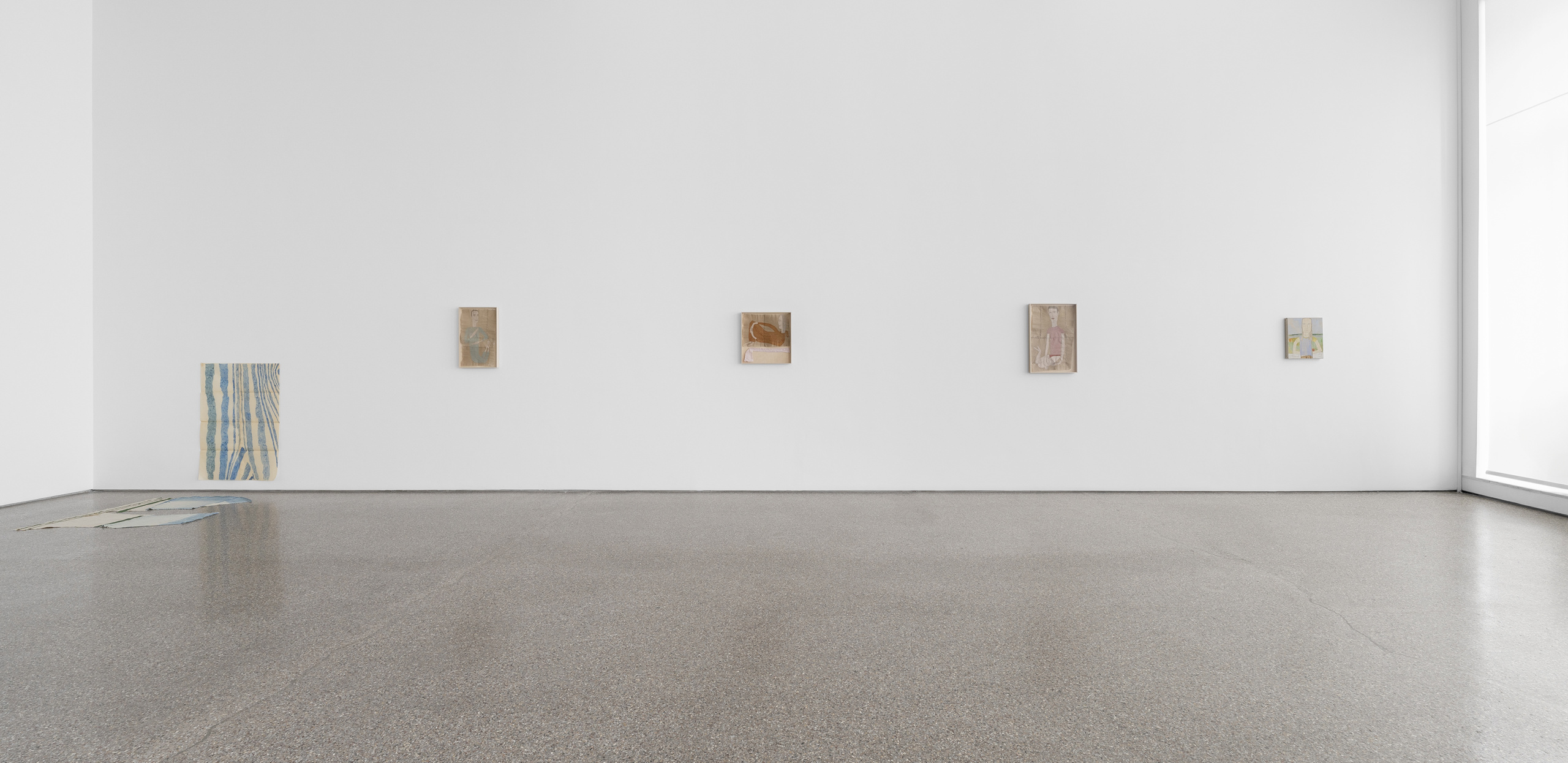
Installation view, Catharina van Eetvelde: please stay, my pale blue friend, Galerie Greta Meert, 2025
Known for her subtle, attentive approach to drawing, Catharina van Eetvelde (b. 1967) treats the act itself as a way of being — attuned to presence, gesture, and change. Her works, often shifting between figuration and abstraction, are shaped by a quiet surrender to form and material, bringing together stains, figures, and objects as cohabitants in a shared, resonant space.
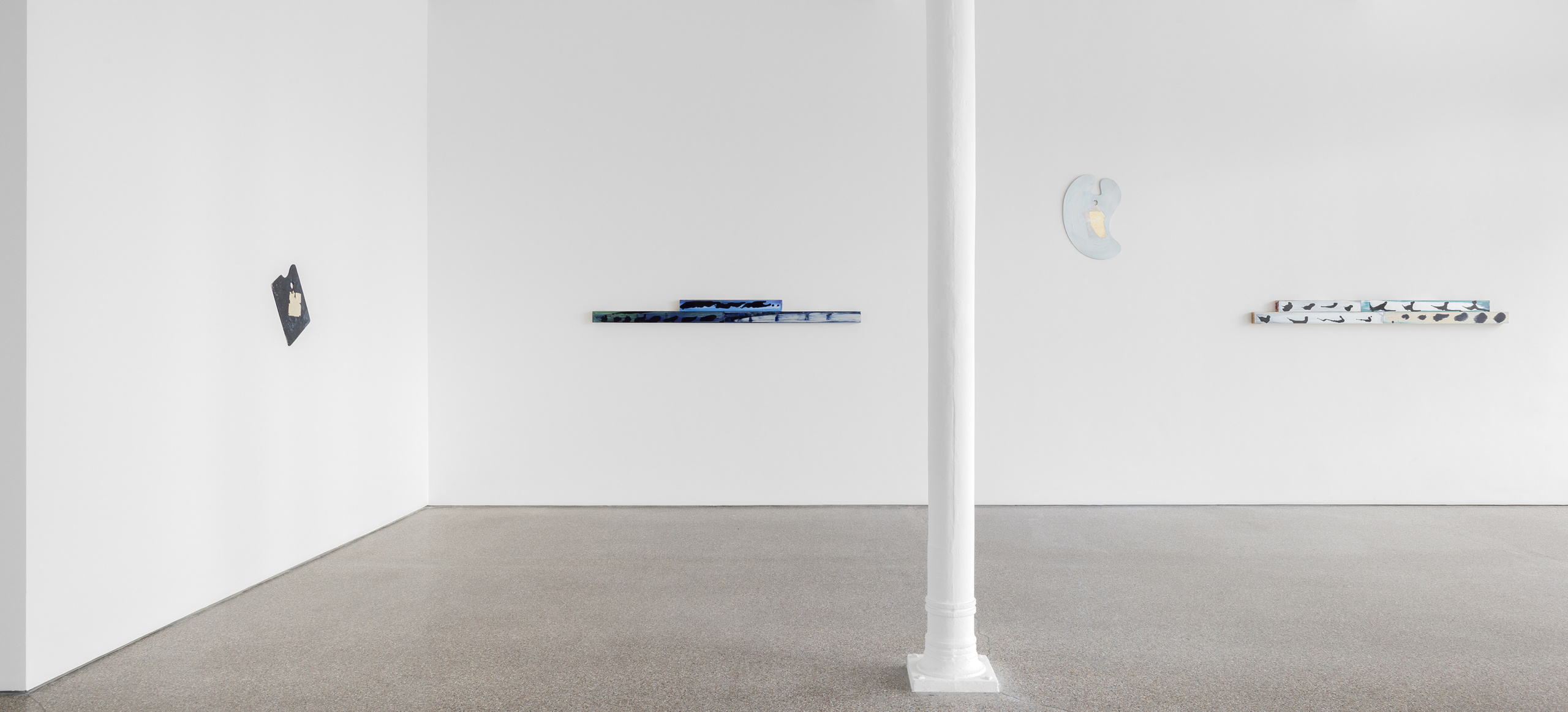
Installation view, Micheal Venezia: PAINTINGS, Galerie Greta Meert, 2019
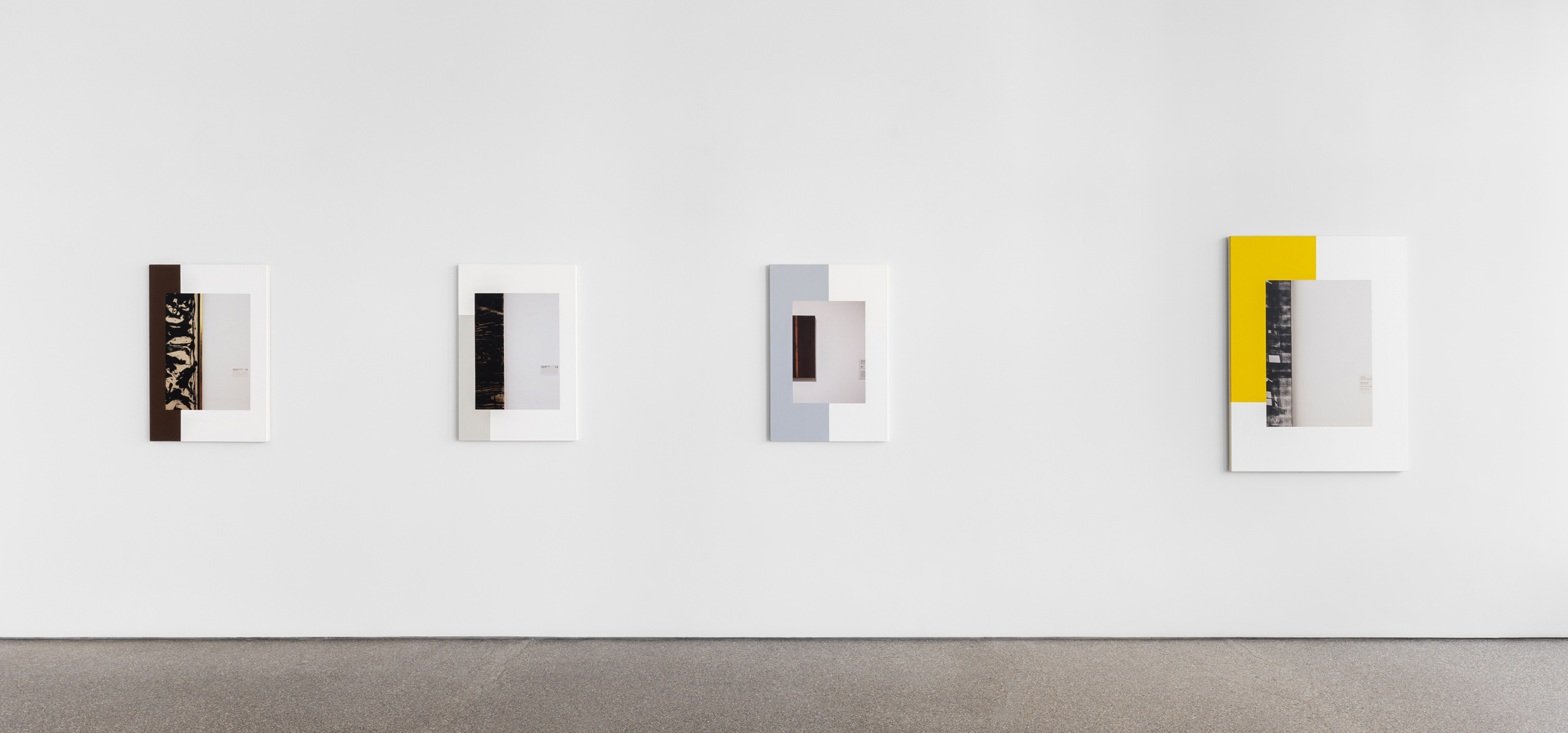
Installation view, Ian Wallace: In the Museum, Galerie Greta Meert, 2022
For press inquiries or any further information you can contact us by email at info@galeriegretameert.com


